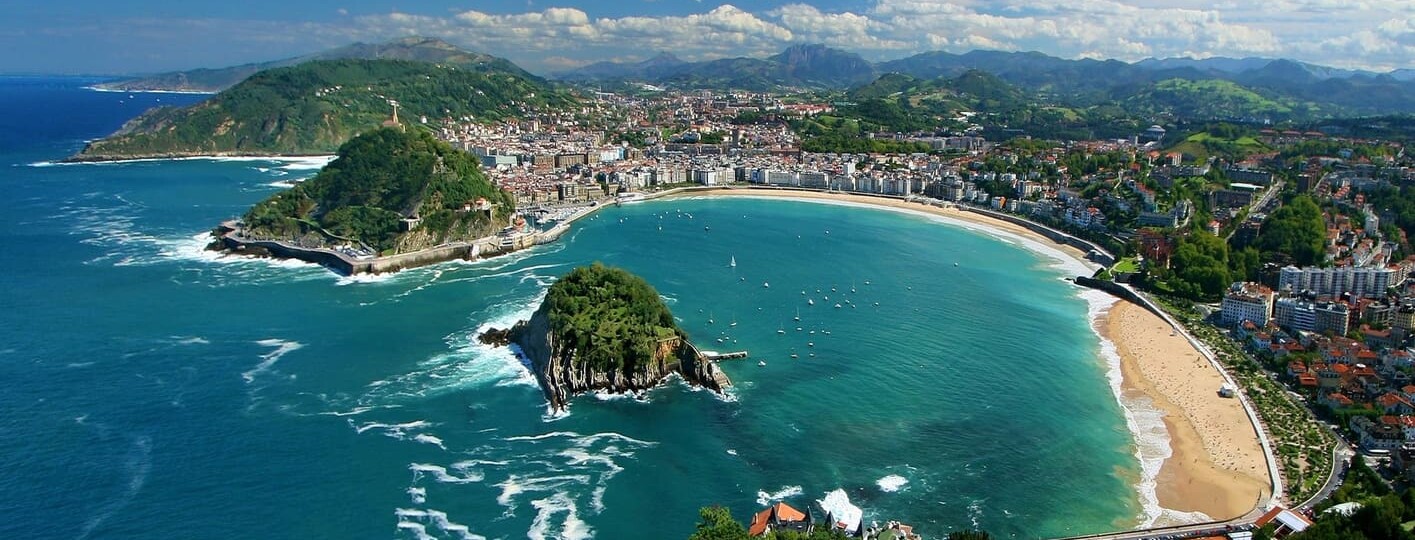

10 Best Places to Visit in Northern Spain | Itineraries + Map
Home | Travel | Europe | Spain | 10 Best Places to Visit in Northern Spain | Itineraries + Map
When traveling abroad, get a policy from one of the best travel insurance companies . Y ou can get a 5% discount on Heymondo , the only insurance that pays medical bills upfront for you, HERE!
Deciding where to go and what to see in northern Spain is no easy feat. There are so many beautiful places worth visiting, so your itinerary will depend on your interests and the length of your trip. Regardless, I can assure you that the north of Spain is full of green landscapes and delicious food, so you won’t be disappointed.
The biggest challenge when traveling in northern Spain is choosing a route since there are different autonomous communities you can go through. The northern part of the country generally refers to the regions of Galicia , Asturias , Cantabria , and the Basque Country , so those are the areas I’m focusing on in this guide.
Each of these communities has lovely places and attractions, so keep reading to discover the best northern Spain itinerary and travel ideas.
Guide to planning your northern Spain road trip
There are numerous beaches, mountains, and cities in northern Spain ’s four autonomous communities, so I recommend planning ahead. This way, you can make the most of your trip and see all the places that match your interests and preferences.
In this guide, I’ll include several itineraries through the north of Spain to help you organize a route through this region. You’ll find travel ideas for a weekend getaway as well as longer trips up to two weeks. I’m also sharing some tips for your vacation and my top 10 best places to visit in northern Spain .
- 10 Best places to visit in northern Spain
Northern Spain map
- Weekend getaway
- 10-day trip
- 15-day trip
- Other tips for traveling to northern Spain
1. Bilbao, one of the best cities in northern Spain
First, Bilbao is one of the most popular cities in northern Spain , so it’s a must-see. It’s located in the Basque Country and has undergone some impressive changes in recent years, making it a hub for culture and history.
One of the crown jewels of Bilbao is the Guggenheim Museum , which was designed by famous architect Frank Gehry. In addition to its iconic façade, floral puppy sculpture, and unique structure, the inside of the museum is full of intriguing contemporary art exhibits. If you plan on visiting, I recommend getting your tickets in advance to avoid long lines.
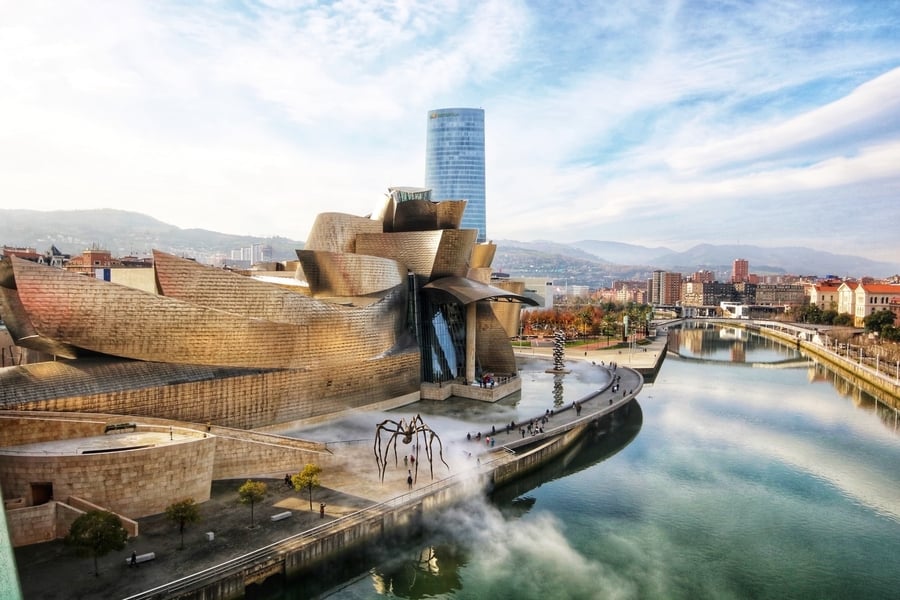
Besides the Guggenheim, I also suggest watching the sunset from the Marzana Pier, a fun place to socialize and grab drinks. You should also stroll through the Arenal, La Ribera Market, and the arches of Plaza Nueva.
You can get a general overview of the city by taking this free tour . Also, Bilbao has some of the best food in northern Spain , so I recommend going out for pintxos , or tapas. Some common pintxos here include gilda (green olives, gherkins, pickled green chiles, and anchovies) as well as various cheeses and meats.
- Recommended accommodation : If you can, book a room at the Gran Hotel Domine Bilbao , one of the best 5-star hotels in Spain that’s located in front of the Guggenheim Museum. It was designed by Spanish artist Javier Mariscal and has a spectacular rooftop terrace overlooking the city.
2. San Sebasti án, a city with some of the best food in northern Spain
Another city in northern Spain ’s Basque Country that you must visit is San Sebastián . It’s always included in the top 5 lists of the most beautiful cities in Spain , and it’s not hard to see why.
One of the most striking features of San Sebastián is that its bay is framed by Mount Igueldo and the island of Santa Clara. This city is home to a couple of urban beaches as well as Playa de la Concha , one of the best beaches in Spain . So, if you’re traveling during the summer, this is a stop you must make along the north coast of Spain .
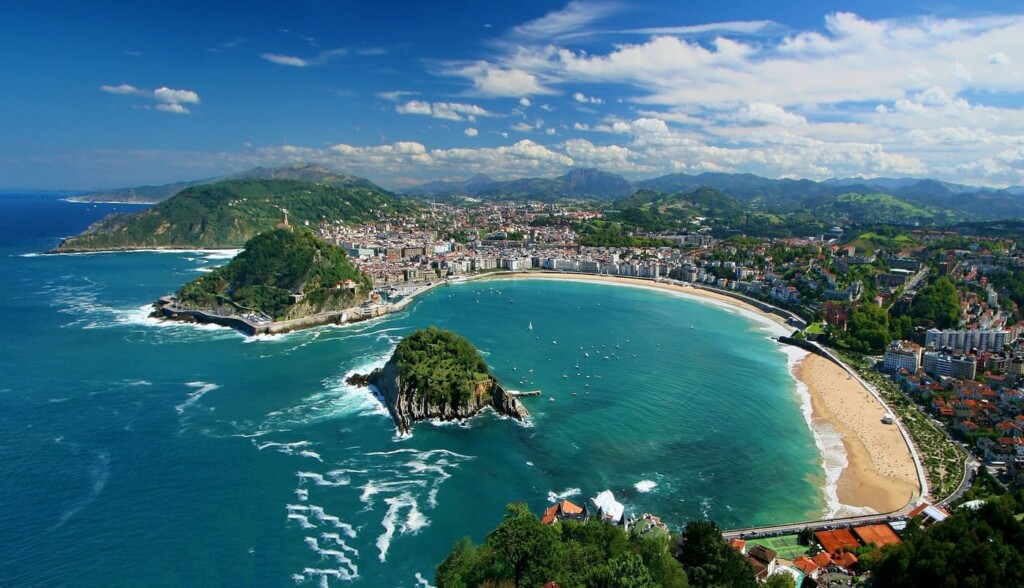
2. San Sebastián, a city with some of the best food in northern Spain
While you’re here, I recommend taking a stroll along the Zurriola Beach Promenade. Follow it around Monte Urgull, along the Paseo Nuevo, and cross the bay to Ondarreata Beach. There, you can see the Peine del Viento , an impressive sculpture by Spanish artists Eduardo Chillida and Peña Gantxegi.
It’s also worth visiting the city center, which is full of plazas, bridges, buildings, and restaurants. In fact, San Sebastián is another great place to eat in northern Spain , thanks to its delicious pintxos . The best way to sample all the delicious options is by taking this gourmet pintxos tour .
- Recommended accommodation : This city is home to one of the best luxury hotels in Spain that has welcomed famous faces like Woody Allen and Elizabeth Taylor. The Hotel María Cristina, a Luxury Collection Hotel is across from the Victoria Eugenia Theater and offers stunning views of the Cantabrian Sea and the Urumea River, so it’s a phenomenal place to stay.
3. Cudillero, one of the most charming places in northern Spain
Over in Asturias, Cudillero is considered one of the most beautiful towns in Spain , so I highly recommend adding it to your northern Spain itinerary . The town’s biggest draw is its unique landscape, which features colorful houses nestled around the blue sea and among the green trees.
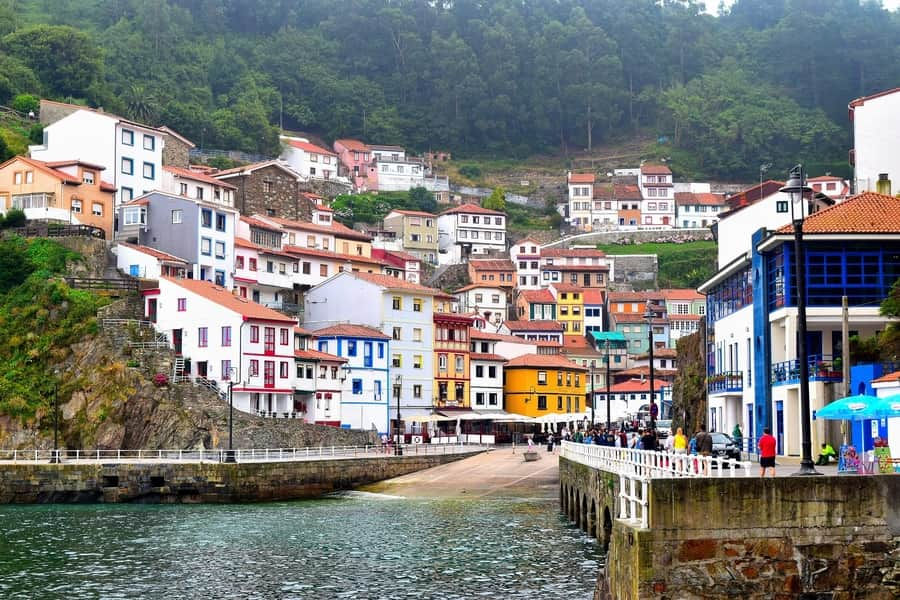
In addition, the nearby community of Castañeras is home to Playa del Silencio , one of the best beaches in Spain with virgin sands and a rustic environment. It’s in the shape of a shell that curves around a rocky cliff, which acts as a natural barrier against the wind. This makes the waters here very calm, so it’s a pleasant beach in northern Spain that you can visit for some peace and quiet.
- Recommended accommodation : Stay at Casona de La Paca , an old Asturian country house with a welcoming atmosphere. It’s surrounded by lush gardens filled with the typical vegetation of Asturias, so it’s a relaxing place to rest before continuing your trip.
4. Santiago de Compostela, a must-see on your route through the north of Spain
If there’s one thing in the north of Spain that you must do at least once in your life, it’s the Camino de Santiago . This is one of the most important hikes in Spain and a sacred pilgrimage that ends in Santiago de Compostela in Galicia.
This city is the perfect place to end such a monumental hike, as it’s full of history and religious significance. One of its most iconic landmarks is its cathedral, which was built at the site where the hidden tomb of the Apostle Santiago was discovered in the 9 th century. Since then, devout followers have been making the pilgrimage here, and in 1805, King Alfonso VI ordered that a Romanesque cathedral be built. You can learn more about the Santiago Cathedral on this guided tour .
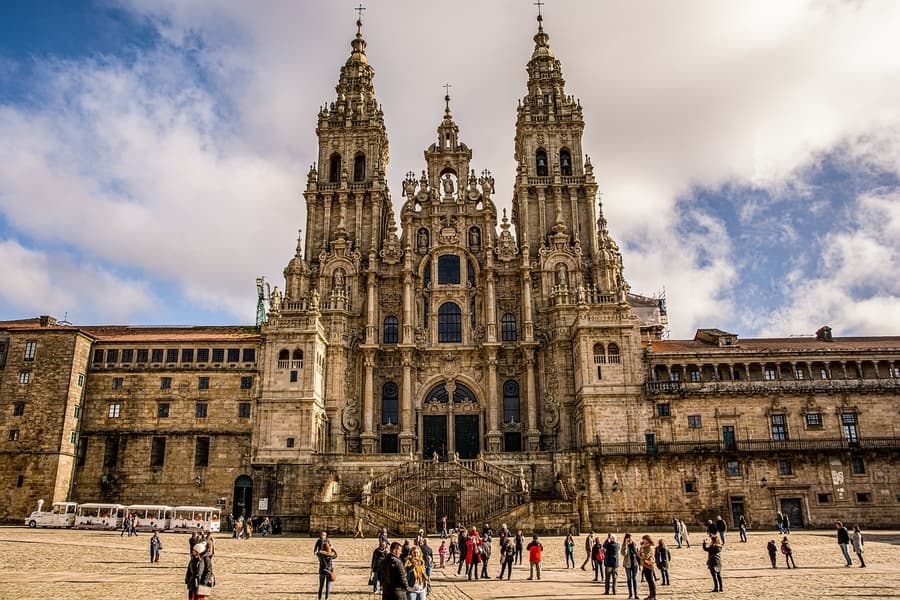
I also suggest you go to the Church of San Martiño Pinario, Alameda Park, and the Plaza de Cervantes, as well as stop at some of the bars and restaurants for some delicious Galician food. Another excellent city tour is this one , which goes to sites like the Palacio de Rajoy, the Plaza de Laterías, and the University of Santiago.
- Recommended accommodation : Stay at the Parador de Santiago – Hostal Reis Católicos , a beautiful 15 th -century building next to the Santiago Cathedral. It used to be an accommodation for traveling pilgrims, and it still has its original vaulted ceilings, stone arches, and tapestries. It also has two restaurants where you can order Mediterranean and Galician dishes.
5. The Lakes of Covadonga, another place to visit in northern Spain
While you’re exploring the northern region of Spain , you can’t miss the Picos de Europa. Not only is this one of the top national parks in Spain, but it’s also home to the Lakes of Covadonga , a magnificent natural treasure.
If you love nature, I can’t recommend this place enough since it has the most beautiful landscapes in the north of Spain . The famous Enol and Ercina Lakes are gorgeous, and the Queen Viewpoint is the perfect spot to look for native birds like bearded vultures and golden eagles.
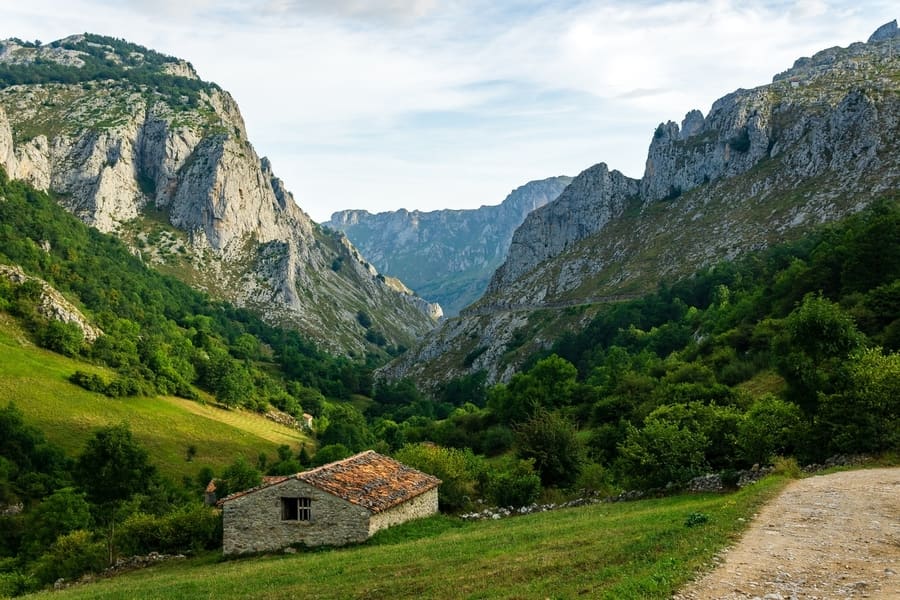
Also, some of the best tours through the north of Spain leave from the Lakes of Covadonga, so if you want to discover more about this incredible environment, you can do so. I recommend this excursion , which includes a visit to a vega , a dwelling where shepherds live during the summer to rest and make Gamoneu cheese, a famous product of this area.
- Recommended accommodation : The Arcea Gran Hotel Pelayo is in the center of the Picos de Europa National Park, so it’s a good place to spend the night. From here, you’ll have nice views of the Cathedral of Covadonga.
6. Santillana del Mar, a medieval town in the north of Spain
Santillana del Mar is another one of the best places to visit in northern Spain . While its name refers to the town being holy, flat, and by the sea, it has none of these characteristics, which is why it’s also known as “the town of the three lies”. That said, there is a lot to do and see in this Asturian town, so I recommend adding it to your northern Spain itinerary .
First, this is one of the most important medieval towns in the country, with thousands of years of history. The best way to learn more about its great historical and artistic value is by taking this free tour (in Spanish). A guide will lead you through the cobbled streets and past iconic landmarks like the House of the Marqués de Santillana and the House of the Archduchess of Austria.
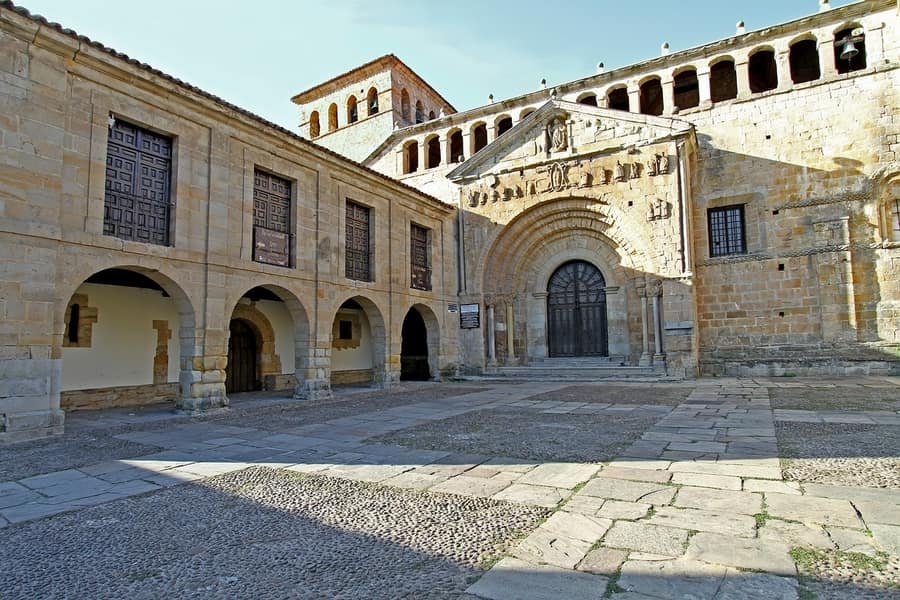
If you prefer something more adventurous, check out the Altamira Museum and the Neocave, a life-size replica of the original Paleolithic caves. This excursion includes a guided tour of the archaeological wonder, its cave paintings, and other curiosities.
- Recommended accommodation : To make your stay extra special, stay at the Parador de Santillana Gil Blas , one of the best paradores in Spain . This modern hotel is in the town’s main square and has a private patio.
7. Playa de las Catedrales, one of the best beaches in northern Spain
The northern coast of Spain is absolutely gorgeous, and it has one of the most unique beaches in the entire country. Playa de las Catedrales in Lugo, Galicia is considered one of the best beaches in Spain , so you must include it in your travel plans.
Playa de las Catedrales is one of the most popular tourist attractions in northern Spain , so much so that it’s known by its nickname rather than its original name of Aguas Santas (Holy Waters). Tourists began calling it the “Beach of the Cathedrals” since the gigantic rock formations here create arches and towers that resemble churches.
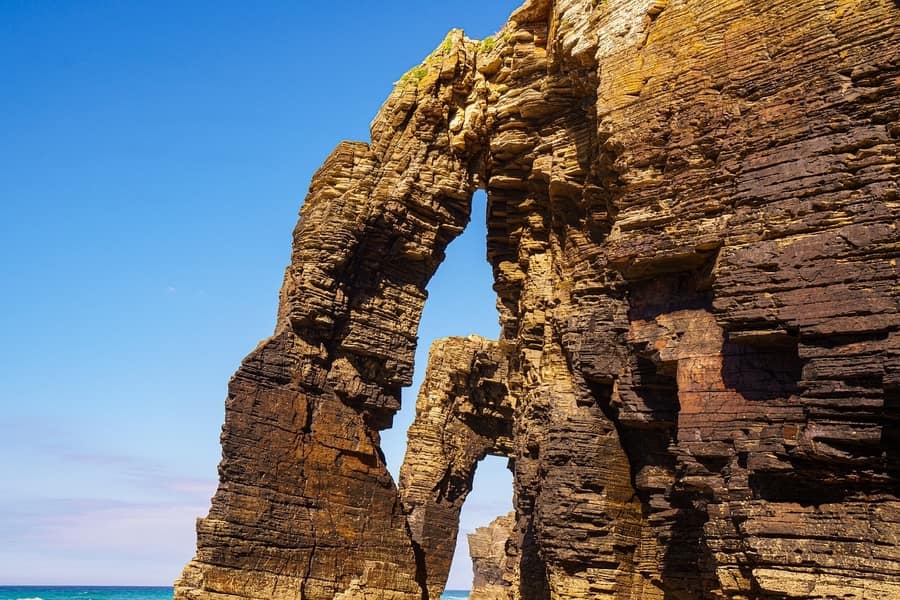
If you want to visit this beach in northern Spain but if you don’t have a car, consider this excursion from La Coruña. It’ll take you to Playa de las Catedrales as well as the city of Lugo so you can see its Roman wall.
- Recommended accommodation : Stay at the Hotel Playa de las Catedrales , which faces the Cantabrian Sea and is within walking distance of Playa de las Catedrales and Arealonga Beach.
8. San Juan de Gaztelugatxe, an amazing place to see in northern Spain
Back in the Basque Country, in the town of Bermeo, the island of San Juan de Gaztelugatxe is a unique place to add to your northern Spain road trip . This gorgeous setting looks like a fantasy land, and it kind of is since it was one of the filming locations for Game of Thrones .
The island is connected to the mainland by a stone bridge, and you can walk along the 241-stepped path to reach the top. It’s worth the effort to climb these famous stone steps, which lead to a hermitage and a place that’s believed to have been visited by John the Baptist. The hermitage has a bell, and it’s said that if you touch it three times, you’ll have good luck, while others think that if you make a wish here, it’ll come true.
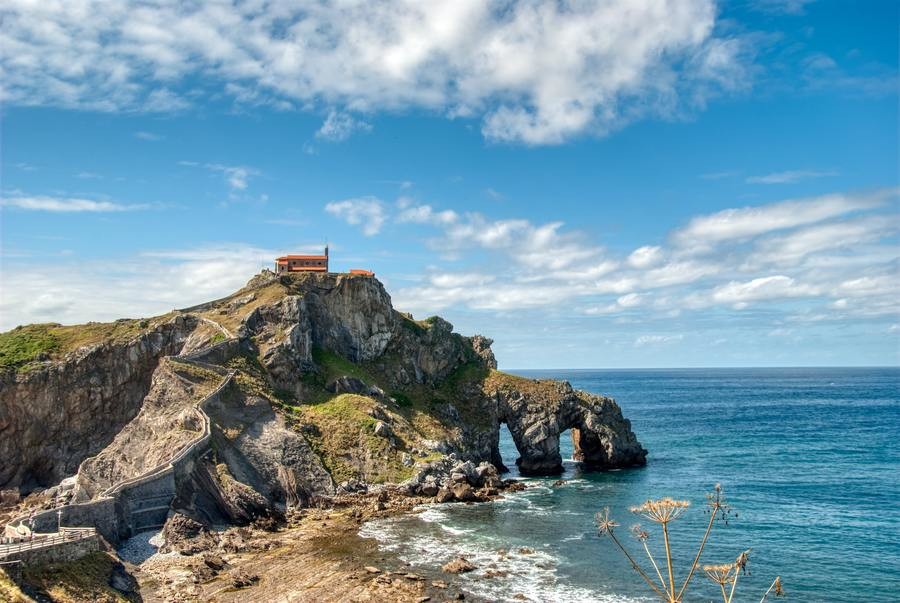
San Juan de Gaztelugatxe is just over 20 miles from Bilbao, another must-see city in northern Spain . You can easily drive there or take this tour from Bilbao if you don’t have a car. The tour includes a stop at the historic city of Guernica, where the first Nazi air raid occurred.
- Recommended accommodation : The Ureta Landa Gaztelugatxe apartments are a good option since they are surrounded by a beautiful landscape and are located just over a mile from Areaga Beach.
9. C íes Islands, a dreamy place to visit on the coast of northern Spain
Another wonderful stop to include on your itinerary through northern Spain is the Cíes Islands . These islands have a privileged location in Galicia and are full of history and beauty.
Back when the Romans passed through this archipelago, they left behind traces of their culture, including pottery and artifacts. Today, you can see these objects in the Pontevedra Museum along the Lérez River in Galicia. Legend has it that Julius Caesar came here during the persecution of the Portuguese people of herminios, who sailed here after fleeing the troops of the Empire.
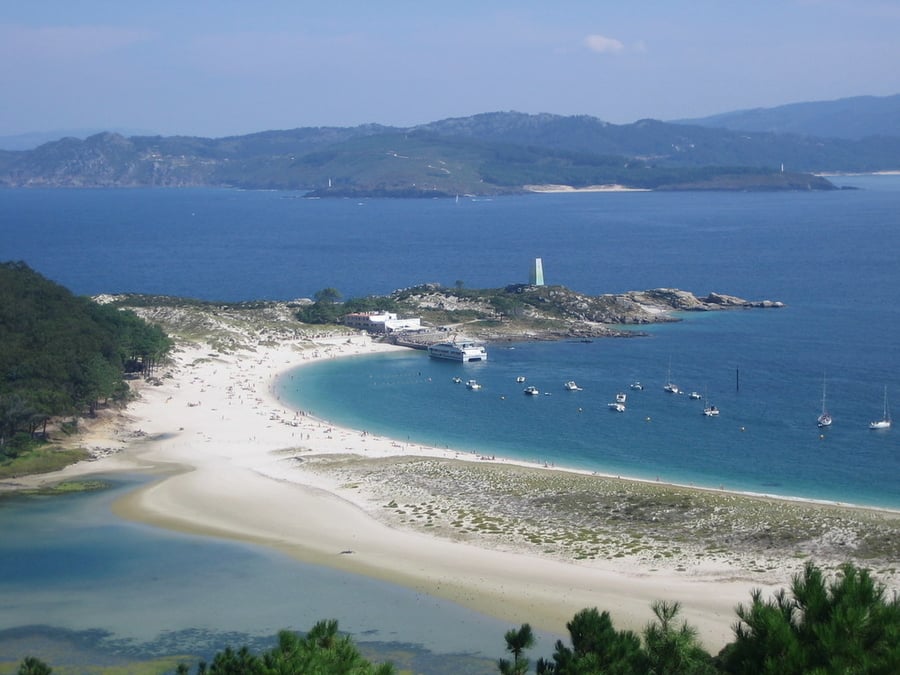
9. Cíes Islands, a dreamy place to visit on the coast of northern Spain
In the Middle Ages, various religious communities began to inhabit the Cíes Islands, but they were wiped out in the mid-18 th century by pirates and the English navy. After this, people began repopulating the island, and by the late 20 th century, the area had become a declared Natural Park and a Special Protection Area for Birds.
Since 2002, the Cíes Islands have been part of the Atlantic Islands of Galicia National Park, along with the archipelagos of Ons, Sálvora, and Cortegada. If you come here, you must visit Playa de Rodas , one of the best beaches in northern Spain with impressive pine forests. Be aware that only 2,200 people can visit per day, so it’s best to book this ticket in advance, which includes the ferry ride and permit to access the beach.
- Recommended accommodation : Stay at the Pazo Los Escudos Hotel Spa & Resort , which offers ocean and garden views as well as relaxing spa facilities.
10. San Vicente de la Barquera, the perfect place for a northern Spain holiday
Finally, San Vicente de la Barquera is a spectacular destination in northern Spain that you should visit. This fishing village is on the western coast of Cantabria and is surrounded by one of the most beautiful landscapes in the country.
What stands out about this place is its medieval history and architecture, including the Puente de la Maza and the ruins of the Convent of San Luis. You should also check out the old town ( Puebla Vieja ), which has been declared a Historic-Artistic Site.
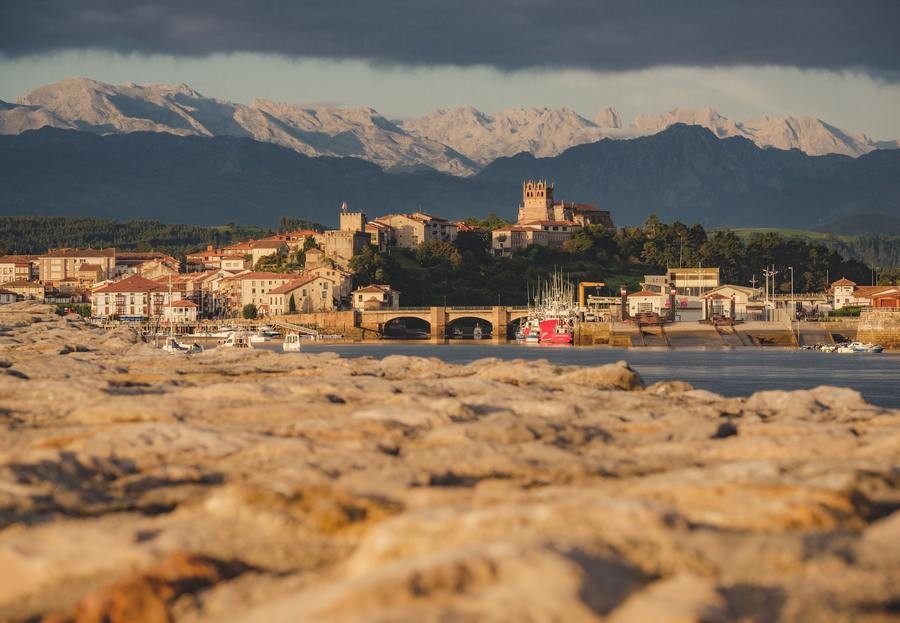
From there, you can continue along Calle Alta to the Palacio de los Corro, which has been converted into the Town Hall. The Church of Santa María de Los Angeles is at the end of the street, and the Castillo del Rey is also nearby.
Of course, a different way to explore this northern Spanish town is by taking this kayaking excursion through the San Vicente estuary. You’ll get great views of the historic town center while enjoying some exercise.
- Recommended accommodation : Just over a mile from the town center, you’ll find the Posada Punta Liñera . This charming rural property has a terrace overlooking the countryside, the Bay of Biscay, and the beautiful surroundings of Cantabria .
To help you organize your northern Spain itinerary , here is a map with all the attractions and cities I mentioned:
I’m also sharing some ideas for planning a road trip through northern Spain , whether you just have a weekend, or you can stay for a couple of weeks .
Best road trip itineraries in northern Spain
Now that you know the best places to visit in northern Spain , here are some itinerary suggestions for a weekend trip and longer road trips of 4, 7, 10, and 15 days .
Weekend trip to northern Spain
For the best weekend visit in northern Spain , consider spending some time exploring the Basque Country. Below you’ll find the route we took during one of our trips.
Day 1: Bilbao
Bilbao is one of the best cities in northern Spain ’s Basque Country, so I definitely recommend adding it to your itinerary. It’s not very big, so you should be able to see most of it in one day.
If you prefer a guided overview of the city, consider doing this free tour in the morning. If you’re exploring on your own, check out the Guggenheim Museum. It’s worth seeing both the outside and inside of the museum, so book your ticket in advance to avoid long lines.
In the afternoon, walk along the water toward Casco Viejo, where you can see the beautiful Arriaga Theater. This area is also full of bars and restaurants where you can try the most delicious pintxos .
I also recommend visiting La Ribera Market and the Santiago Cathedral, then ending your day in Plaza Nueva.
- Recommended accommodation : Stay at the Gran Hotel Domine Bilbao , one of the best 5-star hotels in Spain that’s across from the Guggenheim Museum.
Day 2: San Sebastián
The next day, get up early and head to San Sebastián , another lovely city in northern Spain . It’s about 60 miles away, so it’ll take about an hour and 15 minutes to drive there.
Once you reach San Sebastián, check out the Zurriola Beach Promenade and walk around Monte Urgull and Paseo Nuevo. From there, you can cross the bay to Ondarreta Beach, where you’ll find the Peine del Viento sculpture.
Then, head into the city center and discover its plazas, bridges, and buildings. It’s also worth doing this gourmet pintxos tour to try some delicious food. Also, a visit to San Sebastián isn’t complete without a stop at La Concha Beach, one of the best beaches in Spain .
- Recommended accommodation : You’ll love the Hotel María Cristina , one of the most luxurious hotels in northern Spain with great views of the Cantabrian Sea and the Urumea River.
4-day trip through the north of Spain
If you have a couple more days to add to your itinerary through northern Spain , you’ll be able to discover some of the charming areas in Cantabria and Asturias.
Day 1: Santander and San Vicente de la Barquera
Start your northern Spain road trip in Santander , Cantabria with a tour of the Magdalena Peninsula. Then, continue along the Sardinero to see the most beautiful beaches in Santander, including Mataleñas Beach and the Cabo Mayor Lighthouse. Finish up the morning with a visit to the Botín Center and the Paseo Marítimo.
For the second half of the day, go to San Vicente de la Barquera , which is about 35 miles (30 minutes) from Santander.
Start your visit here by crossing the Puente de la Maza to the ruins of the Convent of San Luis. Then, follow Mata Linares Street to the Puebla Vieja (old town) and see the Tower of the Provost. Along Calle Alta, you can see the Palacio de los Corro, which is now the Town Hall, as well as the Church of Santa María de Los Angeles. If you have time, go to the Castillo del Rey.
- Recommended accommodation : Stay at the Posada Punta Liñera , a rural estate that’s a mile from San Vicente de la Barquera’s city center. It has a lovely terrace that overlooks the countryside and the Bay of Biscay.
Day 2: Llanes and its beaches
After spending the night in San Vicente de la Barquera, get up early and head to Llanes , Asturias. It’s 25 miles away, so it’s only about a 30-minute drive.
Take this opportunity to visit beautiful Gulpiyuri Beach, one of the best beaches in Spain and one of the smallest beaches in the world. It’s also worth seeing Playa de Poo, a family-friendly beach with gentle waves.
In the afternoon, you can visit the port of Llanes and its famous Cubes of Memory, which are painted rocks that serve as a breakwater. Then, take a walk through Llanes’ historic center, which is an Asset of Cultural Interest and a Historic-Artistic Site. Later, enjoy a nice dinner to end your day.
- Recommended accommodation: One of the best places to stay is the Hotel Sablón , which is located on a cliff. Along with lovely views, it offers direct beach access.
Day 3: Ribadesella, Lastres, and Tazones
The next stop on this northern Spain road trip is Ribadesella . It’s also in Asturias, and it takes less than 30 minutes to drive the 20 miles to Ribadesella from Llanes.
Once you arrive, head to the pier where you can take a stroll along the water and through the old town. Check out the Casa de los Ardines, the Casona del Escudo, and the Prieto Cutre Palace, which is now the Town Hall.
Before lunch, I suggest going to Lastres , one of the most beautiful towns in Spain that’s about 20 miles from Ribadesella. It’s known for its steep and narrow streets as well as the Mirador de San Roque, an incredible viewpoint where you can see the town, the sea, and the mountains.
Then, end the day at Tazones , which is less than 20 miles from Lastres. You must walk through the town center and see the iconic shell house (Casa de las Conchas).
- Recommended accommodation : The Apartamentos Rurales Les Mestes has super cozy rooms in a peaceful area of Tazones.
Day 4: Cangas de Onís and Lakes of Covadonga
To start the fourth day of your northern Spain itinerary , go to Cangas de Onís in Asturias. It’s about 45 miles (1 hour) from Tazones, so I recommend getting up early to maximize your time.
The highlights of this city include the Roman Bridge and the old town, where you can people-watch and relax at a cider house ( sagardotegi ), a staple of Basque Country culture.
Then, go to the Lakes of Covadonga , the most beautiful place in northern Spain to end your trip. The Lakes of Covadonga is one of the best national parks in Spain and home to magnificent natural wonders like the Enol and Ercina Lakes. You must explore this impressive landscape, and if you prefer a guide, I suggest this excursion .
- Recommended accommodation : I highly recommend staying at the Arcea Gran Hotel Pelayo , which is in the middle of the Picos de Europa National Park and overlooks the stunning Covadonga Cathedral.
7-day northern Spain road trip
A 7-day itinerary through northern Spain is ideal if you want to explore the areas of the Basque Country, Cantabria, and Asturias. You can see my top destinations and recommendations below, but feel free to change things around to suit your travel plans.
Day 1: Hondarribia and San Sebastián
I’d start this trip through the north of Spain in Hondarribia , in the Basque Country. If you have a rental car, you can park it in the lot by the Puerta de Santa María, then walk into the walled city to see landmarks like Plaza del Obispo, Calle Mayor, and Plaza de Armas.
In the afternoon, head to San Sebastián , which is about a 30-minute (15-mile) drive away. San Sebastián is one of the most charming Spanish cities with an impressive town center. It’s also home to some of Spain’s best beaches , including La Concha Beach.
- Recommended accommodation : The best place to stay in is the Hotel María Cristina , one of the best luxury hotels in Spain . it’s across from the Victoria Eugenia Theater and offers great views of the Cantabrian Sea and the Urumea River.
The next day, take some time to explore the hidden gems of San Sebastián. Walk along Zurriola Beach and go around Monte Urgull. If you follow the Paseo Nuevo and cross the bay, you’ll find Ondarreata Beach and the Peine del Viento sculpture by Spanish artists Eduardo Chillida and Peña Gantxegi.
Afterwards, you can go back to the town center to enjoy some delicious pintxos and Spanish cuisine. This gourmet tour is the best option if you want to try all the typical pintxos of this region.
- Recommended accommodation : Return to the Hotel María Cristina for a good night’s sleep before continuing your northern Spain road trip .
Day 3: Bilbao
For day three, wake up early and make the drive to Bilbao , one of the best cities in northern Spain . It’s about 65 miles away, so it’ll take about an hour and 15 minutes by car.
Check out the famous Guggenheim Museum and its stunning exterior, which was designed by architect Frank Gehry. It’s also worth browsing the art exhibits inside, so if you plan on visiting, get your ticket in advance.
I also recommend going past the Arenal, La Ribera Market, and the arches of Plaza Nueva. Depending on your interests, it’s worth doing a pintxos tasting or taking this free tour for more insights into the city.
To end your day, you must watch the sunset from the Marzana Pier. It’s a dreamy location where you can spend a romantic evening with your partner and grab a drink.
- Recommended accommodation : If you can, book a room at the Gran Hotel Domine Bilbao , one of the best 5-star hotels in Spain . It was designed by Spanish architect Javier Mariscal and has an impressive rooftop terrace where you can see the city and its surroundings.
Day 4: Santillana del Mar and Comillas
To start this fourth day of your northern Spain trip , get up early and make your way to Santillana del Mar in Cantabria. It’s 75 miles away, so it’s about a 1.5-hour drive.
Santillana del Mar is a medieval Spanish town with lots of historical and artistic value. You’ll love strolling through its cobblestone streets and past picturesque landmarks like the House of the Marqués de Santillana or the Palace of the Archduchess Margarita of Austria. If you have time, book this free tour (in Spanish) or this guided tour to visit the Altamira Museum and Neocave.
Next, continue your journey by visiting the beautiful town of Comillas , which is about a 20-minute (15-mile) drive away. Don’t miss the most important monuments here like the Plaza de los Tres Caños, the Plaza de la Constitución, the Church of San Cristóbal, and the Capricho Villa by Gaudí.
- Recommended accommodation : I suggest returning to Santillana del Mar and spending the night at the Parador de Santillana Gil Blas , a modern hotel in the main square.
Day 5: Llanes and Ribadesella
If you spent the night in Santillana del Mar, then you can wake up early and drive to Llanes , Asturias. It’s about 40 miles away, so the drive takes about 45 minutes. Once you reach Llanes, check out the port and see the famous Cubes of Memory along the shoreline. Then, take a walk through the old town, which is a declared Historic-Artistic Site and Asset of Cultural Interest.
Grab some lunch, then drive to Ribadesella , which is just 20 miles from Llanes. You should have enough time to stroll along the pier and see the most famous sights in Ribadesella’s old town.
- Recommended accommodation : Stay at the Hotel Don Pepe in Ribadesella, a clean hotel with bright and spacious rooms.
Day 6: Cudillero and Luarca
Next, it’s time to visit Cudillero , a must-see area of northern Spain . It’s about 70 miles from Ribadesella, so I suggest getting up early to make the 1 hour and 15-minute drive.
Cudillero is one of the most beautiful towns in Spain and is located on a cliff, so it’s quite scenic. Go up to the La Garita Viewpoint for an amazing perspective of the town, then spend some time exploring the narrow streets of the center. Make your way to the Plaza de la Marina, where you can grab a bite to eat and see the port.
Since Cudillero is pretty small, you should have time to also visit Luarca , which is less than 30 minutes away. This is another charming Spanish town with a bustling port. Take a walk through this small seaside town and discover the Puente del Beso, the Casas de Indianos, and the Gardens of the Fonte Baxa.
- Recommended accommodation : The Hotel Villa de Luarca is an elegant accommodation with a great location by the town center and the beach.
Day 7: Ribadeo, Playa de las Catedrales, and A Coruña
For the last day of this week-long holiday in northern Spain , go to Ribadeo , which is 30 miles from Luarca and a 30-minute drive away.
One of the sites here that you can’t miss is the Plaza de España. It’s where several iconic buildings and monuments are located, such as the Pazo de Ibáñez and the Torre de los Moreno. Some other places to see in town include the Convent of Santa Clara, the lively port, and the Chapel of San Miguel, which has lovely views.
Also, before leaving Ribadeo, you must visit Playa de las Catedrales , a National Monument and one of the top beaches in Spain . Then, get in the car and head to A Coruña , which is about an hour and a half (95 miles) away.
There are many beautiful things to see in this city, so I suggest taking this free tour (in Spanish) to see as much as possible. You could also visit the historic center on your own and check out popular sites like the Galerías la Marina, the Plaza de María Pita, and the Jardines de Santiago.
- Recommended accommodation : The NH Collection A Coruña Finisterre has a great location that’s within walking distance of the center and some of the city’s main attractions.
10-day itinerary for northern Spain
With 10 days in northern Spain , you can expand your itinerary to include the Basque Country, Cantabria, Asturias, and Galicia.
Day 1: San Sebastián
San Sebastián is one of the most beautiful Spanish cities , as well as an excellent starting point for your northern Spain itinerary . Begin your visit with a stroll along Zurriola Beach, then go around Monte Urgull and follow the Paseo Nuevo to Ondarreta Beach. There, you can see the famous Peine del Viento sculpture.
Continue your adventure by walking through the city center and getting lost among the streets, squares, bridges, and historical buildings. To all this, I must add La Concha Beach, one of the best beaches in Spain . I also recommend this gourmet tour , especially if you want to try the most popular pintxos in San Sebastián.
- Recommended accommodation : Stay at the Hotel María Cristina , one of the best 5-star hotels in Spain that’s across from the Victoria Eugenia Theater. Not only is the inside gorgeous, but you’ll have great views of the Cantabrian Sea and the Urumea River.
Day 2: Bilbao
Bilbao is another city in northern Spain that you can easily explore on foot, and you can see all its main tourist attractions in one day. It’s 65 miles from San Sebastián, so I recommend waking up early to make the one hour and 15-minute drive.
Start your visit to Bilbao with this free tour , or check out the famous Guggenheim Museum . It was built by famed architect Frank Gehry and is known for its floral puppy sculpture out front. If you plan on looking at the art exhibits inside, I suggest getting your ticket in advance.
Afterwards, head toward the estuary and follow it to the Casco Viejo, where you can see the Arriaga Theater. It’s also worth visiting La Ribera Market, the Santiago Cathedral, and Plaza Nueva. Along the way, be sure to stop for delectable pintxos .
- Recommended accommodation : Stay at the Gran Hotel Domine Bilbao , one of the best 5-star hotels in Spain . It was designed by Spanish architect Javier Mariscal and is in front of the Guggenheim Museum.
Day 3: Castro Urdiales, Faro del Caballo, and Santander
The third day of this northern Spain road trip begins with a visit to Castro Urdiales , a city in Cantabria with beautiful beaches, a lively port, and an interesting old town. It’s just 20 miles from Bilbao, so it’ll only take about a half hour to drive there.
After spending the morning discovering Castro Urdiales, make your way to Santander, stopping at the Faro del Caballo along the way. This picturesque place is located between some seaside cliffs, and it’s about 25 from Castro Urdiales. Be aware that if you make this pitstop and climb the 763 steps of the cliffs, it’ll cut into your time at Santander, which is 30 miles from here.
Regardless of whether or not you take this detour, you should get to Santander with enough time to walk through the Sardinero and enjoy a cold beer at the Cabo Mayor Lighthouse, which offers stunning views.
- Recommended accommodation : The NH Ciudad de Santander is a simple, clean hotel with a great location, so it’s a good value for your money.
Day 4: Santillana del Mar, Altamira Caves, and Comillas
For day four, I suggest making a stop in Santillana del Mar , where you can see the famous Cuevas de Altamira , one of the most important Paleolithic sites in the world. Santillana del Mar is an intriguing medieval town in northern Spain that’s less than 20 miles from Santander, so it’ll only take a half hour to get there.
Use your time in Santillana del Mar to visit the Collegiate Church of Santa Juliana, Plaza Mayor, and the historic town center, which is characterized by cobblestone streets and small mountain homes. You can either do this free tour to learn more about the city, or this guided tour , which takes you to the Altamira Museum and the Neocave.
Later, make the 20-minute drive to Comillas , one of the most scenic towns in Cantabria. Here, you can see one of the few works by Gaudí that’s outside of Catalonia, the Capricho Villa. Some other highlights of this city include the Sobrellano Palace, the Chapel Pantheon of the Marquises of Comillas, and the historic center, where you’ll find the Fuente de los Tres Caños (the Fountain of the Three Pipes).
I recommend returning back to Santillana del Mar to spend the night.
- Recommended accommodation : Stay at the Parador de Santillana Gil Blas , a modern hotel located in the main square.
Day 5: Cabezón de la Sal Sequoia Forest, Llanes, and its beaches
If you spent the night in Santillana del Mar, you’ll be less than 20 minutes from the Cabezón de la Sal Sequoia Forest . This is one of the best places to visit in northern Spain , especially for nature lovers, as the redwoods here reach up to 130 feet tall. The route through the forest takes about two hours and is absolutely breathtaking.
After your forest trek, go to Llanes , which is just 30 minutes away. This Asturian city is full of beaches and coves, although it also has a lovely historic center. Take some time to enjoy the coast as well as the interesting monuments and buildings in town.
- Recommended accommodation : Sleep at the Hotel Sablón , a cliffside accommodation with amazing views and direct beach access.
Day 6: Lakes of Covadonga, Covadonga, and Cangas de Onís
Next, it’s best to get up early so you can make the one hour and 20-minute drive to the Lakes of Covadonga with time to spare. This place is within the Picos de Europa National Park, one of the best national parks in Spain and a must-see during your tour of northern Spain .
This natural wonder is full of pristine landscapes, the glacial lakes of Enol and Ercina, as well as incredible attractions like the Sanctuary of Covadonga. This is where you can take a nature walk, breathe the fresh mountain air, and mingle with the grazing cows.
You can visit the Lakes of Covadonga for free, although I like this guided tour since it starts from Cangas de Onís , another place I recommend visiting. There, you can see the old Roman Bridge and the historic center. It’s full of churches and hermitages, most notably the Church of Our Lady of the Assumption of St. Mary and the hermitage of Santa Cruz.
- Recommended accommodation : The Arcea Gran Hotel Pelayo is in the middle of the Picos de Europa National Park and offers beautiful views of the Covadonga Cathedral, so it’s the perfect place to rest after a full day.
Day 7: Gijón and Oviedo
The next stop is Gijón , which is about 60 miles away, so get up early to make the 1.5-hour drive. Once you get there, start with a walk along San Lorenzo Beach, then go up to the Cerro de Santa Catalina and see the Elogio del Horizonte sculpture over the water.
Later, check out the Cimadevilla neighborhood, the oldest part of the city with interesting sites like the Palacio de Revillagigedo, Plaza del Marqués, and Plaza Mayor. You can also do this free tour (in Spanish) if you prefer a guided walk through the city.
Depending on how much time you have, you can stop by the port or go to Oviedo , which is about a 30-minute drive away. This city in northern Spain is full of historic attractions like El Fontán Square and the Plaza de la Catedral, where you can see the Cathedral of San Salvador.
I also recommend walking through the city center and looking for the interesting statues of famous figures. For example, on Calle Milicias Nacionales, you’ll find a Woody Allen statue, while San Francisco Park has a statue of the Argentine cartoon character Mafalda. Finally, you can’t leave Oviedo without stopping at La Gascona for delicious cider.
- Recommended accommodation : The beautiful Gran Hotel España is the best place to stay thanks to its spacious rooms and great location by the city center.
Day 8: Ribadeo and Playa de las Catedrales
Ribadeo should be included in any northern Spain itinerary , so don’t miss it. Make sure you get up early so you can drive the 85 miles to Ribadeo from Oviedo, which will take about 1.5 hours.
Among the many attractions here, the Plaza de España stands out. It’s home to two historical monuments, the Pazo de Ibáñez and the Torre de los Moreno. You should also walk through the streets of the city center to see the Convent of Santa Clara and the Chapel of San Miguel, as well as the port.
There are also excellent lookout points here, such as the Ribadeo Watchtower and the Isla Pancha Viewpoint. That said, you should definitely make time to visit Playa de las Catedrales , one of the best beaches in Spain that’s also a National Monument.
- Recommended accommodation : Stay at the Hotel Playa de las Catedrales , which faces the Cantabrian Sea and is next to Arealonga Beach. Plus, it’s just a ten-minute walk from Playa de las Catedrales.
Day 9: A Coruña
If you’re leaving from Playa de las Catedrales, then make sure you wake up early enough to make the 1.5-hour drive (95 miles) to A Coruña . This city in northern Spain ’s Galicia region is a must-see, and if it’s your first time here, consider taking this free tour .
If you’re visiting the city on your own, I recommend stopping by the promenade, where you can see the Castle of San Antón and the Sculpture Park of the Tower of Hercules. Another iconic site is the Ciudad Vieja, the old part of the city with some of the best tapas.
You’ll also find some of the best beaches in Galicia here, such as Riazor Beach, a beautiful place in northern Spain to go swimming or sunbathing. Finally, I suggest ending your day with a walk around the port and admiring the amazing views of A Coruña from Monte de San Pedro.
- Recommended accommodation : The NH Collection A Coruña Finisterre has a great location that’s within walking distance of the city center and main attractions.
Day 10: Santiago de Compostela
The last day of this northern Spain itinerary involves a visit to Santiago de Compostela , which is about 50 minutes from A Coruña by car.
Once you reach the city, consider taking this free tour or exploring the tourist attractions on your own. Of course, one of the sites you must see is the Santiago Cathedral, which is the final destination for pilgrims making the trek along the Camino de Santiago, one of the most important hikes in Spain . You can learn all about the secrets of this church by taking this guided tour .
I also recommend roaming the streets of the old city and walking through the Parque de la Alameda, an urban park full of chestnut, eucalyptus, and oak trees. The Mercado de Abastos is a market that’s been around for over a century, so I suggest stopping by to browse or pick up some products. If you like art, the City of Culture of Galicia is a complex of cultural and artistic buildings that you’ll find interesting.
- Recommended accommodation : Stay at the Parador de Santiago – Hostal Reis Católicos , a beautiful 15 th -century building next to the Santiago Cathedral. It still has some of its original architecture, as well as two delicious restaurants specializing in Mediterranean and Galician food.
15-day road trip through northern Spain
A 15-day road trip through northern Spain is the perfect opportunity to get to know this area of the country in depth. Here is the route I suggest following:
This 15-day northern Spain itinerary begins in Hondarribia in the Basque Country. I recommend leaving your rental car in the parking lot by the Puerta de Santa María and heading into the city on foot. There, you can visit points of interest like Plaza del Obispo, Calle Mayor, and Plaza de Armas.
After strolling through town, head to San Sebastián , which is about a 30-minute (15-mile) drive from Hondarribia. San Sebastián is one of the most beautiful cities in Spain , as well as where you can see La Concha Beach, one of Spain’s best beaches .
- Recommended accommodation : Stay at the Hotel María Cristina , one of the best luxury hotels in Spain . It’s across from the Victoria Eugenia Theater and offers great views of the Cantabrian Sea and the Urumea River.
Dedicate day two of your tour through northern Spain by exploring the ins and outs of San Sebastián . I recommend going around Monte Urgull, where you’ll find the Paseo Nuevo. If you follow it to the end, you’ll reach Ondarreta Beach and the famous Peine del Viento sculpture.
Continue your visit by spending some time in the city center, which is full of interesting plazas, bridges, and historical buildings. You also can’t leave San Sebastián without trying the typical pintxos , either by stopping at a café or taking this gourmet tour .
- Recommended accommodation : Spend another night at the Hotel María Cristina , or book this place for your second night if you didn’t stay here the first night.
On day three, wake up early and head to Bilbao , which is 65 miles from San Sebastián, or about a one hour and 15-minute drive away. This is another city in northern Spain that you can explore on foot, so consider taking this free tour to get to know all the main attractions.
Of course, the crown jewel of Bilbao is the Guggenheim Museum , which is known for its floral puppy sculpture and mesmerizing architecture by Frank Gehry. If you want to go inside the museum and peruse the art collection, I recommend getting your tickets in advance.
Afterwards, follow the estuary to the Casco Viejo (old town), where you can see the Arriaga Theater. Some other cool places in Bilbao include La Ribera Market, the Santiago Cathedral, and Plaza Nueva. Of course, be sure to stop and try some pintxos that are typical to Bilbao.
- Recommended accommodation : Located by the Guggenheim Museum, the Gran Hotel Domine Bilbao is one of the best 5-star hotels in Spain and has a beautiful structure designed by Spanish architect Javier Mariscal.
Day 4: Santander
The next day, take some time to discover the beautiful city of Santander . This free tour is a great introduction to Santander, although you can also explore the city on your own. If you do, I recommend starting with a little tour around the Magdalena Peninsula, one of the most beautiful places in northern Spain .
For your next stop, head to El Sardinero, one of the most popular beaches in Santander. It’s also worth visiting Mataleñas Beach, where you can admire the lovely views from the Cabo Mayor Lighthouse. Another way to get a panoramic perspective of the area is by taking the Río de la Pila funicular.
End your day with a visit to two iconic places in the city, the Botín Center and the Paseo Marítimo.
- Recommended accommodation : The NH Ciudad de Santander is a simple hotel, but it’s clean, well-located, and a great value for your money.
Day 5: Santillana del Mar and Comillas
Santillana del Mar is a must-see in northern Spain , so for day five of your itinerary, I suggest heading there. This medieval Spanish town is less than 20 miles from Santander, so it’s only about a 30-minute drive.
The Cuevas de Altamira is the most famous attraction in the city, although you should also check out the Collegiate Church of Santa Juliana, Plaza Mayor, and the historic old town, with its cobbled streets and small mountain homes. If you have time, consider this free tour (in Spanish) or this guided tour to the Altamira Museum and Neocave.
That same day, you can go to Comillas since it’s just 12 miles (20 minutes by car) from Santillana del Mar. This city is home to some beautiful structures, like the Sobrellano Palace, the Chapel Pantheon of the Marqueses de Comillas, and the Fuente de Tres Caños (The Fountain of Three Pipes). This is also where you can see one of the few works by Gaudí outside of Catalonia, the Capricho Villa.
- Recommended accommodation : Return to Santillana del Mar and spend the night at the Parador de Santillana Gil Blas , a modern hotel in the main square.
Day 6: San Vicente de la Barquera and Cueva del Soplao
The sixth day of this northern Spain itinerary begins in San Vicente de la Barquera in Cantabria, just 25 minutes away. I suggest starting your visit here by crossing the Puente de la Maza and seeing the Convent of San Luis, an iconic landmark in the city.
Then, cross the town and follow Mata Linares Street to Puebla Vieja , or the old town. Here, you can see the Provost Tower and the Palacio de los Corro, which is now the Town Hall. If you have time, you can visit the Castillo del Rey, although I highly recommend seeing the Cueva del Soplao . This impressive rock formation is a must-see in northern Spain, and you can book a guided tour and entry ticket here .
- Recommended accommodation : Spend another night at the Parador de Santillana Gil Blas , which is very close by.
Day 7: Llanes and Ribadesella
If you spent the night at the Parador de Santillana Gil Blas , you’ll be just 45 minutes from Llanes , Asturias, the next stop on this northern Spain road trip .
Llanes is a city that’s full of lovely beaches and coves, although the historic old town is also worth seeing. In fact, it has been declared an Asset of Cultural Interest and a Historic-Artistic Site, so check it out and be sure to see the Cubes of Memory breakwater rocks.
Then, you can grab something to eat and head to Ribadesella , which is 20 miles away. Take a walk through the port and stroll through the old town, which is super scenic and full of historic structures.
- Recommended accommodation : The Hotel Don Pepe is a nice place to stay with spacious rooms and a good location.
Day 8: Gijón
For day eight, drive to Gijón , Asturias, which is 40 miles, or about 45 minutes, from Ribadesella. You can start your visit here with this free tour (in Spanish) or by exploring on your own. There are lots of cool places to check out, such as San Lorenzo Beach, the Cerro de Santa Catalina, and the Elogio del Horizonte, a sculpture by the water.
Then, journey into the Cimadevilla neighborhood, the oldest part of the city where you can see Revillagigedo Palace, Plaza del Marqués, and Plaza Mayor. To end the day, go to the port and Poniente Beach, where you can watch one of the most beautiful sunsets in the north of Spain .
- Recommended accommodation : Hotel Begoña is quite basic, but it’s clean, comfortable, and situated in the heart of the city.
Day 9: Oviedo
Oviedo is another city in northern Spain you can’t miss, and it’s only 30 minutes from Gijón. Among the many attractions here, the Plaza del Fontán, the Plaza de la Catedral, and the Cathedral of San Salvador stand out.
I also suggest going into the city center and looking for some of the interesting statues here, like those of Woody Allen or the Argentine character Mafalda. The former is on Calle Milicias Nacionales, while the latter is in San Francisco Park, another place in Oviedo you should spend some time at.
Moreover, Oviedo is home to three pre-Romanesque churches that you should see: Santa María del Naranco, San Miguel de Lillo, and San Julián de los Prados. If you feel like going shopping, you’ll find all kinds of goodies on Calle Uría, and for the most delicious food, go to La Gascona.
- Recommended accommodation : The Gran Hotel España is one of the best places to stay. In addition to its spacious, beautiful rooms, it’s close to the city center and several tourist attractions.
Day 10: Cudillero and Luarca
Cudillero is a beautiful Asturian town situated on a cliff, making it one of the best places to visit in northern Spain . It’s about 40 miles from Oviedo, so wake up early in the morning and make the 45-minute drive to this gorgeous city.
Once you arrive, go to the La Garita Viewpoint for a spectacular overview of the town. Then, head down into the city center and walk among the narrow streets as you make your way to Plaza de la Marina. This is one of the liveliest areas of Cudillero with numerous bars and restaurants.
Check out the port, then make the 30-minute drive to Luarca , another lovely city in northern Spain . Here, you can stroll through the town center and see the most popular attractions, such as the Puente del Beso, the Casas de Indianos, and the Jardines de la Fonte Baxa.
- Recommended accommodation : The Hotel Villa de Luarca is an elegant hotel with a great location by the town center and the beach.
Day 11: Ribadeo and Playa de las Catedrales
Spend the next day visiting Ribadeo , another beautiful city in the north of Spain that’s just 30 minutes from Luarca. Among the many attractions in Ribadeo, you can’t miss Plaza de España, which is where the Pazo de Ibáñez and the Torre de los Moreno are located.
As you walk through the town’s streets, you’ll find other interesting sites like the Convent of Santa Clara and the Chapel of San Miguel. It’s worth going inside the chapel for the views, although you’ll also get a nice perspective of the city from the port.
Also, if you want to capture some amazing photos, go to the Ribadeo Watchtower or the Isla Pancha Viewpoint. Finally, make sure you leave enough time to visit Playa de las Catedrales , a National Monument and one of the best beaches in Spain .
- Recommended accommodation : Have a good night’s sleep at the Hotel Playa de las Catedrales , which faces the Cantabrian Sea. It’s right next to Arealonga Beach and just a ten-minute walk from Playa de las Catedrales.
Day 12: A Coruña
For day 12, it’s time to visit A Coruña , an incredible area of northern Spain . It’s about 95 miles from Playa de las Catedrales, so get up early and get the 1.5-hour drive out of the way.
In A Coruña, you can take this free tour (in Spanish) to visit some of the city’s highlights and learn more about its history. If you’re touring the city on your own, I recommend starting at the promenade, which leads to the Castle of San Antón and the Sculpture Park of the Tower of Hercules. Also, be sure to check out the Ciudad Vieja (Old Town), where you can stop for yummy tapas.
After lunch, take a walk along Riazor Beach, one of the most picturesque beaches in Galicia. Then, stroll around the port and end your day by watching the sunset from Mount San Pedro.
- Recommended accommodation : You’ll have a comfortable stay at the NH Collection A Coruña Finisterre , which is just a short distance from the city center and several main attractions.
Day 13: Santiago de Compostela
One of the best places in northern Spain that you must add to your route is Santiago de Compostela , which is a 50-minute drive from A Coruña.
Have fun exploring the city on your own or taking this free tour . Santiago de Compostela is the final stop on the Camino de Santiago, a religious pilgrimage and one of the most important hikes in Spain . The route specifically ends at the Santiago Cathedral, which you can learn more about on this guided tour .
You should also spend some time wandering the streets of the Old City, as well as visiting Alameda Park. I also recommend browsing the Mercado de Abastos, where you can buy fresh Galician cheeses and products. If you’re an art lover, you can’t miss the City of Culture of Galicia, a complex full of contemporary galleries and artistic spaces.
- Recommended accommodation : Stay at the Parador de Santiago – Hostal Reis Católicos , an old pilgrim accommodation that’s inside a 15 th -century building. It’s next to the Santiago Cathedral and has some original architectural elements as well as a Mediterranean and Galician restaurant.
Day 14: Vigo
People sometimes overlook the city of Vigo , but if you’re taking a 15-day road trip through northern Spain , you’ll have time to visit it. Vigo is 55 miles (one hour) from Santiago de Compostela, so get up early and make your way there in the morning.
You can take this free tour of Vigo to get a general overview of the city and learn more about its top attractions. Some of the most famous places here include the Praza da Constitución, the Mercado da Pedra, the Plaza de los Pescadores, and the Praza do Berbés.
You should also check out the Bouzas neighborhood, a traditional seafaring community. For the best views, go to Mount O Castro, where you can see the entire city and the Cíes Islands.
- Recommended accommodation : The Hotel Pazo Los Escudos Spa & Beach is one of the best options with a spa and rooms overlooking the ocean and the gardens.
Day 15: Cíes Islands
For the last day of this northern Spain itinerary , take a boat from Vigo and go to the Cíes Islands . You can book this ferry ride , which also includes your permit to access the islands.
These paradisiacal islands are home to Playa de Rodas, one of the best beaches in northern Spain , and the entire world. There are also four awesome trails, so you can find a northern Spain hike to suit your fitness level. The trails are the Cíes Lighthouse (2.1 miles), the Faro da Porta (1.6 miles), the Alto do Príncipe (1.1 miles), and the Faro do Peito (1.6 miles).
Without a doubt, this day out in nature is the best way to end your two-week trip through the north of Spain .
- Recommended accommodation: Spend another night at the Hotel Pazo Los Escudos Spa & Beach .
Best time to visit the north of Spain
The best time to visit northern Spain is during the spring and autumn months when the temperatures are milder. If you plan on going to some parks or natural areas, the autumn season offers the most stunning colors.
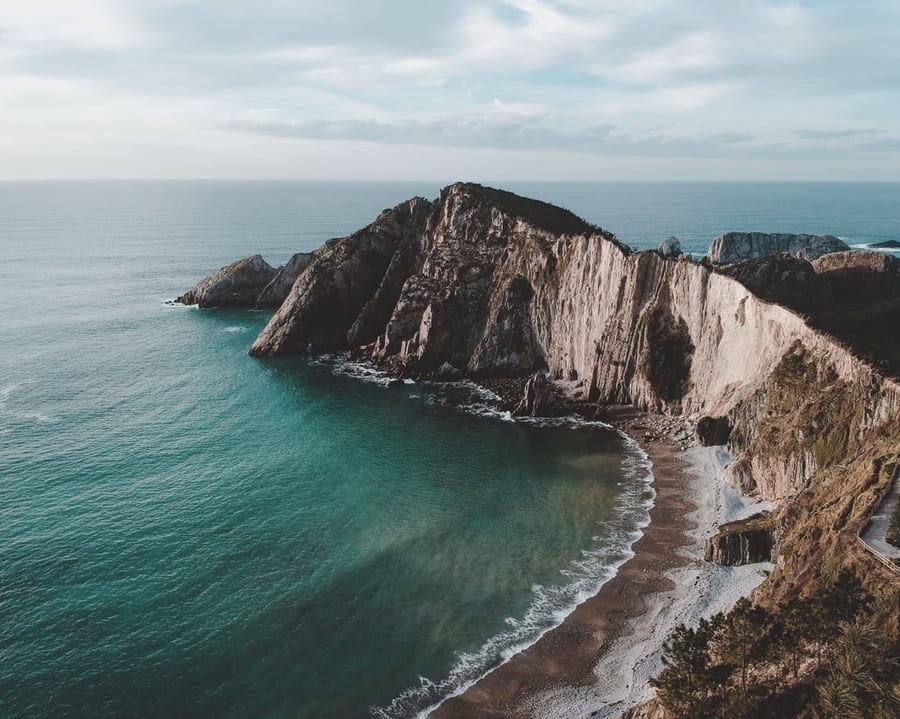
That said, the summer weather in northern Spain is more pleasant compared to other areas of the country, so this time of year can also be a good time to visit. You can take advantage of the summer temperatures to enjoy the best beaches in northern Spain .
If you planned on going to the north of Spain in the winter, you still can, although you should be aware that there will be much more precipitation. On the other hand, the prices for flights and hotels will be cheaper.
Main airports in northern Spain and other ways to get there
There are several airports in northern Spain , so you shouldn’t have trouble finding a good place to arrive in the country, regardless of your starting point.
In Galicia :
- A Coruña Airport
- Santiago-Rosalía de Castro Airport
- Vigo Airport
In Asturias :
- Asturias Airport
In Cantabria :
- Santander Airport
In the Basque Country :
- Bilbao Airport
- San Sebastián Airport
- Vitoria Airport
To find the best flight deals to the north of Spain , I recommend using Kiwi and Skyscanner . We’ve had the best luck finding cheap flights with Kiwi, and you can even activate price-drop alerts and keep track of the flights that interest you.
How to get around the north of Spain
The easiest way to get around during your northern Spain road trip is by renting a car. We have a complete guide on how to rent a cheap car , although I’ll tell you now that we always use DiscoverCars since they offer the best prices.
Of course, if you don’t want to drive, you won’t have any problems getting around since there are all kinds of tours in northern Spain . You can also get to different towns by train or bus, and I recommend checking Omio and Flixbus for discounted tickets .
Other tips for your road trip through northern Spain
If you’ve decided to take a road trip through northern Spain by car, make sure you calculate the driving times in advance so you can plan your route as accurately as possible. This is particularly important if you’re visiting two towns in one day since you’ll want to spend half the day in one town, then head to the other town and spend the night there.
Remember, there are many beautiful places in northern Spain , and the cities I mentioned are just my recommendations. Feel free to add or replace any attractions that don’t fit your schedule or interests. It’s also important to consider the weather, especially if you’re traveling in the winter. You may need snow tires or chains for the car depending on which area you go to.
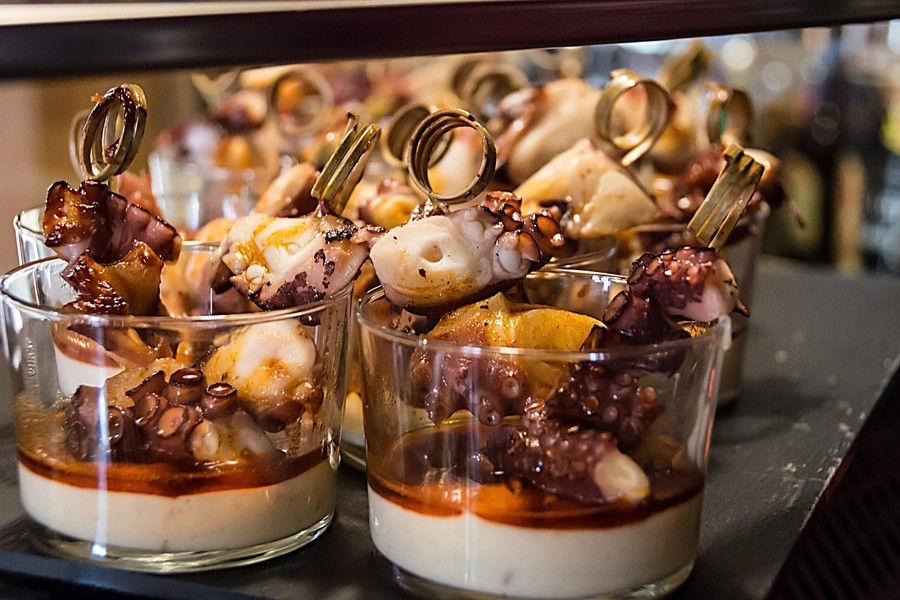
Always keep water and some food with you in the car and try to keep your cell phone charged so you can make emergency calls or locate the nearest gas station.
Finally, if you want to enjoy the best food in northern Spain , try to avoid the more touristy areas. When in doubt, ask the locals and they’ll give you some great restaurant suggestions.
That’s it for this guide to the north of Spain ! I hope you feel better prepared to organize your northern Spain itinerary , and that you have the best time exploring this gorgeous part of the country.
If you have any questions, or if you want to share your favorite destinations in northern Spain , leave me a comment below. I’d love to hear from you. Have a fantastic trip!
Don't miss a 5% discount on your HeyMondo travel insurance
and the only one that pays all your medical bills upfront for you!
Ascen Aynat
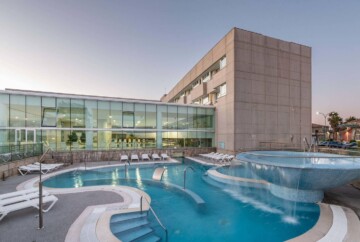
Leave a Reply Cancel reply
Your email address will not be published. Required fields are marked *
This site is protected by reCAPTCHA and the Google Privacy Policy and Terms of Service apply.


Touropia Travel
Discover the World
10 Most Amazing Destinations in Northern Spain
By Carl Austin · Last updated on February 5, 2024
A good many travelers to Spain start their visit to this Iberian Peninsula country in Madrid. Then they’re likely to head south where the climate is more temperate to see historic Moorish castles or east to Barcelona or Valencia.
They don’t realize what they’re missing by ignoring northern Spain . Well-preserved medieval villages, picturesque wine regions, the beautiful Bay of Biscay coastline, Basque country and more are just waiting to be explored.
10. Picos de Europa National Park [SEE MAP]
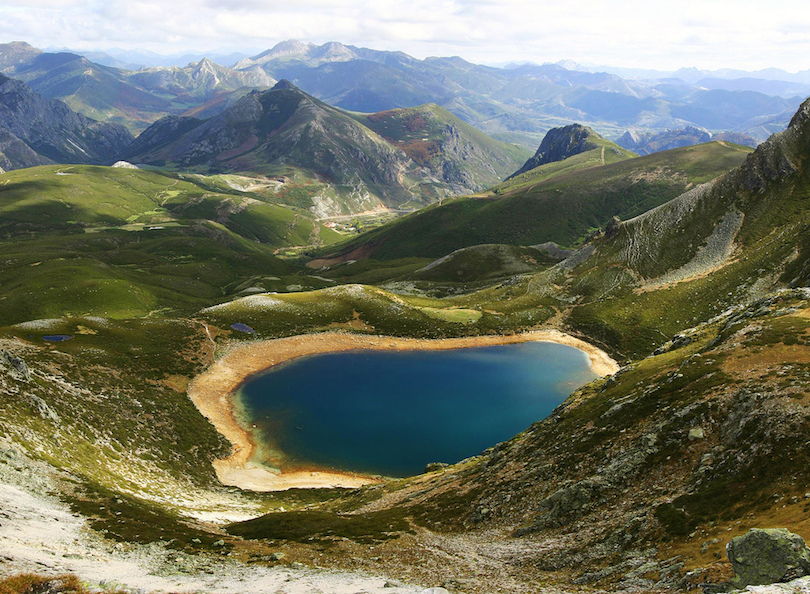
Picos de Europa National Park is Spain’s first national park, founded in 1918 when it was known as Montana de Covadonga National Park; its name was changed in 1995. The park’s high mountains and deep ravines appeal to hikers, who need to be alert for deep fog banks.
Snow is possible year ‘round. This biosphere reserve also boasts forests, oak groves and four rivers. Non-hikers may want to ride the Fuentede cable car that reaches more than a mile above sea level, providing stunning views of the park.
9. Santander [SEE MAP]

The beaches of Santander are the main attractions of this port city on the Bay of Biscay. With its wide stretch of golden sand, the long curving arc of the Playa el Sardinero is one of the most beautiful beaches in Northern Spain. Approaching the beach through the pathways of the beautiful Piquio Gardens enhances the experience.
Although Santander is an ancient city, much of the old quarter was destroyed by a fire in 1941. Since then, the Municipal Museum of Arts has been revamped to include local contemporary Cantabrian artists as well as old masters like Goya.
8. Rioja Wine Region [SEE MAP]
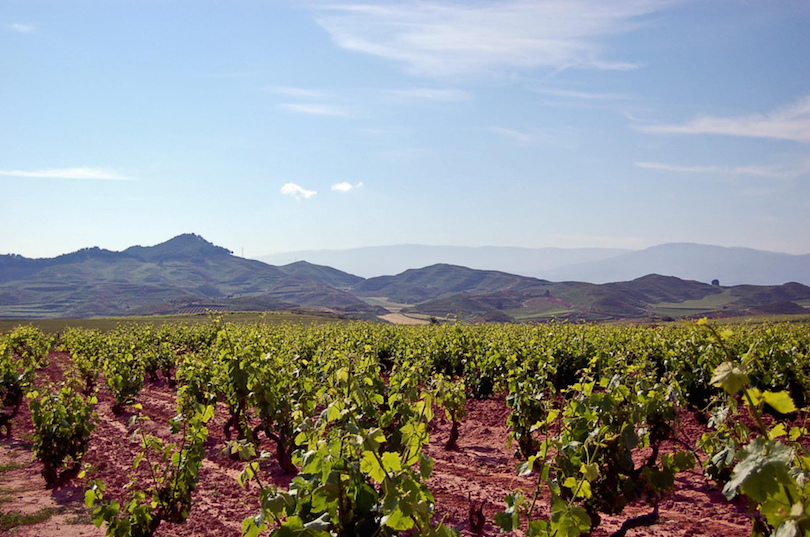
Travelers who enjoy their vino will definitely enjoy a visit to La Rioja Wine Region, home to more than 500 wineries. What makes these vineyards so unique is that some wineries allow horseback and all-terrain vehicle riding within the vineyards.
In addition to sampling their wines, some wineries offer classes on how to become a winemaker. With vineyards dotting the hills of northern Spain, vintners have perfected the art of making world-famous wines; after all, they’ve been doing it for more than a thousand years. The main wine regions are Rio Baja, Rio Alta and Rio Alavesa.
7. Oviedo [SEE MAP]
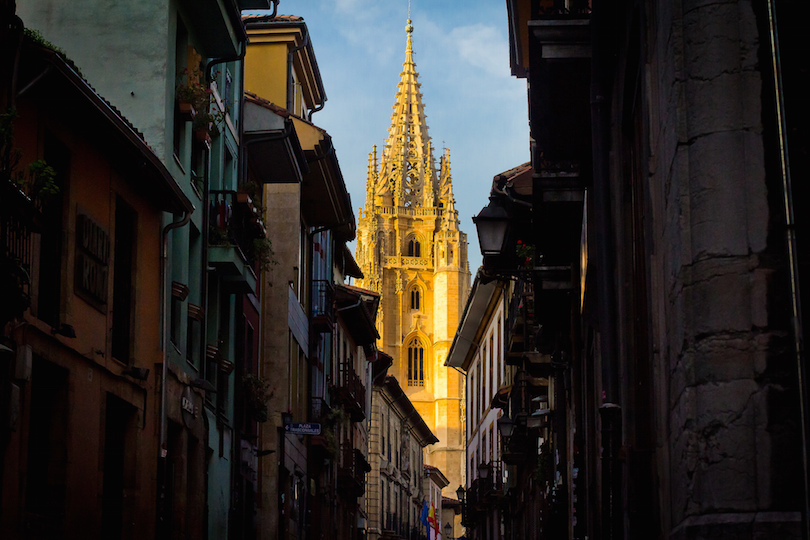
Oviedo, the capital of Asturias province, is well known for its religious monuments. Also a stop on the Pilgrims Road to Santiago, Oviedo has churches that date back to the eighth century, including the Cathedral of San Salvador and the well-preserved Basilica of San Julian de los Prados.
Another top architectural draw is La Foncalada, a ninth century pre-Romanesque fountain. Movie trivia fans may be interested to know Oviedo was featured in Woody Allen’s Vicky Cristina Barcelona.
6. Bilbao [SEE MAP]
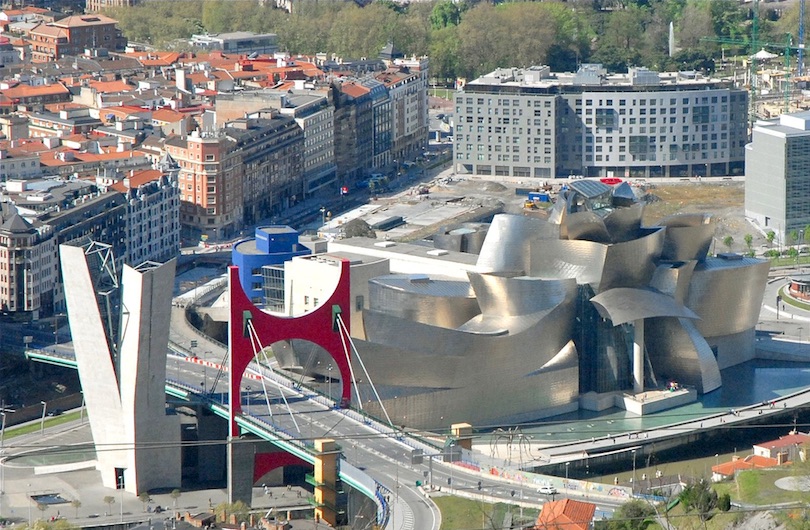
Once known primarily as an industrial port city, Bilbao has reinvented herself as a center for modern art and architecture. Set amidst the rolling green hills of Basque country, Bilbao is home to the Guggenheim Bilbao Museum, a gleaming, modernistic structure clad in titanium designed by famed architect Frank Gehry.
Bilbao’s historic architecture is a stunner as well, featuring many beautiful buildings like the 14th century Gothic Cathedral of Santiago and the Basilica de Begoña.
5. Gaztelugatxe [SEE MAP]
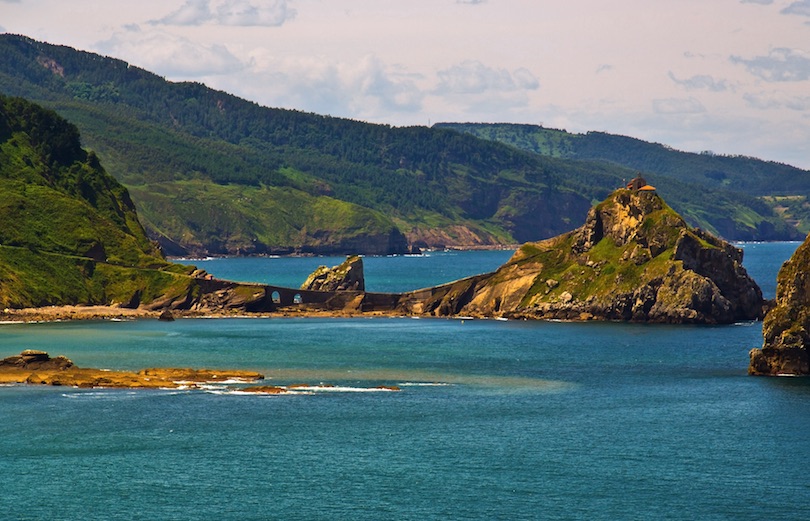
Gaztelugatxe is a small peninsular island in the Bay of Biscay that resembles a castle; in fact, its name translates as “castle rock.” It is accessible from land via a footbridge over the rocks. A small chapel dedicated to San Juan (St. John) sits atop the island.
The top of Gaztelugatxe is reachable by climbing 231 steps up a rocky slope. Past visitors recommend taking the steps slowly as rushing can be a pain; but, they say, the breathtaking views are well worth the exertion.
4. Pamplona [SEE MAP]
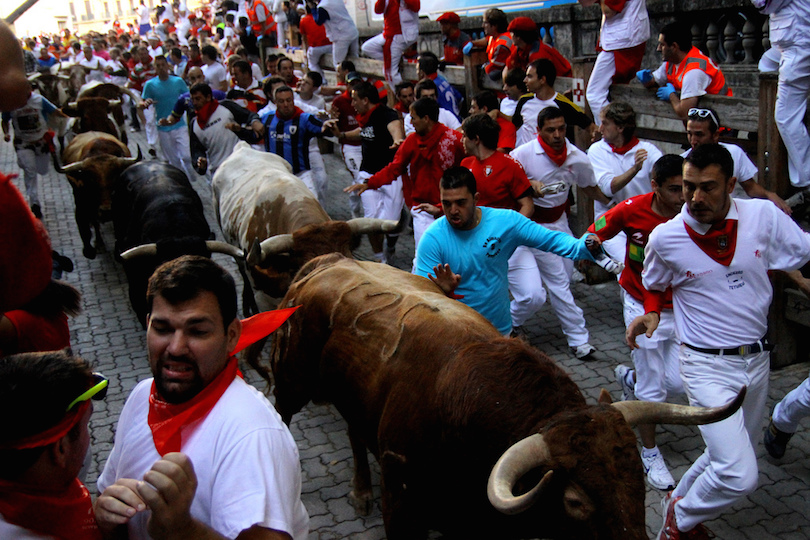
Pamplona is an historic city that once served as the capital of the Kingdom of Navarre. It is better known today for its annual San Fermin festival in which fearless souls try to outrun a herd of bulls through city streets; the festival takes place over six days in July.
Bullfighting is another popular activity here, with the city having the fourth largest bullring in the world. Pamplona also is the first city on the Camino de Santiago or Pilgrims Road to Santiago. Its many parks and historic buildings are just made for strollers.
3. Santiago de Compostela [SEE MAP]
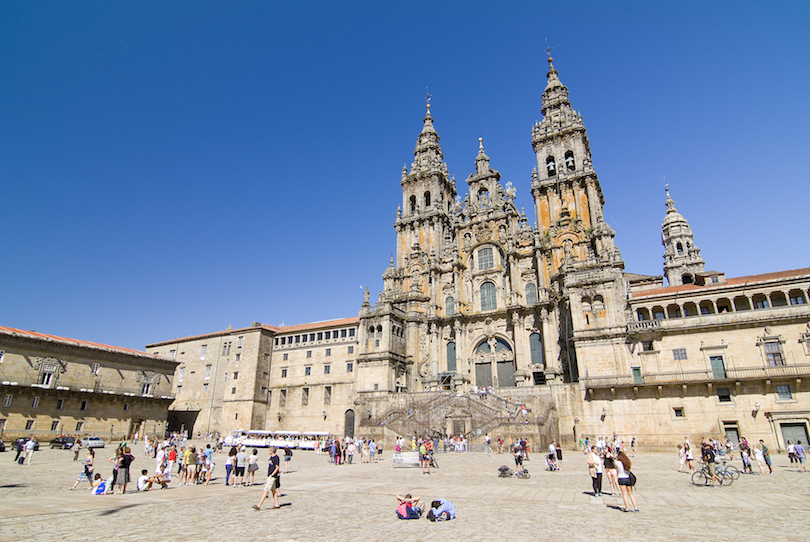
The capital city of Galicia, Santiago de Compostela is famous as the final destination of the traditional pilgrimage known as Camino de Santiago. Also called the Way of St. James, this pilgrimage dates back to Medieval times and is important to many because it is believed that Santiago de Compostela is where St. James, an Apostle of Jesus Christ, is buried.
The arriving point for most pilgrims is the main square. Situated in the heart of the city, this bustling plaza is the scene of many important landmarks, particularly the Santiago Cathedral where the tomb of St. James is located.
2. Santillana del Mar [SEE MAP]
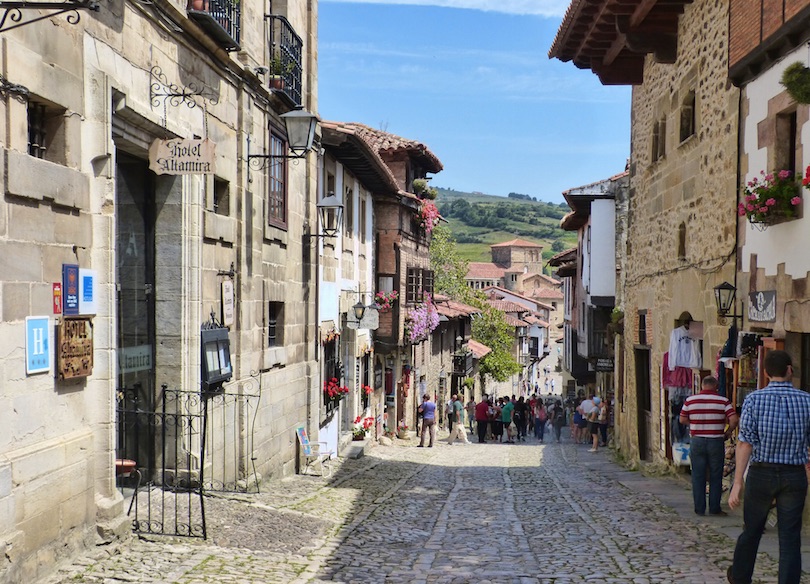
Comfortable shoes are a must for visitors to Santillana del Mar, a perfectly preserved medieval village that is limited to foot traffic. Located on Spain’s west coast, this Cantabrian treasure is less than 30 km (20 miles) from Santander and near the Caves of Altamira that are famous for its prehistoric paintings.
There is an old saying that Santillana del Mar is The Town of Three Lies, since it is neither a Saint (Santo), nor flat (llana), nor is it by the sea (Mar). However, the town actually takes its name from Santa Juliana who is buried here in the Colegata, the most famous church in Cantabria . Another top attraction is the Museum of the Inquisition with its instruments of torture.
1. San Sebastian [SEE MAP]
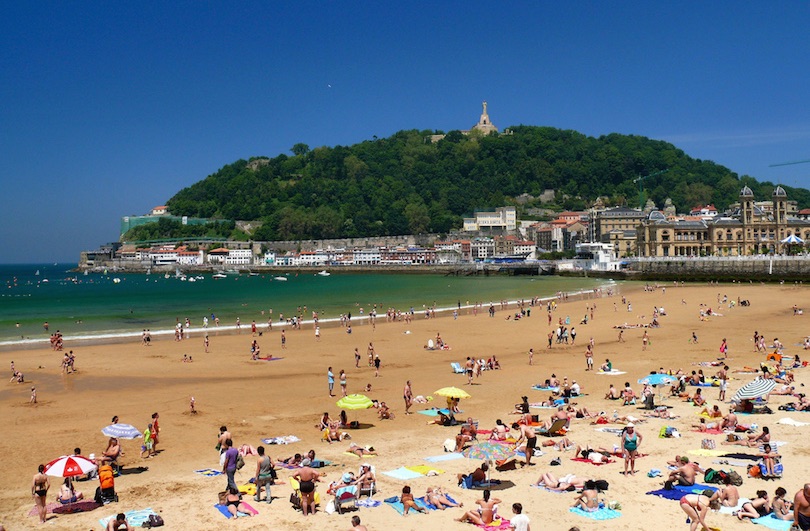
Found in Basque country, just 19 km (12 miles) from France, this popular beach resort is surrounded by hills that add to its beauty. San Sebastián’s most famous attraction is La Concha, one of the world’s best urban beaches. Parte Vieja or Old Town has many bars, making it popular with partiers.
Most buildings date from the 19th century, since San Sebastián was destroyed by the English and Portuguese in 1813. The city is well known for its July jazz festival, the oldest in Europe, as well as other festivals and cultural events throughout the year.
Map of Northern Spain
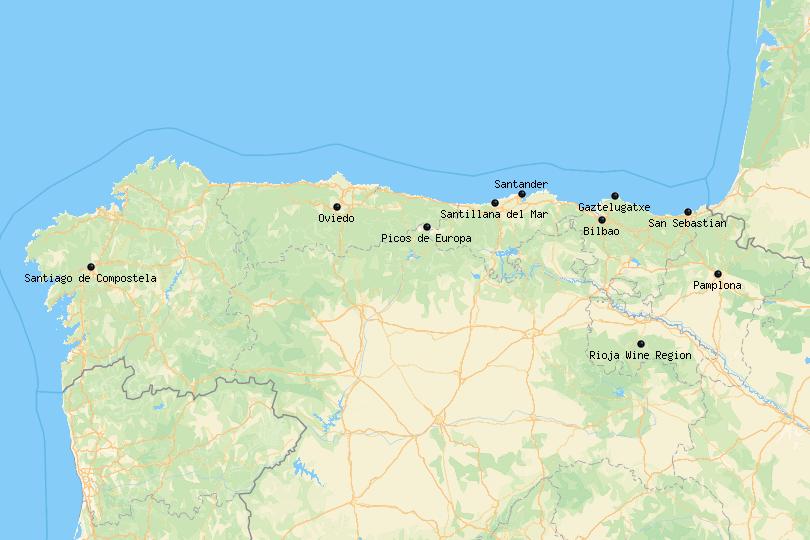
Share this post:
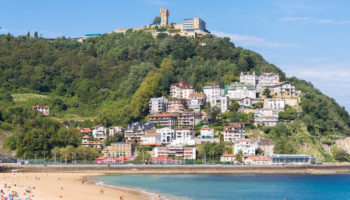
19 Top Tourist Attractions in San Sebastian, Spain
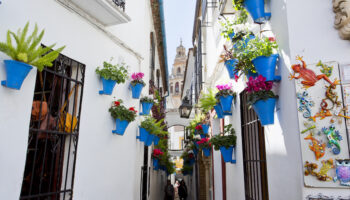
19 Top Tourist Attractions in Cordoba, Spain
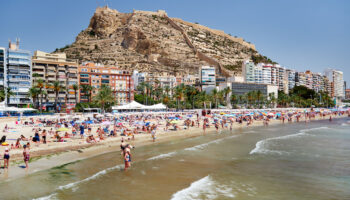
18 Best Things to do in Alicante, Spain
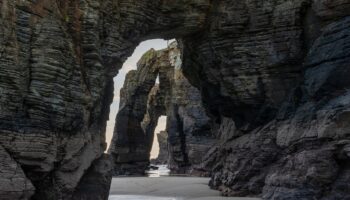
12 Best Places to Visit in Galicia, Spain
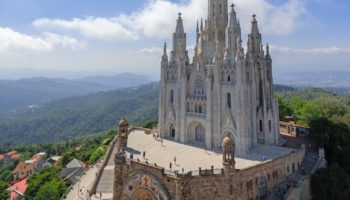
14 Most Amazing Churches in Spain
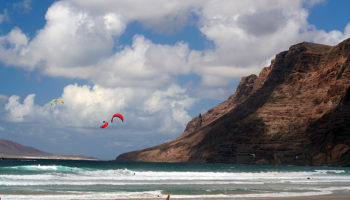
10 Best Beaches in the Canary Islands
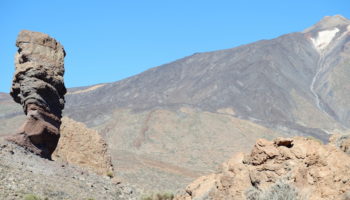
12 Most Beautiful National Parks in Spain
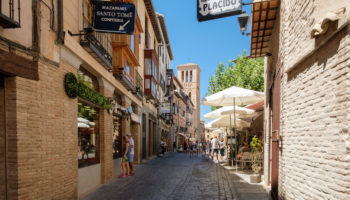
15 Best Things to do in Toledo, Spain
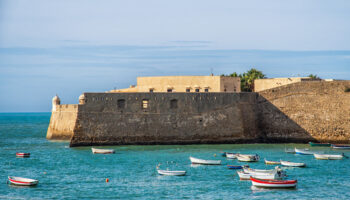
17 Best Things to do in Cadiz, Spain
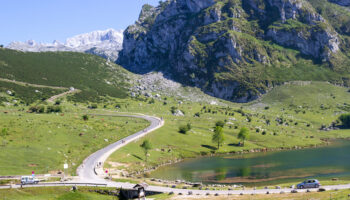
12 Best Things to do in Asturias, Spain
Reader interactions.
May 9, 2017 at 7:09 am
Elizabeth, I suggest visiting the coast between Suances and Ribadesella for their beaches and cute cliffs. For a virtual visit use the coastal blue spots of the standard Goo.. map of North Spain. Also, within a few miles, for culture, visit Comillas, Santillana de Mar, Altamira, Picos de Europa from Potes, Covadonga and Cangas de Onis. A bit further, the cities of Gijon, Oviedo and Santander. Always check the weather forecast for good weather, it is humid otherwise. Enjoy.
August 11, 2016 at 5:24 pm
Where’s the best place in Northern Spain to go with my seven year old daughter in August that won’t be too touristy, some beach, some cultural/historical beauty, but relaxing and off the beaten path?
July 10, 2016 at 7:33 pm
Hola. Wife and I went to Madrid, then down to Toledo, Seville, Granada, Valencia, then back to Madrid. From Madrid came back home to LA. The idea, next, if possible, definitely we are visiting northern Spain.
April 27, 2015 at 11:29 pm
Rioja Wine Region is definitely on my list of places to visit – obviously! 😀 And lately I’ve been looking into Santiago de Compostela a fair bit as well.
Leave a Reply Cancel reply
Your email address will not be published. Required fields are marked *
This site uses Akismet to reduce spam. Learn how your comment data is processed .

20 Best Places to Visit in Northern Spain
Written by Lisa Alexander Updated Nov 26, 2021 We may earn a commission from affiliate links ( )
Northern Spain extends from the Mediterranean Sea to the Atlantic Ocean, bounded by the Pyrenees Mountains at the border with France. With its diverse landscapes and distinct provinces, this beautiful area of Spain offers something for every type of traveler.
The energetic, culture-packed city of Barcelona has fabulous art museums and fantastic architecture. San Sebastián is an elegant beach resort with a quaint Old Town and an outstanding restaurant scene. The ultimate destination of the medieval Way of Saint James pilgrimage, Santiago de Compostela immerses visitors in the spiritual ambience that has animated the city for a millennia.
Besides Barcelona's Gaudí monuments and Santiago de Compostela's historic center, other UNESCO World Heritage sites are scattered throughout northern Spain, including a breathtaking cathedral in Burgos , the Roman ruins of Tarragona , pre-Romanesque churches near Oviedo, and the Ordesa and Monte Perdido Natural Park in the Huesca province.
Travelers searching for a soul-inspiring experience should take a journey to the remote Monastery of Montserrat . For picturesque fishing villages and coastal scenery, the Costa Brava in Catalonia is sure to impress. Thrill-seekers flock to Pamplona for its annual Running of the Bulls event, but the town itself is an interesting place to visit any time of year, and the nearby Navarra countryside has wonderful hiking trails.
Plan your Spanish sightseeing itinerary with our list of the best places to visit in Northern Spain.
1. Barcelona
2. san sebastián & hondarribia, 3. santiago de compostela, 4. seaside resorts on the costa brava, 6. pamplona, 7. tarragona, 11. zaragoza, 12. monastery of montserrat, 13. santander, 15. heusca province, 16. ponferrada, 17. la coruña & rías altas villages, 18. santillana del mar, 19. picos de europa natural park, 20. la rioja region, map of places to visit in northern spain.
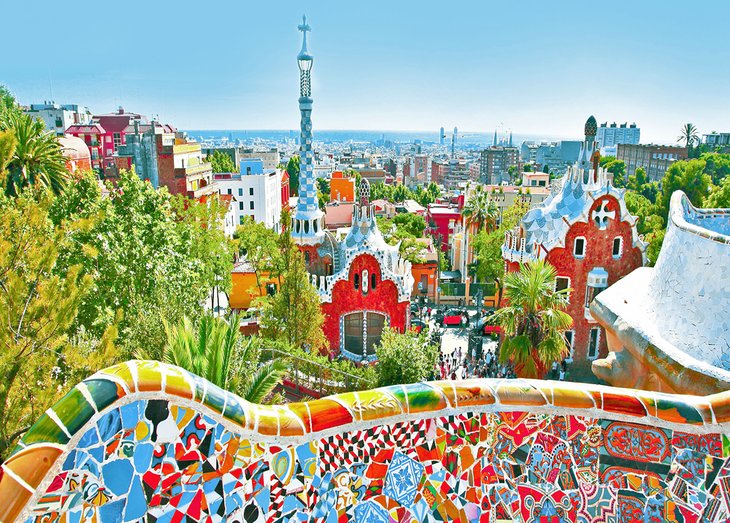
The sparkling crown jewel of Catalonia , the region's vibrant capital boasts an alluring seaside setting, fabulous Modernist architecture, and a delightful medieval quarter.
Visitors can soak up the city's ambience by strolling the bustling La Rambla boulevard, stopping at the colorful La Boqueria covered marketplace, getting lost in the narrow pedestrian streets of the Barri Gòtic , admiring the whimsical Gaudí monuments, and basking in the sun on sandy beaches.
Must-see tourist attractions include the Basílica de la Sagrada Família , created by Antoni Gaudí in his signature surrealistic style; the Picasso Museum in the Gothic Quarter ; the Casa Milà and the Casa Batlló , UNESCO-listed buildings designed by Gaudí; and the Parc Güell , with its splendid landscaping and sweeping city vistas.
Barcelona is also well known for its gastronomy. Near the Casa Batlló is Moments restaurant , an award-winning fine-dining establishment within the Mandarin Oriental, Barcelona that has earned two Michelin stars and specializes in contemporary Catalan cuisine.
Within walking distance of the Museu Nacional d'Art de Catalunya in Montjuic is a gourmet destination run by renowned chef Albert Adrià. This trendy restaurant serves tasting menus in an intimate dining room that channels a fantastical modern speakeasy.
The surroundings of Barcelona appeal to travelers in search of a beautiful coastline, cute fishing villages, and culture-rich medieval towns. Popular day trips from Barcelona are the majestic hilltop Montserrat Monastery , the seaside resort of Sitges , and the Costa Brava beaches.
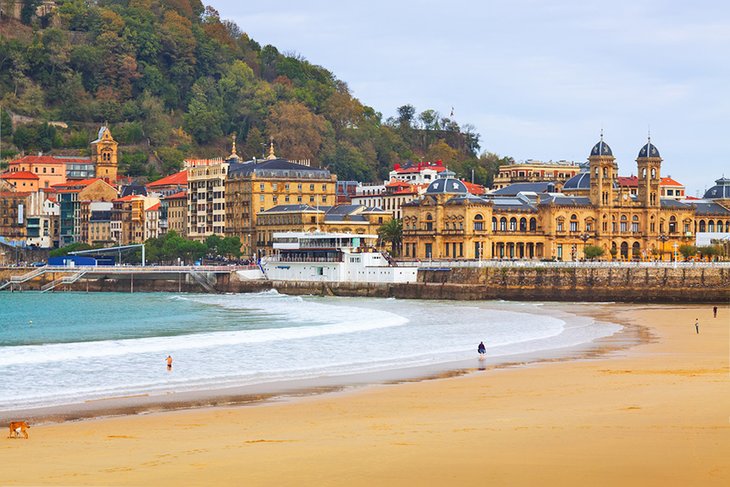
One of Spain's most stylish beach resorts, San Sebastián dazzles visitors with its dreamy natural scenery and refined urban elegance.
The town is ensconced along the Bahía de la Concha, a crescent-shaped bay that encloses a sheltered sandy beach, called La Perla . A spacious pedestrian promenade invites seaside strolls, while many shops and restaurants are found on the Alameda del Boulevard just steps away from the beach.
Among the highlights of San Sebastián are the 12th-century Castillo de la Mota on Monte Urgull, the Museo San Telmo (fine arts museum), and the Parte Vieja (Old Town), where locals and tourists enjoy wandering the cobblestone streets in search of authentic pintxo s (Basque tapas) restaurants. San Sebastián is well known for its superb gastronomy.
For exceptional meals and stunning sea views, the Mirador de Ulía is a wonderful choice. This Michelin-starred restaurant serves traditional Basque cuisine, as well as vegetarian and vegan menus prepared from seasonal ingredients.
A worthwhile detour (about 20 kilometers from San Sebastián) is the Basque filling village of Hondarribia , which has a walled medieval Old Town and an expansive beach that is popular during summertime.
Renowned for its cuisine, Hondarribia is brimming with excellent restaurants helmed by top chefs, and authentic pintxos bars that serve Basque tapas. (Most of the restaurants and pintxos bars are found in the seaside Marina neighborhood.)
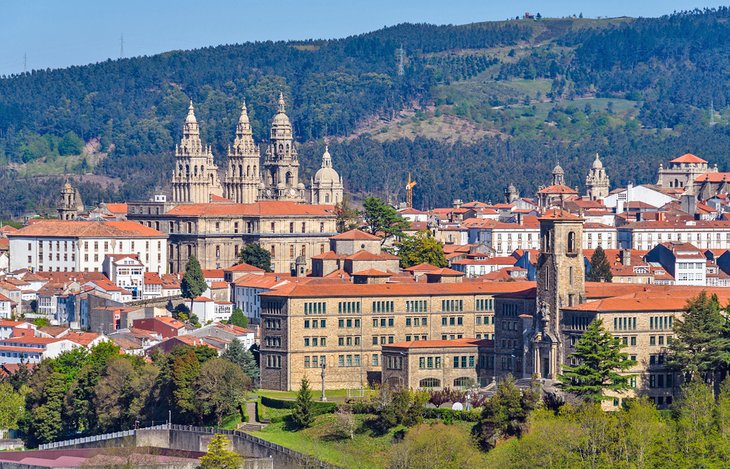
During the 11th and 12th centuries, Santiago de Compostela was Europe's most important pilgrimage destination. The faithful endured long, treacherous journeys by foot, from France, Spain, Portugal, and other European countries, to arrive at the hallowed Catedral de Santiago .
The Cathedral of Santiago de Compostela contains the Crypt of Saint James , the venerated tomb that is the ultimate pilgrimage object and explains why the pilgrimage routes are called the "Way of Saint James." Modern-day pilgrims still embark on the Camino de Santiago , following the medieval pilgrimage routes.
A marvelous example of early Romanesque architecture, the Cathedral of Santiago de Compostela is Spain's most important Christian monument. The ornate exterior blends the original 12th-century sculpted doorway with lavish Baroque twin towers, while the grandiose sanctuary offers a sense of serenity.
In the late 15th century, the Catholic Monarchs created the Hostal de los Reyes Católicos to provide lodging for pilgrims. Today, this gorgeous Gothic Plateresque building still welcomes overnight guests as the Parador Santiago de Compostela , considered to be the world's oldest hotel. This luxurious five-star hotel has magnificent reception halls, sumptuous guest rooms decorated in traditional style, and two restaurants that specialize in the cuisine of Galicia.
Other must-see attractions of Santiago de Compostela include the Old Town ( Casco Antiguo ) of Santiago de Compostela, around the Plaza del Obradoiro and the Hostal de Los Reyes Católicos. Designated as a UNESCO World Heritage Site , this pedestrianized area is an appealing jumble of narrow medieval streets, historic churches, and monasteries.
Santiago de Compostela is located in the Galicia region and is a good starting point to discover northern Spain's west coast, including La Coruña, Ferrol, and Cedeira.
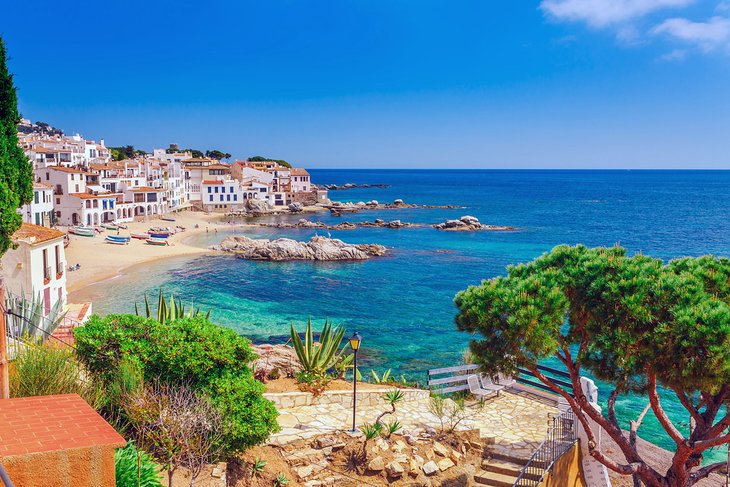
Rated as one of Spain's top beach destinations , the Costa Brava is a delightful stretch of coastline characterized by its rugged natural beauty and charming coastal villages. The Costa Brava extends along a hilly landscape for over 200 kilometers from Blanes to the border between Catalonia and France. Alongside the Mediterranean Sea, secluded golden-sand beaches are surrounded by cliffs and tucked into coves.
Popular beach resorts are found in Blanes , a historic town with expansive beaches; Tossa de Mar , a walled medieval town; Lloret de Mar , which has elegant gardens and pristine waters; and Santa Susanna prized for its wide sandy beaches backed by groves of fragrant pine trees.
Cadaqués is a quaint fishing village nestled on the Cadaqués Bay of the Cap de Creus (peninsula), a rocky coastline with sheer cliffs and peaceful coves. This historic whitewashed town attracted famous painters during the 20th century. Several art galleries and museums attest to the town's artistic heritage.
One of the houses in the Old Town of Cadaqués was the home of Salvador Dalí and is now the Salvador Dalí House - Portlligat Museum . Fans of Salvador Dali and surrealist art should also visit the Dalí Theatre-Museum in Figueres and the Gala Dalí Castle in Púbol .
Calella de Palafrugell has retained the feel of a small fishing village even though its sandy beaches get very crowded during summertime. Tourists also adore the old-world charm of the perched town of Begur overlooking the sea and L'Escala , which has an atmospheric historic quarter and Greek ruins from the 2nd-century BC at the Empúries archaeological site.
Water sports enthusiasts find plenty of things to do on the Costa Brava, from snorkeling to sailing and windsurfing. The uninhabited nature preserve of the Medes Islands (boat ride from L'Estartit) is a great place for snorkeling and scuba diving.
Perched on the Punta d'es Muts cliffs, a supremely picturesque spot on the Costa Brava, the Parador de Aiguablava (46 kilometers from Girona) affords panoramic vistas of the coastline and the Aiguablava Beach, where azure waters lap up against golden sandy shores. This contemporary-style resort hotel has an outdoor terrace, swimming pool, sauna, fitness center, and beachside restaurant that serves traditional cuisine of the region.
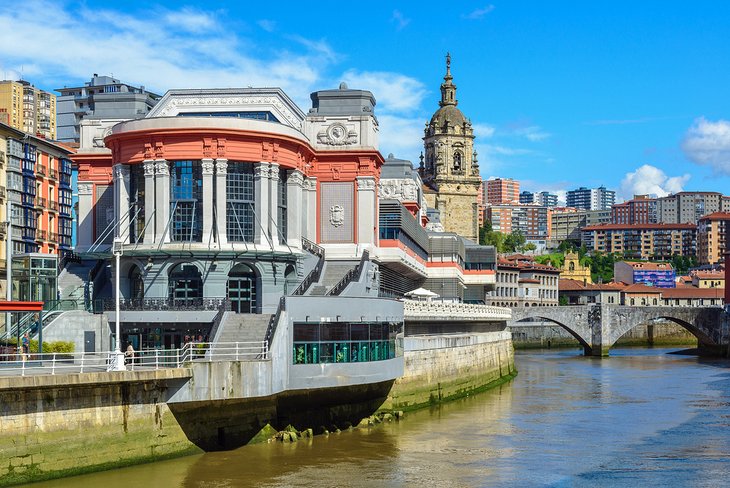
The spectacular modern architecture and avant-garde art of the Guggenheim Museum draw many visitors to Bilbao. This world-class museum was designed by the famous architect Frank Gehry. Masterpieces of modern and contemporary paintings and sculptures are presented in twenty galleries covering 24,000 square meters of exhibition space.
To learn about the art from an official guide, tourists can take a Guggenheim Bilbao Museum Private Tour , which covers many of the collection's highlights.
Another must-see museum among the top attractions of Bilbao is the Museo de Bellas Artes de Bilbao (Museum of Fine Arts), which displays a collection of European paintings from the 14th to 17th centuries. The Spanish Old Masters are well represented, including El Greco, Zurbarán, and Velázquez. There is also an assortment of paintings by Francisco de Goya.
Besides art and architecture, Bibao is renowned for its gastronomy. The city boasts six Michelin-starred restaurants, including Nerua at the Guggenheim Museum. For more casual and convivial dining, traditional pintxos (tapas) restaurants are the best choice.
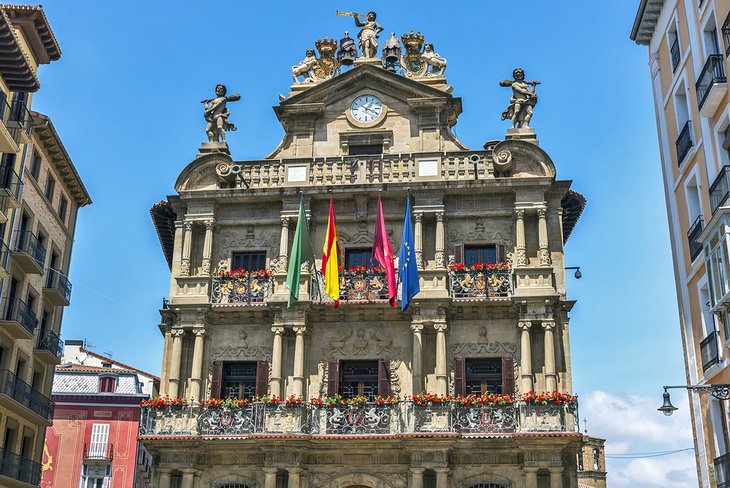
Pamplona owes its fame to the religious festival in July, the Fiesta de San Fermín , devoted to the patron saint of the Navarra province, San Fermín. Although the Fiesta de San Fermin begins with a Catholic Mass at the Chapel of San Fermín and includes a traditional procession, it is the Running of the Bulls (El Encierro) event during the festival that really put Pamplona on the tourist map. The legendary event draws thrill-seeking visitors from all over the world.
For those who want to watch the Running of the Bulls from the safe space of a private balcony, the five-star Gran Hotel La Perla is a perfect choice. Some of the hotel's exterior rooms overlook the Calle de la Estafeta, where a portion of the Running of the Bulls course takes place.
When the festival crowds leave town, it's worth exploring the attractions of Pamplona , especially the Casco Viejo . Partially enclosed by medieval ramparts, this warren of narrow cobblestone streets and elegant squares is brimming with historic monuments: the Gothic and Neoclassical cathedral ; the 16th-century citadel built by King Felipe II; the Plaza del Castillo , where locals hang out at sidewalk cafés; and the opulent Baroque town hall .
Outside Pamplona, the Navarra countryside is a paradise for nature lovers. The Parque Natural Urbasa-Andía (70 kilometers from Pamplona) is a lush mountainous terrain with scenic hiking trails.
Worthwhile detours in the Pamplona surroundings include the Museo Oteiza in the idyllic pastoral landscape of Alzuza (10 kilometers from Pamplona) and the 11th-century Monasterio de Leyre (50 kilometers from Pamplona), which holds church services, including Gregorian chants, and also has a small hotel, the two-star Hotel Hospedería de Leyre , with a traditional Spanish restaurant.
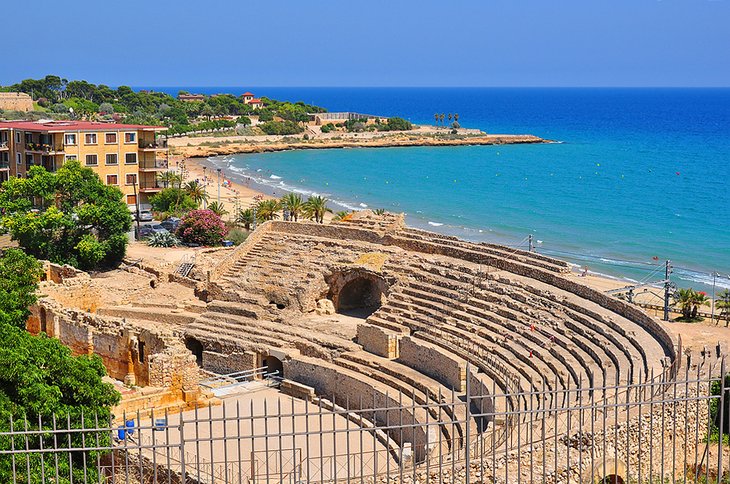
The sun-soaked seaside city of Tarragona seems to have it all: stunning coastal scenery, alluring old-world ambience, and fascinating historic monuments.
The setting couldn't get much better than Tarragona's, along the Catalonian Costa Dorada (the Golden Coast), named for its fine sandy beaches. Playa El Milagro is a lovely beach within easy walking distance of the historic center of town.
Tarragona has been designated as a UNESCO World Heritage Site , because of its archaeological structures. Modern-day Tarragona was built above remains of the Roman-era city of Tárraco. The Roman ruins reveal an ancient town that was well planned, with a port, forum, theater, aqueduct, and defensive fortifications.
The most impressive site is the 2nd-century AD Roman amphitheater that overlooks the Mediterranean. Built during the reign of Emperor Augustus, this enormous stadium was designed to seat an audience of 12,000 spectators.
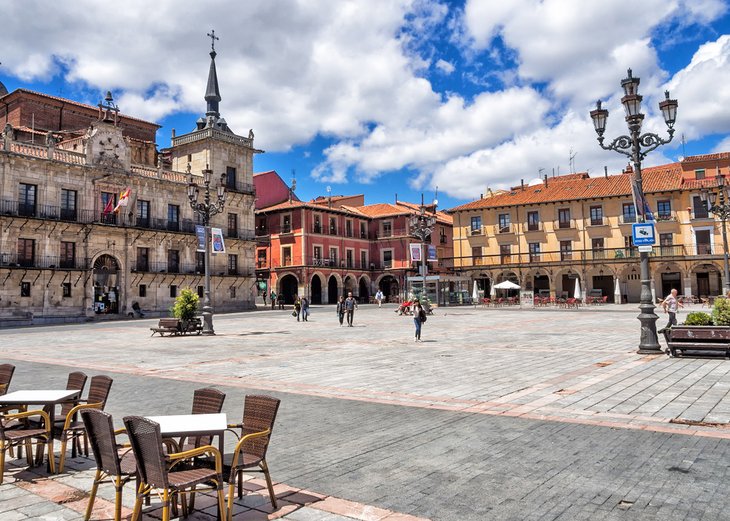
Remarkable historic monuments distinguish León , which displays its impressive heritage through architectural masterpieces such as a 10th-century Romanesque church, an Early Gothic cathedral, and a Spanish Plateresque monastery. In addition to the amazing landmarks, the charming Old Town ( Casco Antiguo ) and several top-notch museums provide enough cultural attractions to keep visitors busy.
For atmospheric dining, locals and tourists alike head to the Plaza Mayor (public square). Enclosed by 17th-century Baroque buildings, this elegant square is the center of the city and a hub of social activity. Within the square's arcaded buildings are several restaurants, many of which have terraces that spill out onto the sunny square.
The Plaza Mayor hosts a traditional, open-air farmers market on Wednesday and Saturday mornings.
Within a short walk from the Plaza Mayor is the Palacio del Conde Luna , a 14th-century Gothic-Mudéjar palace that was the residence of the valiant Count Luna. The palace served as a court during the Spanish Inquisition. Today, the Palacio del Conde Luna is a museum that presents exhibits of León's history.
A truly special place to spend the night is at the luxurious Parador de León . This five-star hotel occupies the 16th-century Convento de San Marcos , considered a gem of Spanish Plateresque style and one of the most important Renaissance monuments in Spain.
Since the 12th century, this convent has welcomed pilgrims on the way to Santiago de Compostela. However, the original building was reconstructed in the 16th century by the Catholic Monarchs. Hotel amenities include a concierge, garden, sun terrace, and a gastronomic restaurant that specializes in traditional cuisine of the Castile-León region.
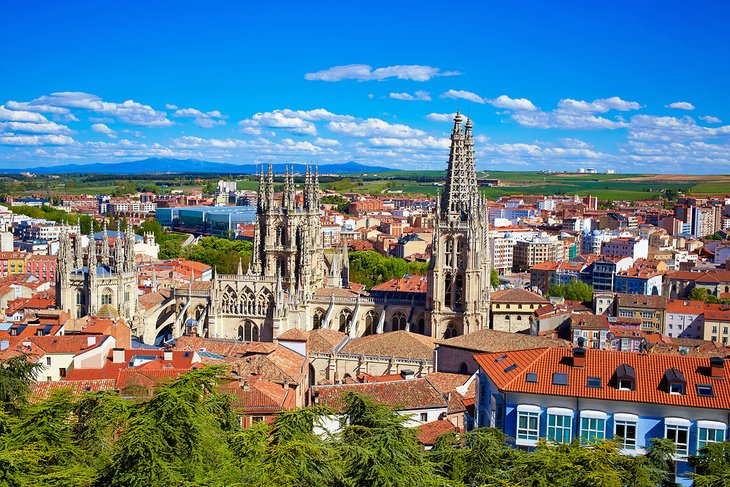
Spanish Gothic architecture finds perfect expression in the magnificent Catedral de Burgos . This soaring UNESCO-listed monument features an extravagantly decorated twin-towered exterior and an immense interior of breathtaking proportions, which makes it the third-largest church in Spain after the cathedral of Seville and Toledo.
Other must-see sights in Burgos include the ancient hilltop Castillo (castle) and the Monasterio de las Huelgas , an austere 12th-century Cistercian monastery built in the Mudéjar style and later converted to a Royal Pantheon.
Burgos has been welcoming visitors since the Middle Ages, when pilgrims stopped here on the Way of Saint James route to Santiago de Compostela. The town's legendary Christian heritage imbues the place with a special ambience, while historic buildings and cobblestone streets add to the old-world charm.
Along the riverbanks is a pleasant tree-shaded promenade, and nearby are many inviting restaurants.
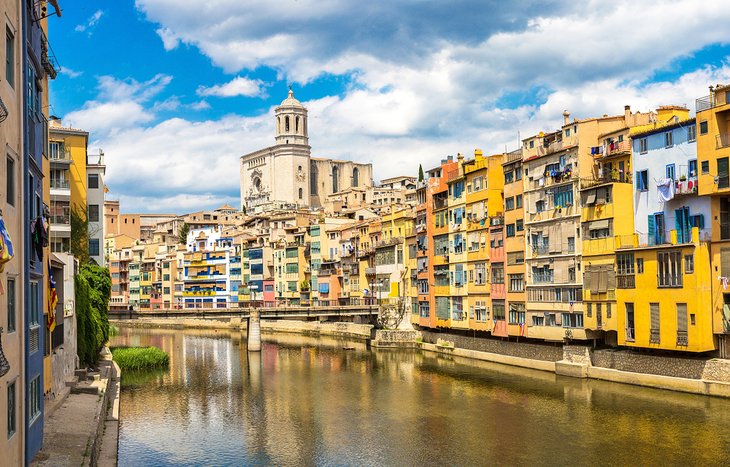
An enchanting medieval city in the Catalonia region, Girona packs an incredible wealth of attractions into the historic areas within its ancient walls. The Força Vella follows the outline of a Roman fortress dating to the 1st-century BC (portions of the ramparts are still visible), while the walled Medieval Quarter is a maze of narrow, winding pedestrian streets and hidden squares.
The rich multicultural heritage of Girona can be discovered through its remarkable monuments, including a Romanesque basilica, the Gothic convent of Sant Doménech , and 12th-century Arab Baths . Girona also has a well-preserved Jewish Quarter .
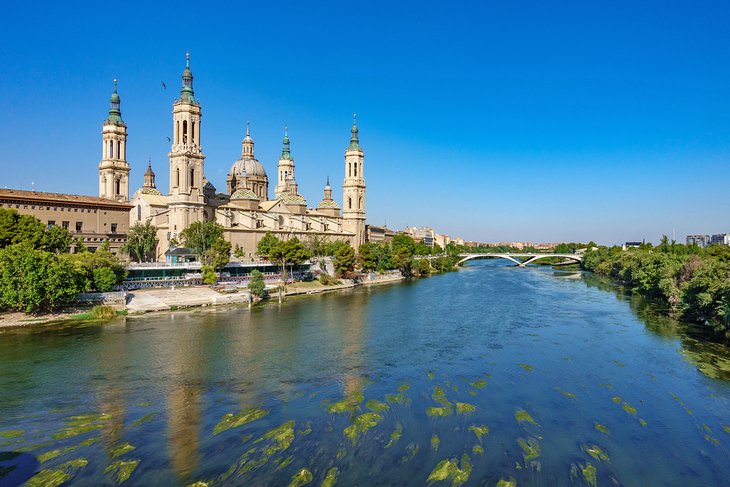
Steeped in two millennia of history, Zaragoza is the capital of the Aragon region and has a fascinating multicultural heritage. Splendid old monuments reveal the legacy of Roman, Moorish, Jewish, and Christian civilizations.
The remnants of ancient Roman walls are found in the city center, and two museums contain archaeological sites dating to the 1st century AD (including the Roman Theater and the Roman Forum ). Several historic churches exemplify Aragon Mudéjar architecture , influenced by the geometric details of Islamic design.
Presiding over the banks of the Ebro River, the Basílica de Nuestra Señora del Pilar is the city's most iconic landmark. This exuberant Baroque building was built in the 17th and 18th centuries. A noteworthy fresco by Goya titled Queen of Martyrs adorns the interior.
Zaragoza is also known for its cultural events and gastronomy. The local cuisine features hearty regional dishes such as pan-fried trout, huevos en salmorejo (baked eggs with sausage), and bacalao al ajoarriero (salted cod fish in tomato and garlic sauce).
The biggest festival, the Fiestas del Pilar , takes place in mid-October to celebrate the feast of the city's patron saint, the Virgin del Pilar. A mass is held on October 12th, and the festival continues for a week with music concerts, puppet shows, dance performances, fireworks, and a parade.
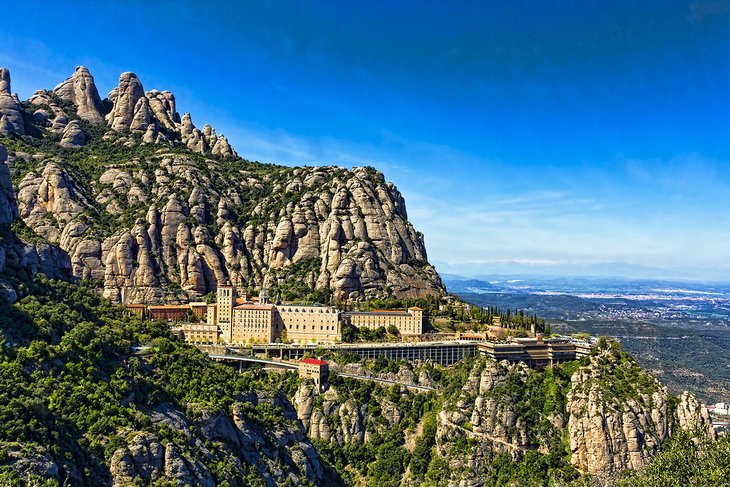
As early as the year 1025, Montserrat Mountain was the site of a little hermitage devoted to Santa Maria de Montserrat. Soon after it was founded, the monastery became associated with miracles. Faithful pilgrims have traveled here for a thousand years. The basilica's main object of adoration is the Romanesque Black Madonna ( Our Lady of Montserrat ), a 12th-century sculpture called La Moreneta.
The Monastery of Montserrat still functions as a working monastery (approximately 80 Benedictine monks live here) and continues to be an important pilgrimage site. The monastery's difficult-to-access location creates the sense of being a world apart. However, it is easy to get here thanks to a cable car (Aeri) that conveys visitors on a 1,350-meter journey to the top of the mountain.
As one of Catalonia's top tourist attractions, the Monastery of Montserrat is well prepared to welcome visitors. The monastery grounds include a basilica , a noteworthy art collection at the Museum of Montserrat , and several shops. Tourists will appreciate the meal options, including a food market that sells local products, two fine-dining restaurants , a casual cafeteria that offers buffet meals, and a picnic area .
For those who would like to spend the night at Montserrat, there is three-star lodging, the Hotel Abat Cisneros , and a budget-friendly hostel.
Listening to the Escolania boys' choir sing at the basilica (which occurs daily) is an essential experience at the Monastery of Montserrat. Visitors may also participate in prayer services (mass and vespers), which are held several times a day. One of the shops at Montserrat sells CDs of the choir's musical sessions.
Montserrat Mountain is a place of serenity and sublime natural beauty, protected as a natural park. Many scenic hiking trails begin at the monastery and offer spectacular panoramic views of the Catalonian countryside.
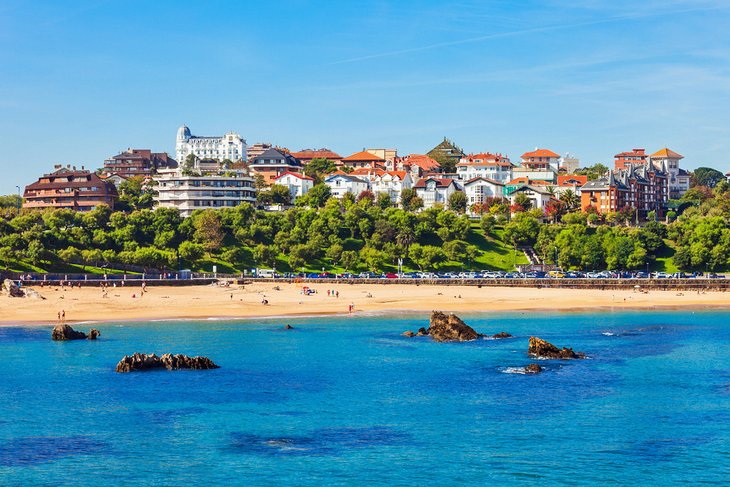
The sophisticated city of Santander nestles on a small peninsula between the Cantabrian Sea and a wide bay. This picturesque coastline is prized for its soft sandy shores and crystalline turquoise waters.
The city's main beach, the Playa del Sardinero , draws many vacationers during the sunny summer months. Another centrally located beach, the Playa del Magdelena has a shoreline of fine golden sand and an area for recreational sports.
Besides being a fun-loving holiday destination, Santander appeals to those who appreciate culture and history.
The Museo de Prehistoria y Arqueología has an exceptional archaeology collection, ranging from Paleolithic-era artifacts to Roman antiquities. Two other museums are dedicated to contemporary art: the Centro Botín and the Museo de Arte Moderno y Contemporáneo de Santander y Cantabria .
Santander's most beautiful architectural landmarks are the Palacio Real de la Magdelena (a royal palace built in 1911) and the medieval Catedral de Nuestra Señora de la Asunciónare . The cathedral features an exquisite 15th-century cloister and a somber 13th-century crypt.
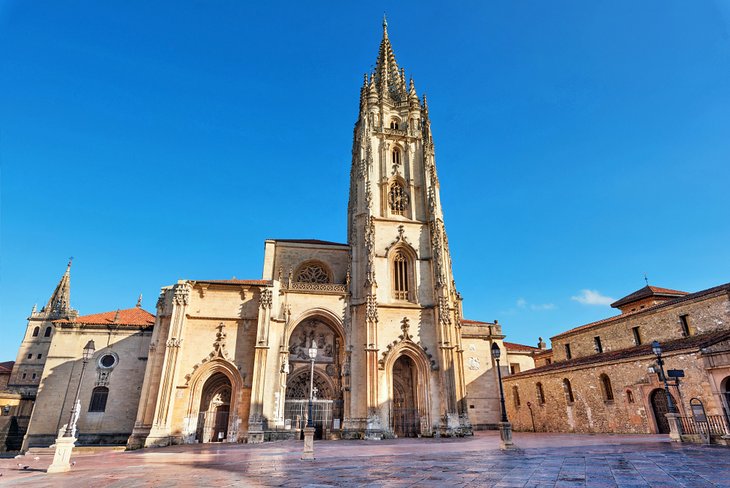
A remarkable number of pre-Romanesque churches sets Oviedo apart from other historic towns in northern Spain. The architectural heritage speaks to the importance of this city as the 9th-century capital of the Asturias kingdom.
King Alfonso II chose the location in the rolling hills of the Picos de Europa mountains because the remoteness made the town less vulnerable to attacks from the Moors of Córdoba.
Today, visitors enjoy the peacefulness of Oviedo's natural landscape, as well as the historic ambience of the Old Town with its pedestrian lanes and inspiring architecture. Oviedo's striking, single-towered cathedral is considered one of the finest Gothic monuments in Spain.
Outside of Oviedo's historic center are three UNESCO-listed pre-Romanesque churches (built in the 9th and 10th centuries): the Iglesia de Santa Maria del Naranco, the Iglesia de San Miguel de Lillo, and the Iglesia de San Julián de los Prados.
Oviedo has noteworthy museums of fine arts and archeology, and the town is equally renowned for its gastronomy. Local cuisine of the Asturias region includes delicious specialties such as bean stew and braised chicken with peppers.
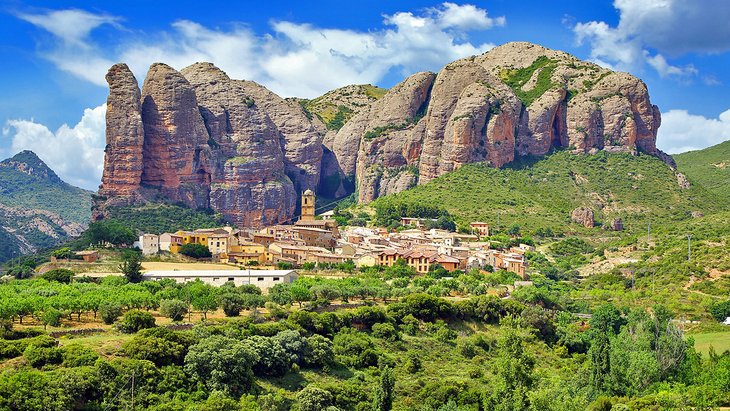
The medieval town of Heusca captivates visitors with its labyrinth of narrow, winding streets and historic monuments, including an impressive 13th-century cathedral and 12th-century Romanesque church.
Heusca is a good base for exploring the UNESCO-listed Parque Nacional Ordesa y Monte Perdido in the Pyrenees Mountains, which is a great place for hiking and other outdoor sports. This national park features rushing rivers, lush canyons, dramatic gorges, and soaring rocky peaks.
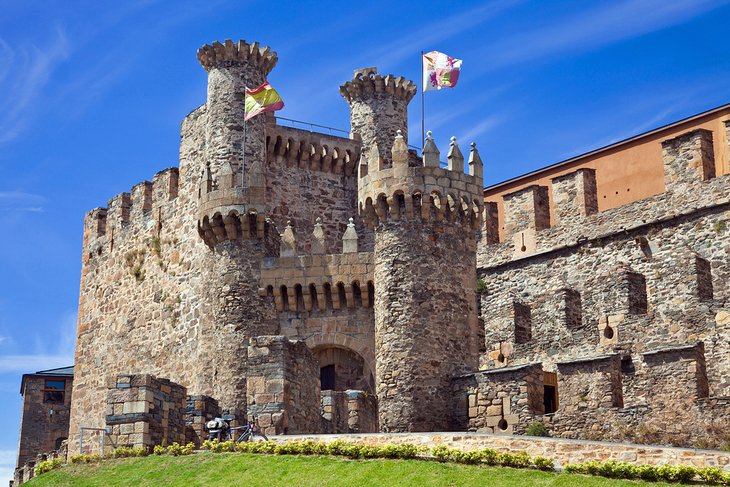
A formidable 12th-century castle stands guard over the historic town of Ponferrada, which was on the medieval pilgrimage route to Santiago de Compostela. The Knights Templar castle now houses a museum that presents the history of Ponferrada.
A short drive (20 kilometers) from Ponferrada in a tranquil valley is the ancient Monasterio de San Pedro de Montes , a rare example of pre-Romanesque architecture dating to the 7th century. The monastery's Romanesque church was renovated in the 18th century.
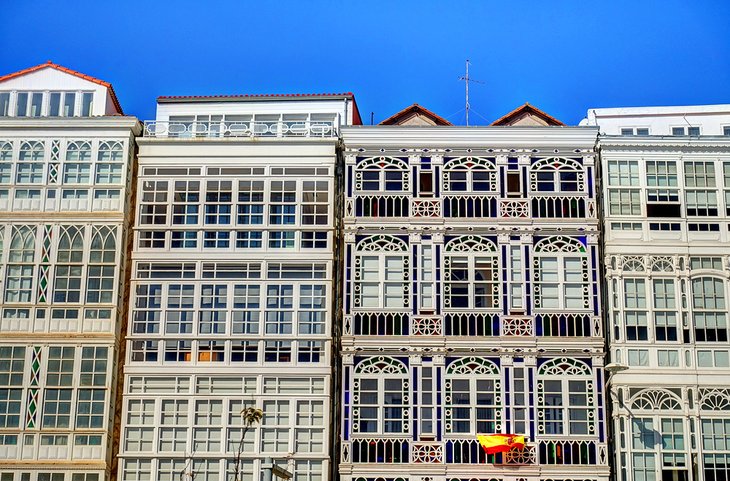
In the Galicia region, La Coruña is a historic port town with a bustling harbor and superb beaches. The city center, bordering the waterfront, is a captivating collection of winding streets, pleasant squares, and medieval churches.
The most iconic monument in La Coruña is the 1st-century Tower of Hercules , designated as a National Monument and a UNESCO World Heritage site .
La Coruña is also well known for its aquarium and restaurant scene. Many local establishments serve delicious meals, featuring regional cuisine based on fresh-caught seafood.
Nearby are the Rías Altas villages in the northern estuaries of the Galicia region. Some of the top destinations within easy driving distance are Betanzos , which has an interesting Old Town that is listed as an Historic-Artistic Site; Pontedeume , a picturesque seaside village; and Ferrol , a fishing village (and military port) that is known for its Easter celebrations.
For relaxing seaside accommodations, travelers will appreciate the Parador de Ferrol , which occupies a stately Galician-style mansion overlooking the waterfront. The traditional decor includes nautical touches. A gourmet restaurant treats guests to sea views and superb Galician cuisine, with specialties such as fish stew and filloas , a special type of crêpe prepared in the region.
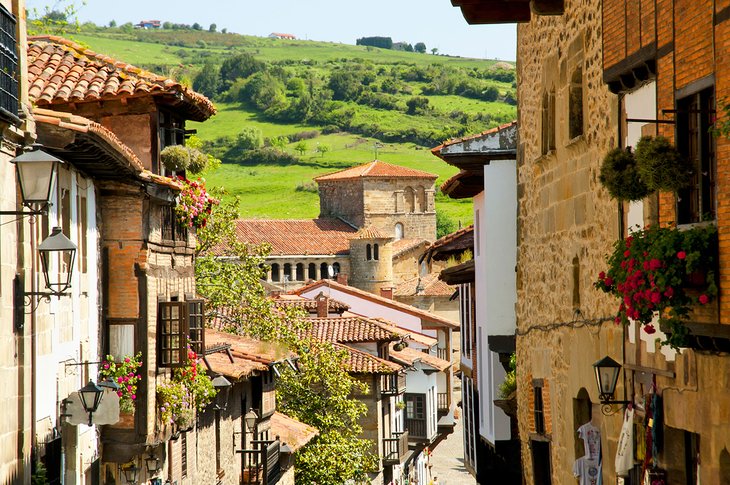
About a 30-minute drive from Santander is the lovely historic town of Santillana del Mar, which was a stop on the medieval pilgrimage route to Santiago de Compostela.
Santillana del Mar dates back to the 8th century, and the entire town center is designated as a National Monument . The 12th-century Collegiate Church of Santa María is remarkable for its sculpted facade and Romanesque capitals in the cloister.
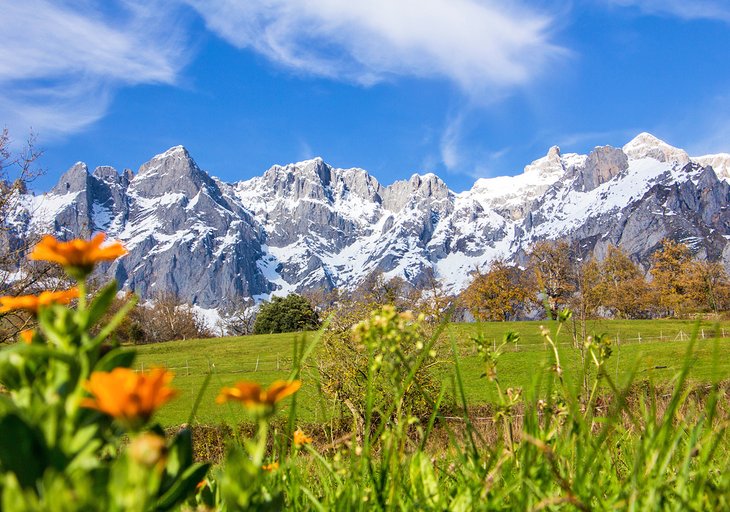
The Picos de Europa Natural Park delights visitors with its awe-inspiring scenery and refreshing mountain air. The Picos de Europa are the Cantabrian Mountains' highest peaks, and the 646-square-kilometer natural park covers terrain in the Asturias, Cantabria, and León provinces.
Dramatic alpine landscapes define the Picos de Europa. The terrain includes jagged mountain peaks, verdant valleys, deep gorges, pristine rivers and lakes, and dense woodlands.
Three distinct massifs form the Picos de Europa mountain range. The loftiest, Urriellu Peak (the central massif, also known as the " Naranjo de Bulnes "), reaches an elevation of 2,648 meters. The Urriellu Peak is a legendary destination for mountaineering and rock climbing in Northern Spain.
The enchanting mountain village of Bulnes on the Urriellu Peak may be reached by hiking up a steep pedestrian path or by taking a funicular railway from the town of Poncebos.
Another charming village in the Picos de Europa is Potes , built up along the rushing Quiviesa River. The village has many historic bridges that span the river, as well as old buildings that date back to the 14th and 15th centuries. The area around Potes is popular for hiking, fishing, and mountain biking.
Also not to be missed, the town of Cangas de Onís is nestled alongside the Sella River in the valley of the Picos de Europa. The town boasts an ancient Roman Bridge and a chapel that stands on the site of an 8th-century hermitage.
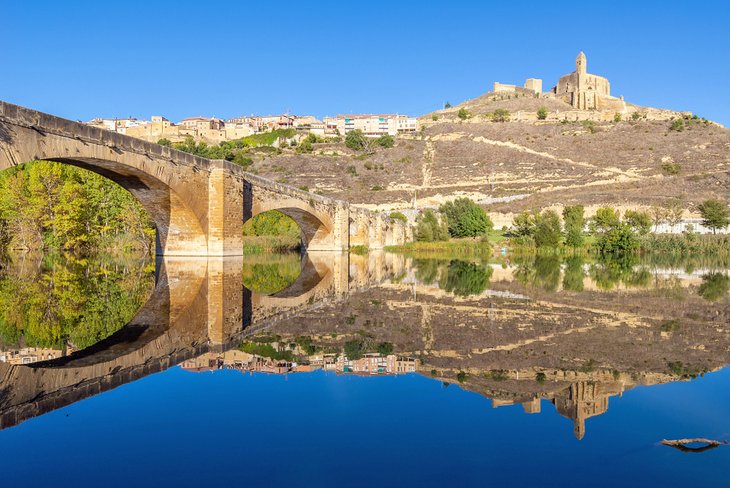
La Rioja is a gorgeous region in Northern Spain, prized for its idyllic scenery of vine-covered rolling hills and lush oak forests. The region also has a rich cultural heritage, linked with the medieval Camino de Santiago pilgrimage route to Santiago de Compostela.
The town of Santo Domingo de la Calzada reveals the legacy of the medieval pilgrims. In the 12th century, Santo Domingo de la Calzada offered lodging for pilgrims at a hostel (now converted to the four-star Parador de Santo Domingo de la Calzada ), and its cathedral provided a place for pilgrims to pray. The entire town, with its narrow stone-paved streets and attractive squares, is classified as a National Historic Interest Site .
Another destination tied to the Way of Saint James (Camino de Santiago) pilgrimage route is the town of San Millán de la Cogolla , tucked away in a valley traversed by the Cárdenas River. San Millán de la Cogolla has two UNESCO-listed monuments: the Monastery of Suso (built between the 6th and 11th centuries), which blends Visigothic, Mozarab, and Romanesque architectural styles, and the Monastery of Yuso , an 11th-century Romanesque monument.
More Related Articles on PlanetWare.com
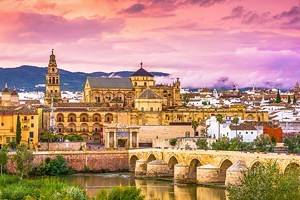
Other Top Destinations in Spain : With so many cultural treasures, Spain gives travelers endless reasons to extend a vacation. Among the best places to visit in Spain are the capital city of Madrid and the cultured port town of Valencia on the Mediterranean Sea. The UNESCO-listed Old Town of Segovia and the historic city of Toledo fascinate visitors with their marvelous Gothic monuments that seem out of a fairy tale.
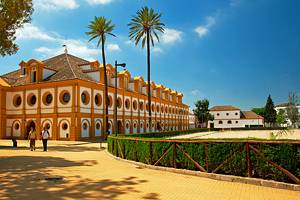
Highlights of Southern Spain : Steeped in the legacy of its multicultural past, Andalusia is an emblematic region famous for flamenco, festivals, and a sociable spirit. Granada boasts amazing Islamic architecture seen in the UNESCO-listed Alhambra palaces and Generalife gardens. Córdoba dazzles visitors with its 8th-century Great Mosque, another UNESCO World Heritage site. The romantic city of Seville is home to the largest Gothic church in the Christian world, as well as a medieval Moorish palace.

More on Spain


Best Places To Visit In Northern Spain
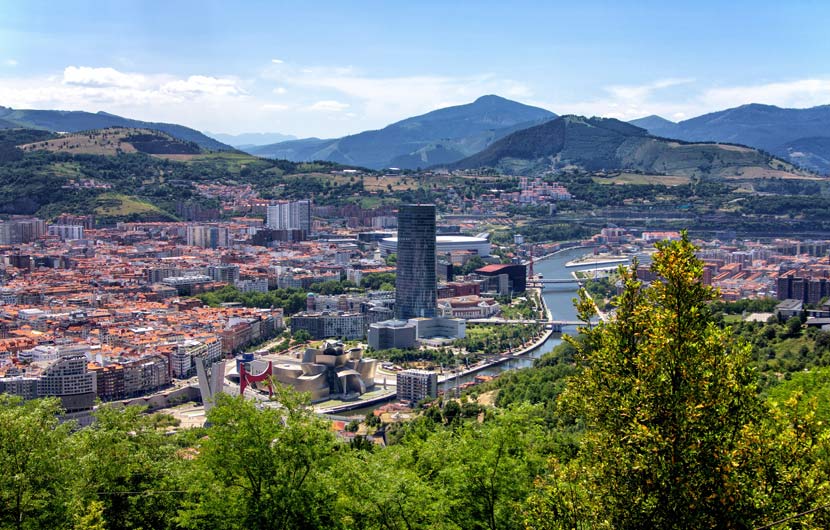
Northern Spain offers extraordinary cultural, culinary and natural diversity for visitors within its four main regions: Galicia , Asturias, Cantabria and Basque Country.
Each area provides unique attractions and beauty spanning lush forests to rugged coastlines.
Galicia is one of the best places to visit in Northern Spain. The stunning city of Santiago de Compostela draws pilgrims to its ornate cathedral and lively old town.
Seaside towns like A Coruna punctuate the wild, rocky coastline while vineyards thrive inland.
Asturias captivates with its mountain wilderness and vibrant cities like Oviedo which blends pretty plazas with pre-Romanesque architecture. Trying cider poured from great heights is a must.
Cantabria flaunts elegant belle epoque beach towns like Santander and Santillana del Mar alongside spectacular caves and the towering Picos de Europa mountains.
The cute capital of Santander provides a gateway to quiet coastal villages and lush nature reserves perfect for hiking.
The Basque Country tempts with fantastic food from San Sebastian , a world-class culinary capital.
Vitoria's medieval old town and show-stopping modern Guggenheim Museum in Bilbao demonstrate the region's diversity.
Basque Country coastal villages like Getaria and Zumaia lend charm.
From the peaks of the Picos de Europa to the tapas bars of San Sebastian , northern Spain promises astonishing culture, nature and cuisine of the typical Spanish tourist trail but worth discovering.
5 Interesting Facts About Bilbao
1. Bilbao is home to an impressive fine arts museum housing works from Gaugin to Goya, entrance is FREE every day from 6 pm to 8 pm. 2. The Mercado de Ribera market , located by the estuary, built in 1929 covering over 10.000 m2 is the largest indoor market in Europe. 3. The two impressive Izosaki twin towers which soar 23 stories and 83 meters above the Bilbao skyline were created by Japanese architect Arata Isozaki. 4. The Basque language ( Euskara) is the oldest European language and has been traced back to a language spoken 20,000 years ago in Europe. 5. Basque cuisine is highly regarded with numerous Michelin-starred Restaurants .

Bilbao is set amid green hills where the Nervion River meets the Bay of Biscay. Once focused on heavy industries like shipbuilding, today Bilbao has transformed into a cultural and architectural gem where historic sites mingle with modern masterpieces.
The city is most famous for the Frank Gehry-designed Guggenheim Museum, an architectural marvel clad in curving titanium that draws art aficionados from around the world.
Antoni Gaudí also left his mark with buildings like the Algoibar House. Casco Viejo, the atmospheric medieval quarter, charms with bustling plazas and pintxos bars crowding its narrow lanes.
Bilbao enjoys an outstanding dining scene centered around the countless pintxos bars offering creative bite-sized creations and Txakoli wine.
The city provides easy access to the Rioja wine region to sample its famed Tempranillos. Outdoor life thrives along the scenic Nervión River threading through town.
While smaller than Spain’s major hubs, Bilbao provides huge cultural offerings with galleries and museums showcasing everything from maritime history to fine arts.
World-class architecture both historic and modern makes exploring Bilbao's neighbourhoods an architectural feast for the eyes.
With its seamless blend of culture, cuisine and natural beauty, Bilbao emerges as one of Spain’s most compelling and progressive cities.
The colourful La Salve Bridge is sure to catch your eye, and once you cross it to the other side of the river you will be right by the entrance to the famous Guggenheim Museum Bilbao . This is one of the most famous attractions in the entire city so don’t miss a chance to explore it.
Next up you will definitely want to see the gorgeous stained glass windows at the Abando Train Station which depict parts of the city’s history.
Consider taking an evening stroll through the Doña Casilda Iturrizar Park which is filled with walking paths, statues and fountains.

Spain's northern Cantabria region hugs the Bay of Biscay, stretching from the towering Picos de Europa mountains to vibrant seaside towns dotted along the coast.
With its abundance of nature, culture and cuisine, Cantabria entices visitors seeking an authentically Spanish experience away from major tourist hubs.
The quaint capital Santander boasts an elegant waterfront promenade, a lively old town, and excellent museums like the Cantabria Maritime Museum honoring the region's shipbuilding heritage.
Nearby, Santillana del Mar enchants with stone architecture that earned it a 'town of historical importance' designation.
Cantabria's rugged shoreline provides opportunities for beachgoing, surfing, and coastal hikes to picturesque whitewashed fishing villages. Inland, the jagged limestone peaks of the Picos de Europa offer spectacular hiking and mountain refuges.
Descend into the magical Cuevas de El Soplao, a complex of caves adorned with geological formations.
Cantabria's rich natural bounty translates to excellent regional cuisine. Try smoked anchovies, sobaos sweet pastries, and hearty stews that use the fresh meat, seafood and produce from this lush corner of Spain.
With an alluring blend of history, culture, cuisine and outdoor adventure set amid stunning landscapes, Cantabria provides a chance to experience a more authentic side of Spain.

The verdant Principality of Asturias enchants visitors with its wild landscapes, fabulous food and drink, and traces of an ancient Celtic past.
With Spain’s highest coastal mountains and a scenic shoreline dotted with fishing villages, Asturias promises pure natural magic.
The capital Oviedo displays elegant palaces and lively cider bars around its beautifully preserved medieval core.
Towering mountain ranges like the Picos de Europa contain excellent hiking trails past glacial lakes and soaring peaks. The plunging Cares River gorge threads through mountains over a mile high in places.
Asturias’ wild coastline yields delicious seafood, especially pintxos of just-caught octopus and shrimp. Inland, the region’s legendary bean and meat stew known as fabada asturiana warms body and soul.
Don't leave without sampling Asturias' famous cider, poured from bottles held overhead to aerate the dry, funky brew in proper sidreria fashion.
From prehistoric cave art to crumbling Roman ruins, Asturias’ history and culture come alive. Quaint coastal villages like Cudillero and Llanes resemble the colourful fishing hamlets of the Basque Country further east.
With its own distinct traditions and landscapes, Asturias unveils a unique corner of natural and cultural riches waiting to be discovered in northern Spain.

Galicia enchants visitors with its rugged Atlantic coastline, famed pilgrimage route, and traces of Celtic heritage that infuse its architecture and bagpipes. The remote landscapes here feel far removed from Spain's sun-baked southern coasts.
Santiago de Compostela draws pilgrims from across the globe to its lavishly decorated cathedral honouring the apostle Saint James.
Visitors also flock to Galicia's sublime beaches and charming medieval towns like Pontevedra nestled into the Rías Baixas ria inlets. Quaint coastal villages pepper the coast, from fishing hamlets to beach resort towns.
Galicia's cold, deep Atlantic waters yield extraordinary seafood, from spider crab to goose barnacles.
Albarino white wines grown near the coast have put Galicia on the viticulture map for their balanced fruit and acidity.
Locals wash down piles of steamed mussels and shrimp with refreshing glasses of crisp white wine.
Ancient Celtic traditions woven into Galicia's music, dance, bagpipes and superstitions reveal its shared roots with neighbouring Celtic nations Ireland, Scotland, Wales and Brittany in France.
With its fusion of incredible coastal and mountain scenery, heady seafaring culture and singular traditions, Galicia offers travellers an enchanting look into Spain's mystical northern soul.

The Rioja region, located in northern Spain, is renowned worldwide for its exceptional wine production, breathtaking landscapes, and rich cultural heritage.
Here's an overview of this captivating region:
Wine Heritage: Rioja is synonymous with fine wine. It's one of Spain's most celebrated wine regions, known for its red wines made primarily from Tempranillo grapes.
Rioja wines are categorised into several quality levels, including Crianza, Reserva, and Gran Reserva, each representing different ageing requirements.
The region is dotted with prestigious wineries, known as bodegas, where visitors can explore centuries-old cellars and indulge in wine tastings.
Scenic Beauty: Beyond its vineyards, Rioja boasts stunning natural scenery. The Ebro River meanders through the region, flanked by picturesque towns and rolling hills covered in vineyards.
The Camino de Santiago pilgrimage route also crosses through Rioja, attracting hikers and history enthusiasts.
Charming Towns: Rioja is home to charming towns and cities, such as Logroño, the regional capital, known for its lively atmosphere and tapas bars.
Haro, the wine capital of Rioja, hosts the famous Batalla del Vino (Wine Battle) each year. Briones and Laguardia are enchanting medieval villages with well-preserved architecture.
Culinary Delights: Rioja's gastronomy perfectly complements its wines. The region is famous for its succulent lamb dishes and a wide range of local produce, including peppers, asparagus, and artichokes.
Dining in a traditional Riojan restaurant is an opportunity to savour the flavours of Spain's northern cuisine.
Culture and Festivals: Rioja is steeped in cultural traditions, with festivals and events celebrating the region's heritage.
The Batalla del Vino, mentioned earlier, is a unique wine fight where participants douse each other with wine. Rioja also hosts numerous wine-related festivals and cultural events throughout the year.
Rioja is a captivating destination that caters to wine aficionados, nature lovers, history buffs, and food enthusiasts alike. Its unique blend of wine culture, natural beauty, and cultural heritage makes it a must-visit region in Spain.

Navarra captures the essence of diversity and scenic beauty. It's a place where vibrant cultures, stunning landscapes, and a rich tapestry of traditions converge.
The Navarra region is a mosaic of landscapes. To the north, the majestic Pyrenees Mountains paint a dramatic backdrop with verdant valleys, beckoning hikers and nature enthusiasts. In contrast, the southern region transforms into a fertile plain, where vineyards and orchards thrive in the Mediterranean climate.
The region is celebrated for its wine production, notably its acclaimed rosé wines crafted from Garnacha grapes.
Here, you can explore local wineries, known as bodegas, where tastings offer a delightful journey through the region's winemaking heritage. Complementing the wines, Navarra's cuisine is a treat for the senses, featuring traditional dishes like Pochas a la Navarra and the flavorful Chistorra sausage.
Pamplona, the capital of Navarra , is a city steeped in history. Its medieval old town, enveloped by ancient walls, exudes an enchanting charm.
The Pamplona Cathedral, a striking example of Gothic architecture, is a prominent landmark.
The city is also famous for hosting the San Fermín festival, renowned worldwide for its exhilarating Running of the Bulls event.
Beyond its urban treasures, Navarra showcases the mesmerising Bardenas Reales, a semi-desert region designated as a UNESCO Biosphere Reserve. Its arid landscapes, reminiscent of cinematic westerns, draw photographers and adventure seekers.
Navarra celebrates its rich cultural heritage through a myriad of festivals. The San Fermín festival is just the tip of the iceberg, with traditional music, dance, and folklore events that honour the region's Basque and Navarrese roots.
Navarra's tapestry of natural beauty, cultural depth, and culinary excellence offers an authentic Spanish experience. Whether you seek outdoor adventures, cultural immersion, or simply a taste of the local way of life, Navarra welcomes you with open arms, inviting you to explore its captivating tapestry.
The Cities of Northern Spain

Here are the main cities located within the regions of Northern Spain:
Bilbao (Basque Country): Bilbao is the largest city in the Basque Country and is renowned for its modern architecture, most notably the Guggenheim Museum. The city is an industrial and cultural hub with a vibrant arts scene and a thriving culinary tradition.
Vitoria-Gasteiz (Basque Country): As the capital of the Basque Country, Vitoria-Gasteiz is known for its well-preserved medieval old town and green spaces. It's often cited as one of the greenest cities in Europe.
San Sebastian (Basque Country): San Sebastian, or Donostia in Basque, is certainly one of the best places to visit in Northern Spain. It is famous for its stunning beaches, culinary excellence, and the annual San Fermín festival. Its picturesque old town and beautiful La Concha Beach are major attractions.
Pamplona (Navarra): Pamplona is famous for the San Fermín festival and its historic old town. It's a city steeped in tradition and history, with a charming atmosphere.
Logrono (La Rioja): As the capital of La Rioja, Logroño is at the heart of Spain's wine country. The city is known for its tapas culture and is a great base for exploring the local wineries.
Oviedo (Asturias): Oviedo is the capital of Asturias and is celebrated for its historic architecture and lively arts scene. It's a city where tradition meets modernity.
Gijón (Asturias): Gijón is Asturias' largest city and offers a vibrant coastal experience with beautiful beaches and a thriving nightlife.
Santander (Cantabria): Santander is a picturesque coastal city with elegant architecture, beautiful beaches, and a relaxed atmosphere. It's a popular destination for beachgoers and tourists.
A Coruna (Galicia): A Coruña, or La Coruña, is known for its stunning waterfront promenade, historic old town, and the Tower of Hercules, a Roman lighthouse and UNESCO World Heritage site.
Santiago de Compostela (Galicia): Santiago de Compostela is the spiritual and cultural heart of Galicia, famous for its cathedral and the Camino de Santiago pilgrimage route. Its historic old town is a UNESCO World Heritage site and one of best places to visit in Northern Spain.
Best Places To Say in Northern Spain

Whether you seek cultural immersion, natural beauty, or coastal relaxation, Northern Spain has something for everyone.
Here is our pick of the best places to stay in Northern Spain:
San Sebastian:
Nestled along the Bay of Biscay, San Sebastian , or Donostia in Basque, is a coastal jewel celebrated for its exquisite beaches, including La Concha and Zurriola.
The city's crown jewel is its Old Town, where narrow cobblestone streets lead to delightful pintxos (tapas) bars, showcasing the Basque culinary prowess.
San Sebastian is an ideal destination for beach lovers, foodies, and those seeking a cultural and culinary odyssey.
Bilbao, the largest city in the Basque Country, has undergone a remarkable transformation from an industrial hub to a cultural epicentre.
The iconic Guggenheim Museum, designed by architect Frank Gehry, has become a symbol of modern architecture and contemporary art. Beyond the museum, explore the lively neighbourhoods, sample Basque cuisine at local restaurants, and stroll along the banks of the Nervión River.
Santiago de Compostela:
The capital of Galicia , Santiago de Compostela, is synonymous with the Camino de Santiago, a medieval pilgrimage route that culminates at its stunning cathedral.
The historic old town is a UNESCO World Heritage site, boasting charming squares, centuries-old buildings, and a vibrant atmosphere.
Pilgrims and travellers alike are drawn to the city's spiritual and cultural allure.
Santander , the capital of Cantabria, is an elegant coastal city offering a perfect blend of urban sophistication and natural beauty.
Playa del Sardinero is a pristine beach where you can soak in the sun, while the Palacio de la Magdalena, a grand palace overlooking the bay, is a testament to the city's aristocratic past.
As the capital of La Rioja, Logroño is the epicentre of Spain's renowned wine region. The historic centre is a labyrinth of charming streets, where you can enjoy exquisite tapas and local wines. Stroll along Laurel Street, known as the "Path of the Elephants," and savour the tastes of La Rioja's cuisine.
Pamplona , the capital of Navarra, is famous for the San Fermín festival and its exhilarating Running of the Bulls.
The city's historic quarter is a treasure trove of Gothic architecture, including the Pamplona Cathedral. Beyond the festival, Pamplona offers a rich cultural experience, making it a compelling destination year-round.
The capital of Asturias , Oviedo, is a city of contrasts. Its historic old town is a testament to centuries of history, with striking architecture and charming squares. The city's modern side boasts a vibrant arts scene, world-class restaurants, and a welcoming atmosphere.
Bardenas Reales:
This semi-desert region in Navarra is a geological wonderland, characterized by eerie rock formations and rugged landscapes.
Bardenas Reales is a paradise for adventure seekers, offering opportunities for hiking, biking, and photography.
Rías Baixas:
In the heart of Galicia, Rías Baixas is a coastal haven defined by its picturesque rías (estuaries) and vineyard-covered hillsides.
The region's Albarino wines are celebrated, and visitors can explore charming seaside towns like Sanxenxo and Combarro while indulging in fresh seafood.
Picos de Europa:
Spanning multiple regions, the Picos de Europa mountain range is a haven for nature enthusiasts.
Towering peaks, lush valleys, and pristine lakes define this stunning natural landscape.
Hiking, wildlife watching, and exploring traditional mountain villages are among the many activities available.
Recommended Hotels in Northern Spain

Luxury Hotels:
- Hotel Maria Cristina (San Sebastian): This iconic luxury hotel, part of the Luxury Collection by Marriott, exudes elegance and is located in the heart of San Sebastián. Guests enjoy opulent rooms, gourmet dining, and views of the Urumea River.
- Gran Hotel Domine Bilbao : Situated right next to the Guggenheim Museum in Bilbao, this 5-star hotel combines contemporary design with comfort. Its rooftop terrace offers panoramic views of the city.
- Parador de Santiago de Compostela : A historic Parador (luxury state-run hotel) located next to Santiago de Compostela Cathedral, this establishment is steeped in history and offers lavish rooms and top-notch dining.
Mid-Range Hotels:
- Sercotel Hotel Las Rocas (Santander): Overlooking the Bay of Biscay, this mid-range hotel provides comfortable rooms with sea views. It's an excellent choice for travellers seeking affordability and a beachfront location.
- Hotel Conde Duque (Logrono): Located in the heart of Logrono, this mid-range hotel offers modern amenities and easy access to the city's tapas bars and wine cellars.
- Hotel Libretto (Oviedo): A stylish boutique hotel in Oviedo, Hotel Libretto combines contemporary design with affordability. It's conveniently located for exploring the city's cultural attractions.
Budget-Friendly:
- Albergue Jakue (Pamplona): Pilgrims and budget-conscious travellers can find comfortable accommodations at this pilgrim hostel in Pamplona. It's a great choice for those walking the Camino de Santiago.
Best Beaches in Northern Spain
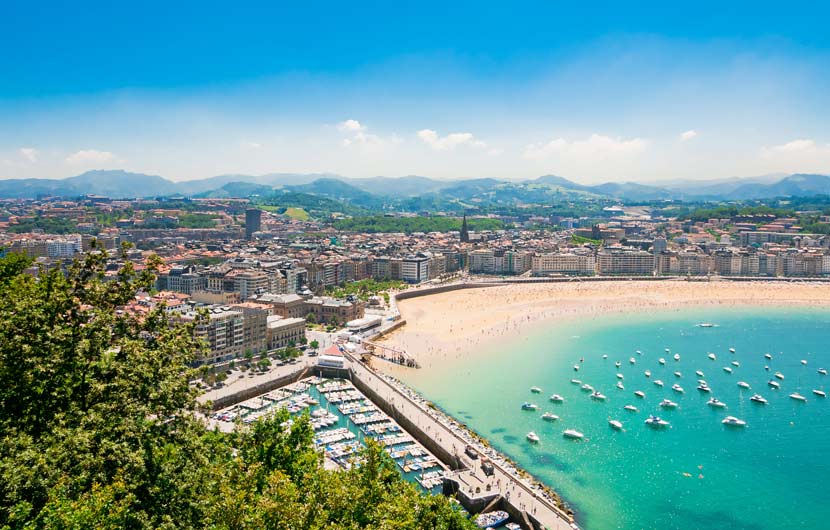
- La Concha Beach (San Sebastian): La Concha is renowned for its pristine crescent shape, soft sands, and crystal-clear waters. It's ideal for swimming and water sports while offering views of the city and the Urgull and Igeldo mountains.
- Zurriola Beach (San Sebastian): Known for its surf-friendly waves, Zurriola attracts surfers from around the world. The beach is lively and has a youthful atmosphere, making it a hotspot for beachgoers.
- Playa de Orza n (A Coruna): A spacious urban beach with fine golden sand, Orzán is perfect for long walks and sunbathing. The beach promenade offers a range of dining options and bars.
- Playa de las Catedrales (Ribadeo): This beach is famous for its unique rock formations and natural arches. During low tide, visitors can explore these geological wonders.
- Playa de Somo (Santander): Somo Beach is a haven for surfers, known for its consistent waves and surf schools. The long stretch of sandy shore is perfect for beach games and relaxation.
- Playa de Gulpiyuri (Llanes): A hidden gem, Gulpiyuri Beach is an inland beach with freshwater from underground streams. It's a surreal and beautiful spot for a unique beach experience.
- Playa de Silencio (Cudillero): Also known as "Silent Beach," this secluded cove is surrounded by cliffs and offers a tranquil escape. It's a great place for a peaceful swim and enjoying the rugged beauty of Asturias.
- Playa de Noja (Noja): Located in Cantabria, Noja Beach is known for its family-friendly atmosphere, golden sands, and clear waters. Water sports enthusiasts can enjoy activities like windsurfing and kayaking.
- Praia das Catedrais (Ribadeo): This Galician beach is famous for its breathtaking rock formations and natural arches. Visitors can explore these geological wonders during low tide.
- Playa de Samil (Vigo): Samil Beach in Vigo is a popular urban beach with fine sands and a wide range of facilities. It's an excellent place for families to relax and enjoy the sea.
- Playa de Rodas (Cíes Islands): Often called one of the best beaches in the world, Rodas Beach offers stunning white sands and clear turquoise waters in the Cíes Islands, part of the Galician coast.
- Playa de Los Quebrantos (San Juan de la Arena): Located in Asturias, Los Quebrantos Beach is known for its wild beauty, rocky formations, and surfing conditions.
FAQs - Frequently Asked Questions
Where is the best place to go in northern spain.
The best place to go in northern Spain depends on your preferences. San Sebastián is a top choice for its stunning beaches and culinary scene, while Bilbao offers modern art and architecture. Santiago de Compostela is a cultural gem, and Asturias is perfect for nature lovers.
Is northern Spain worth visiting?
Northern Spain is definitely worth visiting. It offers diverse landscapes, rich culture, delicious cuisine, and welcoming locals.
Which is better Santander or San Sebastian?
Santander and San Sebastián each have their charm. Santander is known for its elegance and beautiful beaches, while San Sebastián is famous for its culinary delights and La Concha Beach.
Are there nice beaches in northern Spain?
Yes, there are stunning beaches in northern Spain, especially in San Sebastián, Santander, and Galicia. The region's coastline is diverse and beautiful.
What is the best food city in northern Spain?
San Sebastian is often considered the best food city in northern Spain, known for its pintxos (tapas) culture and Michelin-starred restaurants.
What is the north of Spain famous for?
The north of Spain is famous for its diverse landscapes, rich history, and vibrant culture. It's also known for the Camino de Santiago pilgrimage route.
What is the best month to visit northern Spain?
The best month to visit northern Spain depends on your preferences. Spring and early autumn are pleasant, while summer is great for beachgoers. Autumn is ideal for wine enthusiasts.
Why is Santander so popular?
Santander's popularity is due to its stunning beaches, elegant architecture, and relaxed atmosphere. It's a beloved coastal destination.
What is the food capital of northern Spain?
San Sebastián is often considered the food capital of northern Spain, famous for its culinary innovation and delicious pintxos.
Is it worth visiting Oviedo Spain?
Yes, Oviedo is worth visiting for its historical charm, cultural attractions, and lively arts scene.
Is it worth visiting Bilbao?
Bilbao is worth visiting for its modern art, stunning architecture, and unique urban transformation.
Is it better to stay in Gijón or Oviedo?
Choosing between GijOn and Oviedo depends on your preferences. GijOn offers a vibrant coastal experience, while Oviedo is known for its historic charm.
Is Asturias worth visiting for tourists?
Asturias is definitely worth visiting for tourists, offering a mix of natural beauty, fantastic beaches, green pastures, rich culture, and delicious cuisine.
What is the prettiest village in Asturias?
Cudillero is often considered one of the prettiest villages in Asturias, known for its picturesque harbour and colourful houses cascading down the cliffs.
- About Author
- Latest Posts

Hey there! I'm Matt, your friendly neighbourhood explorer extraordinaire! For the past 15 years, I've been gallivanting around Spain, soaking up all its wonders and uncovering hidden gems like a modern-day Indiana Jones (minus the hat and whip, unfortunately). So, buckle up, amigos! It's time to dive straight into the heart and soul of Spain. Welcome to my world of Spanish wonders!
Latest posts from Matt
- 4 Days in Valencia – The Ultimate Bucket List Itinerary - March 17, 2024
- Luxury Spain Holidays – The Ultimate Bucket List Travel Guide - March 9, 2024
- Easter in Spain – Semana Santa Holy Week Traditions - March 7, 2024
Recent Posts

Off the Beaten Path: The Top Barcelona Beaches that You’ve Never Heard Of

Making the Most of the Off Peak Shoulder Season in Spain
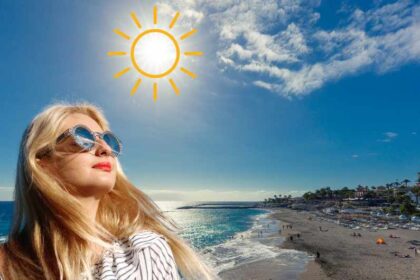
Spain Dominates With The Sunniest Cities in Europe

4 Days in Valencia – The Ultimate Bucket List Itinerary
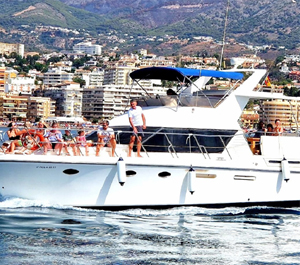
Luxury Spain Holidays – The Ultimate Bucket List Travel Guide
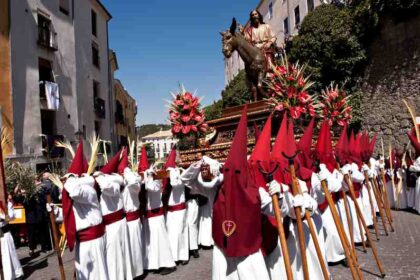
Easter in Spain – Semana Santa Holy Week Traditions

Barcelona Nightlife – Best Discos & Nightclubs Not To Be Missed
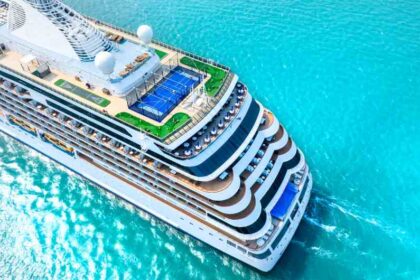
Making The Most Of Shore Sightseeing Excursions In Spain Whilst Cruising The Med
Leave a reply cancel reply.
Your email address will not be published. Required fields are marked *
This site uses Akismet to reduce spam. Learn how your comment data is processed .

Travel Smarter - Not Harder
Download free e-guides and travel tips.
Start your Journey today and get access to exclusive FREE content.
Disclosure: Please note that some of the links included in the above content may be affiliate links. We may earn a commission if you make a purchase at no extra cost to you. Rest assured, we only recommend products and services that we personally use or have used and are happy to recommend. Any commission we earn helps toward the site's running costs.
Username or Email Address
Remember Me
- WHY VISIT SPAIN?
- TRAVELLING TO SPAIN
- SPAIN ON A BUDGET
- TRAVEL REQUIREMENTS – ETIAS
- SPAIN ENTRY REQUIREMENTS
- SPANISH CUISINE
- SPANISH FOOD
- HOLIDAY IDEAS
- PUBLIC HOLIDAYS
- TOURISM BOARDS
- AIRPORT GUIDE
- DRIVING IN SPAIN
- WEATHER IN SPAIN
- FREE WEB CAMS
- BEST BEACHES SPAIN
- FESTIVALS & FIESTAS
- MUSEUMS IN SPAIN
- CAMPING IN SPAIN
- MARINAS IN SPAIN
- SKIING IN SPAIN
- WATER PARKS
- UNESCO WORLD HERITAGE SITES
- 80 BEST ATTRACTIONS
- 71 BEST PLACES TO VISIT
- REGIONS OF SPAIN
- COSTA DEL SOL
- CANARY ISLANDS
- SAN SEBASTIAN
- Complete List:
- SAGRADA FAMILIA BARCELONA
- BARCELONA FC STADIUM TOUR
- BARCELONA FLAMENCO SHOW
- SEVILLE FLAMENCO SHOW
- SEVILLE CATHEDRAL
- GAUDI`S CASA BATLLO
- THE ALHAMBRA GRANADA
- SANTIAGO CATHEDRAL
- CITY OF ARTS & SCIENCE VALENCIA
- MOSQUE-CATHEDRAL CORDOBA
- CAMINITO DEL REY
- PRADO MUSEUM MADRID
- REINA SOFIA ART MUSEUM
- SCUBA DIVING
- BEST TAPAS TOURS
- BEST WINE TASTING TOURS
- TOUR GUIDES
- HOTELS IN SPAIN
- LUXURY HOTELS
- LUXURY BEACH HOTELS
- HOLIDAY RENTALS
- PARADOR HOTELS
- CHEAP FLIGHTS
- TRAVEL INSURANCE
- FREE TRAVEL BROCHURES
- WIN FREE HOLIDAYS


One Week In Northern Spain, The Perfect Itinerary For “Green Spain”
Planning a vacation in northern Spain? Here’s my guide to an epic one week road trip in northern Spain.
This itinerary starts and ends in the exciting cultural and culinary city of Bilbao. It covers all the top must visit attractions, towns, and historic landmarks in the Basque, Cantabria, and Asturias regions of Spain.
I fell utterly in love with northern Spain on a recent geographical cure. It earns its nickname of the “Natural Paradise.”
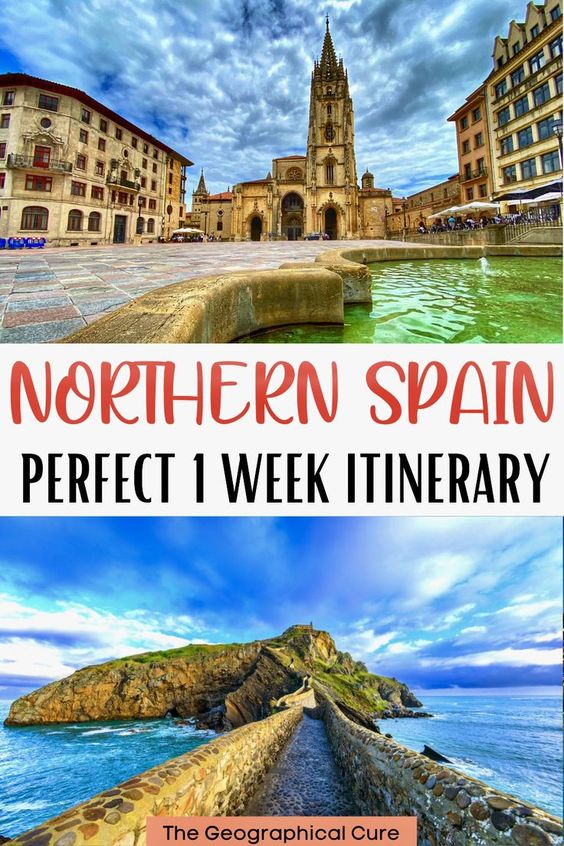
I’ve written about Barcelona in many other posts.
This itinerary focuses on the less touristy and drop dead gorgeous regions of natural beauty — the Basque country, Cantabria, and Asturias.
If you’re an “is it pretty?” person, northern Spain is for you.
Overview Of One Week In Northern Spain
Here’s a quick snapshot of my recommended one week itinerary for a self drive road trip in northern Spain. It’s a loop that starts and ends in Bilbao.
You’ll have two bases, Bilbao and Oviedo. I give you tips on where to stay in each city.
- Day 1 : Explore Bilbao
- Day 2 : Day Trip To San Sebastian
- Day 3 : Day Trip To San Juan de Gaztelugatxe
- Day 4 : Drive To Oviedo, stops in Santillana del Mar and Comillas
- Day 5 : Explore Oviedo
- Day 6 : Day Trips to Cudillero and Gijon
- Day 7 : Drive Back To Bilbao, stop en route in coastal villages
One Week In Northern Spain Itinerary
I drove to northern Spain by car from southern France .
If you’re doing the same, I stopped in two idyllic little towns on the way, the elegant town of Pau France in the French Pyrenees and the colorful Basque town of Hondaribbia just over the Spanish border.
READ : 10 Day itinerary for Southern France
Because I don’t like to switch hotels or Air Bnbs every night, I based myself in two cities in northern Spain, Bilbao and Oviedo.
From there, I could access the best sites — spectacular coastlines and natural wonders, tiny medieval villages that seem stuck in time, and the cultural hotspots of the two cities.
If you’ve been to sunny Andalusia in southern Spain, you’ll find that these two regions of Spain are utterly different. You’d hardly believe you were in the same country.
Andalusia is sunny and sand-baked with Moorish goodies galore. In contrast, Northern Spain is a glossy green, with mountains reaching to the sky and rocky coves and crescent beaches that beckon.
READ : Most Beautiful Towns in Andalusia
Here’s my step by step guide to touring northern Spain by car in one week. A car will give you much more flexibility. It’s not that expensive, if you can drive a clutch.
And it’s perfectly safe and easy to drive, as long as you don’t venture into a busy city center or a tiny medieval village with one way lanes. Most of the places on my itinerary can be accessed by bus, but it won’t always be easy.
READ : Tips for Renting a Car and Driving in Europe
Here’s how you should spend 7 blissful days in northern Spain
Day 1: Bilbao: Art and Starchitecture
On day 1, explore your starting point, Bilbao, pronounced Bilbow.
It’s the cultural hotspot of the Basque region. Bilbao is beautifully situated amid rolling green hills and tucked between mountain ranges.
It’s a surprising and avant garde place, casually combining historic Spanish flair with modern starchitecture.
Bilbao is no longer the industrial city that people think of from past decades, though it’s still agreeably down to earth.
READ : Complete Two Day Itinerary for Bilbao
Bilbao is a great Spanish city to explore if you fancy art, culture, and ancient cobbled lanes. It’s alive with local energy.
Bilbao is a hip haven for foodies, overflowing with fantastic restaurants, many of the Michelin variety.
While you’re there, visit the iconic Gehry-designed Guggenheim Museum, stroll the “seven streets” of the historic center (Casco Viejo), and indulge in the inventive tapas.
Click here to book a guided walking tour of historic Bilbao. Click here to book a skip the line ticket and tour of the stunning Guggenheim Museum. Bilbao is also a fantastic place to take a guided gourmet food tour .
I have big love for Bilbao. Here’s my complete guide to the must see sites in Bilbao .
Day 2: San Sebastian: International Culinary and Beach Capital
Bilbao is a great base for day trips in northern Spain . Your first point of call is San Sebastian.
This Basque city is objectively beautiful, and tourists flock there. It’s renowned as a foodie resort town and beachy playground. Its stunning beach, La Concha, is world famous and considered one of Europe’s best beaches.
If you’re a food traveler, you’ll be in seventh heaven.
San Sebastian is frequently called the “ food capitol of the world. It boasts three restaurants with the rarest of accolades: a three star Michelin rating.
San Sebastian also has a thriving pintxos scene. Pintxos are the Basque version of tapas.
You can spend the day wandering around and indulging in these haute cuisine mini meals.
San Sebastian’s historic center, Parte Vieja, is picturesque, though I found it fairly underwhelming. It’s much tinier than Bilbao’s Casco Viejo and the sites will be quickly exhausted.
It’s also quite touristy. If you don’t like crowds, try to visit San Sebastian in the off season.
While you’re in San Sebastián, you may want to book a guided walking tour of the old town . If your’e a foodie, you should definitely consider a guided food tour when you’re there. I booked this 3 hour I Travel Food Food tour and loved it.
You can get from Bilbao to San Sebastian by train or bus. You can also book a full day guided day tour from Bilbao . Or book a guided day tour that includes San Sebastián and winery visit .
Day 3: Gaztelugatxe: a Natural Wonder
On day 3 of your on week in northern Spain itinerary, take an easy day trip to the absolutely jaw dropping San Juan de Gaztelugatxe .
It’s a magical spot only about 45 minutes from Bilbao. Gaztelugatxe is really a must see destination in the Basque Region. And now it’s TV-famous.
In the wildly popular HBO series Game of Thrones, Gaztelugatxe appears as Dragonstone — the haunting ancestral home of Daenerys Targaryen, the Mother of Dragons.
In real life, Gaztelugatxe is a fantastical ancient stone foot bridge winding up to a tiny hermitage chapel on Spain’s Bay of Biscay.
Here’s my complete guide to visiting Gaztelugatxe , and hiking to the chapel.
It’s easiest to drive to Gaztelgatxe. But you can also book a guided day tour from Bilbao .
When you’re done with your hike, head to nearby Bakio beach to cool off. But if you want a more beautiful beach, drive a little further to beautiful Sopalena Beach. It’s one of the best beaches in Basque Country, where cliffs drop into the ocean.
When you’re done gasping over the ethereal place, head back to Bilbao. Tuck into some nummy food at one of its fine restaurants. Bilbao has 22 Michelin starred restaurants.
Like San Sebastian, it’s considered a foodie haven. Azurmendi is the jewel of Bilbao and this restaurant alone is worth a trip to city. Restaurant Mina is also quite wonderful. You can also book an evening guided food tour .
Where To Stay In Bilbao
Bilbao has some beautiful hotels. Check out Vincci Consulado de Bilbao , a Riverside landmark with a nautical theme and views of the Guggenheim. The Occidental Bilbao has smart guest rooms and a massive swimming pool.
For a real splurge, check out the Hotel Carlton , a five star beauty with old world charm.
There are some nice boutique hotels too, like the artsy designer-styled Hotel Miro near the Guggenheim Museum. Gran Hotel Domine has sleek modern decor and views of Jeff Koon’s Puppy sculpture.
Day 4: Drive to Oviedo with Beautiful Stops En Route
Now, it’s time to head to your next base, Oviedo.
The distance between Bilbao and Oviedo isn’t that far, about 2:45. So if you start early, you’ll have time for two stops along the way.
To my mind, the best two places to spend half a day are Santillana del Mar and Comillas in the Cantabria region.
Cantabria is spectacularly beautiful, dotted with rolling hills and cows. It’s so verdant and eye catching, you can almost imagine that you’re in a Van Gogh painting.
1. Santillana del Mar: a Magical Medieval Village
There’s a car park right outside Santilla del Mar. Park and take your pedestrian only stroll in the jewel of Cantabria.
Santillana del Mar is Cantabria’s most charming hamlet and one of the prettiest villages in all of Spain.
It’s a “living museum” — a delightful warren of dreamy cobbled streets, caramel colored architecture, and romantic wrought iron Juliet type balconies.
At the end of its main drag, Calle Santa Dominga, is the Collegiate Church, which is the most important religious Romanesque monument in Cantabria.
Here’s my complete guide to Santilla del Mar . To see all the sites and secret spots, you may want to book a 2 hour guided walking tour .
By northern Spain standards, the town is somewhat touristy. But, hey, it’s in rural Spain and nothing like busy Barcelona , so don’t be put off. I wasn’t even remotely fazed.
2. Comillas: Unexpected Architectural Gems
After you’ve fueled up on some hot chocolate and churros, it’s time to head to Comillas.
The town isn’t as picturesque as Santillana del Mar, though it has a wide beach for you to sun bathe when you’re done site seeing.
But mainly it’s impressive for its architecture. You’d never expect to fin such treasures in an unassuming, almost unknown, small town in Spain.
Comillas has two main sites, both architecturally interesting — Gaudi’s El Capricho and Sobrellano Palace.
El Capricho is a rare Gaudi building outside his more well known Modernist architecture in Barcelona .
I like to think of El Capricho as Gaudi’s sunflower villa. El Capricho was a youthful project for Gaudí.
In 1883, Máximo Díaz de Quijano commissioned Gaudí to build him a summer villa. Quijano, an amateur musician and botanist, chose the lilting name El Capricho, which means whim or folly in Spanish.
Gaudí designed the villa. But he’d also begun work on his famous opus, the Sagrada Familia . So his fellow architect Cristóbal Cascante supervised the villa’s construction.
The villa became a museum in 2010. When you enter, you can sit down and watch an orientation video with English subtitles.
A short walk up the hill, not far from El Capricho, you’ll find Sobrellano Palace.
The rather over the top Neo-Gothic palace was commissioned by Antonio López, the first Marques of Comillas, and designed by Juan Martorell.
The palace was a vanity project. It was the fashion for aristocrats to have fancy country estates. Interestingly, Sobrellano Palace was the first building in Spain to have electricity.
You can only visit the palace on a guided tour. There’s hourly tours (in Spanish) that last 40 minutes.
But you can cast your eyes on Gaudi-designed furniture, magnificent fireplaces, paintings, and stained glass. Outside the palace is a beautiful chapel-pantheon, also Gothic in design.
Day 5: Fairytale Oviedo: Sculptures & Cider
I just loved storybook Oviedo. The sparkling clean capitol of the Asturias region of Spain is a vibrant and enchanting place.
Like a giant museum, it’s filled with beautiful architecture and dotted with whimsical sculptures. It’s surely one of the most beautiful and historic places in northern Spain. To see it all, you can book a guided walking tour .
Woody Allen famously loves Oviedo, which he describes as “a delicious, exotic, beautiful, clean, pleasant, tranquil and pedestrianised city, like it didn’t belong to this world, like it didn’t exist … Oviedo is like a fairy tale.”
Allen filmed portions of his 2008 film Vicky Cristina Barcelona in Oviedo. There’s a statue-monument to him on Calle Milicias Nacionales, created by the Spanish artist known as Santarúa.
Founded in the 8th century, Oviedo is also an ancient place. It’s delightful old town makes you want to stroll endlessly through its parks and plazas, gazing in admiration at its colorful terraces and balconies.
During your walkabout, be sure to take in Oviedo’s must see sites — the flamboyant San Salvador Cathedral, the Romanesque churches, the stately Plaza Alfonso II, and the university.
Of special note is the San Miguel de Lillo chapel, just outside Oviedo. It’s a pre-Romanesque royal chapel from the 9th century used by King Ramiro I.
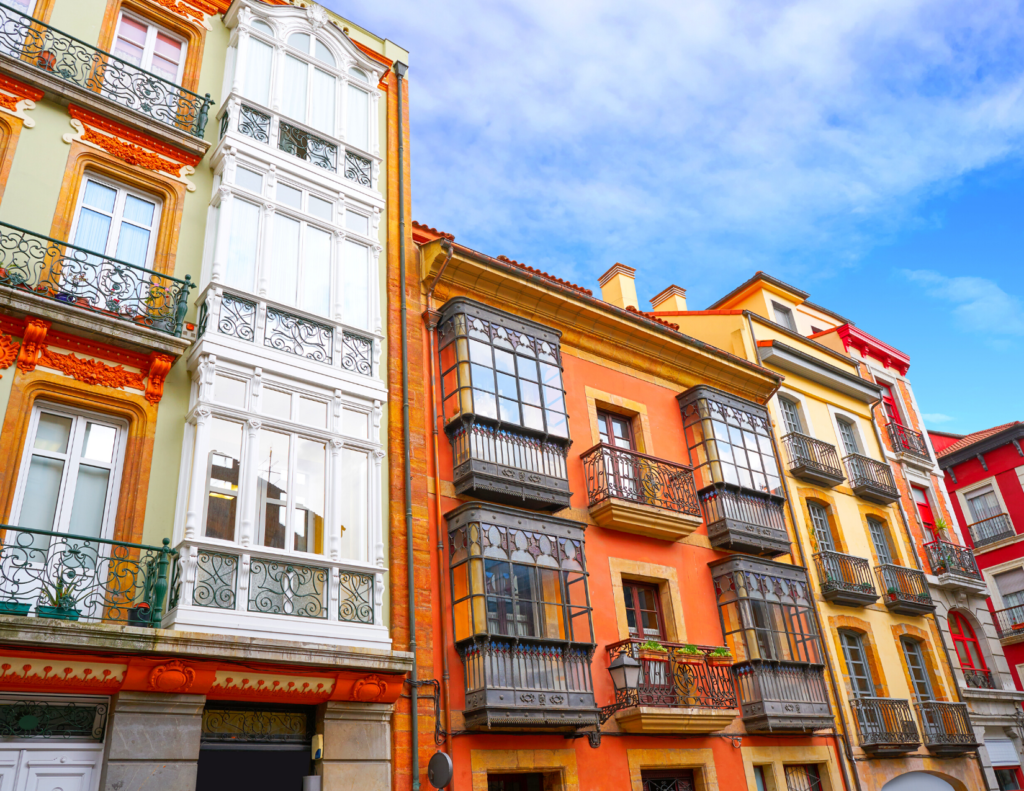
It was designated a UNESCO heritage site in 1985. It’s a 30-40 minute uphill walk or 10 minute drive from the Oviedo city center.
Be sure to indulge in the local Asturias cuisine while in Oviedo. It’s hearty, to say the least. Think meat, fish, and strong stinky cheeses.
Be sure to try fabada, which is a local dish made of beans, sausage, bacon, and ham. Oviedo has many fine restaurants. But I recommend La Corte de Pelayo or La Genuine de Cimadevilla.
Try the the local tipple, Asturias cider. For a proper Sideria, head to Calle Gascona to best sample the local drink. Cider is poured from an impressive height — performance art style — and meant to inject effervescence into a flat drink.
To me, it seemed a little bitter and acidic. I think it’s best sipped with food.
Day 6: Cudillero: Color by the Sea
The next day you’re off to the ridiculously eye catching fishing village of Cudillero, which might be Spain’s prettiest seaside village.
Cudillero is just 40 minutes from Oviedo and well worth the detour. A place of hills, you’ll have to park outside the teeny tiny town and walk in.
In Cudillero, white and pastel houses are piled in a mishmash on top of each other.
There’s a pleasingly startling contrast between the terra cotta roofs and the blue sea. It’s said that each house in the village matches the color of the owner’s fishing boat.
There are ample cafes to rest your feet, feast on seafood, and take in the sweeping views of the village and the sea.
Picture perfect Cudillero is really a must see gem in northern Spain. Don’t miss it; it only takes a half day.
If you’re feeling ambitious, you can add nearby Gijon to your itinerary for Day 6. It’s less than 40 minutes from Cudillero. Spend a half day there or relax over cocktails and dinner.
Or you can book a guided day tour from Oviedo that includes Cudillero and other villages in Asturias .
Gijon is a handsome oceanfront city. It’s packed with buzzy cider bars, cafes, and fishing village vibes.
It doesn’t have the crumbling old world charm of Cudillero. But it’s definitely worth a visit.
If you have enough time, take a walk along Gijon’s coastal path. Hugging the crystal clear Bay of Biscay, it goes from Playa de San Lorenzo, Gijon’s main beach, towards La Nora.
Where To Stay In Oviedo
The Eurostars Palacio de Cristal is a luxury hotel with minimalist modern architecture and great city views. The Hotel and Spa Princesa Munia is a hotel fit for royalty. It has beautifully decorated rooms and a stunning spa.
Hotel Fruela is more low key luxury in the historic heart of Oviedo. Barcelo Oviedo Cervantes is in a handsomely restored mansion. It boats designer rooms and an excellent superfood oriented breakfast.
Day 7: Oviedo To Bilbao
On day 7 of your one week in northern Spain, you’ll drive back to Bilbao. Ah, what a beautiful drive this is. The coast is spectacular.
My flight back to the US was from Bilbao, a much more central hub than Oviedo.
I stopped in 3 villages — Llanes, Ribadesella, and St. Vicente de la Barquero.
They were all incredibly lovely in their own distinct way. You could easily plop yourself down for a week to admire them, preferably in Llanes.
1. St Vicente de la Barquera: a Town Awash in Water
The beautiful village of St. Vicente de la Barquera had my heart at first sight. The drive toward the town is breathtaking.
The ancient Puente de la Maza, with its 28 arches over the river, welcomes you. St. Vicente is surrounded by gorgeous beaches — Meron, Tostadero, and Oyambre.
The pretty village dates from Roman times. For centuries, St. Vicente de la Barquera was a stop on the pilgrimmage to Santiago de Compostela.
Step back in history at the Castillo del Rey, San Vicente’s 13th century medieval castle. From atop the hill, you have beautiful views of the town and, on a clear day, the Picos de Europe mountain range.
2. LLanes: Sophisticated Beach Resort
You don’t necessarily expect sophisticated charm in Asturias, a Spanish region known mostly for its incredible natural beauty.
But LLanes is a cosmopolitan European town. In fact, I was quite captivated by Llanes.
Others adored the beachy town too, judging from the number of people strolling through the vibrant old center, eating and drinking at the many restaurants and cider houses.
Try Covadonga Restaurant on Street Manuel Cue, if you’re hungry and need a lunch break.
Llanes boasts a well preserved medieval city with ancient palaces, still housed within the remains of crumbling city walls. It has a doughty defensive tower, an active harbor, fantastic beaches, and top notch views.
LLanes would make a good base for Asturias, if you want to settle in and relax. It has 32 beaches within its jurisdiction.
Walk out to the breakwater to see Los Cubos de Memoria or The Cubes of Memory. It’s an installation of 66 cubes designed and painted by famous Basque artist Augustin Ibarrola.
The brightly colored work (which was a bit faded when I clapped eyes on it), is the artist’s Andy Warhol -like unsettling contrast between art and nature.
3. Ribadesella: Pretty Port Town
Ribadesella is an old port city, and also very picturesque. Its beautiful broad beach makes it a popular holiday spot.
For a little history, take the 10 minute stroll inland to the UNESCO-listed Cueva de Tito Bustillo .
It’s a series of connected caves with a veritable feast of prehistoric drawing. They date back 35,000 years to the Palaeolithic era.
More Than One Week In Spain?
If you have more than 7 days in northern Spain, there are some great things to add to your itinerary.
1. Picos de Europe
If you have extra time before landing in Bilbao or elsewhere, take a day or two to explore the Picos de Europe, a national park.
The park’s quite large, covering the Asturias, Cantabrian, and Castilla regions. With its breathtaking scenery, it attracts mountaineers and regular adventurers alike.
There are mountains, gorges, verdant valleys, and the stunning Lakes of Covadonga. You may think you’ve fallen into Switzerland.
The atmospheric villages in the Picos de Europe are worth visiting too — Covadonga, Canga de Onis, and beautiful medieval Potas.
If you’re brave, take the Fuente De cable car, named Teleferico Fuente De. You’ll ascend to a rocky plateau, at an elevation of over 6200 feet.
Once there, from the Miradour del Cable, you’ll have epic panoramic views over the Picos (if it’s not a foggy day).
You can book a guided day tour to the Picos from Oviedo or Dijon.
2. Bilbao To Barcelona
Since you are landing in Bilbao at the end of this one week in Spain itinerary, you can keep on driving to Barcelona.
I have a 10 day itinerary that takes you from Barcelona to Bilbao . You can reverse the itinerary and trek from Bilbao to Barcelona.
3. Basque Spain
Alternatively, from Bilbao, you can explore more of Basque Spain.
Basque Spain is unexpectedly and energetically diverse. Every time I’ve traveled there, I’ve been seduced by its breathtaking landscapes, art-filled museums, and UNESCO landmarks, north to south.
This 10 days in Basque Spain itinerary coves Bilbao and San Sebastián. But it also take you to some beautiful small towns and wine regions in Basque Spain.
I hope you’ve enjoyed my one week in northern Spain itinerary. You may enjoy these other Spain travel guides and resources:
- 30+ Hidden Gem Towns in Spain
- 3 Day Itinerary for Barcelona
- 3 Day Seville Itinerary
- 2 Day Itinerary for Madrid
- 10 Day Road Trip From Madrid to Seville
- 10 Day Road Trip in Basque Spain
- Six 1 Week Itineraries for Spain
- 25 Famous Landmarks in Spain
- 10 Day Itinerary for Andalusia
If you’d like to visit northern Spain, pin it for later.
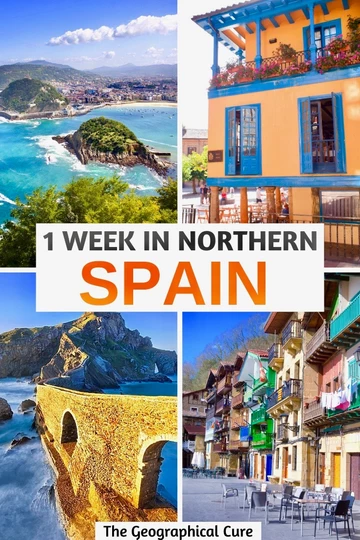
7 thoughts on “One Week In Northern Spain, The Perfect Itinerary For “Green Spain””
Hello! I’m really enjoying your Basque and Northern Spain posts but I’m curious – why don’t you mention the Rioja wine country as somewhere to stay/visit? Is it not that popular for tourists? (I live in Northern California and the wine country is a huge travel destination here!) I’m curious if you have insights about the Rioja area as a place to spend a few nights between Bilbao and San Sebastian.
Yes, it’s popular. I think I mentioned it in my Basque Spain article and in my article on day trips from Bilbao.
Hi! I am curious to know if you had any encounters with the asian hornet (vespa velutina) on your trip? At what time (and year) did you go?
No, I didn’t. I was there in late June to early July.
How is the train system in northern Spain?We are planning on starting in Lisbon and heading north. Is mid-September a good time of year to visit? Beautiful website! Inspiring! We were thinking about doing this, but now we are sure. Thank you. Jean
Thank you Jean! I don’t have first hand experienced with the trains in northern Spain because I drove there. But I’m sure you could get around just fine, except perhaps to some very small towns.
Leave a Comment Cancel reply
Save my name, email, and website in this browser for the next time I comment.
Last Updated on March 21, 2023 by Leslie Livingston
17 Best Things to do in Northern Spain (2024)
This post may contain compensated links. Find more info in our disclosure policy
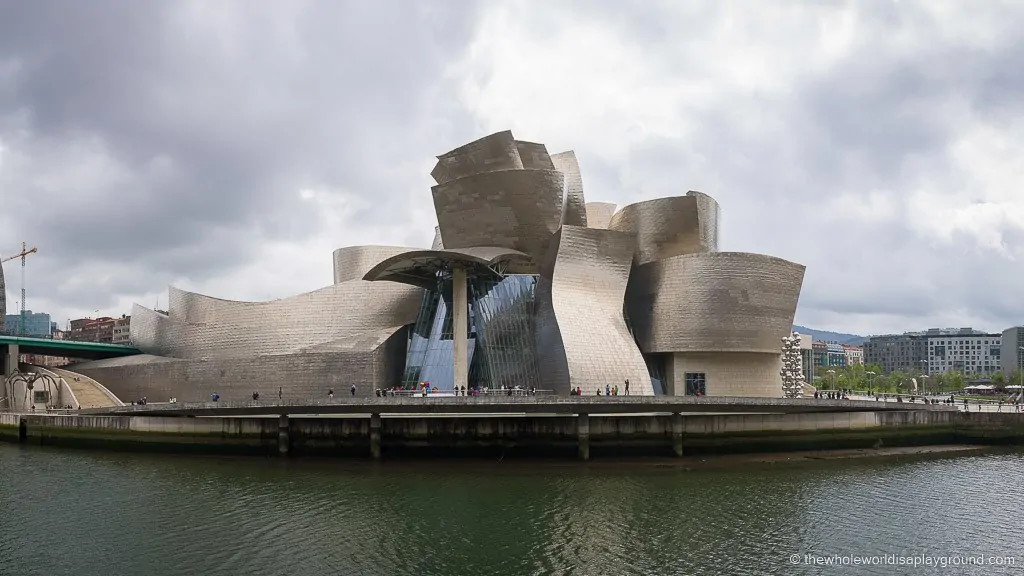
From Santiago de Compostela to Bilbao to Salamanca, a road trip along the coast of Northern Spain is an eclectic mix of quaint villages, stunning coastline, diverse cities, historic gems, world-class vineyards and gastronomical delights! We had an incredible time exploring all it has to offer on a road trip across the region and wanted to share our travel guide to Northern Spain: our favorite sights and the best things to do in Northern Spain.
Table of Contents
The Best Things to do in Northern Spain
There are so many highlights of Northern Spain that it’s impossible to list them all so we’ve included our favorites to help you plan your adventure! We recommend at least one week in order to see all the main sights, however, two weeks is ideal and allows more time to explore the bigger cities like Bilbao and San Sebastian as well as the Alpine landscapes of the Picos de Europa.
Getting to and around Northern Spain
We’re incredibly lucky that Northern Spain is easily accessible from the UK and Ireland by ferry which is perfect for traveling by our car on a road trip through the region.
If you arrive by air a rental car is the best way to get around. Renting a car in Spain is a great way to explore the country and with a world leading motorway network you can see a lot of the country in a short space of time. We use RentalCars.com , where we always find the best rental car selection and prices.
Book your Spain rental car now with RentalCars.com
Basque Country
Spain’s Basque Country is a unique region in the north that has its own language, local food delicacies and stunning landscape all of which are remarkably distinctive from the rest of the country. Our Basque Country favorites are Bilbao, San Sebastian and Juan de Gaztelgatxe together with some of the quaint little villages along the way!
At the heart of the Basque Country, Bilbao is known for its spectacular architecture, amazing cuisine and dramatic coastline which featured on Game of Thrones . The shimmering Guggenheim Museum, designed by Frank Gehry, is an architectural masterpiece and one of the stars of the city. Food is also at the forefront of Bilbao and Michelin Star eateries sit alongside Pintxos Bars, the Basque Country equivalent of Spanish tapas, and traditional family restaurants serving Basque dishes.
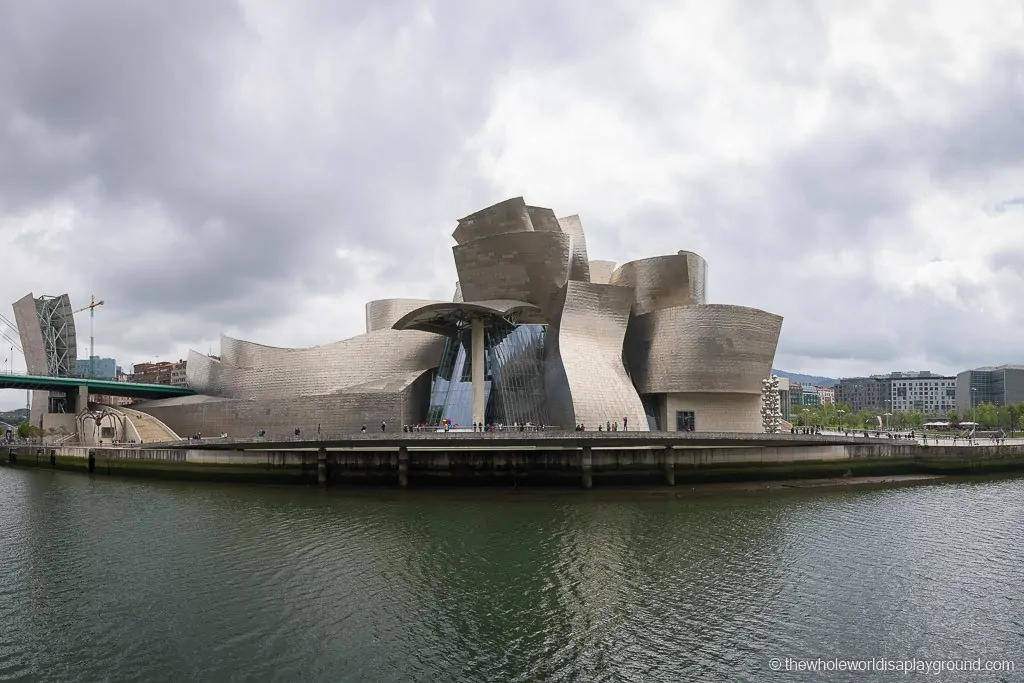
2 | San Sebastian
The picturesque San Sebastian on the Bay of Biscay is a world-renowned foodie destination with a charming Old Town and one of the best beaches in Spain. Foodies can rejoice as San Sebastian boasts the second-highest number of Michelin Stars than any other city, only Kyoto in Japan has more. The city has an incredible 17 Michelin Star restaurants, including three of the 7 Spanish Three-Star Michelin restaurants. San Sebastian was once the chosen holiday destination of Spanish Royalty and the beautiful mix of elegant buildings, cobblestone streets and stunning architecture continues to draw visitors today.
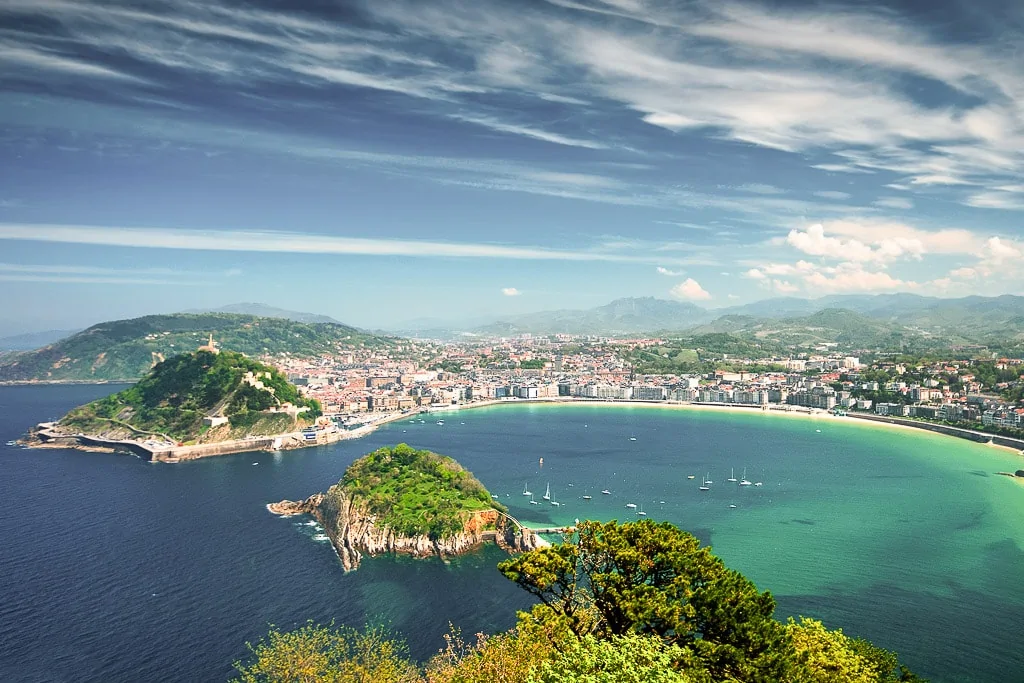
3 | Vizcaya Bridge
The Vizcaya Bridge, a UNESCO World Heritage site, connects the neighbouring towns of Getxo and Portugalete between which the Nervion River passes. It was the first bridge in the world to carry people and vehicles on a suspended gondola which is high enough to allow boats to navigate underneath. The Vizcaya Bridge is located close to Bilbao and is more than worth the trip to experience the gondola crossing!
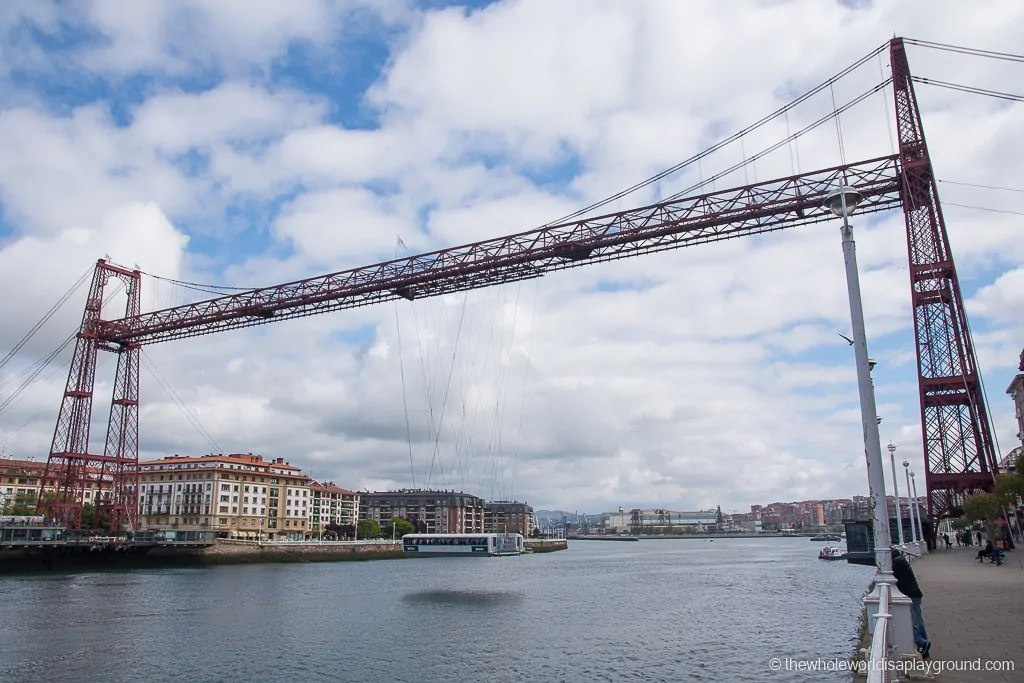
4 | San Juan de Gaztelugatxe
The tiny island of Gaztelugatxe is connected to the Basque mainland by 241 steps and a rugged stone bridge and is one of the most stunning sites in the region. Visitors to the island can explore the historic church, San Juan de Gaztelugatxe, where it’s common practice to ring the bell three times and make a wish. The picturesque island recently shot to fame after featuring in Season 7 of Game of Thrones where it doubled as Dragonstone.
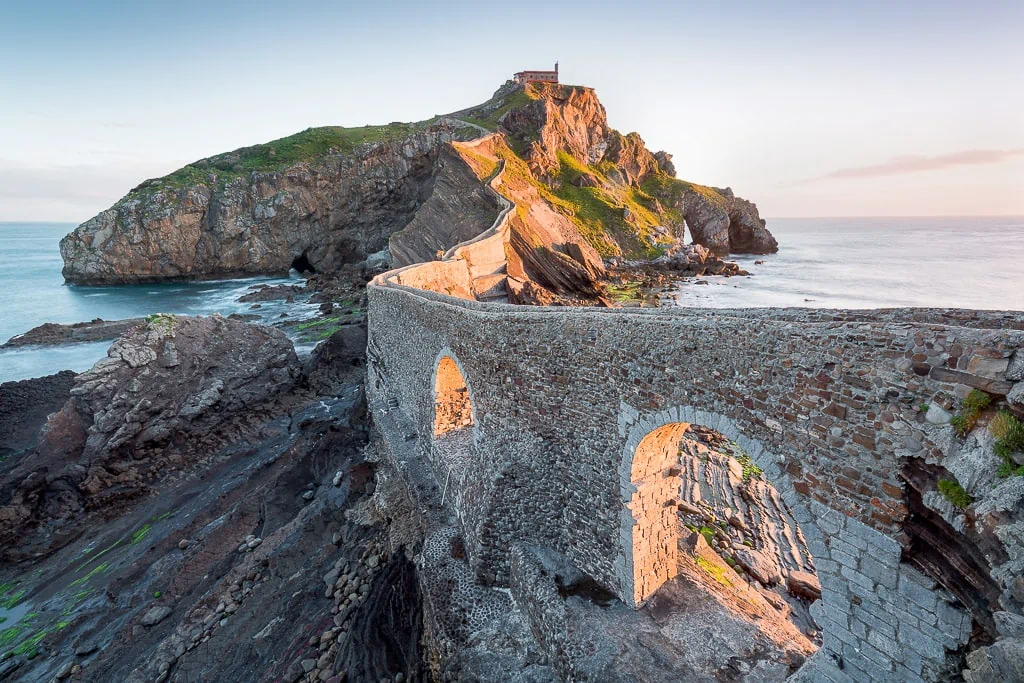
5 | Santiago de Compostela
The beautiful town of Santiago de Compostela is best known as the final stop of the world-renowned Camino de Santiago pilgrimage. The town is an intriguing mix of history and the vibrant energy brought by a jubilant stream of pilgrims arriving after completing the Camino. The Old town is a UNESCO World Heritage site and is considered one of the world’s most beautiful urban areas. It’s incredible to meander through its narrow streets, where wine and tapas bars spill out onto the lively squares, and visit the historic Cathedral de Santiago de Compostela where the remains of Saint James are said to be buried.
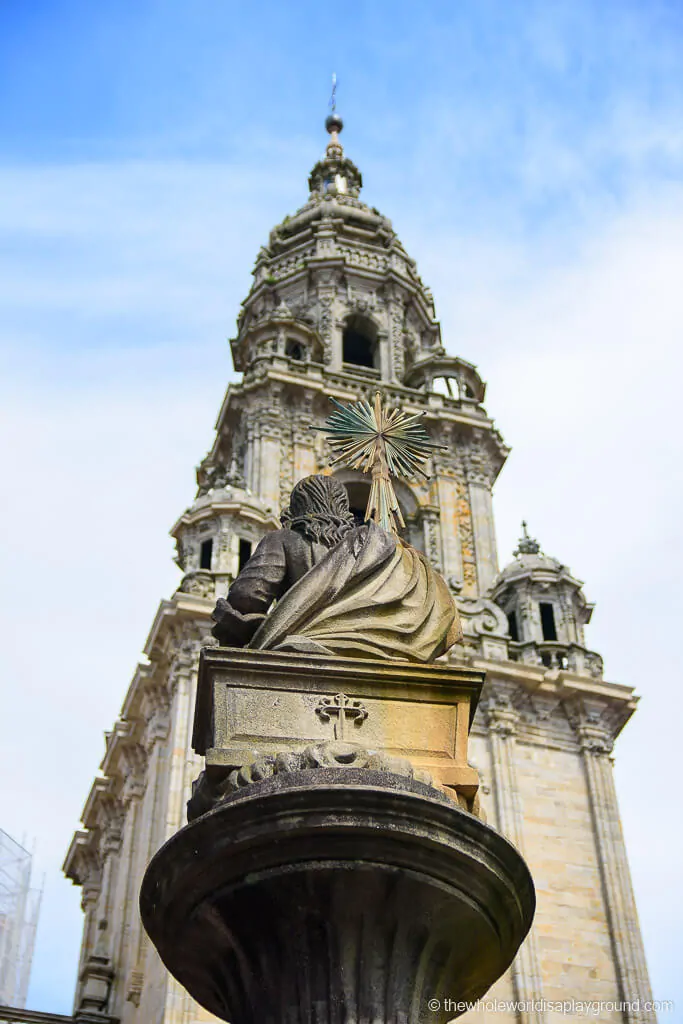
6 | Las Médulas
The burnt orange clay mountains of Las Médulas, once the most important gold mine in the Roman Empire, are one of the most fascinating sights we saw in Northern Spain. The Romans used a complicated aqueduct system to force the water through and, ultimately, rearrange the mountains and are believed to have extracted almost 1,000 tonnes of gold. The viewing platforms offer a stunning panorama of the area and it is also possible to explore the mines by guided tour.
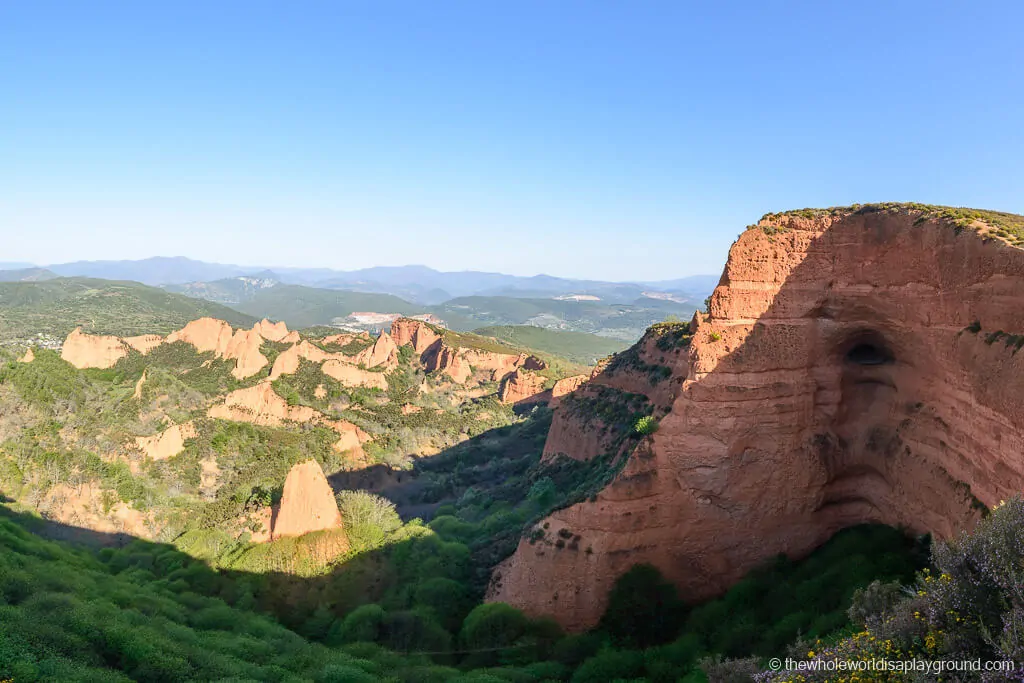
7 | Burgos
The charming city of Burgos is located just south of Bilbao and is one of the main crossroads of the Camino de Santiago pilgrimage. The stunning Gothic Burgos Cathedral in the city centre is designated as a UNESCO World Heritage Site and is one of the finest pieces of religious architecture you’re likely to visit.
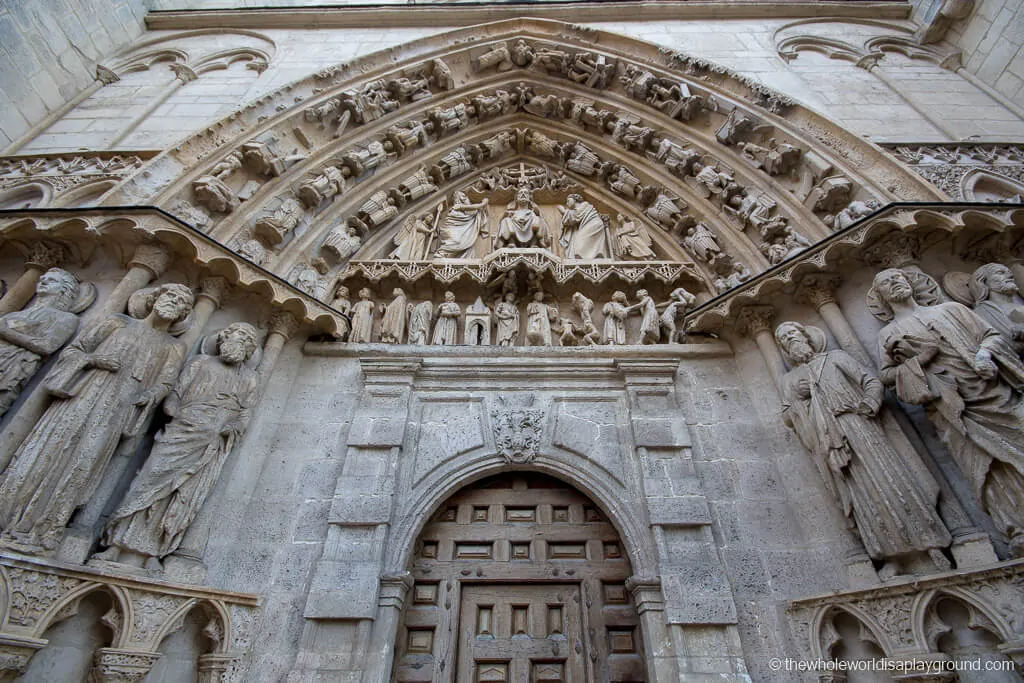
8 | Monasteries of San Millán de la Cogolla
The village of San Millán de la Cogolla is a short drive from Burgos and is home to both the Suso and Yuso Monasteries. Set in the middle of the La Rioja wine region and awarded UNESCO World Heritage status in 1997, the monasteries are a must for anyone visiting Northern Spain. Now uninhabited, tours of the monasteries take visitors through their ornate interiors and the monks living quarters. The first written Spanish and Basque texts have been traced to the Suso monastery.
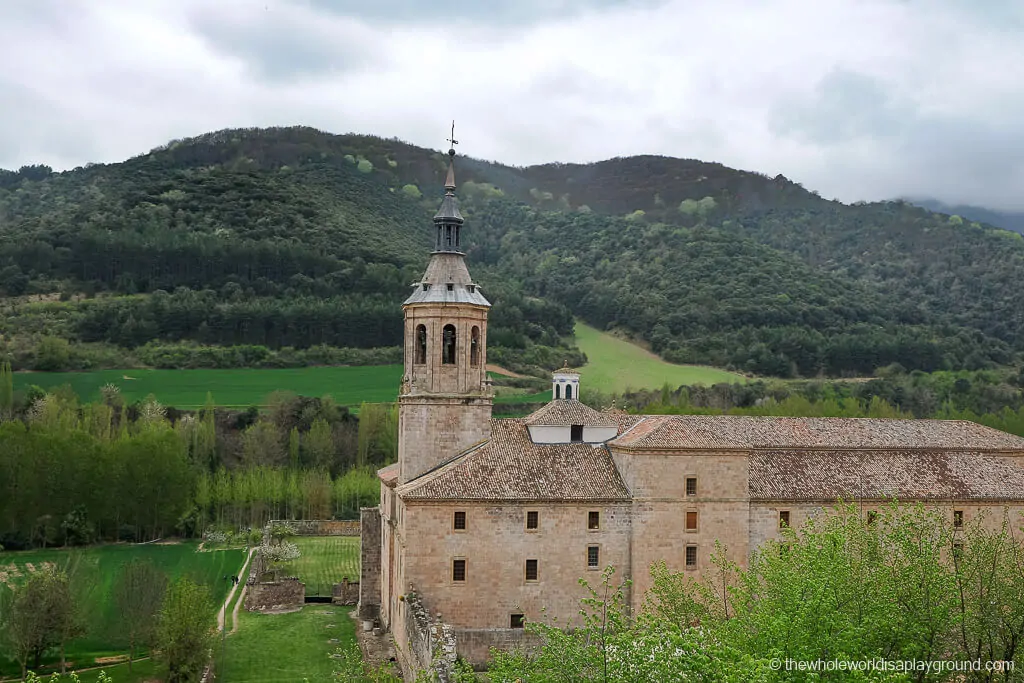
9 | Atapuerca
For the opportunity to explore millions of years of history, the Archaeological site of Atapuerca is a short drive from Burgos. It contains traces of hominid life from a million years ago and one of the major finds included a cave with bones of 32 male and female bodies of all different ages.
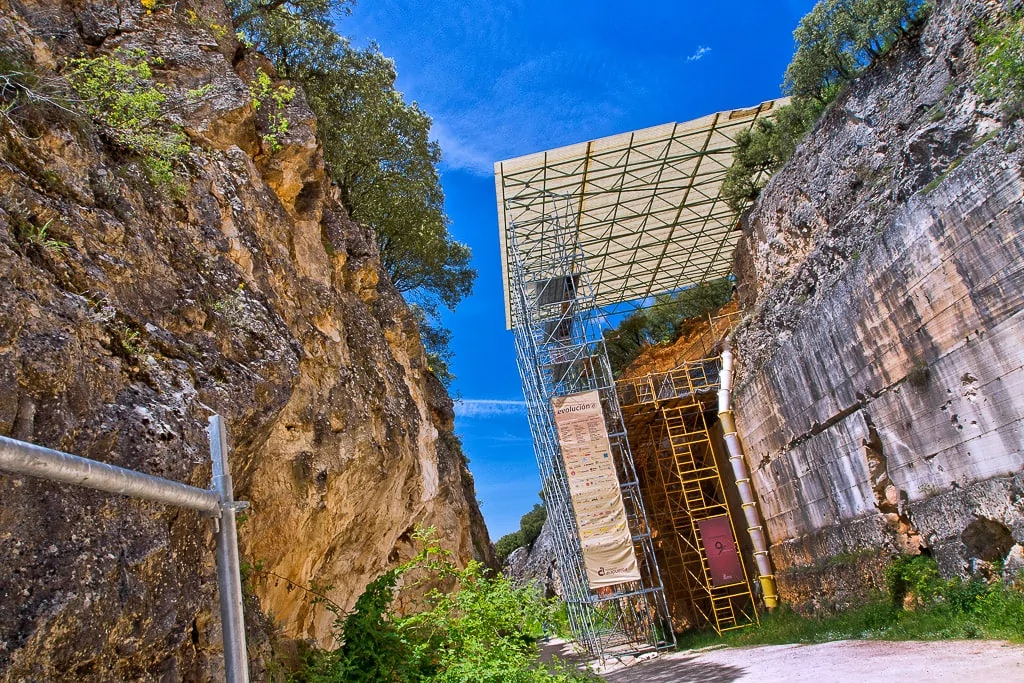
The Asturias region is one of Northern Spain’s hidden gems. From Oviedo, the capital, to the stunning Alpine landscapes of the Picos de Europa, to its renowned cider and cheese, Asturias has a lot to offer.
10 | Oviedo
Oviedo is a charming city and a lovely mix of Old Town and modern. It was founded in 761AD and is home to some of the oldest religious buildings in Spain. The streets are picturesque and there are sculptures dotted throughout the city: if you come across a Woody Allen sculpture it’s because he filmed the movie Vicky Cristina Barcelona in Oviedo! Make sure to sample the Asturian sweet treat Carbayones and get merry on Sidra, the local cider.
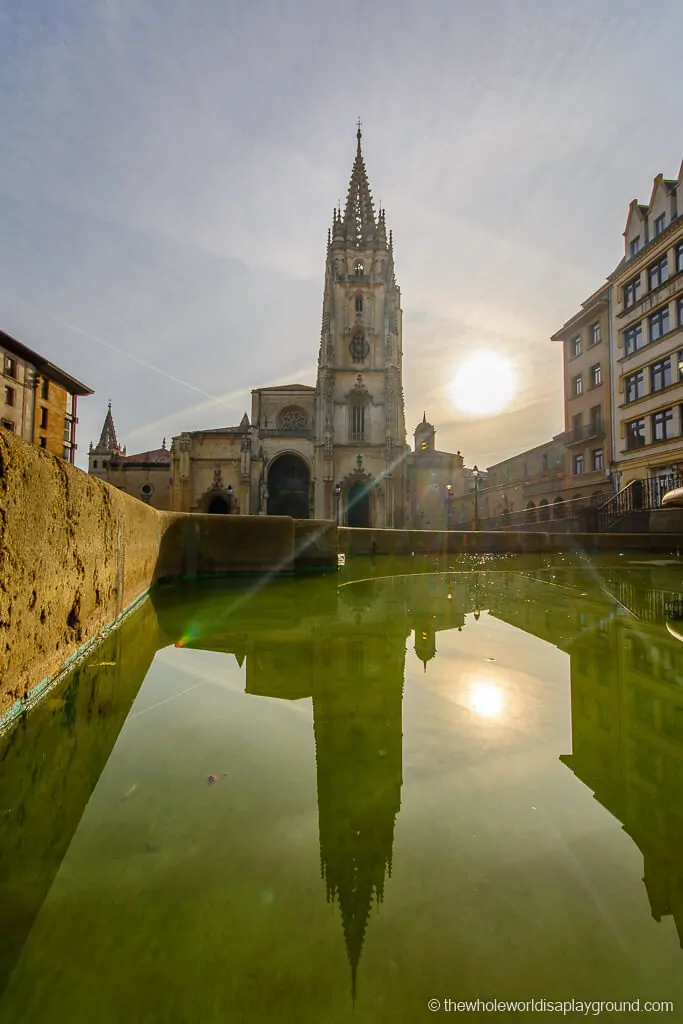
11 | Monuments of Oviedo and the Kingdom of the Asturias
Asturias, founded in 761AD, is credited with keeping Christianity alive in the Iberian Peninsula during the 9th Century and the monuments of Oviedo and the Kingdom are a series of pre-Romanesque constructions from the period. The Oviedo Cathedral and the hilltop Roman churches of Santa María del Naranco and San Miguel de Lillo are our highlights.
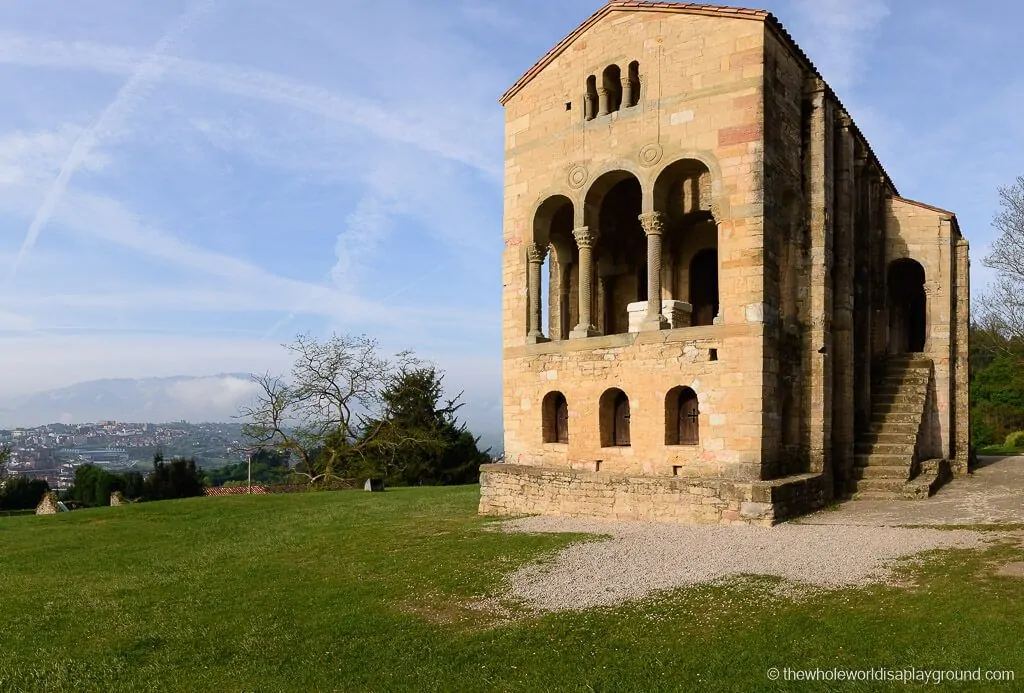
12 | A Coruña, Galicia
The beautiful coastal town of A Coruña boasts sweeping coastal views and incredible food due to its history as a major Spanish fishing port. A Coruña is definitely not to be missed and is most well known for its iconic lighthouse, the Tower of Hercules.
A UNESCO World Heritage Site, the Tower of Hercules towers 50metres above the harbour protecting the entrance to A Coruña. The Tower of Hercules is one of the oldest Roman lighthouses still in operation and is visible for miles.
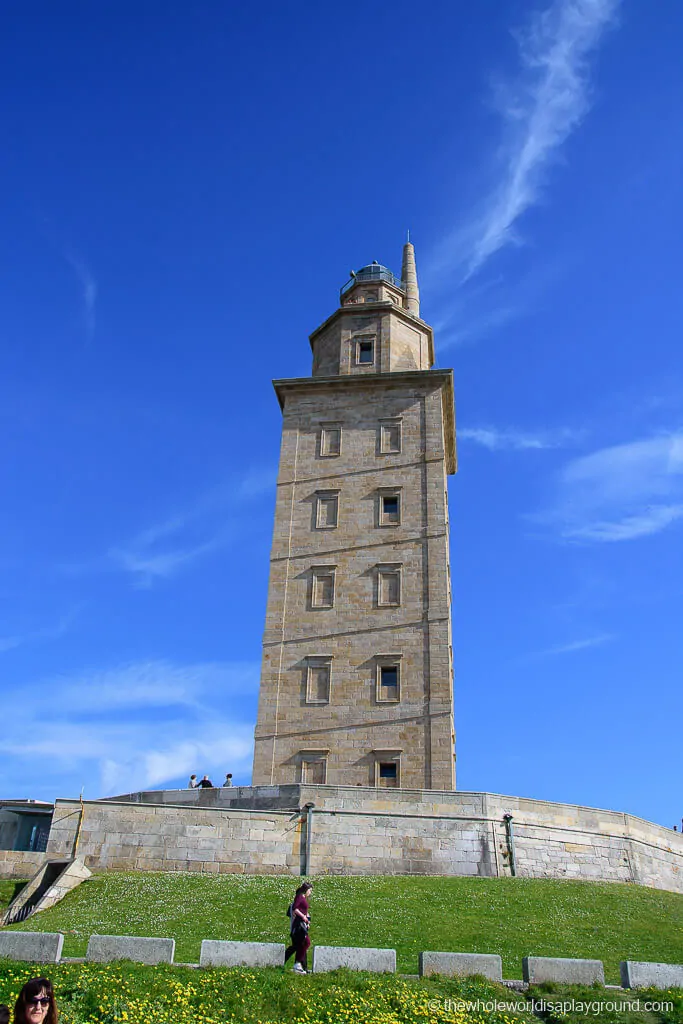
13 | Salamanca
The vibrant university city of Salamanca is a northern Spain gem and one of our favourite cities in the region. The magnificent main square, Plaza Mayor, is the heart of the city and its dramatic architecture is breathtaking. The Old and New Cathedrals dominate the city skyline and a climb up their towers rewards with panoramic views of Salamanca. The university, founded in the 15th Century, is the oldest in Spain and continues to attract a young population which adds to the vibrancy of the city.
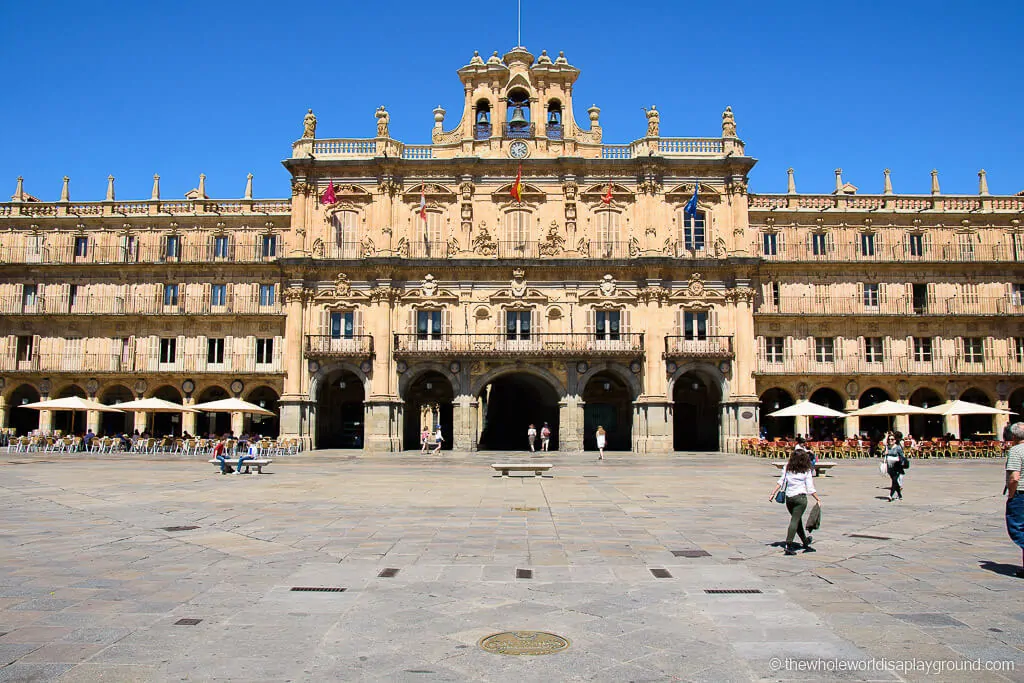
14 | Segovia
Segovia was a Spanish town that really surprised us with its charms! We spent an afternoon exploring the old Jewish quarter, the cathedral and chilling in the park which is overlooked by the beautiful castle of Alcázar de Segovia. Along with Neuschwanstein Castle in Germany, it’s believed that Alcázar de Segovia was the inspiration for Walt Disney’s Cinderella castle and it is easy to spot the similarities and inspirations! Segovia is most well known for the massive Roman aqueduct which runs through the town centre and, together with the old town, forms part of the Segovia UNESCO World Heritage Site.
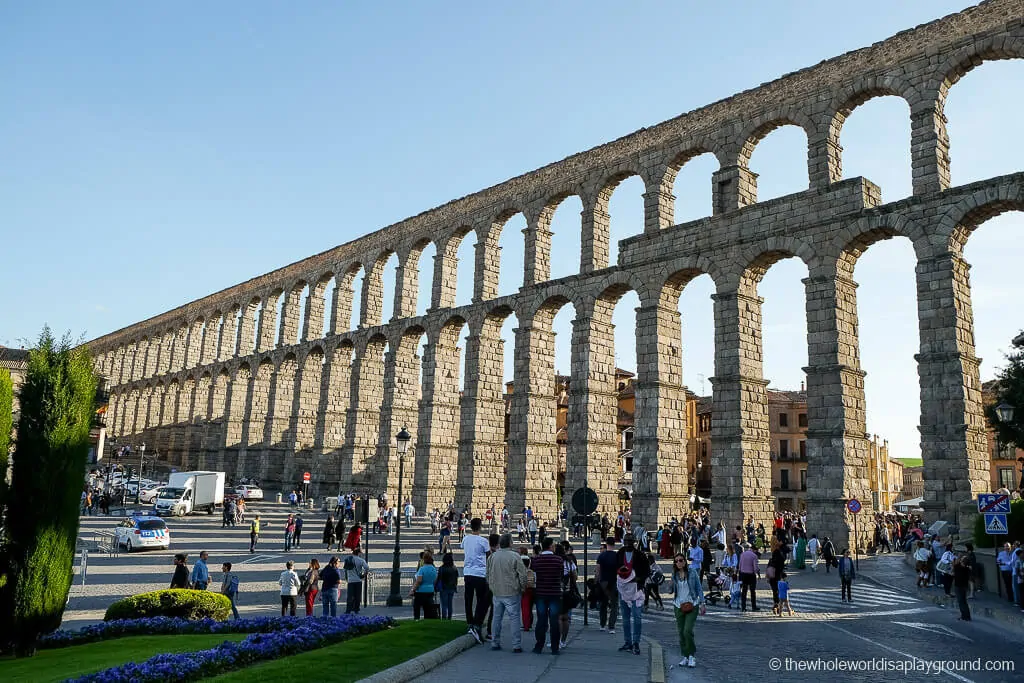
15 | Avila
The old town of Avila is spectacularly surrounded by towering city walls and it is one of the most remarkable and beautiful medieval cities in Spain. Construction of the walls began at the end of the 11th Century and are at their finest in the evening when they are bathed in light. Pilgrims flock to the Convent of St Teresa, a convent and shrine built at the birthplace of St Teresa.
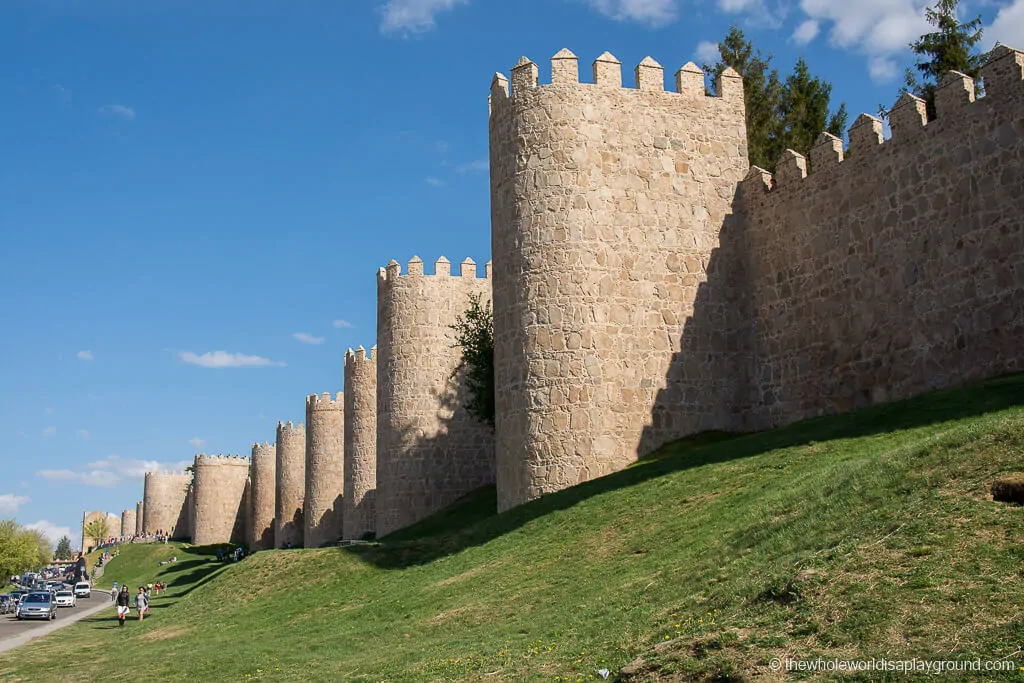
16 | Valley of the Fallen
The Valley of the Fallen is one of the most controversial memorials in Spain. The memorial, consisting of a huge basilica and a towering hilltop cross, was constructed on the orders of the military dictator Franco as a burial place and tribute to those who died in the Spanish Civil War.
Over 30,000 people from both sides of the war are buried in the valley alongside Franco: his tomb is located in the basilica and he is the only person buried in the Valley of the Fallen who did not die in the Civil War.
The monument was completed in 1959 and continues to provoke controversy for a number of reasons: the memorial was constructed through the forced labour of political prisoners some of whom who died as a result, the presence of Franco’s corpse and the lack of a proper burial for so many of those resting in the Valley.
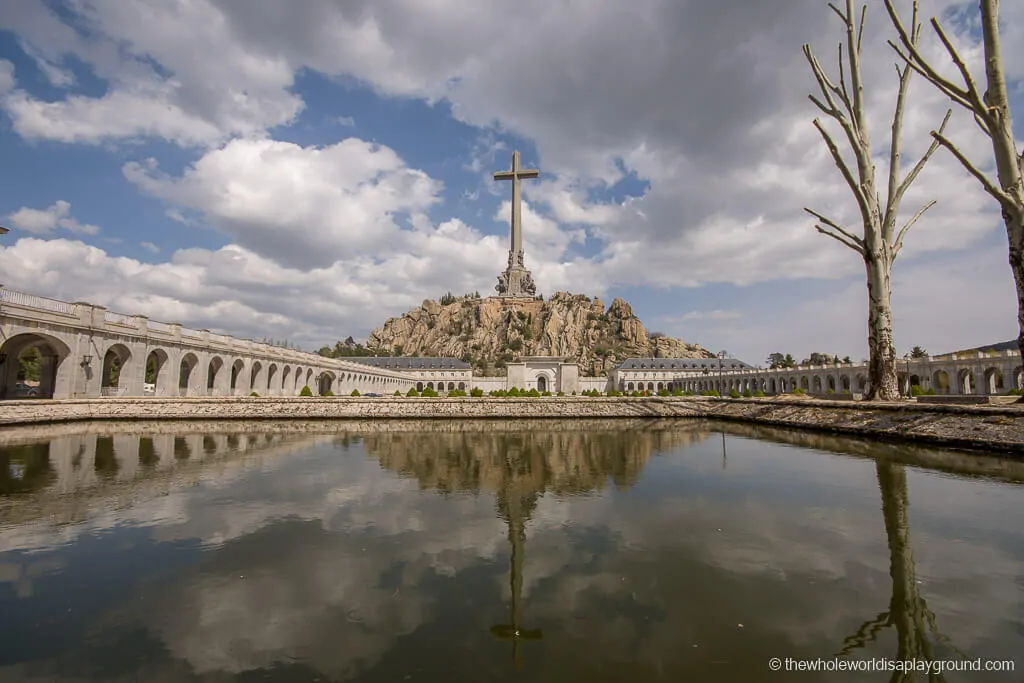
17 | San Lorenzo de El Escorial
Visitors flock to the Monastery of El Escorial in the quaint little town of San Lorenzo de El Escorial. The stunning monastery houses an incredible art collection and boasts stunning frescoes.
The library has a collection of over 40,000 books and the Royal Parthenon contains 26 gold and marble tombs of former Spanish Royalty, both of which are highlights of a visit. The surrounding hills offer some nice hiking opportunities and the town is full of quirky shops and traditional restaurants.
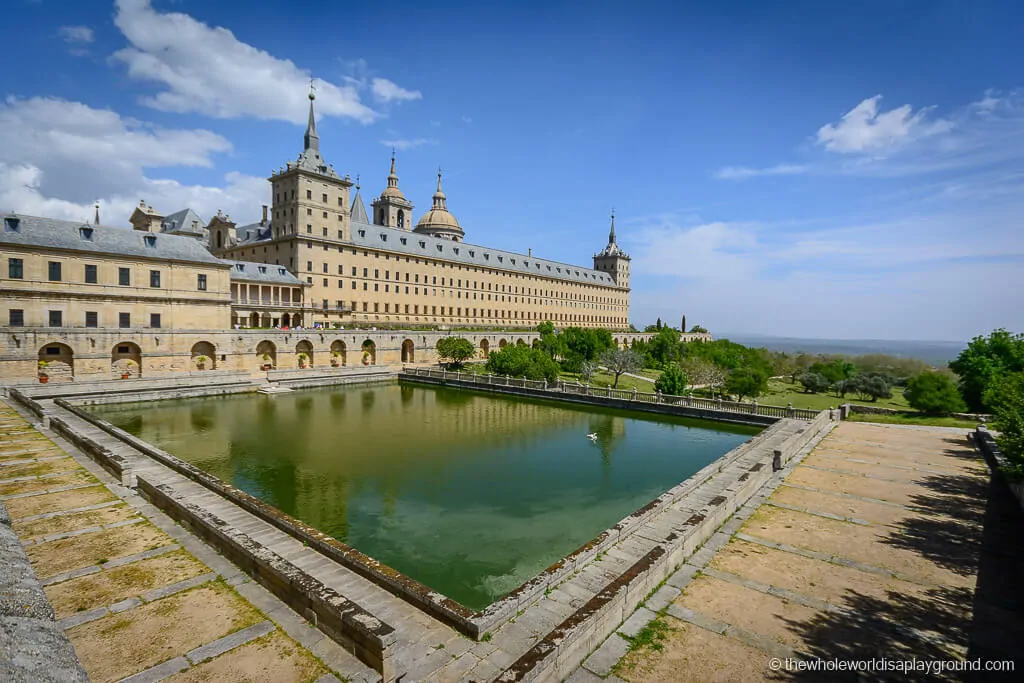
1 thought on “17 Best Things to do in Northern Spain (2024)”
Included in my fave cities in Northern Spain is Santander. Its has a beautiful maritime feel and the beaches are gorgeous.
Leave a Comment Cancel reply
Save my name, email, and website in this browser for the next time I comment.
Disclaimer: As an Amazon Associate I earn from qualifying purchases.
- Cities in Spain
Cities in Northern Spain: 12 locations and best spots to visit

Win a FREE Trip to Spain!
Exciting Announcement! For the first time, we're thrilled to offer exclusive trips to the heart of Spain - an experience like no other. This isn't your typical tourist journey; it's a unique opportunity to immerse yourself in authentic Spanish culture, alongside real locals and our passionate team.
But there's more! Simply by requesting information about this amazing trip, you'll be entered into a special draw to win a Fully Paid Trip to Spain for Two. And that's not all - everyone who inquires will receive an exclusive bonus gift, valued at $500, available only now.
Click Here ↑ to Request Information & Enter the Draw!
Mountains, Vulcans, forests, rivers, valleys, beaches, lakes… Everything that you could ever imagine we have it in Spain.
I’ll tell you everything about Northern Cities in Spain on this post. Places to go, landmarks, famous historical locations, and gastronomy to discover! And you’ll agree with me that Spain is blessed with incredible nature, landscape, paradisiac views, surprising and diverse places you only see in movies (literally).
BUT, I want to focus on the Northern Cities for this one… since there’s a misconception that the North zone is full of cold people, cold places, nothing to do, and most individuals might think that anything worth visiting limits the big and southern cities .
You’ll have to see some places for yourself to believe it, and dishes will leave you drooling. Everyone always says that the North has delicious gastronomy (and some generous portions too!)
So… let’s take a trip to the upper part of the Iberian Peninsula .
Table of Contents ▼ ▶
1. San Sebastián, País Vasco
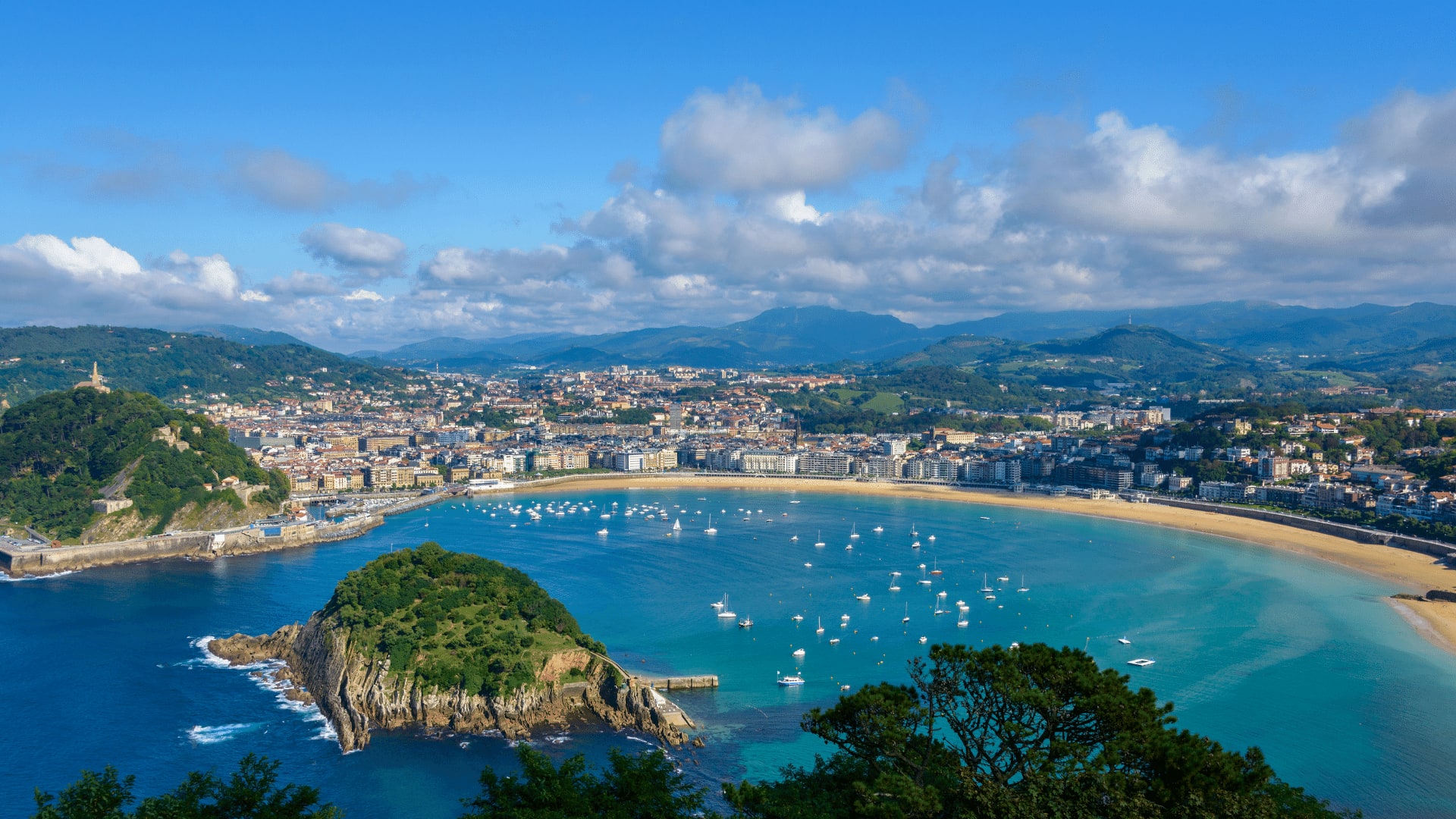
San Sebastian (Donosti in Euskera, their language) is a cosmopolitan but relatively small city of approximately 186.700 inhabitants.
This city is unique thanks to its delicious gastronomy, stunning urban beaches, and French architecture. It has complete leisure and cultural offer, allowing visitors and tourists to have an excellent time in this city. It’s ideal for a weekend getaway or a “bridge” during a national holiday, so you grasp the idea of everything it has to offer.
Beaches you MUST visit if you ever go to San Sebastian are:
- La Concha Beach / (Playa de la Concha): perfect for spending a lovely afternoon walking on the sand.
- Zurriola Beach: Best for surf lovers!
- Ondarreta Beach
Landmark and Historical Places to visit:
- Iglesia San Vicente
- Artzain Onaren Katedrala
- Old town hall
- Castillo de la Mota
- Plaza de la Constitución
San Sebastián is also known for The International Film Festival in September, where international stars arrive in the city! And if you’re lucky like me, maybe you can find Chris Hemsworth at the entrance of the emblematic Maria Cristina Hotel! (I have proof at the back of this post :) )
Moreover, this city is also the world capital of gastronomy and pintxos!!! (which are basically the same as Spanish tapas, but how they call it in the north). San Sebastian is home to the highest concentration of Michelin stars per capita in the world!!
I suggest you continue your visit by tasting the traditional pintxos in the so-called “Parte Vieja.” BUT good pintxos are in almost any corner of the city! -Not only in the old town.
We could talk about ages about ideal places for pintxos and restaurants in San Sebastian, but let me highlight some of my favorites:
- La Cuchara de San Telmo: “Pintxo de Foie”
- La Viña: This place has the BEST Cheesecake or “Tarta de Queso” ever. Recognized internationally by many… including the New York Times, as the “Flavor of the Year.”
- Ezkurra: Try the “Ensaladilla Rusa”
- Atari: Solomillo
Order any Pintxo that says “Foie” or “Solomillo,” and you’ll thank me later!
2. Santander, Cantabria

The charming city of Santander is the capital and largest city of the Autonomous Community of Cantabria. It’s on the north coast and has many beaches, ferries from Great Britain, and a small historic center. Santander can be considered small. The distance from one end to the other is about 4 miles. And, within the city center, everything is basically within walking distance.
Landmarks and Historical Places:
- Palacio de la Magdalena
- Prehistoric and Archaeological Museum of Cantabria
- Maritime Museum of Cantabria
- “Nuestra Señora de la Asunción de Santander” Cathedral
- Centro Botin
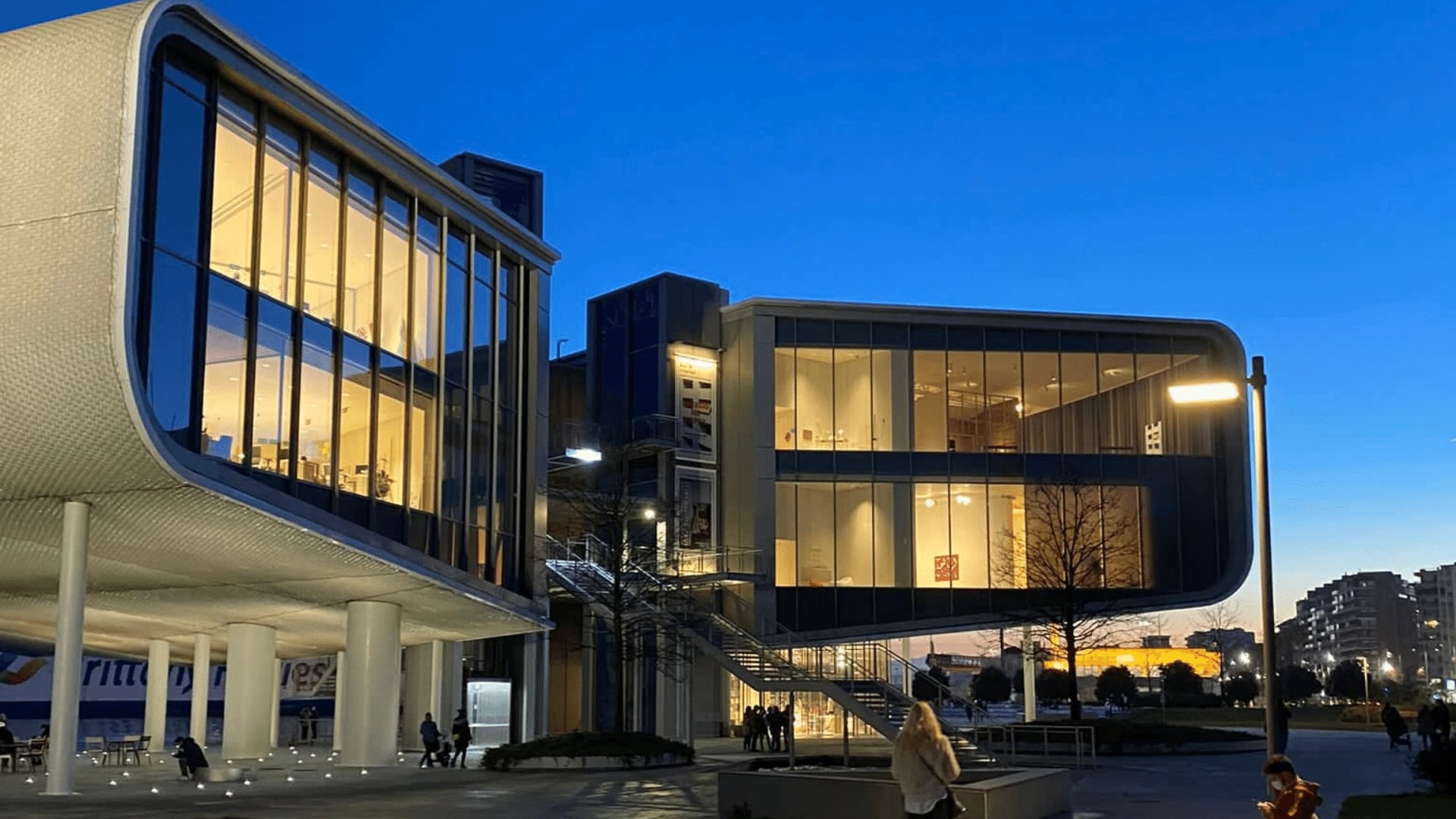
Important info for art and architecture lovers: Centro Botin is the city’s most important art center. The gallery is in a futuristic building, highlighting art in many different forms, from videos and photography to painting and sculpture. Visitors can explore some of the works of many international artists, such as Carlos Garaicoa, Mona Hatoum, and Joan Jonas.
Streets to visit:
- “Plaza de José Antonio (Plaza Pombo)”
- “Paseo de Pereda”
- Castelar Street
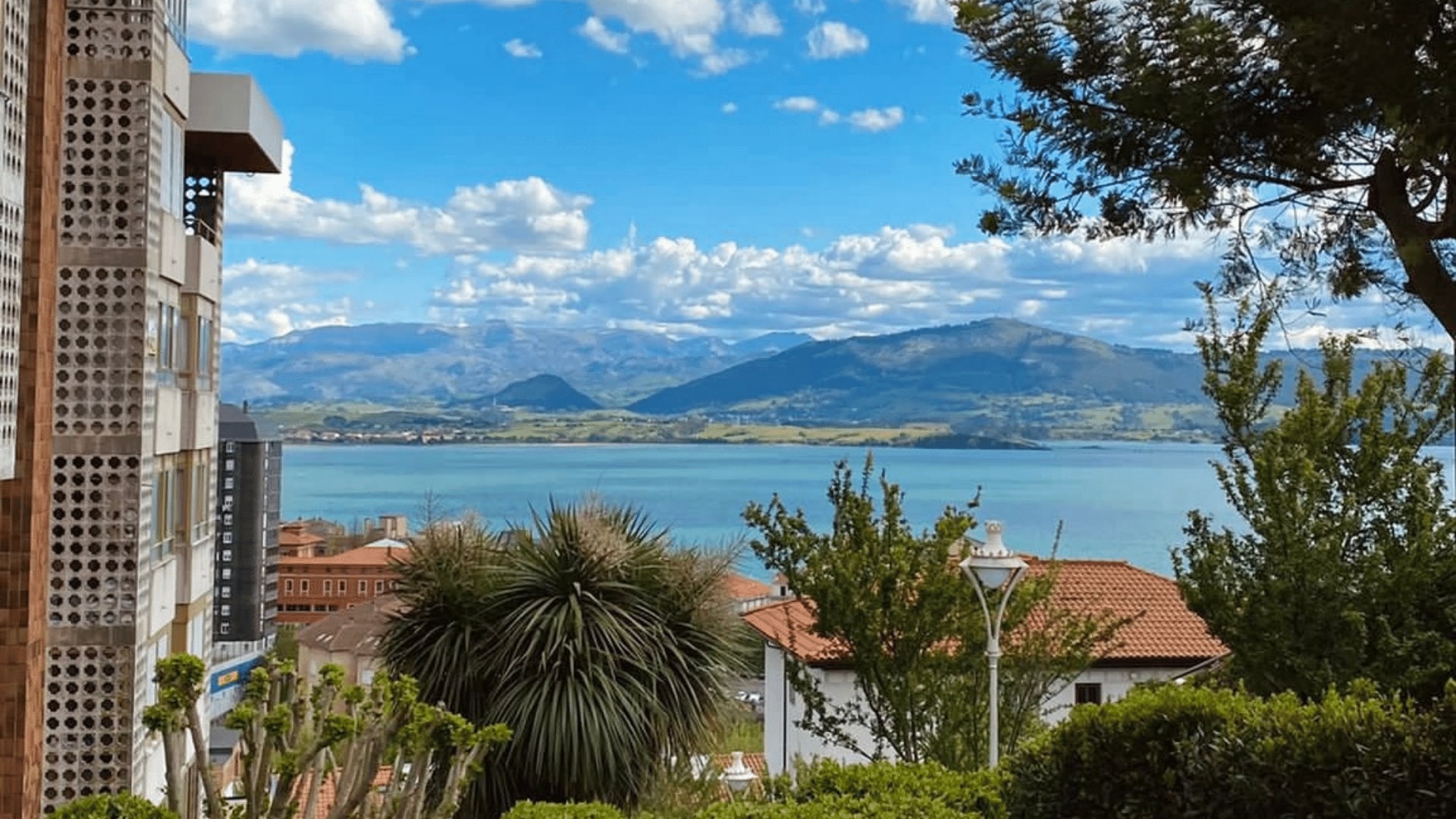
Beaches to visit:
- Magdalena Beach
- Sardinero Beach
- Camello Beach
3. Santiago de Compostela, Galicia
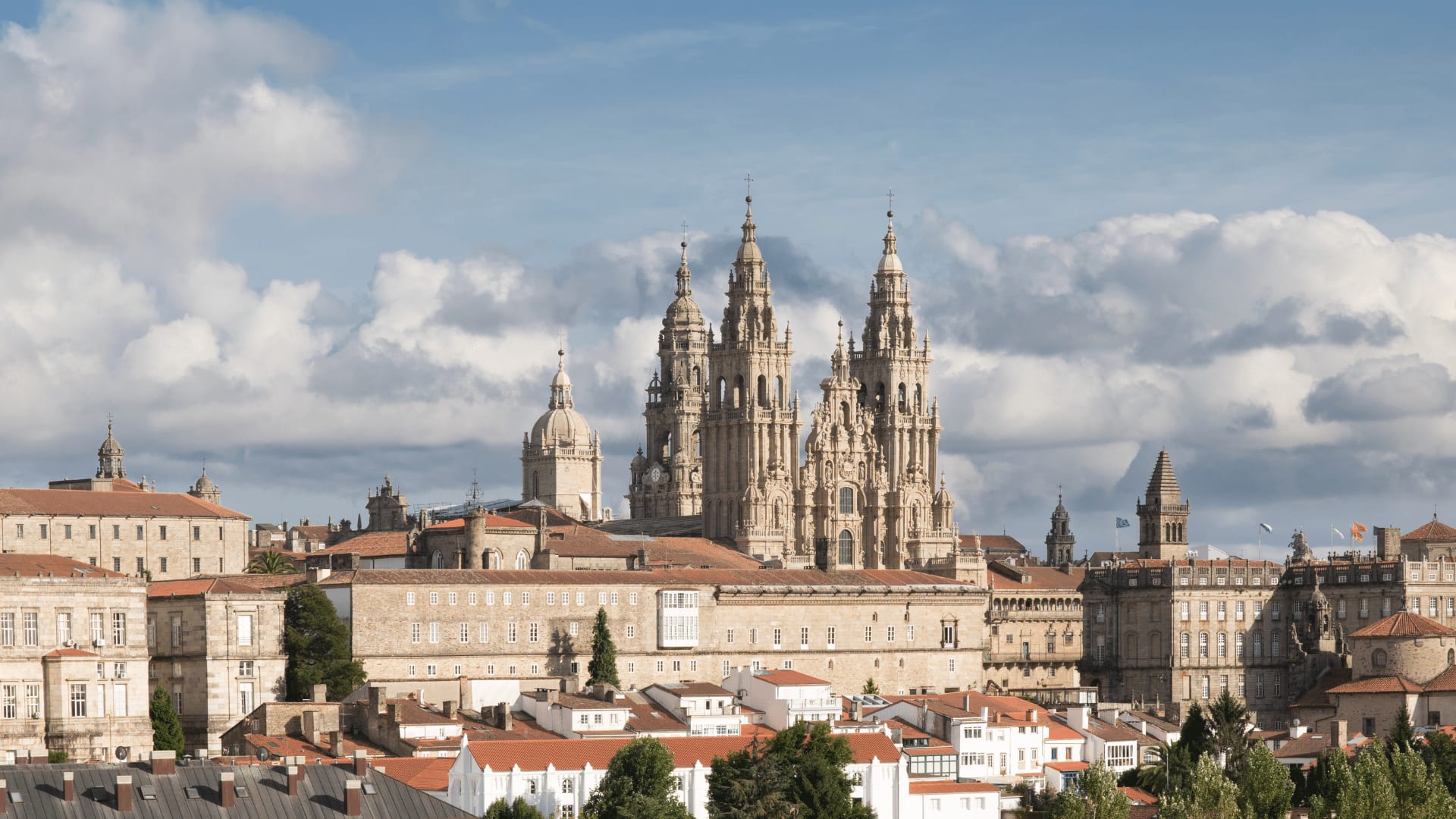
Santiago de Compostela is the capital city of Galicia, in the northwest of Spain. It’s well-known for having many historical sites, and the city is also one of the most important places in Catholicism, where one of the 12 Apostles of Jesus was buried. It’s famous for the Way of St. James, or “Camino de Santiago,” a Christian pilgrimage route ending in Santiago.
The city’s official languages are Galician, which has many similarities to Portuguese since it’s so close to the border, and Spanish.
Landmarks and Historical Places to visit:
- Praza do Obradoiro
- “Santiago de Compostela” Cathedral
- Rajoy Palace
- Quintana Square
- Catholic Kings Hostal
- Cathedral Museum
- Galician Center of Contemporary Art
Gastronomy:
Santiago de Compostela is well-known for having fantastic gastronomy and a wide variety of plates and dishes to die for!
You should definitely try the following:
- “Vieiras Gratinadas”
- “Caldo de Grelos Gallego”
- “Pulpo a la Gallega”
- “Empanada Gallega”
You might wonder what “Gallego” means that you have never eaten it before… Me neither! :p That word refers to natives from the Autonomous Community of Galicia. They’re called Galicians or “Gallegos” in Spanish.
4. Oviedo, Asturias
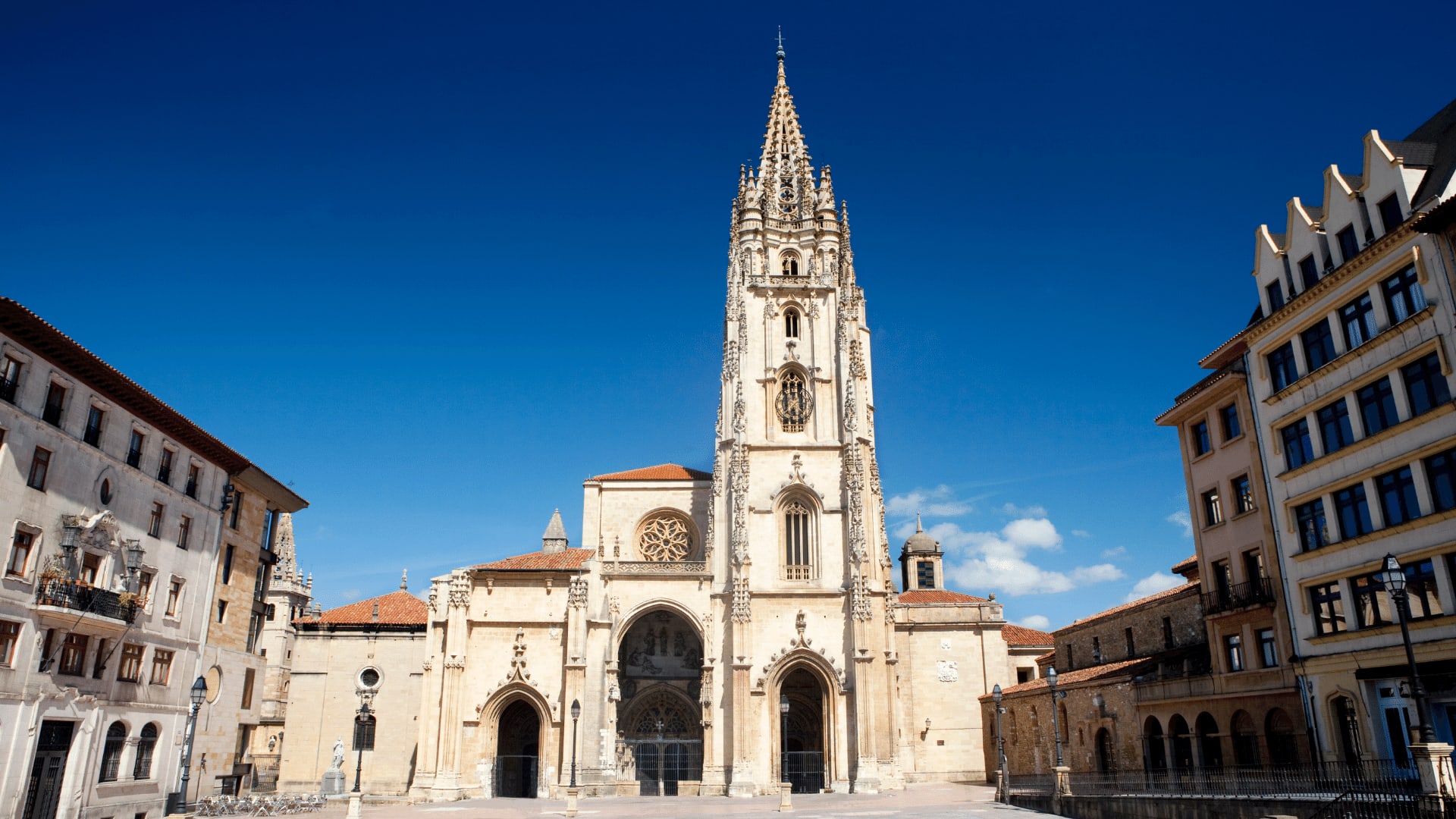
The city of Oviedo, located in the heart of the province of Asturias, is known for many historical monuments, Pre-Romanesque art, gastronomy, nature, and culture.
The old town of Oviedo, The “Casco Antiguo,” has some beautifully restored buildings and squares. Most of the city center can only be visited by walking. (Like many other cities in Spain) because cars are not allowed in the streets.
Some of the most outstanding landmarks in Oviedo are:
- Cathedral of San Salvador
- Museum of Fine Arts
- Monte Naranco, where you’ll find Santa María del Naranco and San Miguel de Lillo
- Plaza del Fontán
- El Campo de San Francisco
As for the culture, many activities and local festivities highlight local food, folk groups, and local costumes, so keep these dates in mind if you really want to get to know Asturias’ culture.
Traditions and Culture in Oviedo:
- “La Hoguera de San Juan” - June 23 , they have bonfires all over the city and in the Square of the Cathedral.
- “Fiestas de San Mateo” - September 19. A procession takes place through the main streets in honor of the Asturian emigrants in which, at the end of the day, people can enjoy watching some fireworks in Parque de Invierno.
- Fair of La Ascensión - May. It’s a fair dedicated to the Spanish countryside . Many arts and crafts markets, local producers, and folk groups play music in the streets.
- La Balesquida or Countryside Tuesday - First Tuesday of Whitsun. They do a procession in front of the Cathedral, and then they hand out traditional f ood.
5. Bilbao, País Vasco
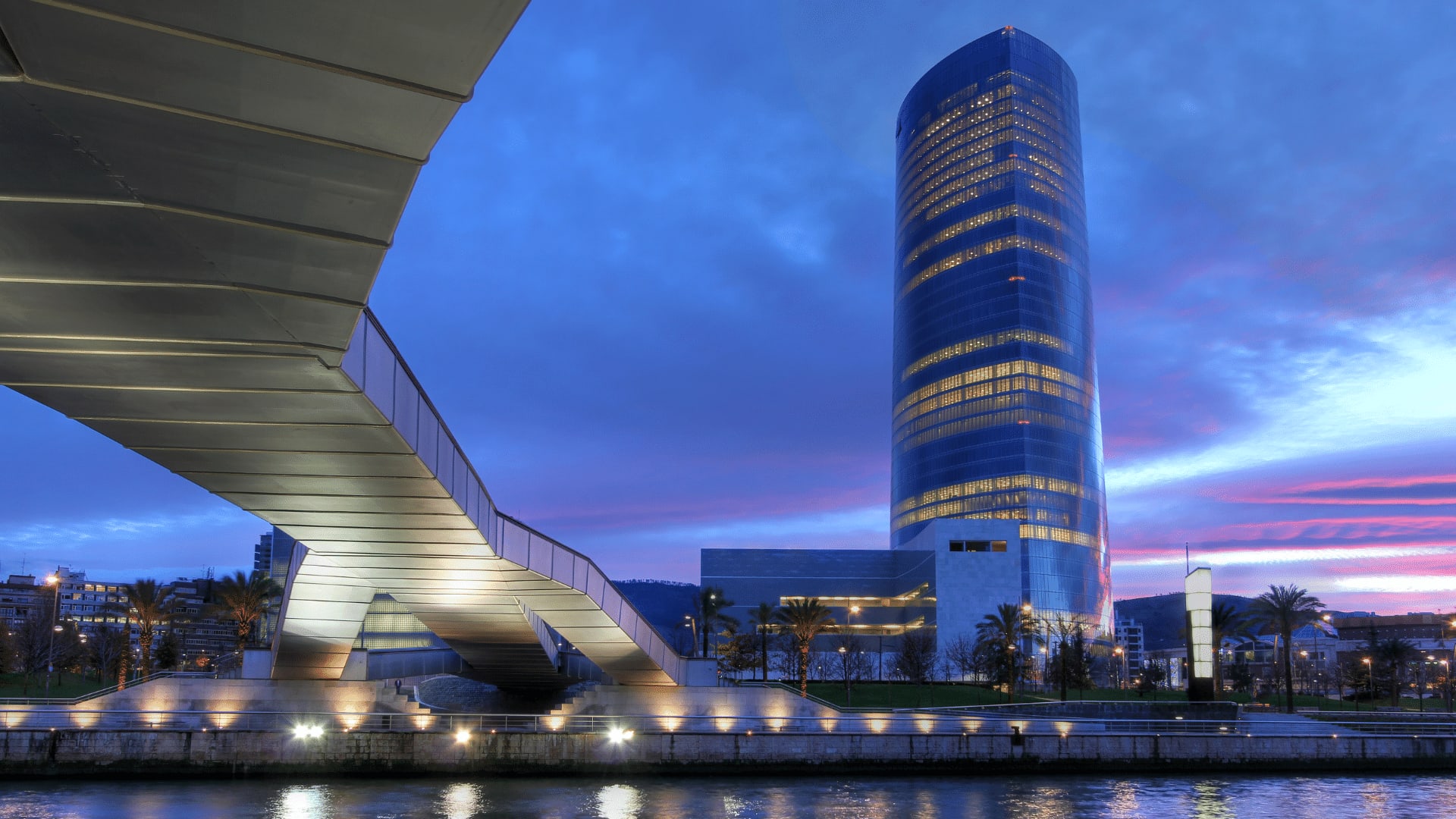
Bilbao is the largest city in the Basque Country. It has a population of about 350,000 people. It’s actually one of the best places to deeply understand and experience the ancient culture and language of the Basque people .
Places to visit:
- Guggenheim Museum - It is a MUST for modern art fans!
- Bellas Artes Museum
- Begoña basilica
- Basque Museum
- Moyua Square
- St. James Cathedral
- Church of San Anton
- Maiona stairs
The only UNESCO World Heritage site in Spain listed in the industrial category is found in Bilbao! It is called the Vizcaya Bridge -Also known as Puente Colgante. The city offers tons of things to do. It has world-class museums, mouthwatering food, mesmerizing history and culture, and friendly locals. But I must say Bilbao is a gloomy city, though the weather is never an excuse for Spaniards to enjoy life to the fullest.
I suggest you take a nice walk through the city since it has impressive modern architecture surrounded by green countryside. And, if you get hungry, remember what we talked about, pintxos! They are excellent in Bilbao as well. They eat pintxos either for breakfast, mid-morning snacks, before lunch, or even starters. Pintxos are for whenever you crave them!
6. Zarauz, País Vasco
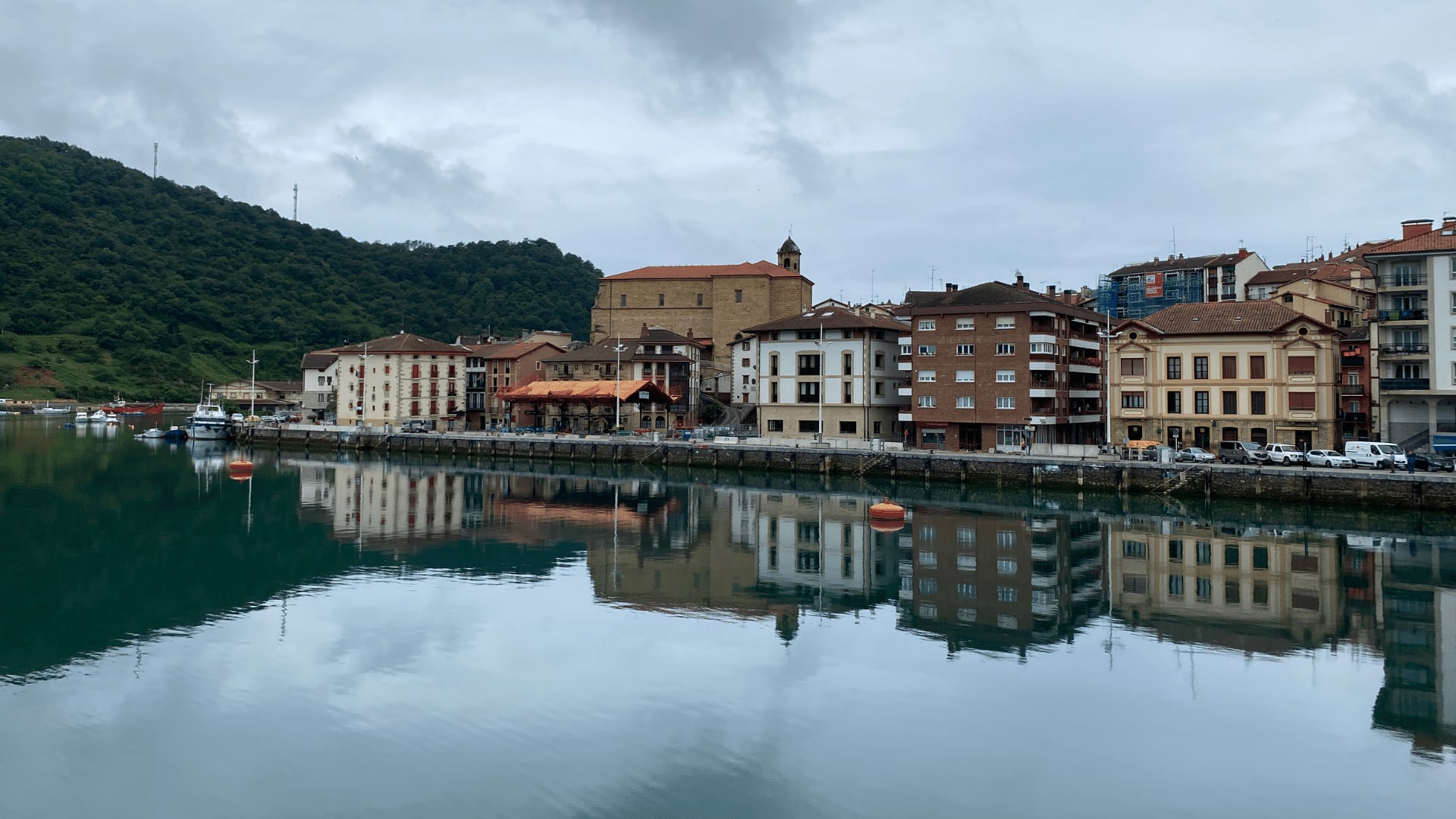
Zarauz (Zarautz in Euskera, the official language) is located in Northern Spain in Guipúzcoa, (in the Autonomous Community of the Basque Country). This tourist village is the perfect destination for surf lovers, and the main thing to see is Zarauz Beach, the longest one on the coast of Guipúzcoa. The city has approximately 25000 inhabitants, considered part of the metropolitan area of San Sebastian, and it’s pretty easy to get to Zarauz from San Sebastian or Bilbao.
Best Parks to visit:
- Park of Pagoeta
- Vista Alegre
- Torre Luzea
Best Places to visit:
- Palacio de Narros: The summer spot of the Queen Isabel II of Spain and the Queen of Belgium, Fabiola!!! This place is located in front of the main beach.
- The old town
- Church of Santa María la Real
- Luzea Tower
- Bay of Biscay - Perfect beach for surfing!
Zarauz offers a broad range of accommodation and hospitality services so everyone can enjoy local gastronomy! Fish is the base of every typical dish and the best time to visit this place is June or August since festivities around those dates take place, and the city welcomes lots of people!
7. Hondarribia, País Vasco
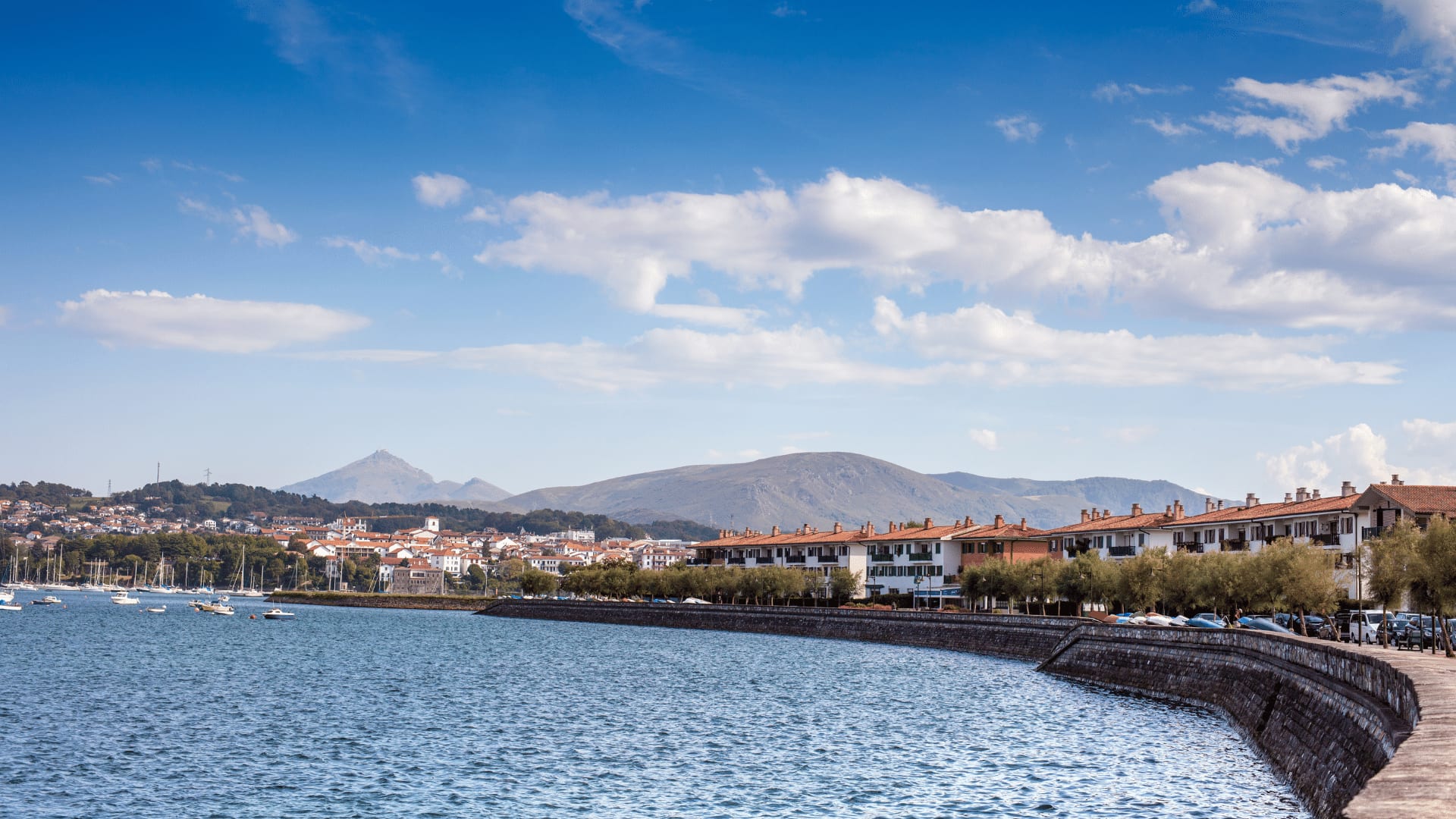
The fascinating city of Fuenterrabia (officially Hondarribia, in Euskera) is a city and municipality in the Basque Country. It’s in the extreme northwest of the province of Guipúzcoa. And also a place where you can enjoy a nice dip at the beach while looking at France!
Yes, you’ve heard that right! The bay is formed by the mouth of the Bidasoa River in the Bay of Biscay, basically the international border between Spain and France .
The city is mainly a tourist and residential location, perfect for a daytime getaway.
- Beach of Fuenterrabía
- The Old Town
- Zuloaga Palace
- Calle Mayor (Main Street)
- Plaza de Armas
- Iglesia parroquial de Santa María de la Asunción y del Manzano
- Ermita de Santa Engracia
- Santuario de Nuestra Señora de Guadalupe
- Ermita de Santa Bárbara
Valeria, 23 years old from Ecuador: Hondarribia is one of those places that makes you fall in love when you get there. It has the most incredible views ever, a fantastic atmosphere, and it’s the perfect place to see the “best of both worlds” (France and Spain). The city feels like a combination of a modern beach town with old and influential historical culture. I’m sure it surprises anyone that goes there!
8. Vigo, Galicia
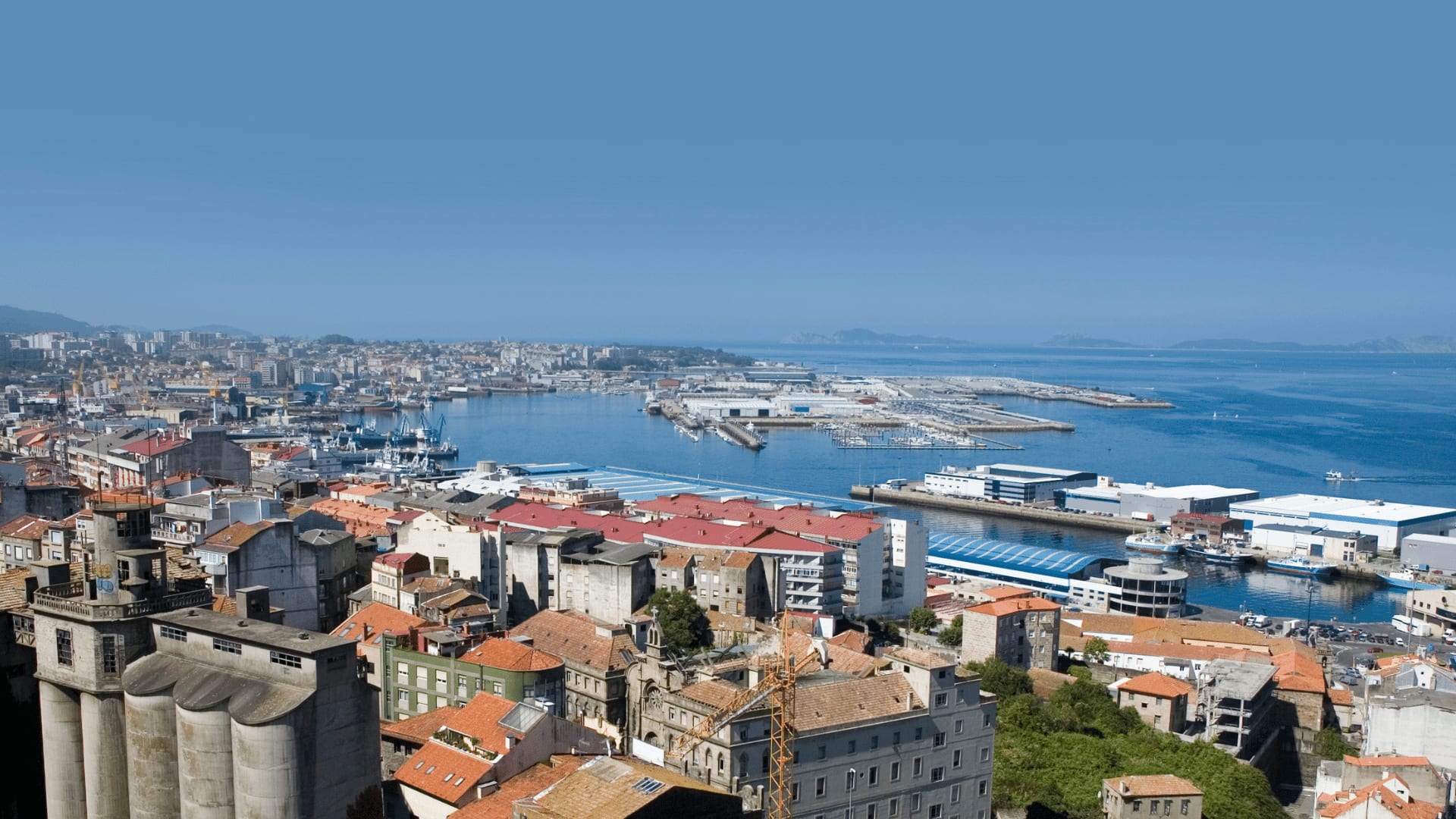
Vigo is known for being one of the most important Roman centers in Pontevedra and one of Galicia’s most significant industrial cities. Many Roman ruins remain in multiple neighborhoods and parishes.
Romanesque churches to see:
- Santa María de Castrelos
- Santiago de Bembrive
- San Salvador de Coruxo
Remarkable buildings:
- Museum of Contemporary Art
- San Sebastian Fortress
- Santa Maria Church
- Porta do Sol
- Jules Verne Monument
- Municipal Museum of Vigo
Places to go:
- Barayo Natural Reserve: (Beach, Estuary, River, and Cliff)Senda Costa Naviega
- Playa de Flexulfe
Interesting fact: In the municipality of Vigo, we can find The Cíes Islands. A paradisiac place for nature lovers! The islands are one of the most visited tourist places in Galicia. And make the National Park of the Atlantic Islands of Galicia formed by 3 islands: Monteagudo, Do Faro, and San Martiño. In this gorgeous paradise, we can highlight “Playa de Rodas,” which was awarded “The Best Beach in the World” by the well-known newspaper “The Guardian.”
9. Pamplona, Navarra
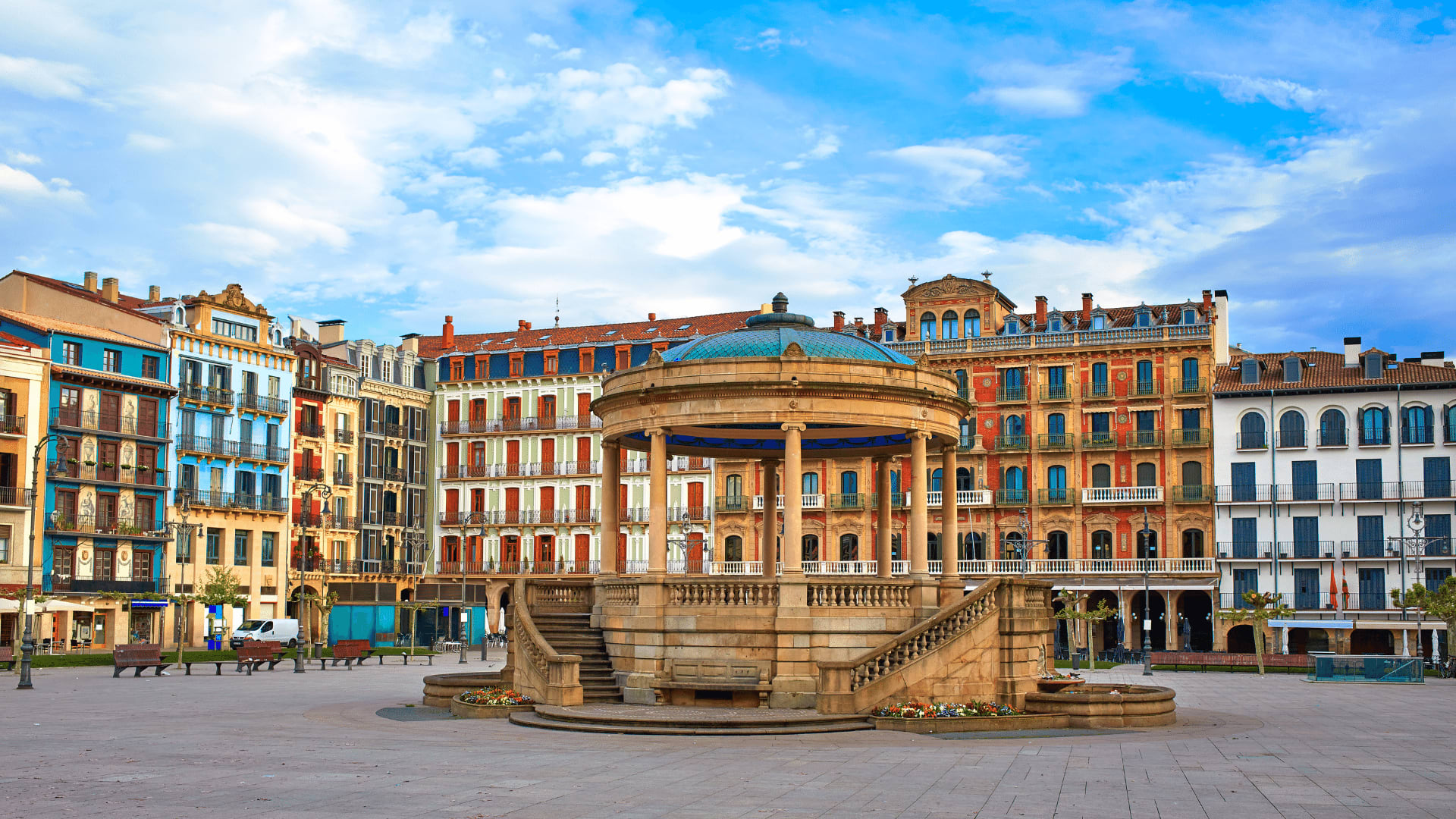
Pamplona is a comfortable, welcoming, green and safe city in the Autonomous Community of Navarre. It is ranked the highest in environment and recycling cities in Spain & Europe. The city has lots of beautiful parks, historical buildings, and rivers. (a good place for hiking with lots of walking routes!) Also, The Way of St. James (“El Camino de Santiago”) begins in this city.
Pamplona is famous for the “San Fermín Festival” or the running of the bulls. This traditional celebration and festivity take place the first week of July. And is probably one of the reasons why everyone has the stereotype of Spaniards being all bullfighters .
Around these dates, the city is driven by music, drinking, and an unbelievable number of people celebrating in the streets. However, Pamplona is very peaceful and quiet for the rest of the year. Although there are lots of places to visit and good food to eat!
The gastronomy in Pamplona really represents the variety of Navarran products. Lots of traditional recipes have been adapted and modernized to delight our palates! -I must mention that roasted peppers and veggies from Navarre really hit differently.
Landmarks and sights:
- Plaza del Castillo
- Ayuntamiento de Pamplona
- Museum of Navarre
- Plaza de Toros: the bullring, which still used for bullfights.
- Pamplona Cathedral: A gothic cathedral constructed during the 14th and 15th centuries. The history and architecture of the building can be found in the Museum next to the Cathedral.
- Ciudadela Park: a public park and a fortress with exhibits.
Places you must give a try:
- Bar Gaucho: “Pintxo de Foie"“Pintxo de Foie”.
- Baserriberri
- Asador Katuzarra
- Asador Martintxo
An absolute MUST if you ever go to Pamplona is trying the famous “Pastas Beatriz,” which are basically the best puff pastries filled with chocolate you’ve ever have in your entire life.
Dishes you should try:
- Espárragos de Navarra
- Cogollos de Tudela
- Cochinillo Asado
- Alcachofa de Tudela
- Pimiento del Piquillo de Lodosa
As for the hikes and cycling routes in Pamplona:
- Pamplona - Puente La Reina
- Fuerte San Cristóbal
- Sierra del Perdón
Valentina, 27 years from Argentina: I lived in Pamplona for 5 years to study, and I’ll tell you a bit about my experience as a student. I come from Argentina, and this town has something special regarding security and living standards. They are excellent, and I always felt very safe while living in that city. I was surprised that it was so small and more like a “town” in terms of stores, available places to eat, international spots, and so on. However, there was always something fun to do and beautiful landscapes to watch! The University is one of the main highlights of the city. It has an extensive and incredible campus awarded one of the most promising green campuses in all of Spain. So, in my experience, this city is excellent for students looking for an outstanding education. Since Pamplona gives the perfect setting for enjoying and having a proper learning environment.
10. Laredo, Cantabria
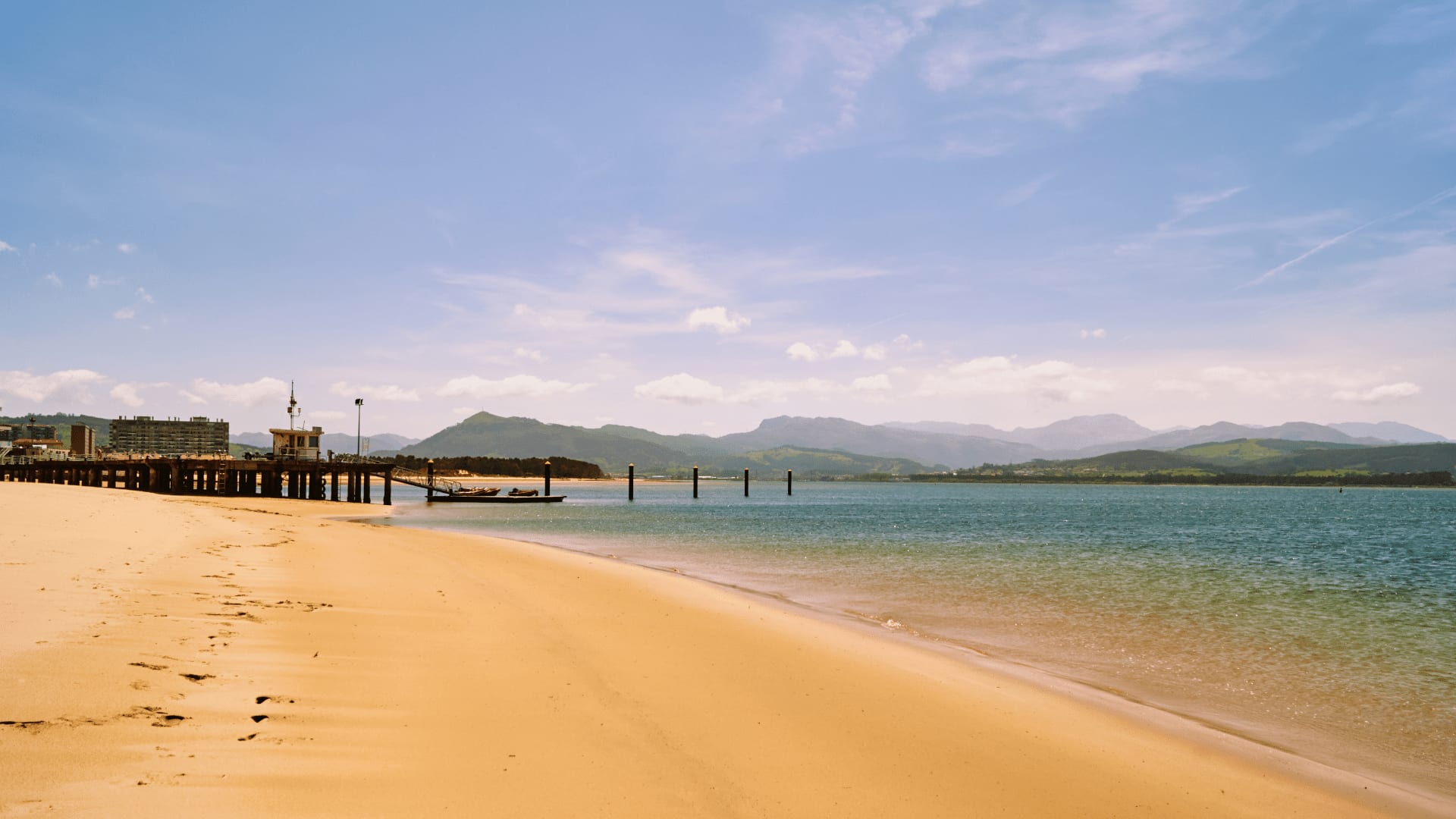
Laredo is located in a privileged spot of the province of Cantabria, specifically in the oriental coastal side. It is surrounded by mountains and refreshed by the Cantabrian Sea. And has beautiful sandbanks and Natural Protected Areas.
The city is one of the “Four Sailor Villages” with San Vicente, Castro Urdiales, and Santander.
Beaches worth visiting:
- Playa de La Salvé
- Playa de Aila
- Playa de Regatón
It becomes a tourist spot in summer, attracting 90.000 visitors while there are only 13.000 inhabitants regularly.
- Santa María de la Asunción Church
- Puebla Vieja
- Carlos VI Square
11. Cudillero, Asturias
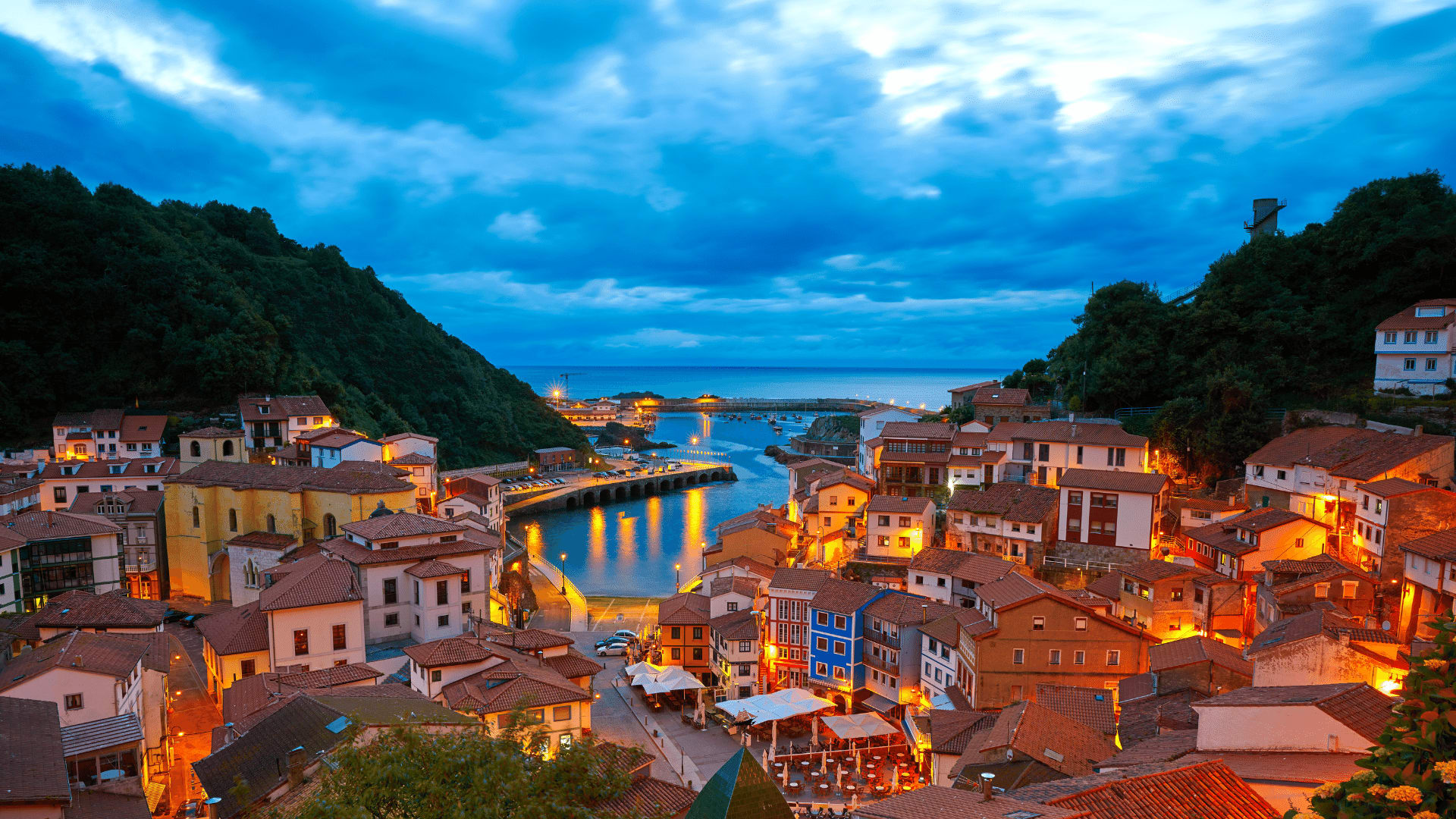
Cudillero is a beautifully colored town that makes you feel like you were in a fairy tale while visiting. The best place to see it is in Summer! When the sun is out, and rain is no longer present. Here’s when residents and visitors bring the streets and squares to life. The first thing you should do as soon as you arrive is walk to the top of the hill to get a view of the village.
- Plaza de la Marina.
- The Lighthouse
- The chapel of Humilladero
- The fishermen’s taverns
- Architectural Site of Los Selgas
- Church of Santa María in Soto de Luiña
- Gothic parish church
12. La Rioja, Logroño
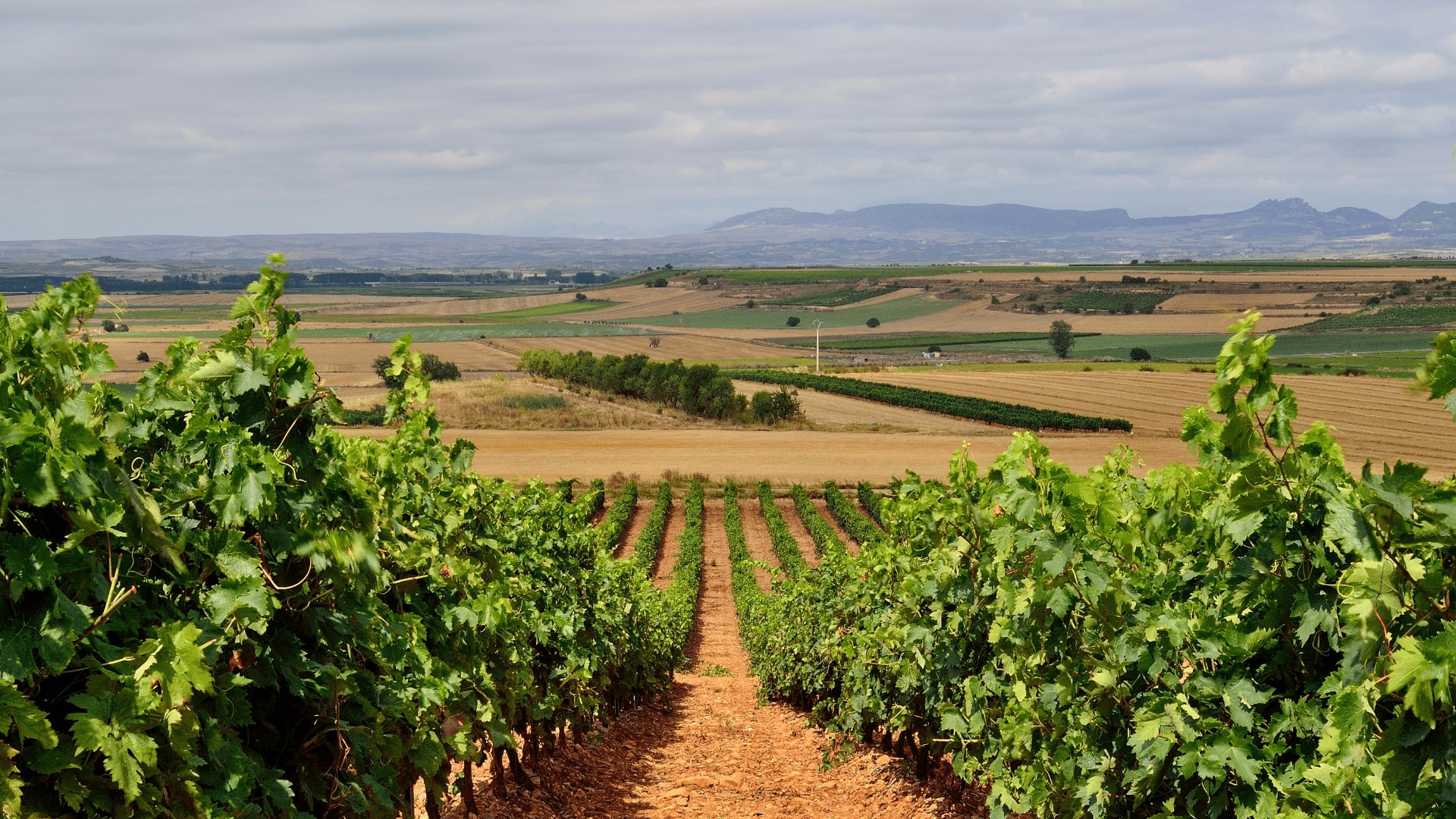
La Rioja is widely known for being the Best Wine Region in Spain and locates near the Ebro river while occupying different municipalities of La Rioja, the Basque Country, and Navarra and can be divided into Rioja Alta, Rioja Baja, and Rioja Alavesa.
The authorized grape varieties of the Rioja Qualified Designation of Origin are: “Tintas,” “Blancas,” and “Tempranillo.”
La Rioja is the first official denomination of Origin (D.O) since 1925. This guarantee seal proves it was produced entirely in a specific wine region. And ensures that the production process meets officially regulated quality criteria. (in short terms, it is formally recognized as an excellent land for producing high-quality wine).
Vineyards in La Rioja:
- Bodegas Muga
- Bodegas López de Heredia
- Bodegas y Viñedos Tritium
- Bodegas Lecea
- Bodegas Campo Viejo
- Bodegas Campillo
- Bodegas Marqués de Murrieta
- Bodegas Marqués de Cáceres
See? I told you that Northern Cities in Spain have a LOT to offer. And don’t worry… I didn’t forget about Chris Hemsworth’s picture in San Sebastian. ;)

Let me know if you bump into another artist during the International Film Festival too! :)
READ NEXT: Lovely Southern Spain Cities to Add to Your Bucketlist!
Rating: No ratings yet. Leave a comment!

You might also like...
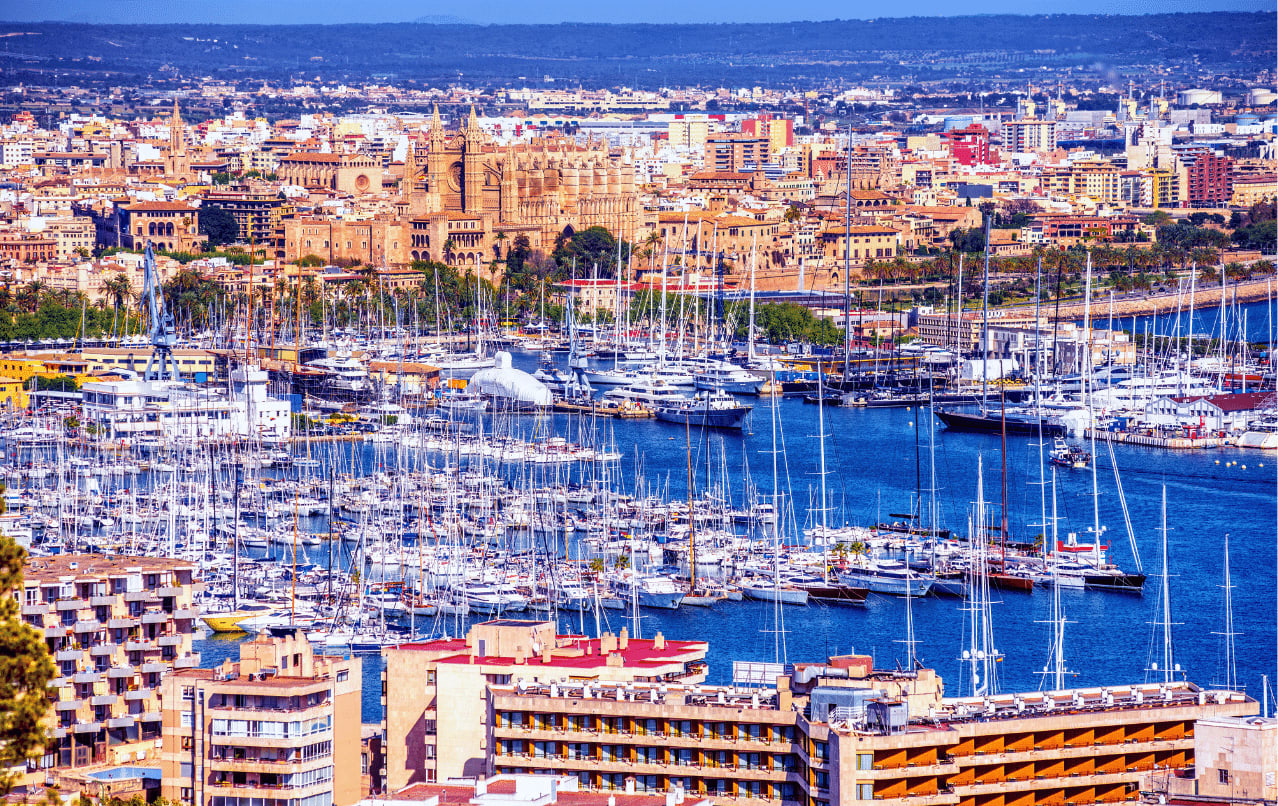
Rising Next to the Sea? Fall in Love With Spanish Beach Towns
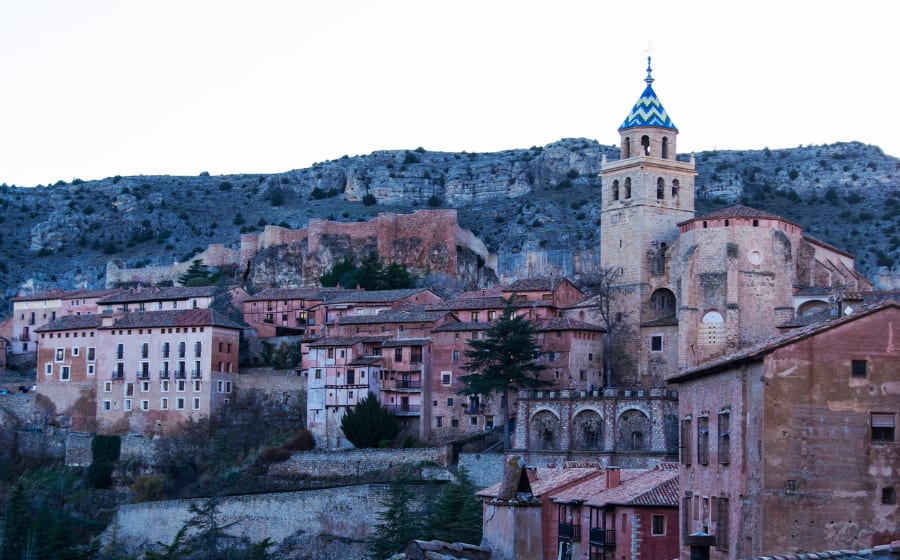
11 Spanish Villages to Add to Your Vision Board
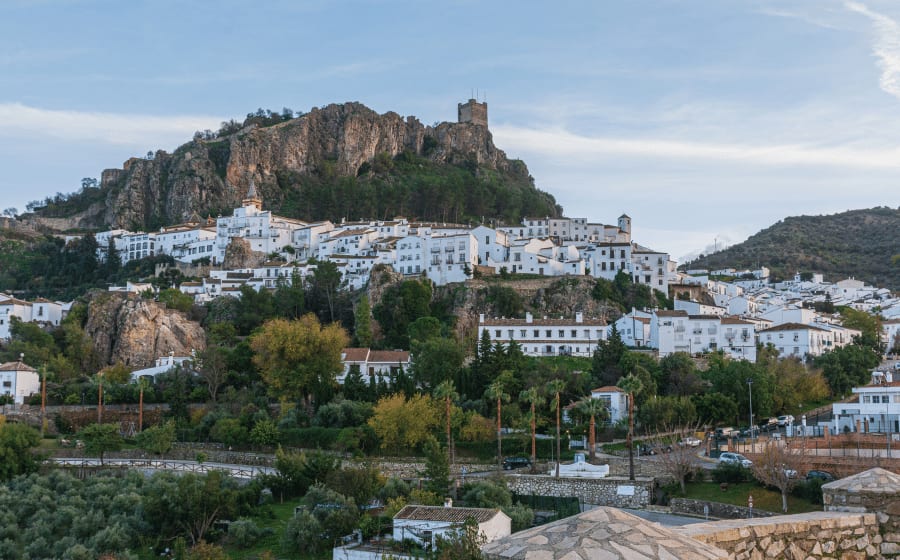
"Pueblos Blancos": The 13 Most Fascinating White Cities in Spain
Email address (optional), star rating (optional).
Be the first to comment!

Millions of people como to Spain every month! But many never get to experience the SENSATIONAL SPAIN!!
We're both born and raised Spaniards and our goal is to give you all the resources to plan a perfect trip to Spain.
Take a look! 👇
FYI! Some affiliate links may be sprinkled throughout the post. We'll receive a small commission when you purchase from our links (at no extra cost to you), which will help us keep creating content.
Join the waitlist
I'm about to release my City Guides for Madrid, Barcelona, Sevilla and Mallorca.
They're going to have everything you need to plan the perfect trip. From hotels and transport, to restaurants, attractions, activities, & a lot (A LOT!) of tips & tricks.
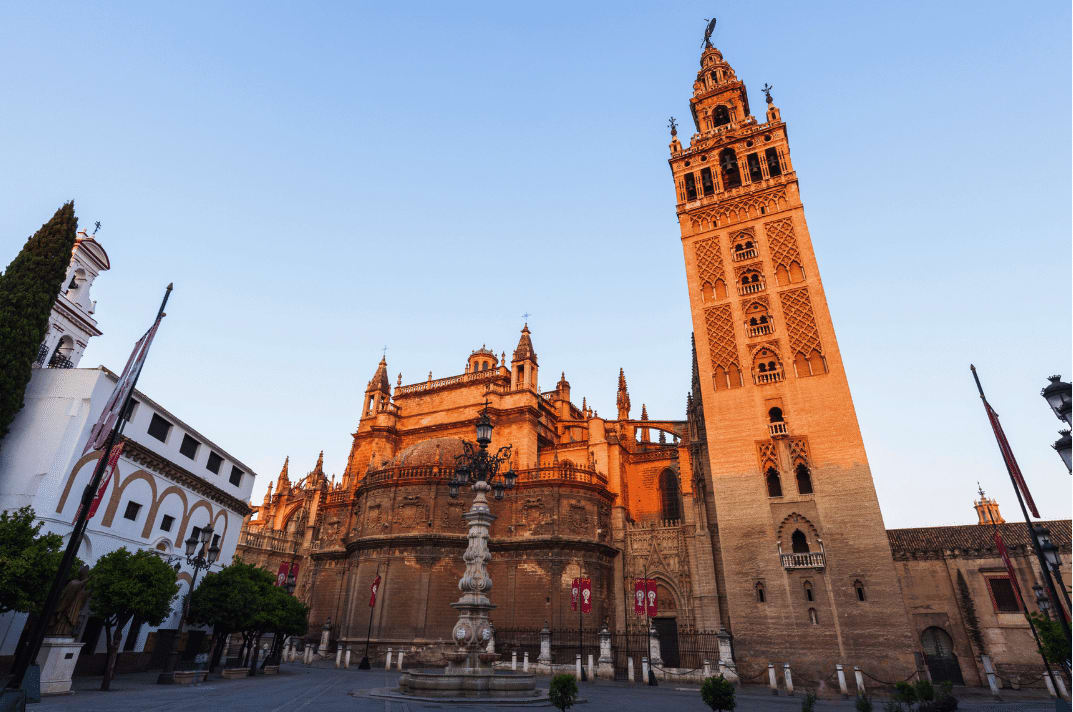
Lovely Southern Spain Cities to Add to Your Bucketlist!

What do Spanish People Think of Americans?

What Song Are You Listening To? MADRID

What is the Best Show to Learn Spanish?

Things People Should NEVER do Dating in Spain

Can Foreigners Adapt To The Spanish Lifestyle?
Road is Calling
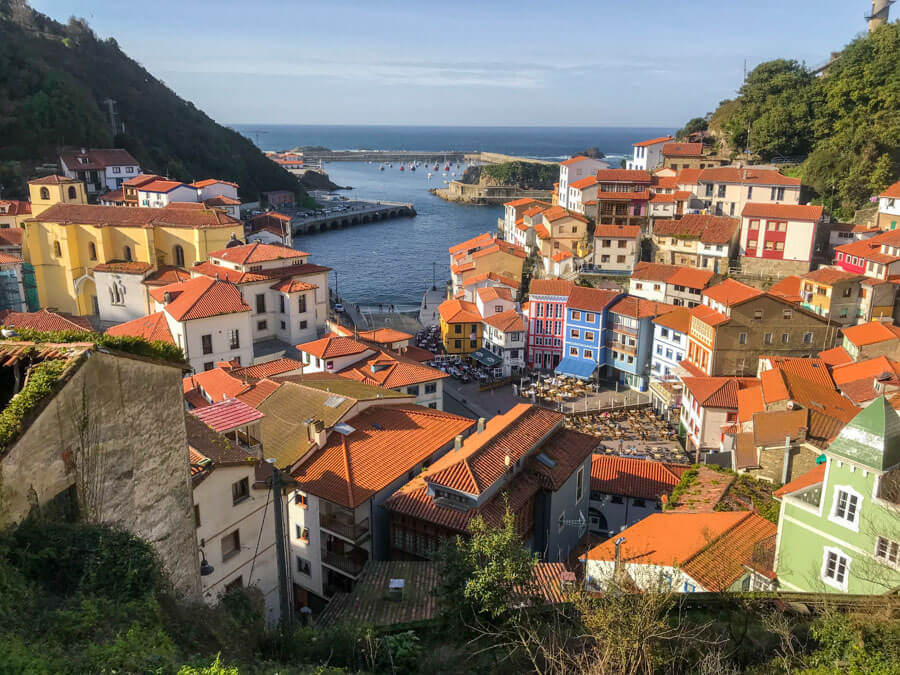
18 Most Beautiful Coastal Towns in Northern Spain to Add to Your Itinerary
Are you ready for a road trip in the north of Spain? If not, you should definitely plan one since this region is full of wonders! Besides seaside cities and national parks, there are so many amazing villages and coastal towns in Northern Spain that are worth a separate trip!
You can seriously plan two different journeys here – one, visiting natural landmarks and beautiful cities in northern Spain and another one going to small towns and cute Spanish villages. Or, use both of my articles to plan your own itinerary and see a bit of everything.
Countless beautiful northern Spain coastal towns have been preserved in their original form and are often located away from the beaten tourist routes. They are steeped in history and offer old national traditions, culture, crafts, architecture, and good classic Spanish dishes.
I visited most of them while staying in the northern region of Spain for a couple of months. The rest, that I haven’t been to yet, are high on my list for future travels. Each and every town and village on this list is special in its own way and a trip through them brings a sea of positive emotions.
I divided these Spanish coastal towns by provinces to make it easier to understand the location.
If budget allows, hire a car (we rent it in Spain through this company ) since the best way to explore this country is by vehicle! And, since northern Spain is among European summer destinations where it is not too hot , you can plan a trip there even in July and August to escape the heat.
Most Beautiful Coastal Towns in Northern Spain Basque Country
Hondarribia.
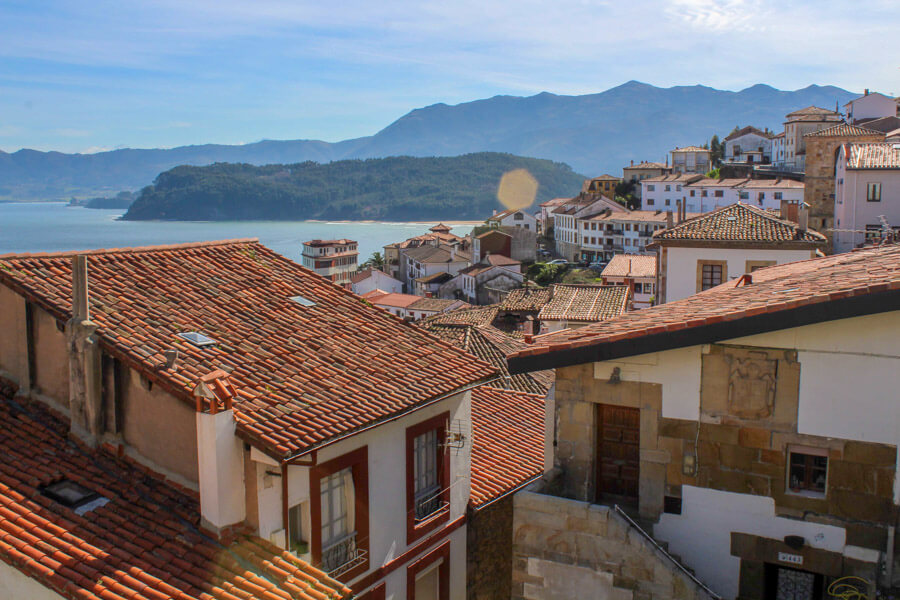
I’ll start my list with a town in the northeast Spain coastal region. It is a fantastic basque town bordering France that finds itself at the very corner of the coastline. In fact, you can even see France across the sea from many points there and what’s more interesting, you can even take a boat connecting two coasts.
The central part of Hondarribia has preserved a fortress wall and a defensive fortress of the 16th century which makes the city unique in the Basque Country. Noteworthy is the Church of the Ascension of St. Mary, the main religious landmark there.
When visiting, stroll through the cobblestone streets with beautiful little gardens, see the historic center with its typical Basque houses and walk down one of the main streets San Pedro Street.
Its beach, Playa de Hondarribia, is also very popular, especially during the summer months. Although the temperature of the water is not as warm as on the Mediterranean coast, it can be a perfect place for people who don’t tolerate heat well enough. From June to August water is around 20 degrees Celsius at the maximum.
I think Hondarribia is one of the best towns in Northern Spain with an atmosphere of a small, cute European town, that has been lost in time with its local population.
Where to Stay in Hondarribia
If you have a car and look to stay outside the town in a rural setting surrounded by views and old traditions, check this Country Casa Higeralde . It’s only 15 minutes walk from the beach, has incredible views and new design with old-fashioned touches.
For an upscale luxury stay, see the best spa hotel in the area Villa Magalean . It has a central location within a short drive to the stunning Basque coastline in France.
Pasai Donibane and Pasai San Pedro
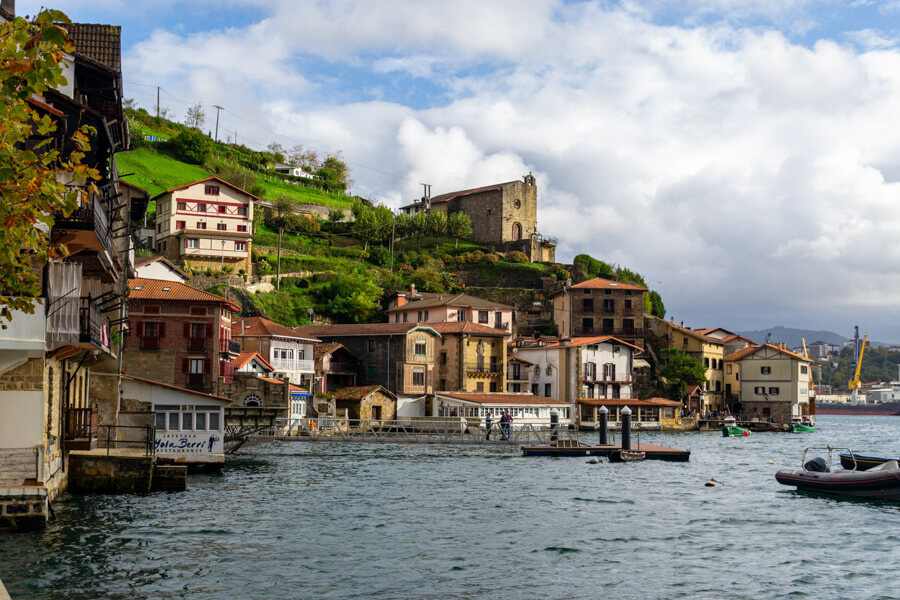
The next seaside town is Pasai which consists of two urban centers Pasai San Pedro and Pasai Donibane. Between the two, Pasai Donibane is more of a cute little village with narrow, cobbled streets, and Renaissance houses decorated with stone, balconies, and eaves.
The old town of Pasai Donibane is built around a single street that starts in the area of Biscay and extends to Bursa Bay. Narrow cobbled streets give it a special charm. Walking through this area, you can see unusual passages under the houses that delineate the boundaries of urban areas. And by taking Bonanza Ibilbidea street, there is a chance to go on a mini hike along the bay.
Pasai San Pedro is on the other side where you can also wander for a bit. To get there you can either drive around the Bay, that’s about 10-13 minutes, or take a cute little boat across the water making it an additional little attraction to your day.
One of the most popular attractions there is Albaola, a UNESCO museum showcasing the building of historic wooden ships.
Both of these coastal towns are two nice gems in Basque Country where to make a quick stop on a road trip.
Where to Stay in Pasai Donibane or Pasai San Pedro
Pasajes doesn’t really have any outstanding accommodation and given the fact that San Sebastián is just 10 km away, you’d want to book a hotel there. I share a list of charming hotels in San Sebastián with good value for money:
Akelarre Chateau – for a quiet and stunning location and luxurious feel. Lasala Plaza Hotel – beautifully renovated beachfront hotel in the old part of town. It is perfect for couples on their honeymoons or romantic getaways.
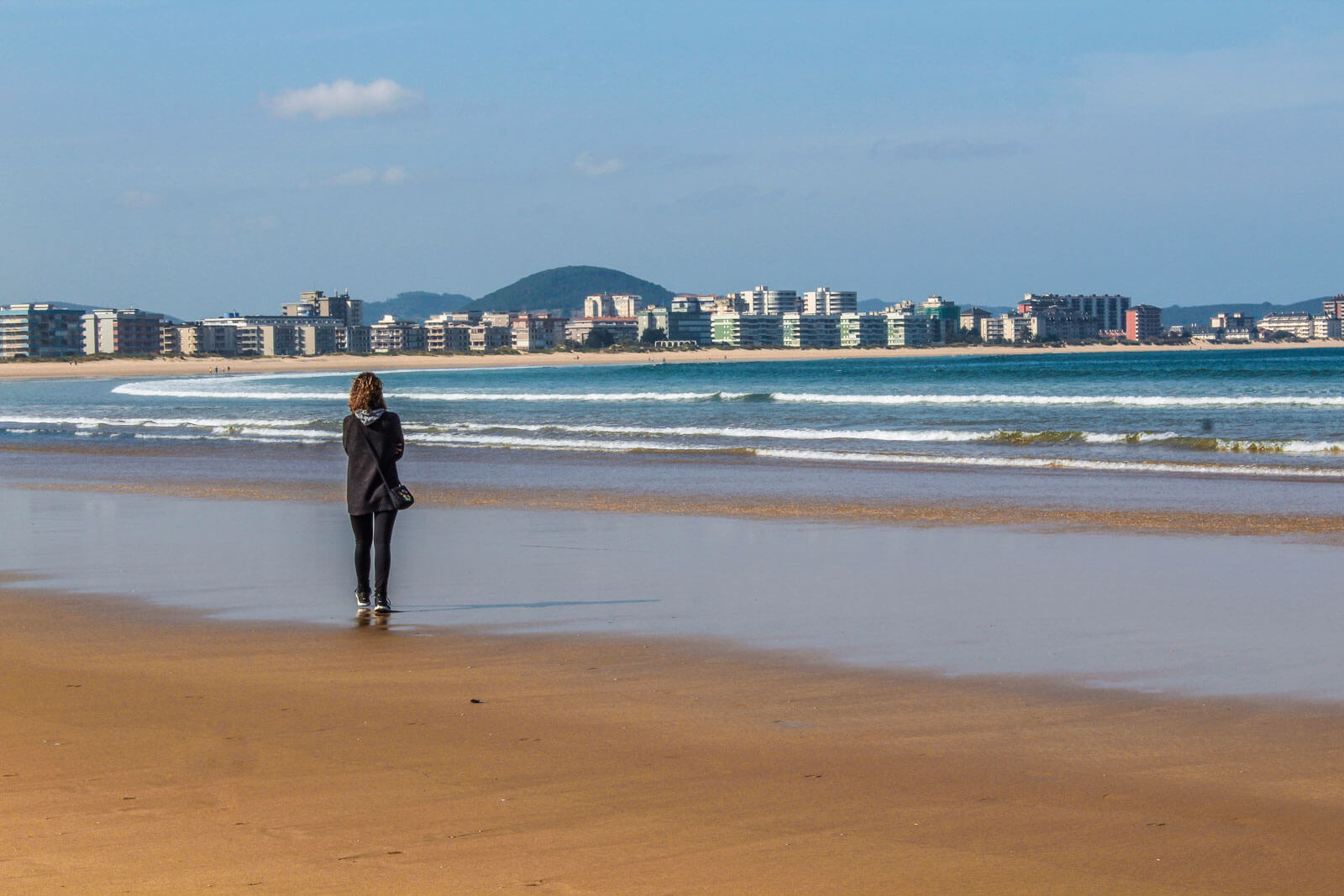
Going further up the coast towards the east, you will reach Zarautz. This is another small coastal town on the outskirts of San Sebastian, just on the opposite side. Zarautz has the longest beach in Basque Country and mostly serves as a summer destination. Many people consider it one of the best beach towns in Spain.
From fall to spring, it is a relaxed place where life goes at a slow pace. However, in the summer, its population of around 22,000 nearly triples and the atmosphere completely changes!
The town opens its doors to tourists who look for a great place for water sports, especially surfing . There are a number of surf schools operating as well, for those looking to learn.
Zarautz is a must-visit seaside town if you are staying in San Sebastian or going on a road trip in the Basque Country. Besides the beach, there is also an interesting Photo Museum and the Art and History Museum (which by the way is located in the oldest building – Torre de Zarautz).
Like many Spanish cities, Zarautz has some beautiful churches as well and those not to miss are Iglesia de Santa Maria la Real and Iglesia de Santa Clara.
Where to Stay in Zarautz
Zarautz can be a wonderful place where to stay for people on a budget who want to visit the San Sebastian area due to its close proximity to the city and a bit lower prices for accommodation. With a number of hostels and budget-friendly hotels, everyone can choose something for his budget.
Check prices and availability for Zarautz properties here .
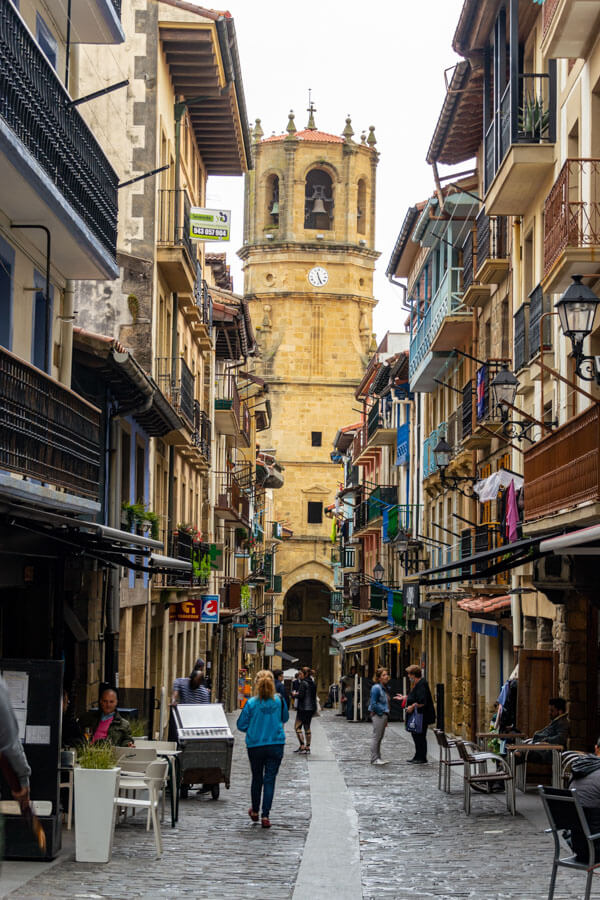
Getaria is one of my favorite small towns in Spain. Oh wait, it’s actually not a town but a small fishing village set between the sea and vine-covered mountains on the shores of the Bay of Biscay. It was home to Juan Sebastian Elcano, one of the first people who circumnavigate the world.
Getaria has existed since Roman times but it was founded in the 13th century in Middle Ages as the settlement that we know today. So it is one of the oldest medieval villages in the region.
It is very close to Zarautz and San Sebastian, so once you are in the area, definitely come here for the seafood. The quality of the fish is incredible and the village has become famous for using the grill the way they do.
I highly recommend trying their fresh grilled fish or Parrillada for dinner. Add a bottle of white wine made from the nearby Txakoli vineyards. If you have time, perhaps enjoy a wine tour of the Txakoli winery which can be a splendid daytime activity from San Sebastian.
Other highlights of this small and quiet place are the Cristobal Balenciaga Museum, the Church of San Salvador, and fishing port. Also don’t miss a walk up to Mount San Anton to enjoy the beautiful view.
And if visiting Northern coast of Spain in summer, particularly in early August, travel this way to see celebrations in honor of San Salvador.
Does my content help you plan your trip? If yes, I’ll appreciate a cup of coffee from you, so I could produce more free guides and itineraries!
Where to Stay in Getaria
Getaria village is a really nice place where to stay on romantic getaways. It offers a quiet peaceful setting, charming traditional style hotels, and gorgeous views.
For example, Itxas Gain hotel in the central part of the village or Saiaz hotel allow you to plunge into the historical atmosphere and fully relax. Being in the village near the beach means that guests are in the center of all events.
And here is another type of property Usotegi above the village overlooking the sea and mountains. It suits better those who look for seclusion and tranquility.
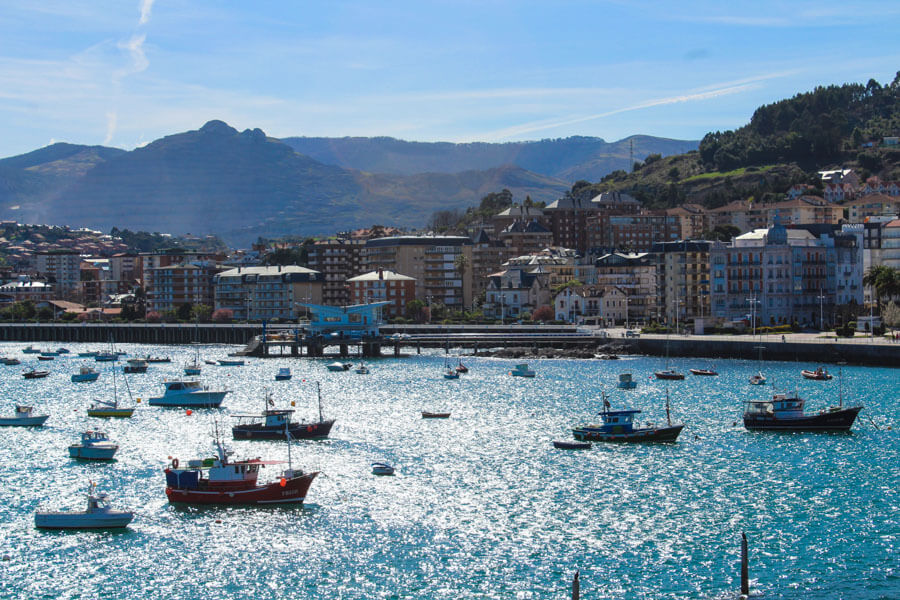
Going further west towards Bilbao, there is another beautiful fishing village Mutriku whose inhabitants dedicated themselves to whale fishing. The Historic Center there has been declared a Monumental Complex and is one of the best-preserved medieval towns in all of Gipuzkoa province in the Basque Country. I highly recommend spending some time there getting lost for a bit in narrow cobbled streets that intertwine until you reach the fishing port.
Walking through the alleys of Mutriku you will quickly find perfectly preserved palaces from the 15th, 16th, and 17th centuries. This is why visiting this small Spanish coastal town feels like traveling back in time. Along with that, you can also enjoy great beaches and beautiful views of the Cantabrian Sea.
The Mutriku port is one of the oldest in Gipuzkoa and Euskadi provinces, as it has been standing there since the 18th century.
The town itself follows a great fishing tradition and is home to many sailors and whale hunters. This is why many people visit it for the Berdel Eguna Festival on the first Saturday of April every year.
Where to Stay in Mutriku
Since Mutriku is small, it is easy to pop in there for an hour or so when being on a road trip along Spain’s Northern coast and continue a journey. However, with the number of lovely hotels by the coast, some people may want to stay there overnight.
For example, the beautiful Hotel Arbe and Agroturismo Haitzalda B&B which are located on the cliff offer a peaceful stay next to nature and old Spanish fishing town.
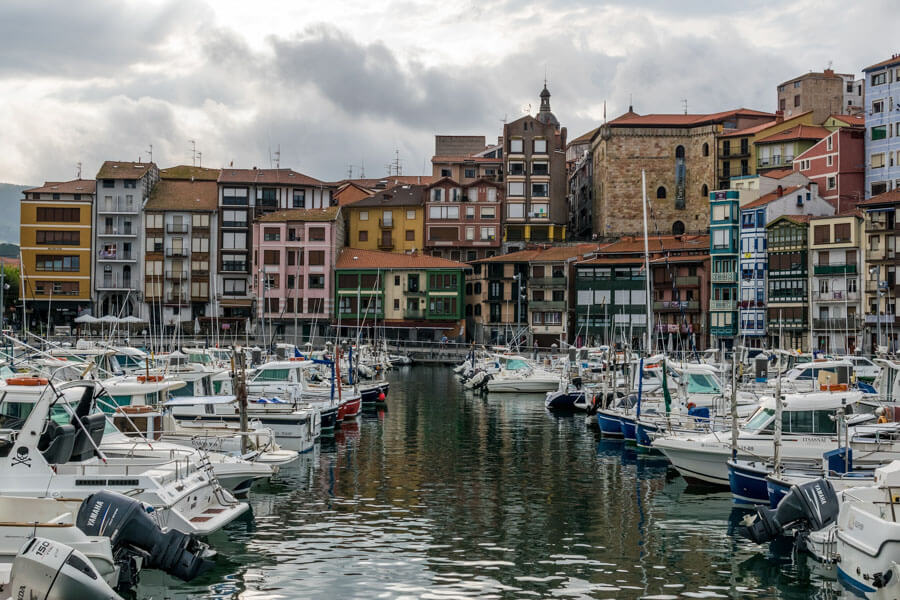
Bermeo is a colorful coastal town located in the Urdaibai Biosphere Reserve and less than 10 km from the impressive island of San Juan de Gaztelugatxe. It is a wonderful place where to stay overnight and have a break after visiting the Gaztelugatxe island fortress.
Bermeo is famous for its long fishing tradition and is a nice place where to stop to explore for a while.
Once in the town, enjoy some food and drinks in the old port, stroll through the old part or take a dip in one of the surrounding beaches. These are just some of the things you can do in Bermeo on a quick visit.
For me, one of the most picturesque corners of this coastal town is its beautiful Old Port, an area with narrow houses painted in a fan of colors. There are also several bars around the port and it is here where the local people meet to have a drink and eat some pintxos. During your stay, besides going for a walk through its steep old town part, you can also visit the museum about the lives of the Arrantzales (Basque fishermen) located in the Ercilla Tower.
Then come back to the Old Port and go for Pintxos (tapas). Two of my favorite places are the Kai Alde and the Batun Batun . Both offer a great selection of pintxos. Although it is not directly located in the Old Port, another great establishment is Bar Beti Ondo which serves some delicious Bonito Pintxo.
Where to Stay in Bermeo
Bermeo, while being a nice town for an overnight stay, doesn’t feature any outstanding hotels. It is mainly full of apartments for different budgets and tastes. Check rates and availability here .
Best Northern Spain Coastal Towns in Cantabria Region
And now we come to Cantabria! I love this region for its dramatic beaches, magnificent caves, and beautiful mountain scenery. There are also a few incredible coastal towns not to miss!
Castro Urdiales

It is that small perfect town that looks like it was taken from a painting. It smells of sea breezes and is full of colorful fishing boats. In Cantabria, there are a lot of towns built facing the sea but among all of them, Castro Urdiales is probably one of my favorite. In addition to being a fishing village, this town kept its strong, elegant, and well-preserved medieval heritage and historical center.
It has a kilometer-long walking path along the coast, breathtaking cliffs, several fine sand beaches, and an enviable Cantabrian and Basque mixture cuisine. So shortly, this is a town that you shouldn’t miss if you are doing a route along the coast of Cantabria.
The essential part of visiting this town is gastronomy. Local restaurants cook the most delicious sea breams and snails, accompanied by the products of the thriving canning industry of the municipality. Among them – anchovies in olive oil are undoubtedly the ones that call for the greatest recognition.
Where to Stay in Castro Urdiales
Castro Urdiales is located only 30 minutes from Bilbao and around 50 minutes by car from Santander. While it is definitely a town not to miss on a road trip through Cantabria or on a day trip from Bilbao, staying overnight here is probably not that special. Mainly because hotels are pretty average with a lot of negative reviews.
Although there are some lovely apartments and condos. If you are interested, see availability and prices here .
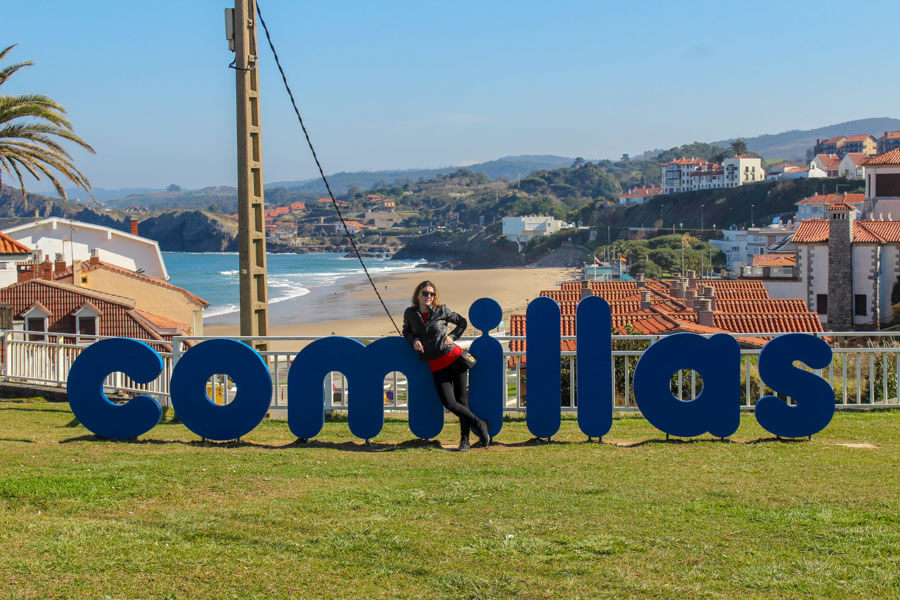
Going for a little over an hour from Castro Urdiales, after you pass Santander, you’ll find a very cute traditional Spanish town called Comillas.
Formerly it was one of the most important towns in the region. And it still is today. Although it is quite touristy, especially in summer, you shouldn’t skip it at any time of the year. But if you come during the slower season when it’s not so crowded with tourists, you’ll be able to enjoy it even more.
Comillas is a very interesting coastal town with cobbled streets, open squares, two good beaches, historic buildings, and a selection of Modernista buildings including the incredible El Capricho designed by Antoni Gaudi.
There are very few buildings designed by Gaudí outside Catalonia . And one of them is here in Comillas. Gaudí’s Capricho historical landmark is the most important architectural work in the entire Cantabria region. This modernist building is bright in color, its red and green tones completely capture one’s attention.
Other places to check are the Palace of Sobrellano, Old Pontifical University, and t he historic center of Comillas. During the walk through the center, you will see a lot of important monuments and small squares. It is easy to see them all within a short time since they are very close to each other.
Where to Stay in Comillas
Comillas is famous for traditional style accommodation. Having its beach, walking trails and being close to Oyambre Natural Park makes it a nice spot where to stay even for a few days. If visiting in summer , you can base yourself here but go on mini road trips in Cantabria and beyond.
Among lovely places where to stay, take a look at Vivienda Casa Luisa or Posada Rural La Solana hotel . They suit mid-budget and offer traditional Spanish touches with excellent location.
San Vicente de la Barquera
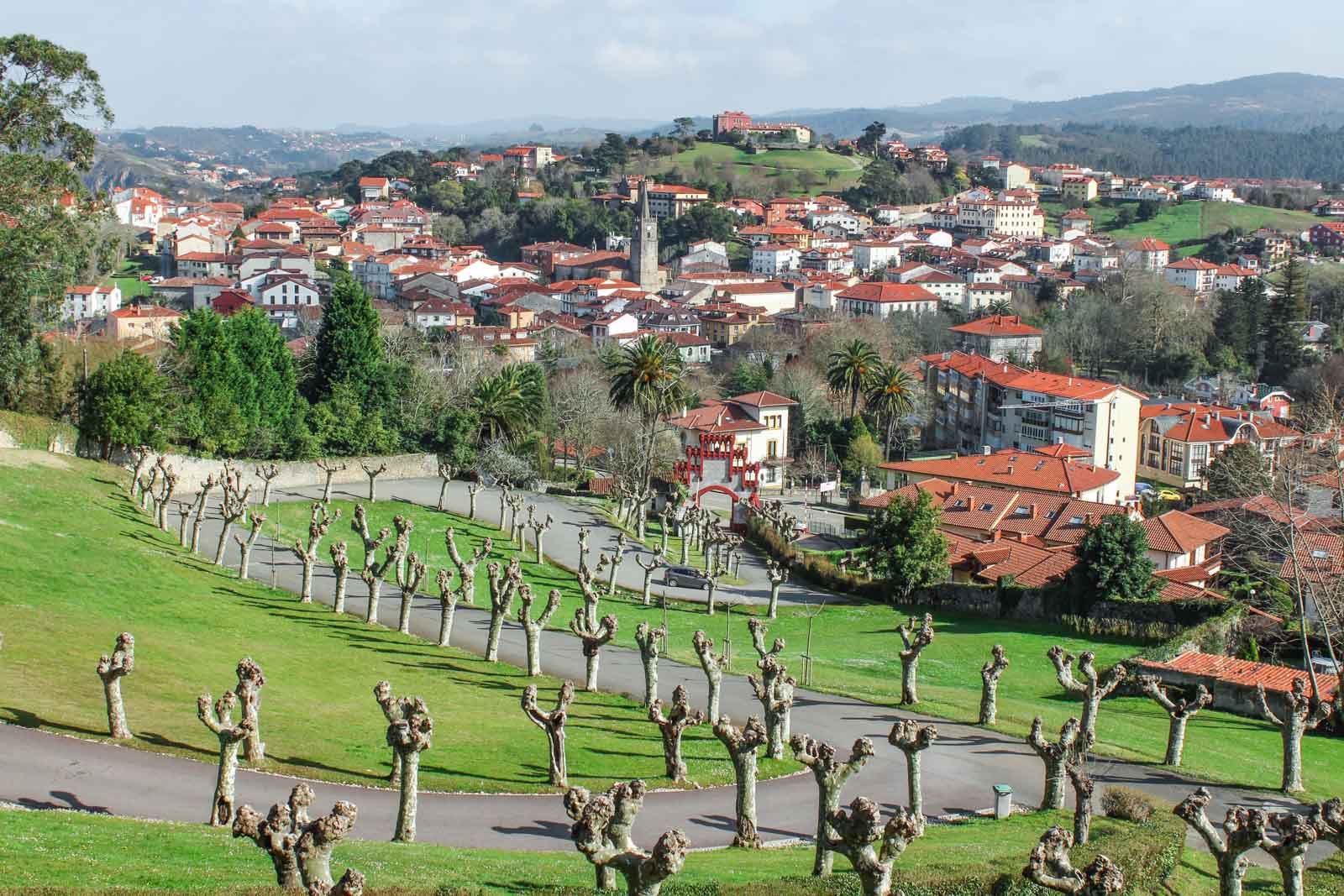
San Vicente de la Barquera is the capital of the municipality of Cantabria that lies not far from Comillas before the Asturias region. The town grew from an old fishing village that still follows its traditions and even its most popular festivals – La Folía festival (a massive maritime procession that is celebrated on the second Sunday after Easter) and the procession of Carmen (on the 16th of July).
San Vincente is one of the preferred by tourists places on the Northern coast of Spain. Its old town is full of charm thanks to its church, castle, and the remains of a wall. The bridges also add a lot to the beauty of this town which has the majestic Picos de Europa as a background with its permanently snow-capped peaks.
I would also add excellent seafood gastronomy as one of the famous features of this town. Together with all the sights, this old fishermen’s town is an ideal place where to spend a few hours or even a day.
Where to Stay in San Vicente
San Vicente de la Barquera is a very small town, so no matter where you choose your accommodation, you will always be close to the center and sea. Some nice hotels in the area are Posada Punta Linera and San Vicente Lighthouse hotel . The first one is located 2 km away from the town in a picturesque rural area on a cliff. And the second property is next to the port with impressive views of the historic center and the estuary.
Most Beautiful Towns & Villages in North Spain Asturias Region
Asturias, the historical pride of all of Spain with its beautiful corners of untouched nature and the friendly local population, makes this part of Northern Spain unique and attractive.
The number of coastal towns and cute villages is also high. And here are the best of them:
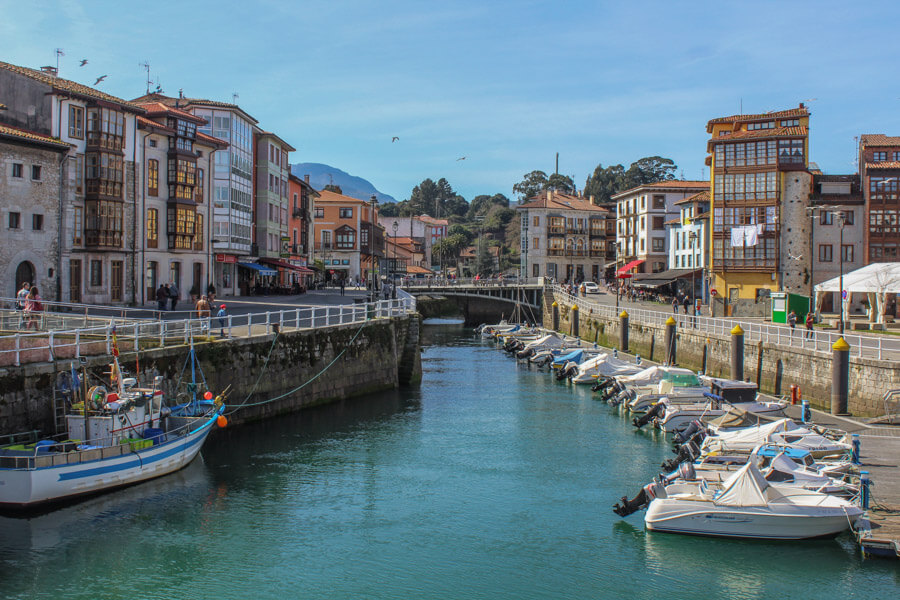
The first stop in Asturias when coming from eastern Spain is Llanes – a fishing town located on the shores of the Cantabrian Sea, also near the Picos de Europa.
It has an old quarter declared a Historic-Artistic Site, magnificent houses, dreamlike beaches, walking paths between cliffs, and a picturesque port.
Llanes also has a lively nightlife with countless craft shops, restaurants, and cider houses where you can try the most typical dishes of Asturian cuisine. Must-try dishes here are Cachopo, bean stew, and scorpionfish cake always accompanied by freshly poured cider.
I would say that half a day is enough to see its main tourist attractions. However, if you can allow yourself a slow pace, spend a full day enjoying its beaches and walking trails along the seashore with more tranquility.
Where to Stay in Llanes
Llanes is truly a lovely place where to stay on your holidays in Northern Spain. For the most authentic experience , choose the old town area. Casa Cotiellu is a three story traditional Asturias house hotel between other traditional colorful homes is a nice pick for mid-range travelers.
Other authentic options are hotel Don Paco and Babilonio apartment .
Ribadesella
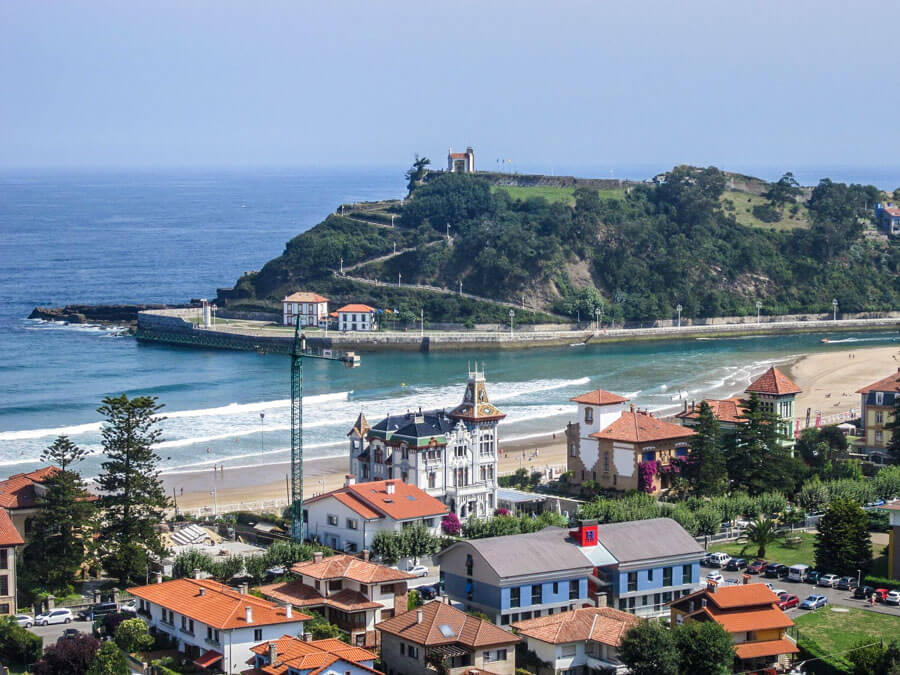
Just a little further west, come to Ribadesella, a beautiful little town that invites you to wander through its restored and pedestrianized area in the historic center. It is full of many authentic architectural gems.
Located in a privileged position, at the mouth of the River Sella and on the shores of the Cantabrian Sea, Ribadesella was one of the main Asturian ports of the 19th century. It enchants with the network of narrow streets of the old town, its fantastic beach, and different viewpoints. There you can also find a cave with fascinating wall paintings from thousands of years ago.
Once here, go for a walk through a medieval court area with cute houses with cantilevered balconies, loft-shaped attics, and facades with noble coats of arms and arcades. Some buildings date from the 16th, 17th, 18th, and 19th centuries.
If you happen to visit this coastal town on the first weekend of August, you can enjoy the famous International Descent of the River Sella, which brings together canoeists from all over the world who join a big party.
Before leaving, try the most typical Asturian dishes such as Cachopo and Fabada. Additionally, there are rice dishes, baby squid, scallops, and other fresh fish and seafood dishes, which make such rich gastronomy of Asturia.
Where to Stay in Ribadesella
If you will be in Ribadesella at the end of the day and need a place for the night, you may want to choose its southern part. It is close to the mountains and has fantastic natural views.
Bajo Los Tilos or Amaicho Rural hotel are good examples of traditional Spanish properties where to have a peaceful break in the wonderful countryside of Asturias. But Ribadesella in general has many wonderful places where to stay. See them all here .

Awarded many times in a row as one of the most beautiful villages in Spain, Lastres gives an incredible fairy tale touch with its houses being very close to each other on the slopes with bright colors of the sea in the background and mountains on the other side. This coastal town continues to impress with narrow streets full of stairs and steep slopes that reveal corners full of magic and historical buildings.
As often in Spain, here you can keep wandering through the old streets while enjoying the views from different viewpoints. In the town center, there is also a charming fishing port. And if you still haven’t tried enough seafood on your journey, Lastres is a fantastic place where to do it.
The port itself is a very beautiful area that looks like it was taken from a postcard. It reminds of centuries of hard seafaring work.
Besides the port, go see the chapel of Buen Suceso, the hermitage of San José, and the central Clock Tower in the historic part.
And if you want to go to the beach, go to the most famous beach in the area known as Playa de la Griega. It is located a little bit further away about 2-3 km to the south, so it may be easier to make a stop here if coming from Ribadesella.
Where to Stay in Lastres
First of all, let me say that Lastres and surrounding area is truly an incredible town where to stay on the road trip through Northern Spain. With the fish industry being the main one in the economy of this settlement and with romantic accommodation options on the hills and sweeping views, there is some kind of magical atmosphere that reigns here.
For something unique, take a look at Cool Rooms Palacio or Hotel Eutimio .

Of all the seaside towns in the Bay of Biscay, Cudillero is the only one that cannot be seen either from land or from the sea as it is located in a natural bend that gives it that invisible and therefore mysterious location.
A town that hangs almost vertically down a slope between two hills, creating a unique amphitheater of bright colors and a lively atmosphere with terraces, restaurants, and cider houses open in any season of the year.
One of the best things to do in the town of Cudillero is to wander around and literally get lost in its many nooks and crannies. You will discover endless stairs, passageways, balconies, viewpoints, and brightly-colored fishermen’s houses.
Everything in Cudillero tastes like the sea, smells like the sea, and sounds like the sea. All the fishing inventory and seafood restaurants are an unmistakable sign that you have reached a seafaring town in Spain.
If on your journey you can’t visit all towns and villages, make sure not to exclude Cudillero. It is one of the best small towns in northern Spain that is well worth a trip.
Where to Stay in Cudillero
Staying in Cudillero will be very authentic, especially if you choose the old narrow part near the sea. Take a look at this apartment that used to belong to a local artist. It is located at the top of the village and has the best view (the one I have in photos).
Another unique option is Casona de la Paca hotel or La Casona de Pio .
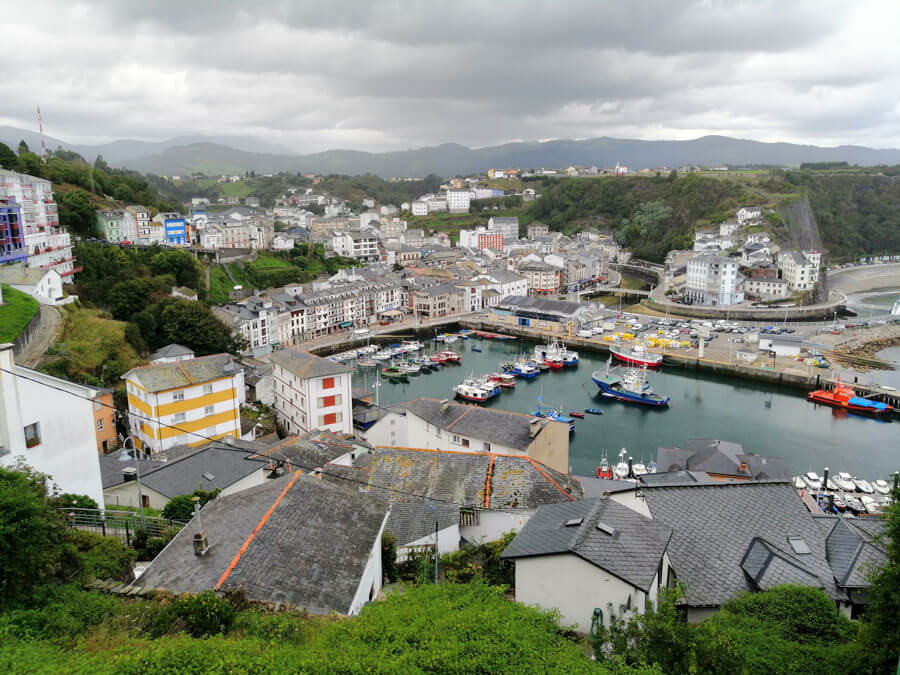
Luarca was the next fishing village on our trip through Northern Spain that we didn’t expect much from. But I have to admit that we were wrong.
Being an incredibly beautiful village on the Asturian coast, Luarca impressed us with its unusual architecture. The winding Negro River, gently encircling the streets, either divides or connects its quarters where modest snow-white houses of fishermen and luxurious villas of emigrants alternate.
Main reasons to visit this village are remains of the Celtic settlements of Castros and Roman dwellings, the medieval palaces, facades of wealthy houses of the Indianos families, and its seven bridges. Luarca also has the largest number of wealthy emigrant homes in Asturias, of those who returned from Argentina, Mexico and Cuba.
Well-maintained fishermen’s houses, most often in white colors, bring their own flavor to the urban landscape here. They make Luarca the most beautiful seaside town in Asturias. There is also a fishing port and cute fish market where fishermen offer their catch such as fish, shellfish, and crabs. And closer to dinner, from small bars and taverns, the smells of freshly cooked seafood spread throughout the area.
You can admire the city by going up to the observation deck , located next to the Atalaya Chapel. It’s nice to walk along the Barbacana promenade, sit on the local beach, get lost among white mansions, and stroll between canals.
Where to Stay in Luarca
Luarca is a unique place where to stay in Northern Spain since there is a choice of accommodation in fisherman houses or luxurious estates. Take a look at La Casa de Loli which is a very authentic apartment a few minutes from the beach.
Best Northern Spain Small Towns in Galicia Region
Ribadeo & castropol .
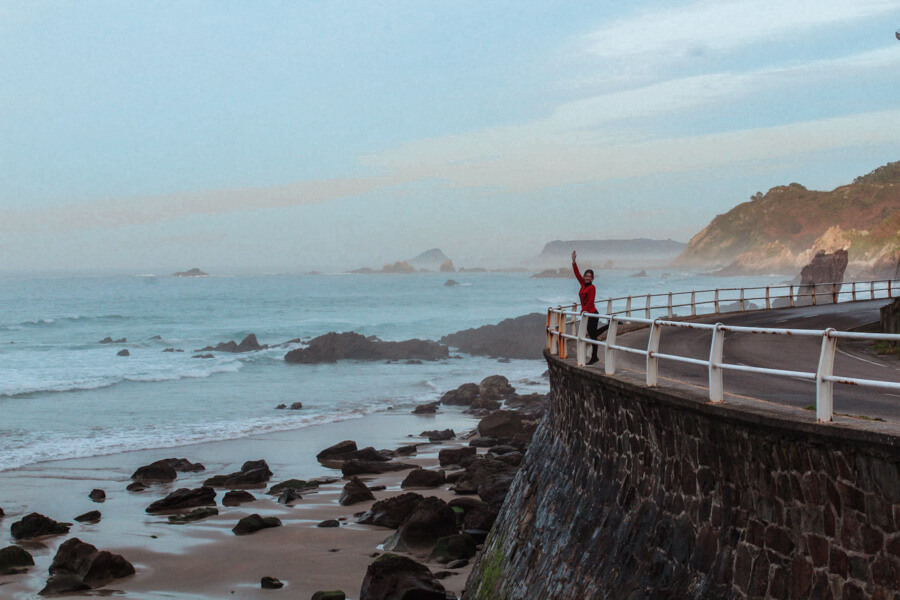
At first glance, these two towns seem to be ordinary towns, similar to many others around Spain . But the main thing about them is the coast with surreal beaches with huge rocks, arches, and caves.
Also, I consider Ribadeo (and Castropol) an essential stop that you reach on the way from Asturias to Galicia or vice versa.
If you have time, I recommend you leave the main road and drive by the coast from Ribadeo to Playa de San Cosme de Barreiros through many small beaches and vista points. The most famous beach there is Las Catedrales, although the entire drive opens up incredible sceneries and has an impressive dramatic coastline.
Among the two cities, Ribadeo is more interesting. It has a beautiful historic center with cathedrals, parks, old fort, and long beach route. The must-visit place in the vicinity is Illa Pancha island with various vista points.

Where to Stay in Ribadeo or Castropol
If you are looking for accommodation in the center of Ribadeo, I suggest you stay at the Hotel Rolle . For something more exciting and unique, like sleeping in a lighthouse, on Illa Pancha, check this option out.
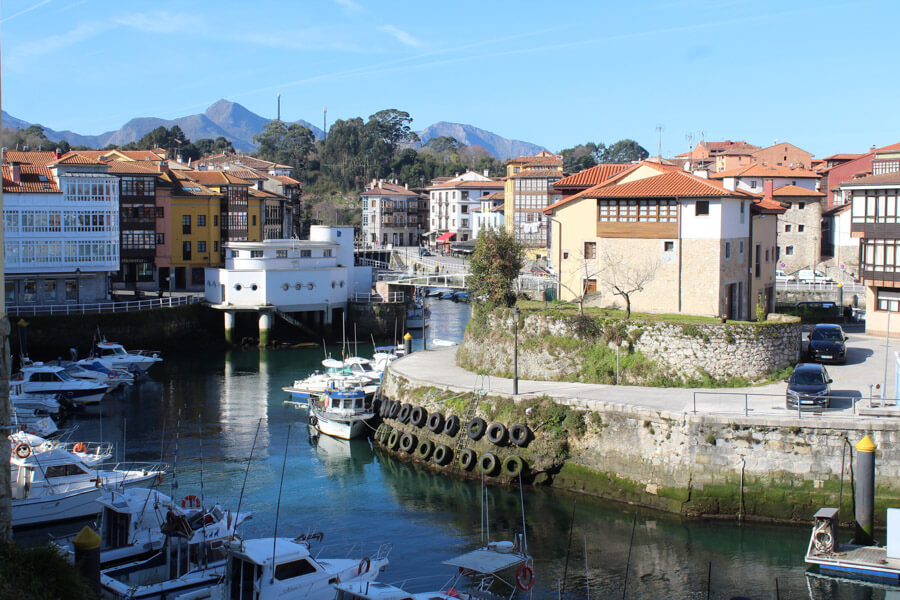
The next coastal town is located in the west, in the famous coastal area in the wine region called Rías Baixas. Cambados is really a super lovely place to visit when on your Northern Spain holidays, both from a cultural and gastronomic point of view.
Usually, it attracts thousands of tourists every year because of the wine since the best white wines in the world come from here.
But your experience is not going to be limited to wine tourism only. In addition to many excellent wineries, there are also country houses, charming squares, a lovely well-maintained historic center in town alone, pleasant boardwalk, and old fishing district of San Take.
If you walk by the Cambados Seafront Promenade first thing in the morning, you will have the opportunity to observe how the fishermen go with their carts to collect clams, razor shells, cockles, and other mollusks from the beach, taking advantage of the low tide.
To see all the famous places in Cambados you’d need to devote at least half a day. Although if you invest more time, you’ll be able to enjoy this pretty coastal city in Spain with the tranquility it deserves. Also, more time will let you take an excursion to see some of the surrounding gems such as the Illa de Arousa and the O Grove Peninsula.
Where to Stay in Combados
Cambados has an extensive hotel offer for all budgets, so it will be relatively easy to find good accommodation without having to book it well in advance, as long as it is not summer. You can check the rates and availability here .
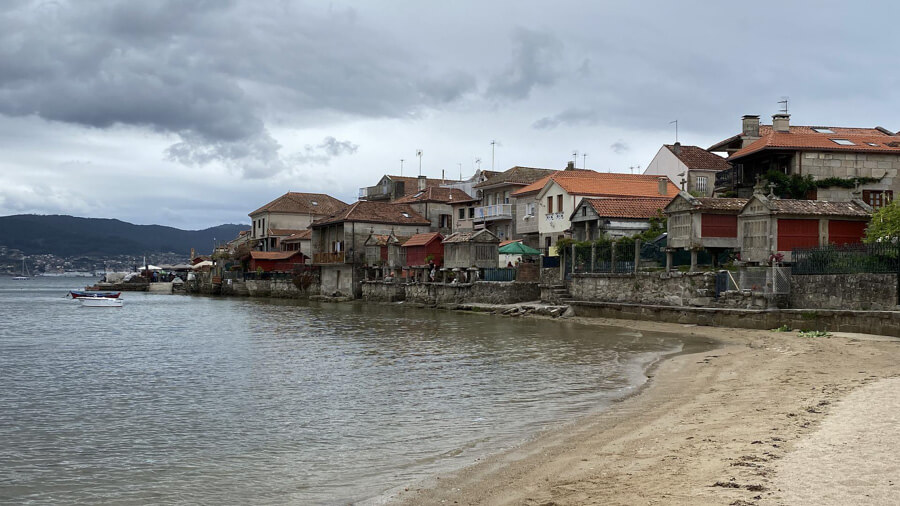
Now we finally come to Combarro – a town that is considered one of the most beautiful towns in Galicia. In fact, not only in Galicia but in entire Spain. Year after year, it tops the lists of towns where to get lost, whether because it is beautiful, unique, or just different. In addition, Combarro has been declared a Historic-Artistic Site.
Although the town itself is small and you can see it in the morning or afternoon, I suggest to take your time and give it the appreciation it deserves. That is even better to do in the off-season when life feels slower and calmer. Because it is also one of the most touristic towns in the region.
What is most striking about Combarro is that at every step you take you come across a granary. Each one comes with its own charm and is prettier than the previous one.
And if you are wondering what granaries are, it is an additional construction to the house in which corn and cereals are normally stored. The unusual aspect that they have is that they are somewhat elevated from the ground so that neither mice nor humidity can enter. Undoubtedly, these constructions are one of the hallmarks of Galicia.
Currently, in the town of Combarro, there are a total of 68 granaries, half of them are right on the banks of the estuary. That is the reason why you want, if possible, to visit Combarro at low tide.
Where to Stay in Combarro
For this town, it can be better to stay not directly in Combarro but somewhere around it to take the opportunity to explore the area. There are many rural houses excellent for a great night’s sleep and for making a base to explore the province of Pontevedra a little more.
Some examples are A Maquia casa (if you stop here, make sure to book with breakfast, you won’t regret it) and Quinta de San Amaro Hotel . This section option has a unique location, views, infinity-like pool, and delicious dishes in its restaurant. All guests also receive a free trip to a winery that produces white wine and includes a tasting session.
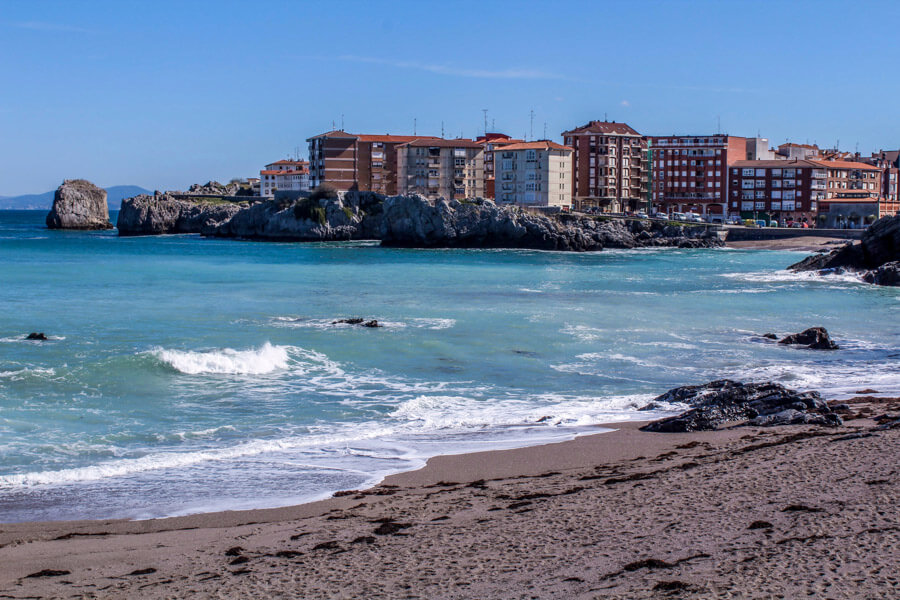
The last stop, at the very end of Spain’s coastline on the border with Portugal, is A Guarda. It is one of the best coastal cities in Spain which is much more than a point on the map. In this location, Spain is separated from Portugal by the Minho River, or rather the last 76 km before it flows into the Atlantic.
The history of this coastal town is linked to its privileged geographical position. This place is abundant in natural resources and therefore ideal for human settlement. Thanks to its scenic beauty and historical heritage, the municipality of A Guarda has become one of the most important tourist enclaves in Galicia.
It is one of those destinations where you should plan to travel to experience gastronomic delights and understand why so many people leave big money in high-end restaurants. The proximity of the Atlantic ocean suggests a fish menu with various local delicacies. Eating lobster here is a religion and a simple walk along the beach becomes the best plan in the world.
This is a place of the best sunsets and incredible viewpoints and locals celebrate parties here as if the world were going to end the next day.
A Guarda is well worth a few days since there are many activities to do in the area. Once there, don’t miss a trip to Mount Santa Tecla which offers the best view of the Atlantic.
Where to Stay in A Guarda
In A Guarda you have hotels for all tastes, from hostel-like accommodations by the beach to spacious apartments with a pool and terrace.
So this is my list of coastal towns in Northern Spain. Do you have any other towns to add to this list? Yes or no, don’t forget to pin it to share it with others!
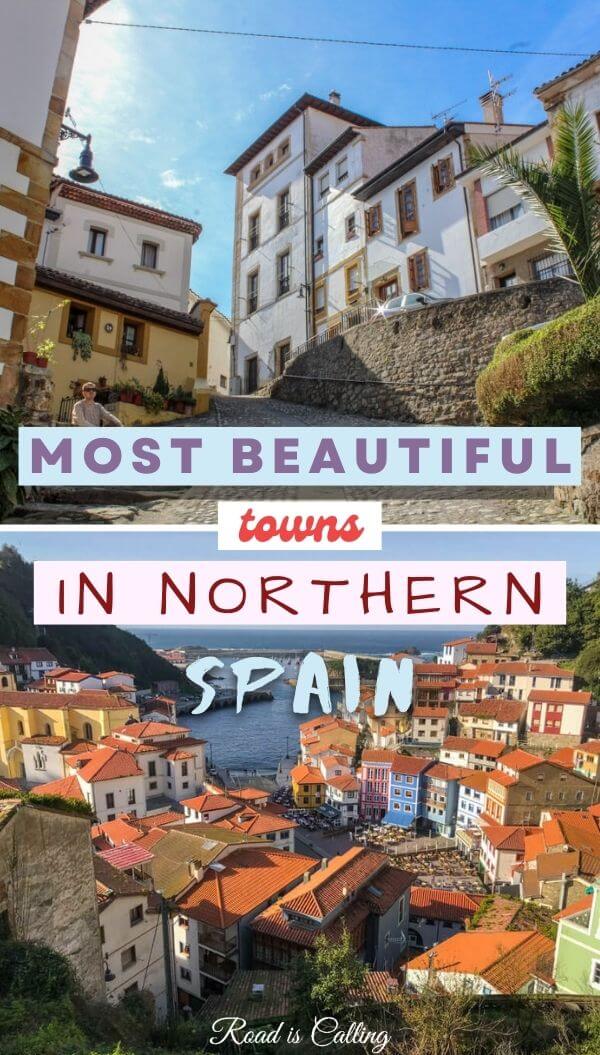
Anya is originally from Ukraine but in heart she is a citizen of the world. She is working online and that’s why has an opportunity to travel a lot and live in different countries. At present time, she is based in Spain while waiting for the war in Ukraine to be over to be able to return home. On this blog, her main goal is to inspire others to travel to under-the-radar places and discover the world while working remotely.
Similar Posts
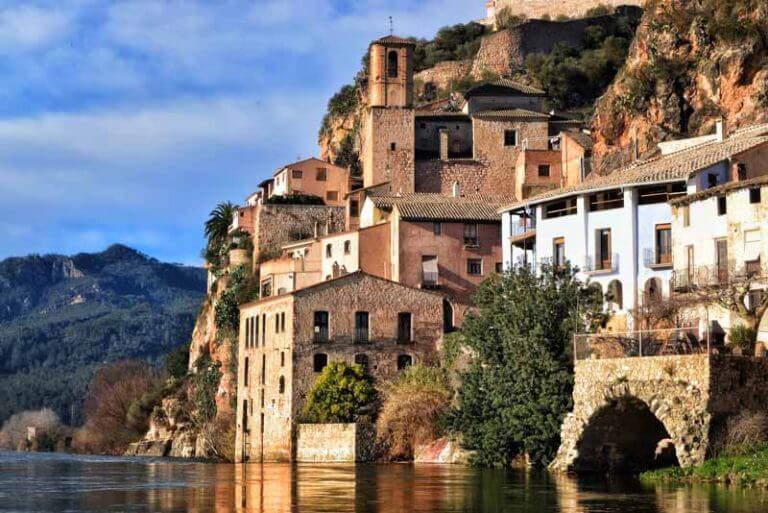
20 Coolest Stops to Make On Barcelona to Valencia Drive
While Barcelona and Valencia on their own have so much to offer that you’d need to spend at least a few days in each city, Barcelona to Valencia drive is no less spectacular. The…
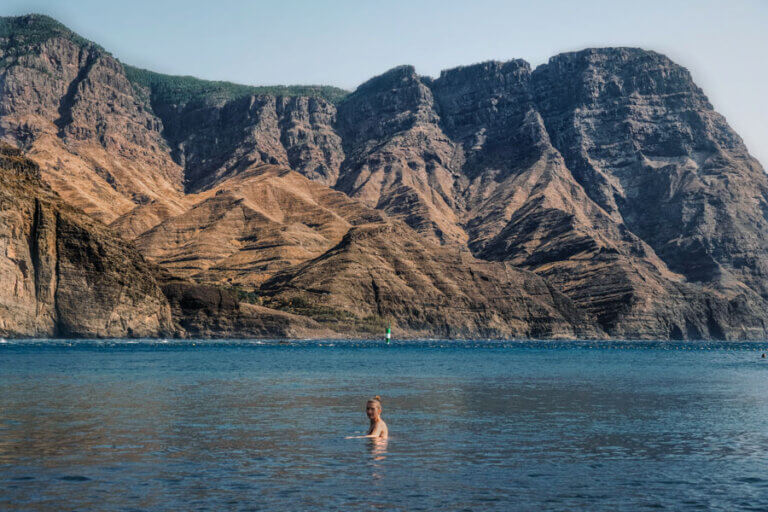
How Many Days in Gran Canaria is Enough for a Holiday? More Than You Think!
I have just returned from Gran Canaria island where Mark and I spent 2 weeks taking a break from our cozy life in Tenerife, and thought to write this post with my thoughts on…
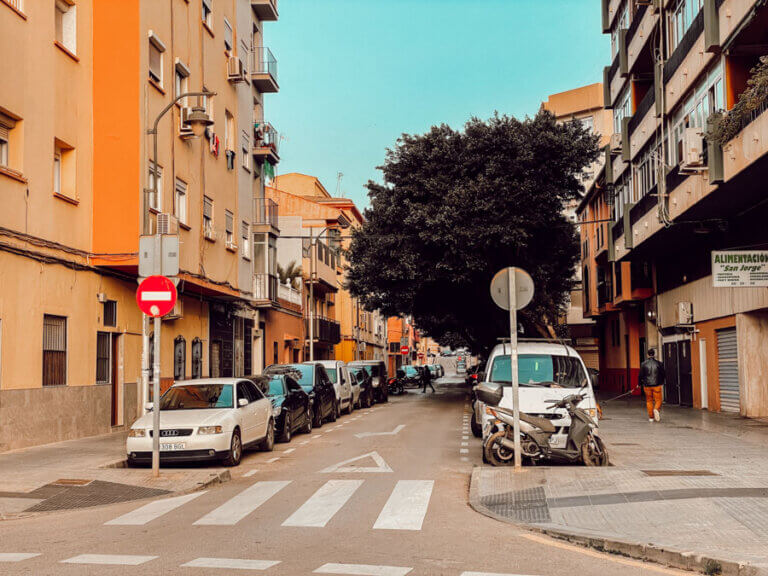
Brief Guide to Renting a Car in Valencia – 11 Main Things to Know
Are you thinking about renting a car in Valencia and just going to explore Spain from this city? That’s a very good decision as Valencia is a great middle point between Barcelona and Murcia,…
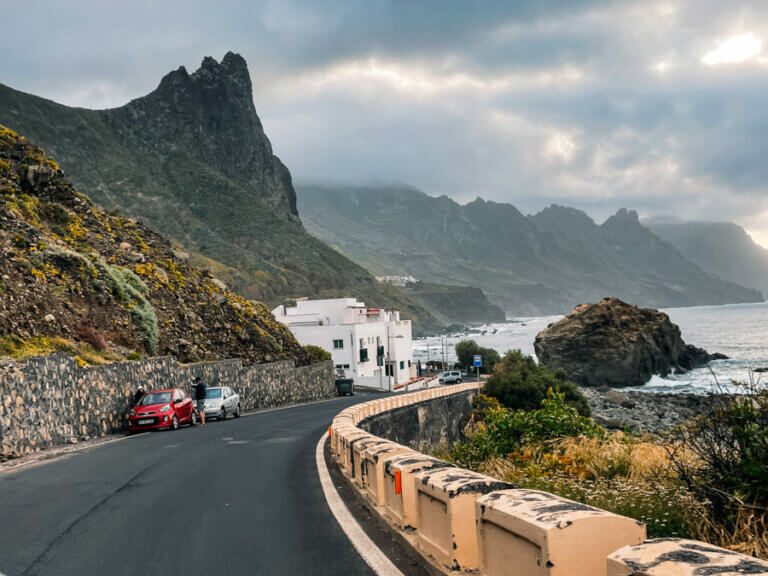
Tenerife Road Trip Ideas: 4 Scenic Drives to Take on Tenerife Island
Picture this – the wind in your hair, the sun on your face, and you are cruising along the winding roads that bring you through different climatic zones to impressive landscapes that seem to…

Madrid in Winter Travel Guide: Best Things to Do, Weather + Winter Tips
Are you visiting Madrid in winter and not sure what to expect? I have been to the capital of Spain on multiple occasions from fall to spring and seriously loved this city during colder…

What to Pack & What to Wear in Spain – Tips for Every Season
Not many people ask a question about what to wear in Spain when planning a trip to this country, especially if traveling there for the first time. Because at first sight, it doesn’t seem…
Hi! Your website has been so fun to learn about Spain and get tips as we plan our travels! Thank you!
I have never been outside the US and finally have the opportunity (I’m 46 🤪) through work! I want to make the best of the opportunity as I’m not sure if I will be back.
We fly in to Madrid, head to Valencia for work right away and then have 4.5-5 days to travel. I
We were originally going to rent a car and head North up the coast stopping along the way to explore and then going to Barcelona. Check out Barcelona for a full day (or 2) and then either continue north to the Costa Brava area for a day before heading back to Madrid for a day or 2 (depending on timing).
A friend suggested going South instead of North along the coast so now I am wondering which is better?!
Do you have a suggestions?
We also had a couple people recommend spending more time in Madrid rather than the other area.
Any recommendations would be greatly appreciated!! We leave Sunday so we are throwing the trip together and winging it!
Looking forward the the adventure!
Thank you!!
Hi Chrystie, so excited for you! I remember my first time going abroad… it was wonderful, no matter where I went I loved everything because it felt so different than back home!
This brings me to the point – since you have never been anywhere outside the US and this is your first time in Spain, no matter where you’ll go, it’s going to be interesting for you! All places you mentioned deserve a visit and have quite a few things for a traveler.
The only thing which I would look at is the time of the year when you plan to go (as you didn’t mention it in your message). If closer to winter, I would definitely skip northern Spain as rain and days with nasty weather can interrupt your trip. Also, to be honest, I definitely wouldn’t be spending more time in Madrid.
If I were you, I’d choose one of the following routes (considering you have 5 days for travel):
1) Spend one day in Valencia and on the second day go to Barcelona by the coast in a rental car (you can use my post about that drive to see where to stop and what to visit) and stop for the night somewhere on the way. Spend your 3rd day in Barcelona and on the 4th day you can go to Madrid and spend 2 remaining days there or go north to Costa Brava (as you mentioned) and see a bit more of the coast there (which is quite different), and then go for the last day to Madrid (you want to have at least 1 full day in the capital).
2) With the second route I’d go south from Valencia to Granada (also partially through the coast and you can use some of the stops in this post about the drive from Valencia to Malaga ). Have at least one full day in Granada (optimally would be 2) and go to Alhambra (but here you need to book tickets in advance and make sure you’ll get in. If you don’t, I wouldn’t be going to Granada then). Also, prebook all your travel in advance in this city (including flamenco and walking/food tours). From Granada you can go to Madrid for the remainder of your stay.
Both routes are very different and give you a glimpse at different parts of Spain, and all of them are great. With the second one, you just need more planning in adavnce, with the first one you can be more flexible and go with the flow.
I hope this helps, enjoy your trip and remember – no matter what you choose – it will be a wonderful trip!
Thank you so much for your detailed response Anya! It is so helpful and appreciated!
We are heading to Valencia Monday – Thursday for my work portion and then taking off either Thursday evening or Friday morning for the coastal adventure!
Do you have any tips for the Costa Brava area if we make it that far? Any cool little villages, hikes to views or beaches we should miss?
Again, thank you!!
Hi Chrystie, sorry for a bit late response. I hope you made a plan for your quick trip along the coast and that you are enjoying Spain!
Leave a Reply Cancel reply
Your email address will not be published. Required fields are marked *
11 Great Places to Visit in Northern Spain
From Galicia to Catalonia, here are the best places to visit in Northern Spain to help you plan your next trip to this country’s green part.
Northern Spain is also called “green Spain” because of the large numbers of coniferous and deciduous forests and green hills. It is a wonderful area for a great vacation in Spain. You have imposing mountain peaks, rugged coasts, and atmospheric villages, while traveling in Northern Spain you can escape crowded beaches and busy seaside resorts. Experience Spain at its purest in impressive pilgrimage sites, vineyards, picturesque villages, and amazing hikes.
What to see in Northwest Spain
1. santiago de compostela.

For almost a thousand years, people have walked the Camino de Santiago and from Spain and far beyond they make a pilgrimage to Santiago de Compostela, ending in the tomb of the apostle James the Greater or continuing to Fisterra and Muxia . It is one of the most visited pilgrimage sites in the world.
Santiago de Compostela is a city located in northwestern Spain, in the region of Galicia, of which it is also the capital. The city grew up around a Roman tomb found in 814 by a shepherd who, according to legend, was led into the forest by a mysterious light or star to the site of the tomb. In the end, King Alfonso II, who was the very first person to make the pilgrimage to the site of the tomb of James the Greater, decided to build a church there, which eventually became the cathedral as we know it today, with an entire city built around it.
One of the sights is the many pilgrims who have come to Spain’s most famous pilgrimage site for centuries. Furthermore, Santiago de Compostela also has a beautiful old town, cozy squares with narrow streets and impressive buildings that you can visit. A must-visit place when you visit Northern Spain!

Gijón is the largest city in Asturias and is located on the Cimadevilla peninsula. It used to be mainly an industrial city and has no “historical” character. But Gijón has given itself a new image with its beautiful pedestrian streets, green parks, beautiful seaside promenade, and cultural attractions. In addition, Gijón is a mecca for foodies and shopaholics and its bustling atmosphere is contagious for young and old. Despite the modern and hip features, the city does have an old center; the old fishing quarter. A wonderful mix of both worlds.
Here they have numerous good restaurants with classic cuisine where you can taste the Fabada and more refined dishes while enjoying a glass of cider. In the harbor, it is possible to book a diving or sailing trip to explore the coast from the sea.
Here are a bunch of great things to do in Gijon rain or shine .

A place that should certainly not be missed during your trip through Northern Spain is Oviedo. Oviedo is located in the heart of Asturias and is considered the capital of the region. Since ancient times it has retained its Monastic and Royal character and its hospitality and dynamism are contagious.
Culturally and historically, Oviedo has something to experience every day and many important Asturias sights can be seen here. See the Fontán Market, the Cider Boulevard, the Pre-Romanesque Fountain of La Foncalada, the Gothic Cathedral, and more! In addition, stroll around the beautiful historic center that has been a source of inspiration for many writers.
4. Picos de Europa

One of the best places to visit in Northern Spain is Picos de Europa. Picos de Europa is a national park and is considered by many to be one of the most beautiful mountain ranges in Europe. Despite the overwhelming beauty of nature, the mountain area is still relatively undiscovered by the general public. Walk past old villages, untouched nature, and crystal clear streams and have a small chance of seeing bears or wolves who still live there.
During a holiday at Picos de Europa, you can drive around by car through nature, or put on your mountain boots and go hiking. We have done several hikes ourselves in this beautiful nature reserve. When you are looking for a detailed overview of the best hikes in Picos de Europa you can find more information via the link.
The peaks and the surrounding nature reserve are increasingly being discovered as a holiday destination for those seeking tranquillity and nature lovers. Despite the slightly increasing tourism, you can still enjoy hiking in the mountains without meeting too many other people, which is very nice! For the active traveler, the area offers plenty of fun activities, including abseiling, hiking, climbing, and kayaking. Nature lovers come here for peace and quietness and to observe birds. And in winter it is a magnet for winter sports enthusiasts and snow lovers.
5. Santander

Santander, capital of the green region of Cantabria, is located in northern Spain on the Bay of Biscay. This port city is located in a picturesque bay between green mountains and the blue sea.
Santander can be divided into the southern and northern parts. The southern part is where the old city center is located. Due to a huge fire that broke out in 1941, which almost destroyed the center, only a few historic buildings remain. In the old center, you will now mainly find large shopping streets and the pleasant square called Plaza Porticada.
Besides the old center in Santander, you can also take a nice walk along the quay and boulevard, called Paseo de Pereda. Here you will come across the La Magdalena peninsula in the northern part. King Alfons XIII had his summer residence built here. You will also find the two most popular beaches of Santander here. Namely Belle Epoque and El Sardinero.
There are also many places of interest around the city; on several sides of the city are the green mountains and steep rocks of the Cantabrian coast. Combine this further with various free museums and with delicious cuisine dominated by fish and shellfish and you have the perfect combination for an unforgettable city trip in Spain.

During your vacation in northern Spain, Bilbao is a city that can surprise you. In the 1970s it was still a polluting industrial city, today it is a modern city with modern architecture, design hotels, haute cuisine restaurants, and the Güggenheim museum, in which traditions are beautifully preserved at the same time.
Bilbao has flourished since the arrival of the Guggenheim Museum in the 1990s. The exterior of the museum is a work of art in its own right, designed by Canadian-American architect Frank Gehry. Inside, artworks by Dalí, Warhol, and Picasso are on display, among others. In addition to the building, don’t miss the ‘Flowerpuppy’ (over 12 meters high and covered with about 70,000 flowers) and the giant spider ‘Maman’ (9 meters high and 10 meters wide).
Besides the Guggenheim, Bilbao has a lot more to offer! The oldest part of the city, Casco Viejo is a maze of narrow alleys between old and colored houses. The shopping street is also nice to stroll through. There is certainly no shortage of food and drinks in Bilbao. Everywhere you will find charming restaurants with a huge choice of delicious pintxos and local wines.
7. San Sebastian

San Sebastian (in Basque “Donostia”) is located in the Spanish autonomous region of the Basque Country. The popular seaside resort is located on the Bay of Biscay on the northern Spanish coast with about 200,000 inhabitants. The Basque coastal town is one of the most visited cities in Spain. San Sebastian is also known as the culinary capital of the world. San Sebastian has the most Michelin stars per square meter in the world! But also for a lower budget, there is a huge choice of bars and restaurants. In addition, it is the seaside resort of the Basque Country and this city is also called Rio de Janeiro in miniature. The beautiful beaches in the city are ideal for water sports activities or boat trips. In addition, in San Sebastian, you will also find beautiful shopping streets in the historic city center called Parte Vieja.
In the evening, the historic heart is the ideal place to find bars and taste the famous pintxos. When you follow a 1 day San Sebastian itinerary you have sufficient time to discover the highlights of the city.
8. La Rioja

Speaking about wines, another beautiful place to visit is the region of La Rioja. Here you will find about 600 wineries. The landscape is beautiful where you will see endless vineyards, several old and modern wineries, and picturesque villages. For example, visit one of the wine cellars where you can take a tour with a wine tasting.
Besides the many wineries, the village of Olite is also worth a visit. This village is located in the province of Navarra which is about an hour’s drive from Logrono. Here you can visit a beautiful castle. The beautiful village of San Vicente is also well worth a visit. Here it is as if time has stood still. The special thing about this village is the church that is located on top of a hill. This is also one of the few places in Spain where flogging is still performed.
Which other places can you visit in Northeast Spain?
To visit these places in Northern Spain you need at least 2 weeks. If you have more time, it is great to discover more about Spain. In this case, you can travel to the central part of Spain towards Madrid or you can head east to discover places like Zaragoza, Barcelona or the Pyrenees. Our recommendation is to head east. Below you can read briefly why these places are so nice to visit.
9. Zaragoza

It is the fifth-largest city in Spain, and yet not very well known. A shame, because Zaragoza is a beautiful typical Spanish city. It is a beautiful place to walk through, with warm temperatures, delicious food, and a lot of history. There are a lot of things to do in Zaragoza that will surprise you.
The city is located on the River Ebro in northern Spain and is the capital of the Aragon region. The biggest eye-catcher is the El Pilar cathedral, which is beautifully lit at night. You will find several valleys around the city, so a road trip is also recommended. When in Spain, of course, you must have eaten really good tapas at least once. And in Zaragoza that is certainly possible. The El Tubo district is even seen as the tapas district where you can enjoy these delicious tapas.
10. Barcelona

Whether you visit Barcelona for a city break or as a stopover during your vacation in Catalonia, you must go there at least once.
Because Spain’s most famous city offers everything for lovers of architecture , history, art, good food or shopping. It also has its beaches. The weather is almost always nice, you have wonderful long evenings in the summer and even in winter, the temperature is still pleasant, with a bit of luck you can still sit on a terrace without a coat in the sun in November and December.
You won’t have to get bored in Barcelona because you are also able to visit many great places. From Gaudí’s city you can, for example, take the train to Montserrat, the picturesque seaside town of Sitges, cycling city of Girona, or Gaudí’s Crypt of Colònia Güell.
11. The Spanish Pyrenees

A holiday in the Spanish Pyrenees in the border region of France, Andorra, and Spain takes you to rugged mountains, lovely green valleys, and deep ravines. But also to villages where time has stood still and beautiful Romanesque buildings. The west part of the Spanish Pyrenees consists of a rugged landscape with steep mountains and deep canyons. And eastwards it merges into a rolling green landscape of mountains, alpine lakes, and valleys. A true paradise for walkers, cyclists, mountaineers, bird watchers, rafters, and skiers.
During your holiday in the Spanish Pyrenees, for example, you can explore Spain’s Ordesa Y Monte Perdido National Park with its jagged limestone massif and spectacular gorges and waterfalls. Or the national park Aigüestortes i Estany de Santa Maurici with, among other things, Lake Sant Maurici. So whether you love nature, culture, or architecture and are looking for a car holiday, family holiday, or active holiday: the Spanish Pyrenees are the right place for you even if you are a beginner hiker!
Please note that starting from November 2023, you could need an ETIAS visa waiver prior to your travel to Europe.
ETIAS is an acronym for the European Travel Information and Authorization System. It is an electronic system put in place by the European Union to ensure their security by screening visa-free travelers who are planning to enter the EU. The system will require travelers to submit an electronic form with their personal and travel information prior to their arrival in the EU. Once approved, travelers will receive an ETIAS authorization which will allow them to enter and stay in the EU for up to 90 days.
ETIAS is required for citizens of the 60 countries listed on the European Commission’s visa-exempt list. This list includes most countries from North America, Central America, South America, the Caribbean, Oceania, and other parts of the world. For a full list of countries, please consult the ETIAS website.
Cynthia & Alexander are the adventure travel bloggers behind Travel your Memories. They travel the world and share all the tips to inspire and help others plan their trips.


Incredible Northern Spain Road Trip: 7-Day Itinerary
Please note that some of the links may be affiliate links , and at no additional cost to you, I earn a small commission if you make a purchase. I recommend only products & companies I love and use, and the income goes back into making this little blog successful!
The wonderful surprise about this 7-day Northern Spain road trip is that the farther west you move from Bilbao to Santiago, the more remote and authentically Spanish it gets. Be prepared for small towns along rocky coastlines, delicious meals of octopus and pintxos in standalone restaurants tucked in the cliffside ( nothing fancy, rather deliciously local ), and a generally serene and slow, non-connected world.
I spent about a month doing this route in September last year because I like to travel slowly and meet friends along the way. This weeklong, more off-the-beaten-path itinerary is the best of the best stuff that I liked, and it optimizes the drive times so you’re not constantly on the road. Here’s the high-level itinerary:
- 2 Days: Basque Country – Bilbao – Guggenheim Museum – Gaztelugatxeko – San Sebastian
- 2 Days: Asturias – Picos de Europa Hikes – Town of Llanes – Gijon
- 3 Days: Galicia – Playa de las Catedrales – Santiago De Compostela
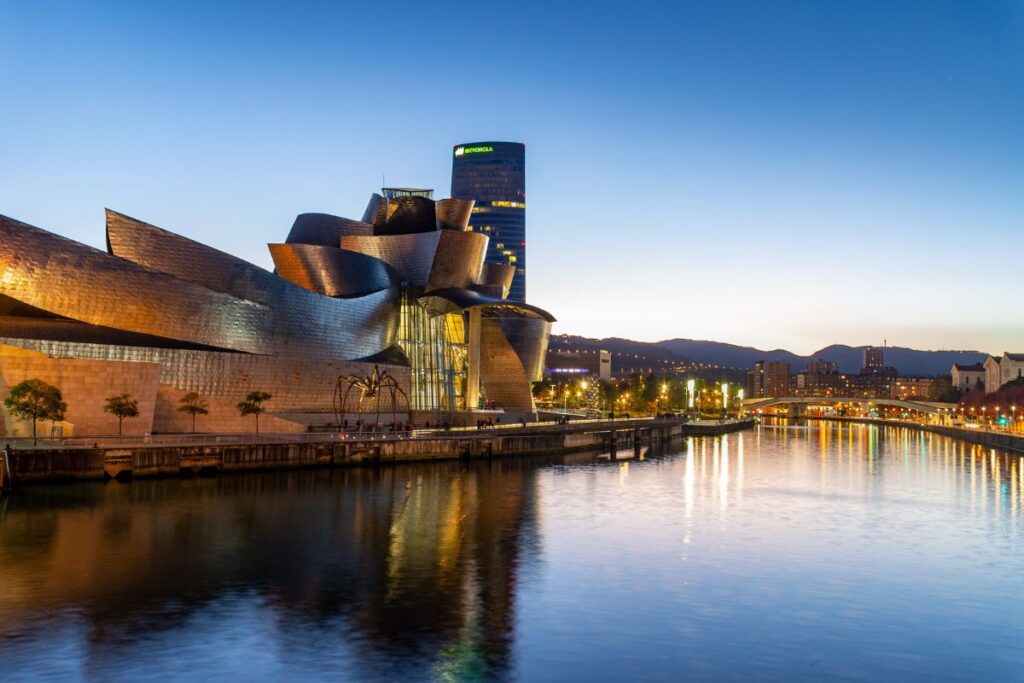
I would recommend more time in Bilbao, San Sebastian , and the region around Llanes , especially if you’re keen on hiking portions of the Picos de Europa mountains.
Table of Contents
Northern Spain Road Trip: Full 7-Day Itinerary
You can land in Madrid or Barcelona and take a connecting flight to Bilbao Airport or San Sebastian Airport (smaller, but services a lot of European airlines). I started in Bilbao, rented a car, and went wild on this itinerary.
DRIVING TIP : Driving from one end of northern Spain to another, from Bilbao to Santiago de Compostela, takes about 6 hours , so nothing on this road trip is too long of a drive when you break it up into 7 days.
Day 1: Bilbao & Guggenheim Museum
Today is about exploring the food scene (tapas and pintxos) of the Basque Region and visiting one of the most famous museums in Spain.
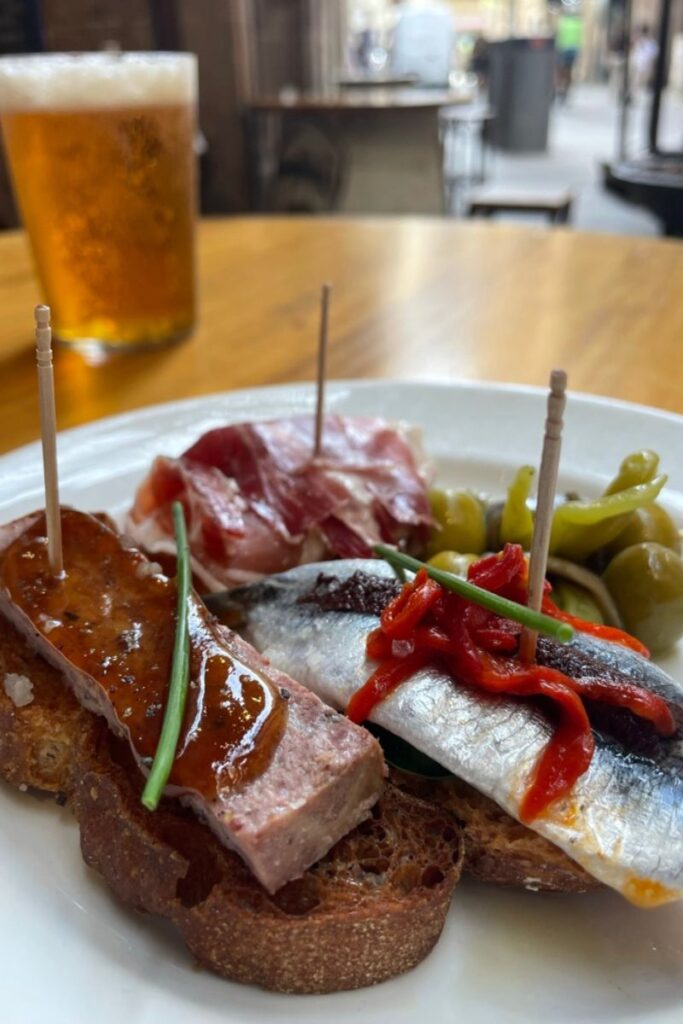
I booked a guided tour because it came recommended by a local friend, and headed towards the big dog built of flowers, where the museum is located. It is one thing to wander the Guggenheim Museum on your own looking at the pretty pieces of art and saying “ ooo !”, and it’s another completely to have an art history guru walk you through the context and purpose of each piece and have a discussion around it.
➡️ Book a guided tour, as there’s a lot of context behind the art: Guggenheim Museum Private Tour with Admission . ⬅️
I spent the afternoon walking around and getting acquainted with the vibe of the city. I loved Casilda Iturrizar Park .
You are in the Basque Region now, and it is all about the Pintxos ( adorably pronounced “pinch-ohs” ), the most intelligent way to eat a variety of foods and not over-stuff yourself. These are small snackies, bites of meats, cheeses, and pickled delicacies on fresh toasty bread.
If it’s a bar-hopping kind of night, start at La Antigua Cigarreria and make your way around the winding streets, grabbing pintxos as you go.
PRO TIP : Order a “Marianito Preparado” and enjoy a super yummy spin on the Italian negroni with Spanish flair!
Day 2: San Sebastian & San Juan de Gaztelugatxeko
Today is a little road trip east to San Sebastian, where the drive is 1.5 hours each way. On the way to San Sebastian, stop at Gaztelugatxeko ! I spent a couple of hours on the hillside overlooking the sea and grabbing lunch at the restaurant there.
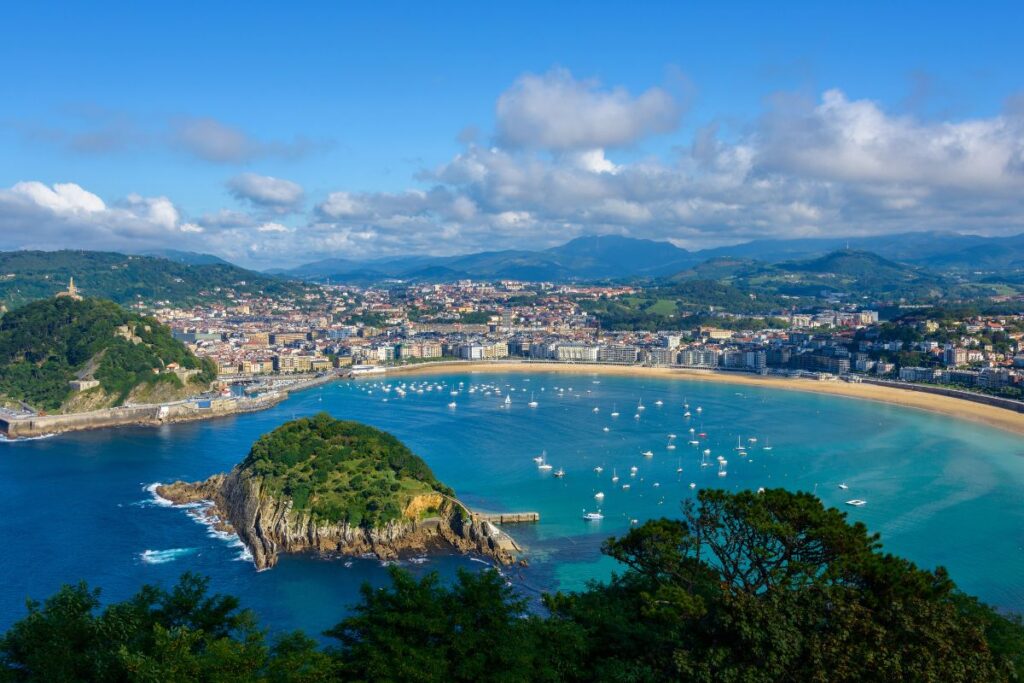
In San Sebastian, here are some of my favorite places to visit:
- La Concha Beach : Renowned for its picturesque bay and fine sands, La Concha is perfect for sunbathing, and enjoying the views.
- Parte Vieja (Old Town) : Explore the little streets, filled with historic buildings, busy pintxo bars, and trendy shops.
- Monte Igueldo : Offers panoramic views of the city and coast. Accessible by a funicular, it’s a great spot for photos and lazy walks.
- Miramar Palace : A historic building with beautiful gardens with splendid views over La Concha Bay.
I would make a reservation and grab dinner at one of the many Michelin-rated restaurants in town. To be honest, no matter where you eat, low-key or high-end, know that this is one of the biggest gastronomic towns in Spain, backed by Anthony Bourdain himself. Mornings or late afternoons are best for popular spots to avoid crowds.
For pintxos, visiting during traditional meal times will have you feeling the Spanish vibe. It’s an easy 1-hour, 15-minute drive back to Bilbao afterward.
Day 3: Explore Llanes
A little hidden gem on the northern Spain road trip is the town of Llanes in the mountainous Asturias Region, just 2 hours away from Bilbao. Llanes is known for its beautiful beaches around town, a well-preserved old town with medieval streets, traditional architecture, and the impressive Basílica de Santa María, and the stunning Picos de Europa mountains are nearby, which we are hiking tomorrow.
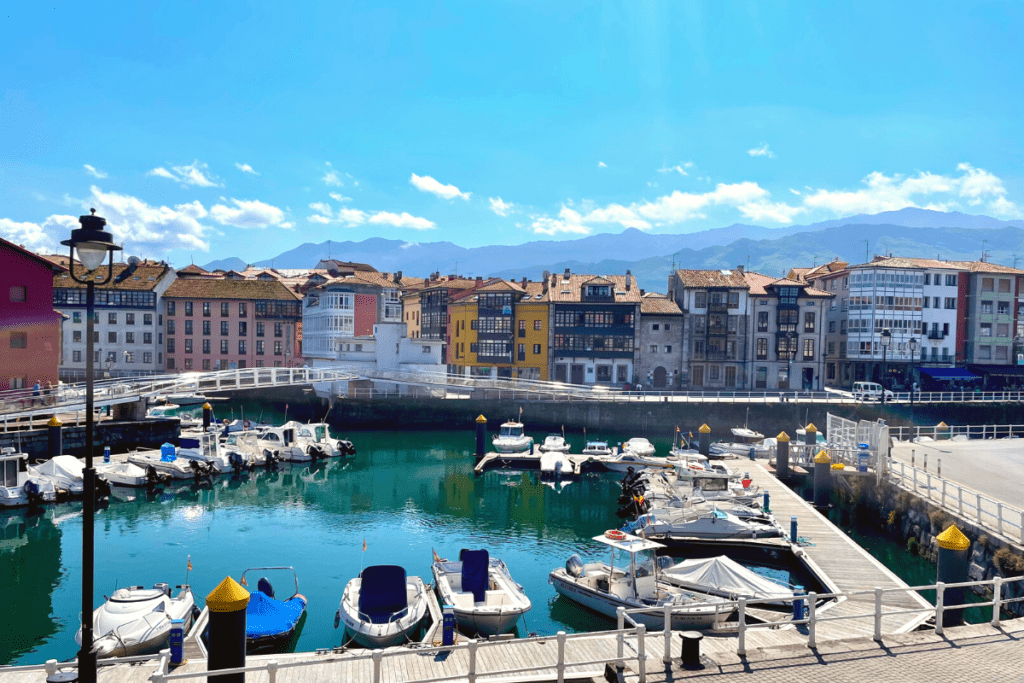
Here are the best things to do in Llanes:
- Playa de Toró : A unique beach known for its peculiar rock formations
- Playa de Gulpiyuri : A hidden and unusual inland beach, set in a meadow and accessible only by foot.
- Cuevas del Mar Beach : A stunning beach known for its natural caves.
- The Historic Center : Stroll through the charming streets, visit the Basilica, and see the ancient defensive tower, Torre de Llanes.
- Paseo de San Pedro : A scenic cliffside walkway with spectacular views of the Cantabrian Sea and the town – I did this after lunch and it was great!
Don’t leave Llanes without sampling the local Asturian cuisine, including fresh seafood, cheeses (like the famous Cabrales), and sidra (cider).
Or grab a bocadillo from the bakery, and head to one of the beaches above. Bocadillos are little sandwiches on fresh baguettes filled with meat (Fuet salami or Jamon Iberico) and a spread (tomato or butter). They are delicious, fresh, and always cheap!
Day 4: Hike the Picos de Europa
You’ve been eating like a little chunk this whole time, so it’s time to hit the trails! Get into the mountains and do a hike in the Picos de Europa.
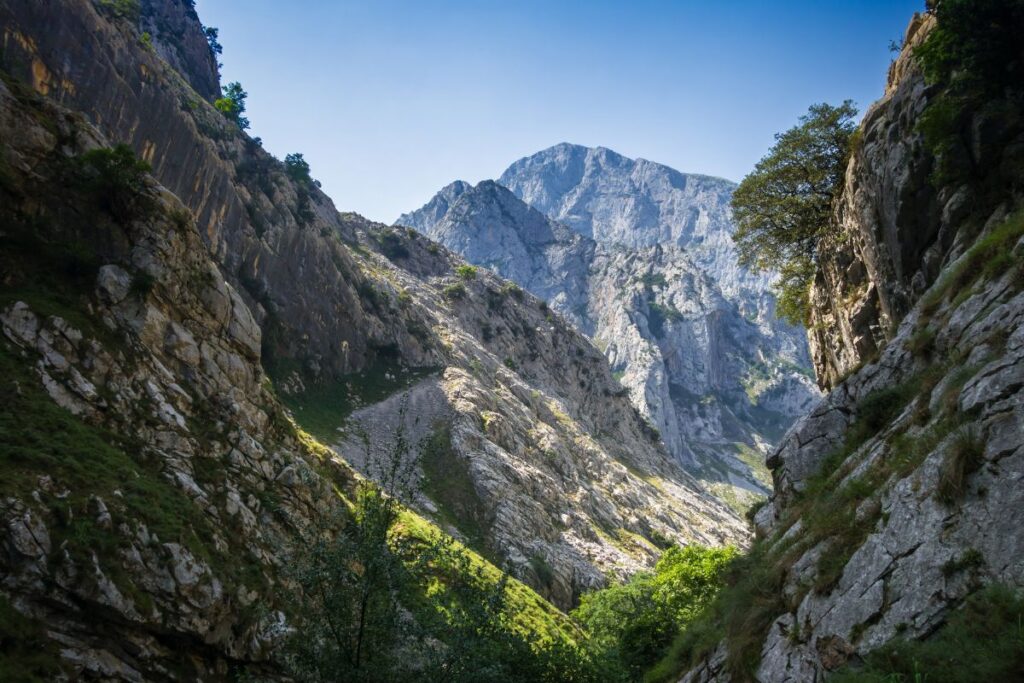
➡️ Book a Guide for a Day Hike in the Picos de Europe Mountains. ⬅️
Either choose your own adventure or grab a professional mountain guide and journey through the Vega del Torro and down to Lake Moneta – this was one of the highlights of my trip.
Here are some AllTrails treks that I also have my eye on for next time:
- Ruta del Cares (Hard, 13 miles) : Known as the “Divine Gorge,” this trail is one of the most popular hikes, offering stunning views of the gorges (a shorter, easier alternative ).
- Lagos de Covadonga (Hard, 10 miles) : This hike includes the famous glacial lakes of Enol and Ercina and offers spectacular mountain views.
- Fuente Dé – Cable Car and Hike (Hard, 4.6 miles): Take the cable car up and hike around the upper parts of the mountains for breathtaking views.
Day 5: Gijon & Playa Madre
The drive from Llanes to the first stop of the day, Playa Madre, is 40 minutes. I spent the morning on Playa Madre, and if you’re up for a little detour drive, this is worth it: Mirador del Fitu . The drive from Playa Madre to Gijon for the afternoon is another 40 minutes

I spent a few lazy days in this cute city just wandering, doing a little shopping, sleeping, and bar hopping. Plenty of brewpubs and delicious restaurants around.
My best advice is to visit a Sidrería to see how cider is poured from a height to aerate it (similar to Turkish tea ). I also love walking around Cimavilla , the old fisherman’s quarter, full of narrow streets, colorful houses, and sidrerías (cider bars). I recommend eating your way through Gijon at night, especially fresh seafood and traditional dishes like fabada Asturiana.
Day 6 : Playa de las Catedrales
The drive from Gijon to Playa de las Catedrales is 1.5 hours along the coast. After you explore the caves and arches, it’s another 1.5 hours on to Santiago de Compostela, where I made a home base for the last bit of the road trip.
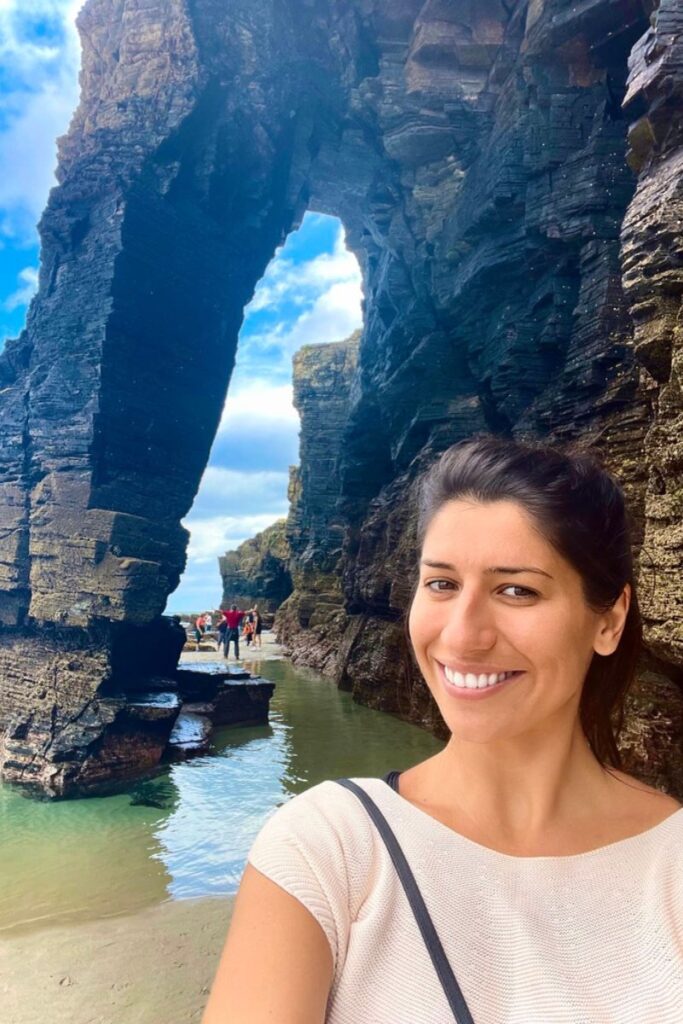
Playa de las Catedrales , or the Beach of the Cathedrals, is a stunning natural wonder located in Galicia, Spain. Known for its awe-inspiring rock formations, this beach is famous for its towering arches and cave-like structures that resemble the buttresses of a cathedral, hence its name.
The beauty of Playa de Las Catedrales is dramatically altered by the tide , so best to visit during the morning. During high tide, it appears just like a regular beach, but low tide reveals the magnificent arches and caves.
➡️ Local Site To Schedule a Time To Visit Playa de Las Catedrales ⬅️
There is also a wooden walkway about 12km long along the coast next to the entrance to the beach and a few local restaurants in the nearby little town of Rinlo – I loved Restaurante a Mirandilla . Go for the baked octopus ( pulpo ), it’s a specialty of Galicia!
Spend the afternoon making your way to Santiago de Compostela for dinner in the old town. This is where I spent a few days diving into the history around El Camino pilgrimage walk and the Galician culture.
Day 7: Santiago de Compostela
Santiago de Compostela is a destination of its own, not just the end of our road trip. This is where all the pilgrimages and caminos end and the capital of the Galician region. Most, if not all, of Santiago de Compostela’s top tourist attractions are located in the Old Town.
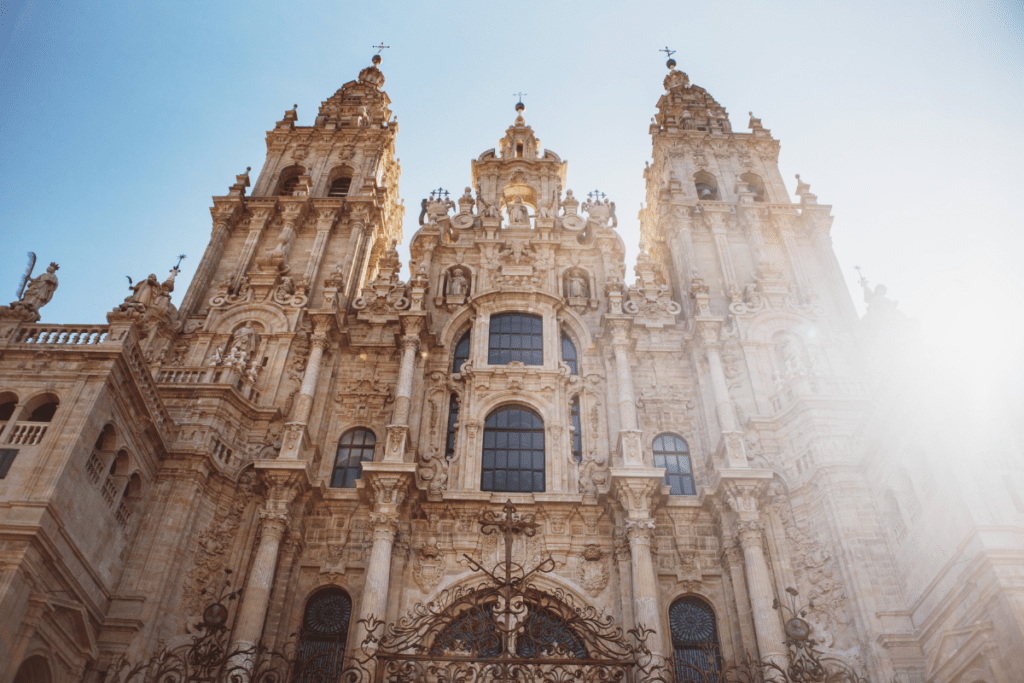
The Santiago de Compostela Cathedral is a ‘holy moly’ sight to see. Looking up at the massive cathedral literally left me as breathless as when I saw the Vatican for the first time. The tomb beneath the cathedral’s main altar is the burial site of St. James, and it’s the final destination of all pilgrimage walks in the region.
FUN FACT: It is just one of three known churches built over the remains of an apostle. The other two are St. Peter’s Basilica in Vatican City and St. Thomas Cathedral Basilica in Chennai, India.
➡️ Grab A Guided Cathedral Tour for more fun facts. It’s super cheap and educational! ⬅️
After the Cathedral tour, walk around the old town and explore the little shops and wine bars. Right around sunset, head into the Parque de Alameda for a walk.
Grab dinner at O Gato Negro and try percebes . Percebes, or “Lucifer’s Fingers”, is a delicacy along the Galician and southern Portuguese coasts. They are nicknamed not just because of their devilish appearance, but because they’re super hard to get. Give it a go – it’s an unusual regional food that you can’t have just anywhere.
Map: Road Trip Through Northern Spain
If you were to drive from one end to another, from Bilbao to Santiago de Compostela, it would take you 6 hours total.
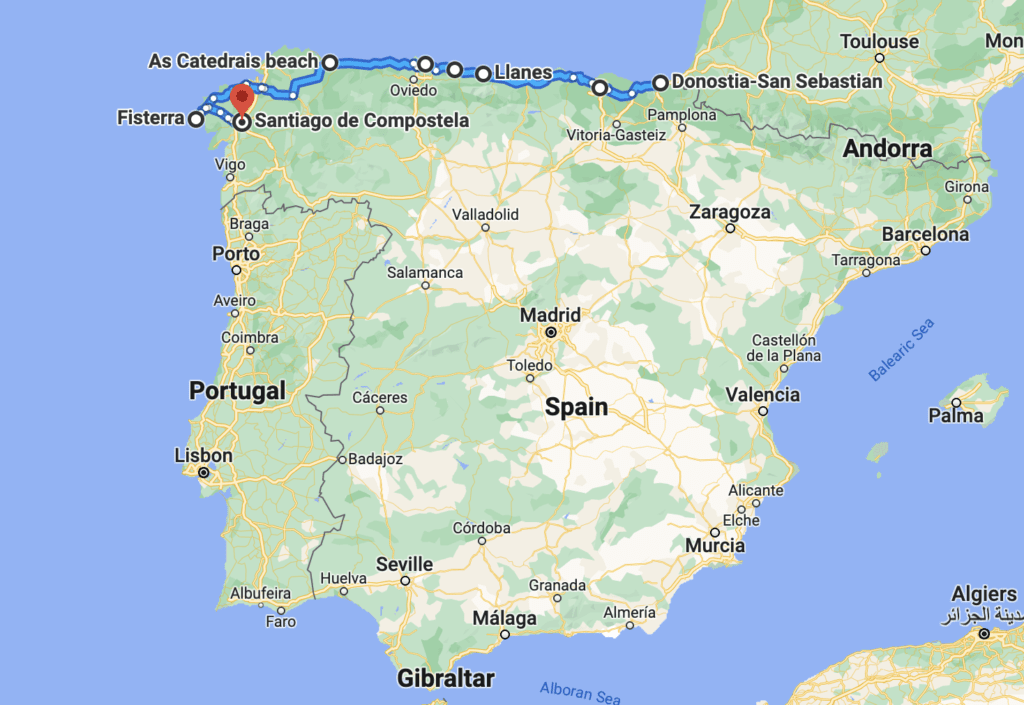
Unique Places I ❤️ In Northern Spain
Beyond the major cities of San Sebastian, Bilbao, Gijon and Santiago de Compostela, which are all amazing, here are my favorite little places to visit on this northern Spain road trip.
✅ Gaztelugatxeko
Gaztelugatxe is not a town but a small islet on the coast of Biscay in the Basque Country, Spain, about 30 minutes from Bilbao. The islet is connected to the mainland by a man-made bridge, which leads to a narrow path with over 240 steps.
It’s best known for being the hermitage of Saint John the Baptiste de Gaztelugatxe. This place has gained international fame, especially after being featured in Game of Thrones as the fictional Dragonstone.
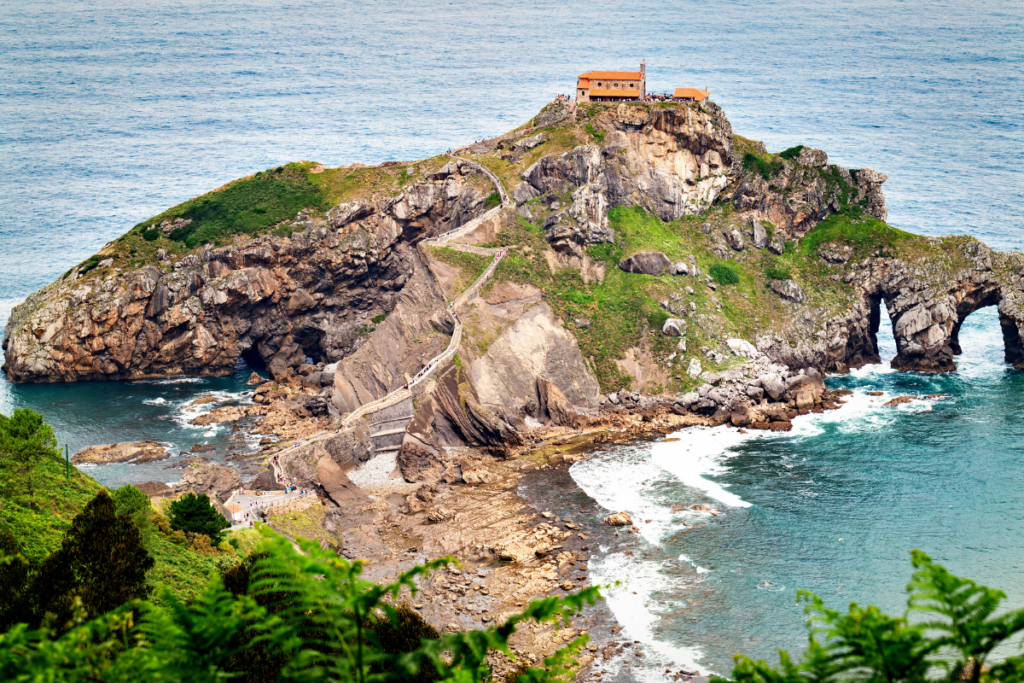
✅ Town of Llanes
Llanes is an ideal destination for people looking for a blend of beach time, hiking the Picos de Europa, and a fish-forward foodie scene. It’s a small town, but the combo of natural beauty and traditional Asturian charm makes it a memorable stop in northern Spain.
✅ Guggenheim Museum
The Guggenheim Museum in Bilbao is an iconic symbol of modern and contemporary art. It’s one of those museums you should visit once in your lifetime, similar to the Prado in Madrid and the Louvre in Paris.
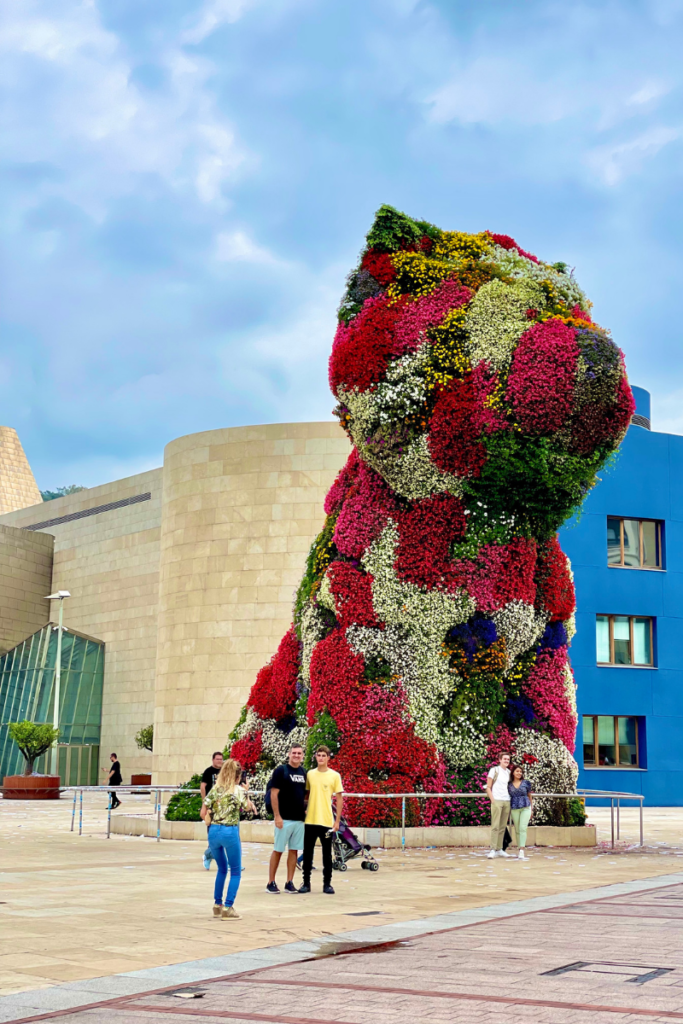
My Favorite Thing: Outside the museum stands one of its most famous installations, “Puppy” by Jeff Koons, a gigantic floral sculpture of a West Highland Terrier, showcasing a living, organic artwork contrasting with the metallic facade of the museum.
Designed by Frank Gehry, the museum is a masterpiece of 20th-century architecture. Not only that, but it has played a pivotal role in the transformation and revitalization of Bilbao from an industrial city into a cultural hub. It houses an impressive collection of thought-provoking modern and contemporary art, and its exhibitions are constantly evolving.
✅ Picos de Europa Mountains
The Picos de Europa mountains, located in Northern Spain, are a part of the Cantabrian Mountains. The highest peak is Torre de Cerredo, standing at 2,650 meters (8,690 feet). It’s a popular destination for hikers and there are plenty of day hikes to go on.
✅ Playa de las Catedrales
Playa de las Catedrales is one of the most spectacular natural wonders in Galicia. The beach is renowned for its massive rock arches and caves, which can be seen and explored at low tide. These formations resemble the flying buttresses of Gothic cathedrals, giving the beach its name. I think the beach provides an interesting glimpse into the power of the sea and what erosion and tides can show you.
PRO TIP: It’s crucial to check the tide schedule before planning your visit. The times for low tide change daily, so it’s important to align your visit accordingly. Also, wear water shoes when you visit, lots of slippery rocks.
During peak times, a free ticketing system is in place to protect the beach from overcrowding. You can reserve these online through the official website of the Xunta de Galicia.
Where To Stay in Northern Spain
Following the weeklong Northern Spain road trip, here is where I stayed each night, with hotel recommendations I loved.
Bilbao [2 nights]
From Bilbao, I made a day trip to San Sebastian, which is 1.5 hours away. I opted to drive back to Bilbao because it was more cost-effective, and I liked the grungy vibe in Bilbao better.
📍 Luxury: Vincci Consulado de Bilbao – View of the Guggenheim Museum, a fantastic hotel with great services, breakfast, and breakfast. 📍 Mid-Range: Bilder Boutique Hotel – Charming and modern hotel in Old Town Bilbao, great value and service.
Llanes [2 nights]
This was my home base in the Asturias region, opting for one day of beach hopping in Llanes and one day of hiking the Picos de Europa Mountains.
📍 Luxury: Hotel Rural La Lluriga – A country estate, this family-run, cozy hotel is an amazing little nature escape, with a pool, gardens, 100-year-old trees, a reading room, and a fireplace. Great home base for exploring the region. 📍 Mid-Range: Don Paco – Right in the heart of town, this hotel is actually a restored convent. Think high vaulted ceilings, exposed brick, and fireplaces with modern furniture and decor.
Gijon [1 night]
To break up the drive from Llanes to Santiago de Compostela, I spent a day in Gijon and took a little cooking class.
📍 Mid-Range & Chic: El Moderne Hotel – great for a night, has a dark masculine modern vibe to it, great price for the amenities and location.
Santiago de Compostela [2 nights]
On the way from Gijon to Santiago de Compostela, I stopped and spent a morning at Playa de Las Catedrales, but because there is not much else around, I kept driving the 2 hours all the way to Santiago and spending the last 2 nights sleeping in the beautiful town.
📍 Chic & Cozy: RoomPEDRA – A super nice little apartment, great for a 2-night stay, 5 minutes walk from the Cathedral. It’s not the usual luxury hotel I recommend, but I really liked how clean and cozy it was, and the fact that it had a kitchen because I was a bit tired of eating all my meals out. 📍 Mid-Range: Hotel Altaïr – cute boutique hotel just outside Casco Viejo (Old Town) so you can actually find parking. Comfy rooms, beds, and all the exposed brick you can get.
Getting Around Northern Spain
This route can be done by either renting a car or sorting out the public transportation – busses and trains – from city to city. I recommend renting a car and doing this as a road trip.
This is what I personally use to check prices: Discover Cars: Rental for Northern Spain Road Trip
The public transportation and Uber in Spain , especially up north in the more rural areas of this road trip are not great (or existent).
Where should I start my road trip?
I recommend starting in Bilbao or San Sebastian and renting a car to take you along the road trip to Santiago de Compostela. From here, you can either take half a day to drive back or return the car in Santiago de Compostela and fly back home.
There is a small fee that rental car companies impose if you rent in one city and return it in another, but it should not be much because you’re in the same country.
Is Driving in Northern Spain easy?
Yes, it is. Not only are the roads in good condition, but the northern Spain road trip has you driving along the rocky coastline for a few hours every couple of days.
For the longer drives from Gijon to Playa de las Catedrales, here are a few unique ways to pass the time – from road trip games to documenting your trip for friends and family!
Budgeting For A Northern Spain Road Trip
General costs depend on the time of year you go. I went in September and the weather was gorgeous, still good for the beaches and hiking, and a little past the high summer season. That said, here are some numbers and tips for you.
TOTAL COST : ~€1,200 for a weeklong road trip.
- Car Rental: $100/week
- Hotels : $60-90/night
- Food : $30-50 a day per person
- Wine : About $2 for a glass of amazing Rioja wine ( and Spaniards have a very generous pour!)
FAQ: Northern Spain Road Trip
Here are a few frequently asked questions about going on this road trip.
Is Northern Spain worth visiting?
Firstly, this region is fairly inexpensive and scenically gorgeous – you’ll have the sea on your right and the mountains on your left as you make your way west along the coast. Best of all, cell reception is spotty ( nightmare for some, heaven for others ), but it forces an unplug from a hectic world, which I truly appreciate.
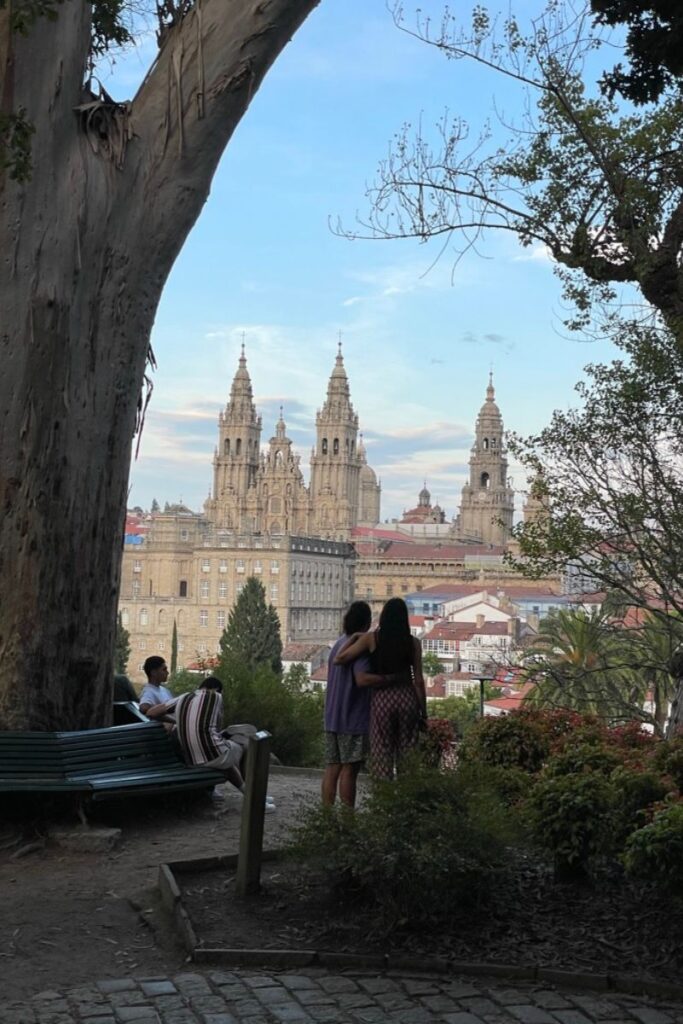
And secondly, you’ll be driving, hiking, and eating along the 1,000-year-old pilgrimage route to the shrine of St. James in Santiago de Compostela . This is known as the Way of St. James or the Camino de Santiago in Spanish.
Over 200,000 pilgrims (people like you and me) travel to the city each year from various starting points all over Europe. I would love to do this walk one day for many reasons – health, inner peace, being one with nature, be one with myself.
All in all, Northern Spain is more than just Barcelona and San Sebastian. Be brave, and come see for yourself!
When Is The Best Time to Visit Northern Spain?
The best times for hiking, beach days, and generally sunniness will be in the summer or fall seasons. I went in September and the weather was a little chilly at night but sunny and warm during the day.
How Many Days Do I Need To Visit Northern Spain?
To really give it a solid go, from San Sebastian to Santiago de Compostela, I recommend a minimum of 1 week . You can follow the 7-day itinerary of my road trip through Northern Spain above. I spent 3 weeks altogether doing this same route, spending 3x the time in each place, and I still felt like there were things I was missing.
Do I Need Travel Insurance For This Trip?
If you’re traveling outside of your home country, and especially if you’re out there hiking and adventuring, I recommend getting some travel insurance for the duration of your stay.
SAFETYWING: Nomad Travel Insurance
Travel medical insurance with SafetyWing is my favorite because it’s flexible, less expensive than the other big insurance companies at ~$40 a month worldwide, and it covers COVID-19 quarantine situations. Here’s the link so you can look into it.
What should I pack for this road trip?
This northern Spain road trip is about a few nights out in towns like San Sebastian and Bilbao (where people dress nice), beach life, a day of hiking the Picos de Europa and visiting the famous Santiago de Compostela church. A lot to pack for, but here’s my packing list beyond the basics like toothbrush and passport:
- Backpack : A comfortable daypack for hiking and city exploring.
- Casual Outfits: T-shirts, tank tops, and comfortable shirts for the daytime.
- Nicer Outfit : A couple of dressier outfits for nights out in San Sebastian and Bilbao. Think smart-casual – a nice dress or blouse and skirt for ladies, and chinos with a polo or button-up shirt for men.
- Swimsuit : At least 1 swimsuit, cover-up, and one pair of flip-flops, a compact and quick-drying towel
- Hiking Gear : A pair of good hiking pants and a lightweight, long-sleeved shirt to protect against the sun and brush. I hiked in my sneakers and opted to leave the hiking boots at home.
- Types of Shoes : Comfortable walking shoes like sneakers (that you can do a day hike in the mountains in), one pair of flip-flops, and a pair of nicer shoes for evenings (I did opt for a low heel and it was ok).
- Light Jacket : A lightweight, waterproof jacket for unpredictable weather, especially in the mountains and coastal areas. Sometimes at night, even in the summer, there’s a chill in the air.
- Accessories : Sunglasses, a hat or cap for sun protection, and a lightweight scarf for cooler evenings.
- Travel Adapters : If you’re coming from outside Europe.
👉 PRO TIP: Pack light, because you’ll be moving your luggage frequently on the road trip. Opt for a carry-on suitcase or backpack that’s easy to handle.
Final Thoughts: Northern Spain Road Trip
I loved road-tripping through Northern Spain. I spent 3 weeks going from San Sebastian to Santiago de Compostela, and have put together a maximized 7-day Northern Spain itinerary that hits all the good spots.
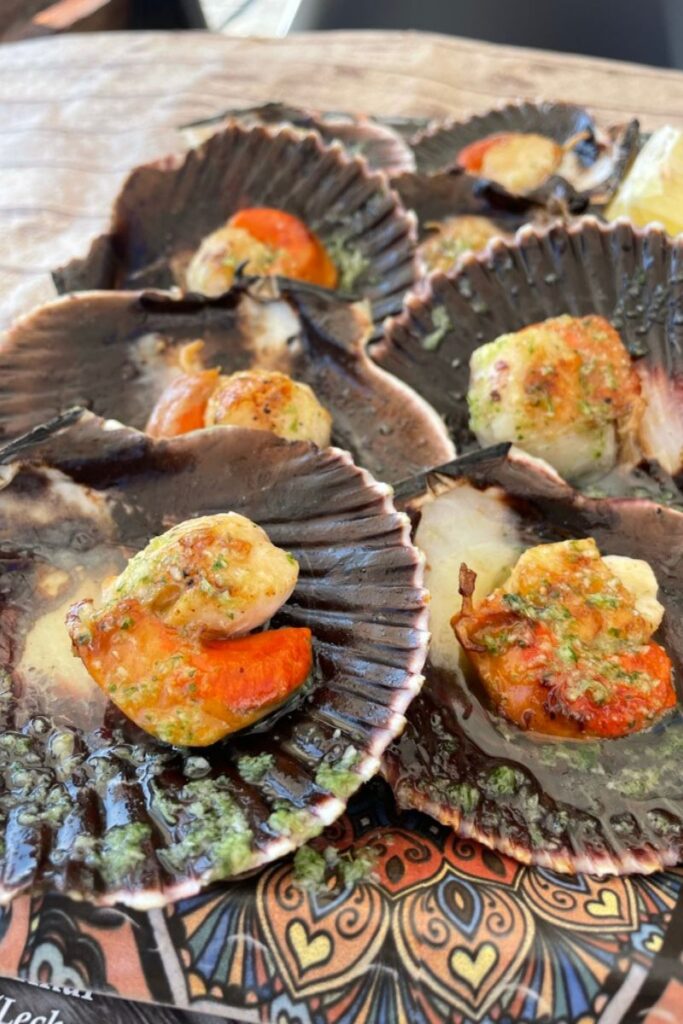
This road trip also highlights some of the churches and cities famous for their history and food. Speaking of, most of this road trip is an adventure into the world of pintxos, riojas, and ciders of the Basque and Galician regions. So if this is your vibe, take the trip!
Mariana Barbuceanu is the owner and author of the Road Trip EuroGuide, a blog that inspires fellow travelers to explore Europe more authentically through slower travel and digging deeper into the culture of a place. When she isn't writing about her adventures, she is planning trips for her community and coaching people on how to take that next step towards a much-needed sabbatical.
Username or E-Mail
Forget Password?
Do not have an account?
Already a member.

- Bike Journeys
- Walk Journeys
- Food and Wine Journeys
- Private Groups
- Family Adventures
- Corporate Travel
- Customized Travel
- WHERE WE GO
- COLLECTIONS
What to See in Northern Spain

Written by Stephanie Mutsaerts
Photos by Jesus Caso and Stephanie Mutsaerts
What to include in a trip to Northern Spain
Northern Spain is somewhat of a mystery to the average visitor. It is a mistake, however, to overlook this part of the country. It is culturally distinct from the rest of Spain, though retaining the best of Spanish alegria , so to say, the simple joy of being alive. The area is known throughout Spain for its culinary expertise and outstanding produce, including the world-renowned Rioja wine region. Historically, with its strategic location on the way over the Pyrenees into France, it has seen many fascinating military campaigns, sieges, and battles dating back centuries to before Roman times. As such, the abundant castles and medieval towns with towering defensive walls and Romanesque churches give unending possibilities for exploration. This article is about what to see in Northern Spain.

Traditions and Festivals in Spain
The Basque Country has produced some of Spain’s greatest artists and Bilbao is a cultural crossroads with a thriving art and music scene. Participating in the festivals of Navarra, Rioja and Basque Country can feel like stepping back in time. They are always family friendly and full of music, dance, celebration, food and wine, and traditions that connect the locals to the past. These festivals are not mere shows put on for tourists. The people of northern Spain are still very much living and breathing their culture and are welcoming to visitors wanting to experience it along with them. The possibilities feel limitless when it comes to visiting northern Spain.

See the Living History and Castles of Northern Spain
Spain is peppered with castles. Some are small and crumbling on a remote hilltop, recalling an era of wandering knights and lonely journeys, while others are magnificent and well-preserved, where the kings and queens of Spain lived and fought bloody battles of succession and dominance. Navarra, Aragon, Castile and Leon were territories and kingdoms that were constantly at each other’s throats since before medieval times. With the Moorish threat constantly pressing up from the south, the story of this region would make the series Game of Thrones blush with modesty.

Olite Castle
If you are wonder what to see in Northern Spàin, the castles and fortifications around this area are numerous and mostly intact. The most magnificent by far in Navarra is in Olite. It was one of the seats of the Court of the Kingdom of Navarra, since the reign of Charles III “the Noble” until its conquest in 1512 by Castile. While it was a military fortification, it was also described by many of that period to be more like a sumptuous palace, with all the gilded luxuries of its time. Beginning in the 13 th Century, it was built up over time, before finally being badly damaged during the Napoleonic Wars in the early 19 th century.
It was beautifully restored to its previous glory in the 1930s and is now one of the finest castles in Europe to visit. Surrounded by grape vines and a medieval town of twisty cobbled streets and beautiful old stone buildings, you cannot but feel like you have time traveled to another era. Olite also has a fantastic medieval festival in August where the town’s people come out dressed in their best period clothing, carrying falcons, and playing and singing music from a bygone era.
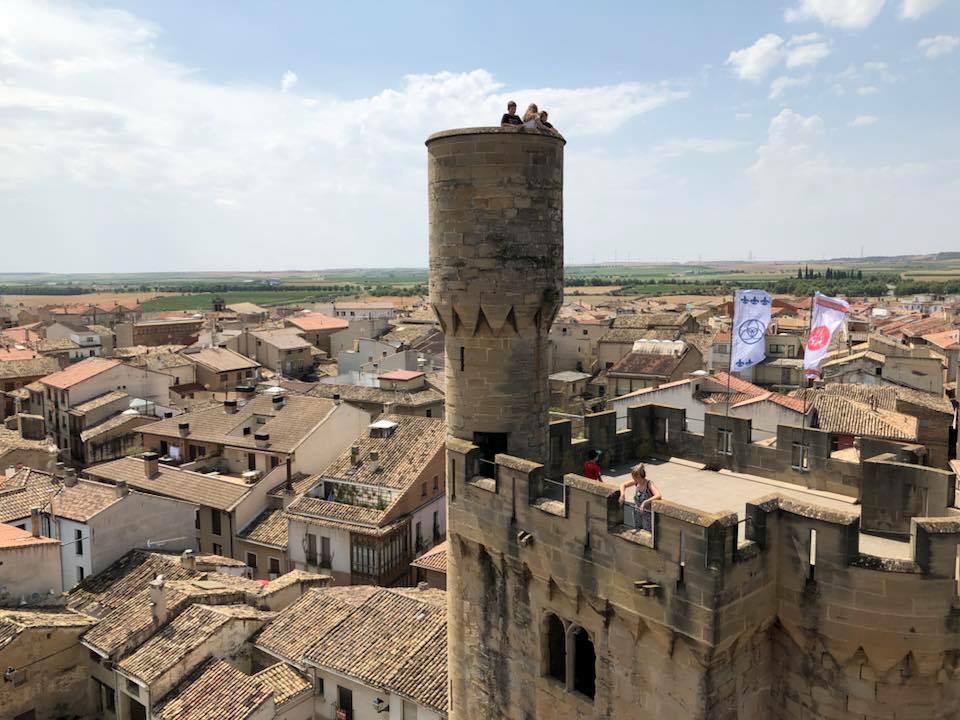
The Post Civil War Bunkers in Northern Spain
For more modern history, there are a series of military bunkers dug during Franco’s era into the Pyrenees along the border of France. Numbering in the thousands and stretching from the Atlantic to the Mediterranean, they went unused in the end, as Franco’s paranoia of an attack arriving overland from France proved to be unmerited. It is now possible to visit some of them on trails in the mountains by foot or bike. Hunkering down inside them peering out over the Pyrenean mountain passes gives you a sense of what it would have been like to have lived through this turbulent time in the early to mid 20 th century.
For history buffs, ask us about our visits to the Bunkers between Spain and France

Of course, there are so many historical sites in northern Spain, it would impossible to highlight them all. From sitting in a 400 year old monastery in Aragon listing to monks reciting Gregorian chants, to visiting cathedrals such as the one in Pamplona where the kings of Navarra were crowned, or the one in Vitoria that inspired Ken Follet for his fictional cathedral in Pillars of the Earth , to sleeping in luxury hotels that are remodeled 10 th century castles, it is impossible not to feel a connection to the past of this captivating region of northern Spain.
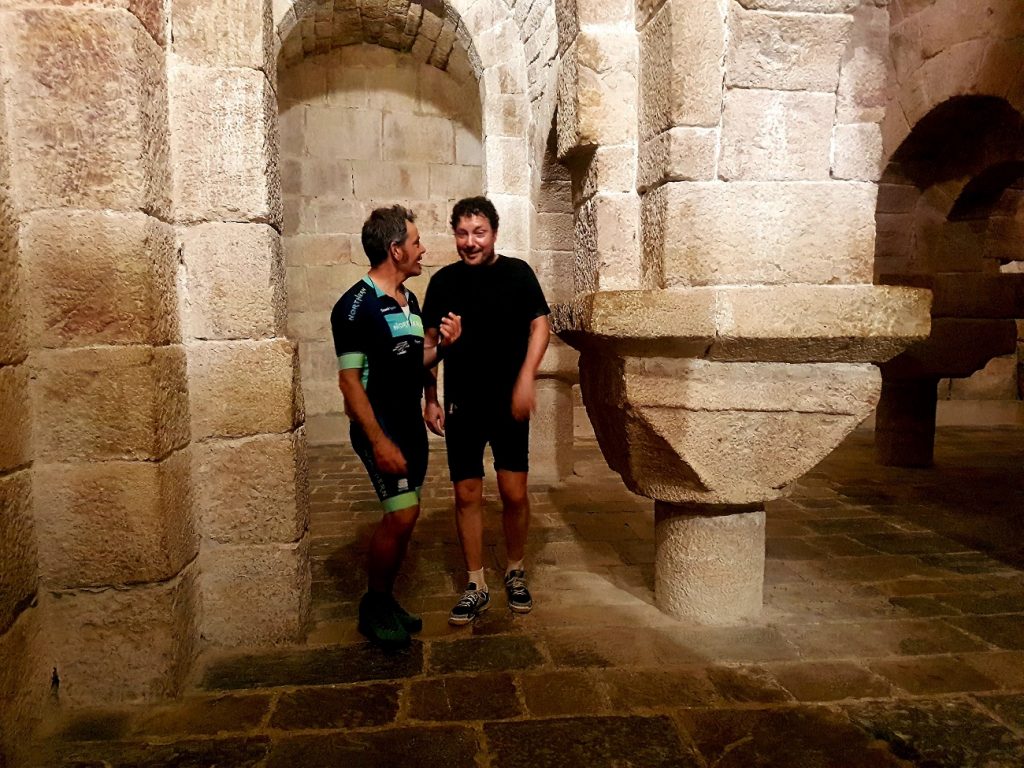
See and Experience the Magic of a Festival in Northern Spain
San fermin summer festival.
There is perhaps nothing more iconic in northern Spain than its yearly festivals or fiestas. The king of fiestas is the festival of San Fermin, taking place in Pamplona, the capital of Navarra, in early July each year. Known around the world as the Running of the Bulls, it goes on for eight days of revelry, endless music and dancing in the streets, taurine events such as the daily bull run each morning, and other traditions that go back centuries. Everyone is dressed in all white with a red sash around their waist and a red pañuelo or kerchief, around their neck. This dress is not specific to Pamplona but is rather a Basque tradition you can see all over the region at the various fiestas.
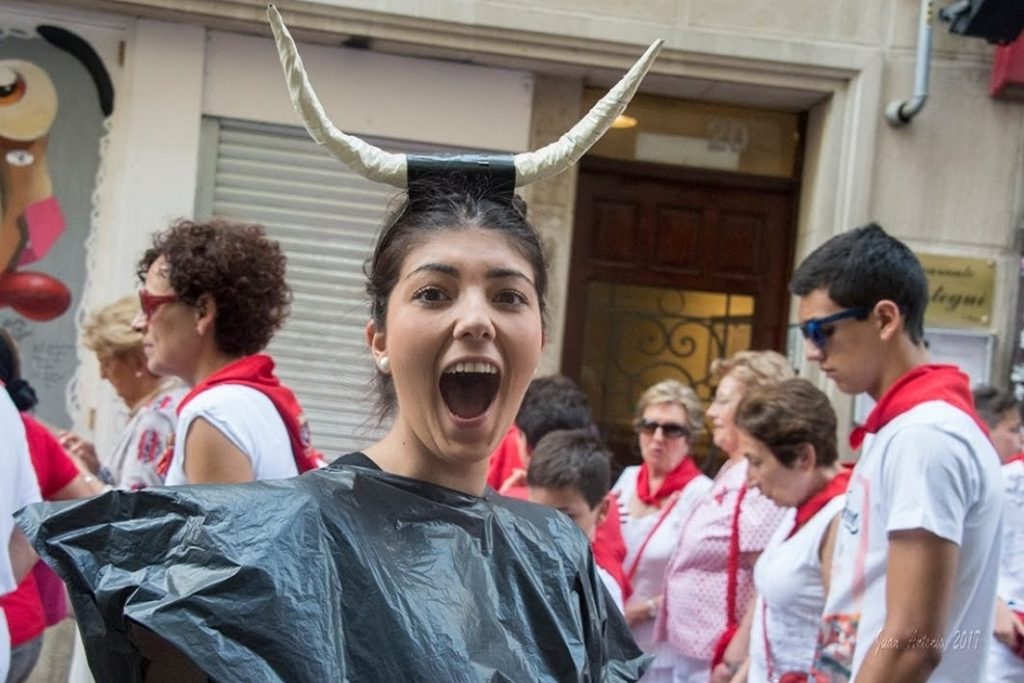
San Fermin is for Everyone
While it is a non-stop party and celebration of life itself, it is absolutely inclusive of everyone. Navarran and Basque families attend from babies to the elderly – it is not just about flinging sangria and dancing the night away. In fact, the fiesta is in honor of one of the patron saints of Pamplona, San Fermin. A fact overlooked by tourists, it is a religious festival with masses and prayer honoring their saint. It even evokes some moments of solemnity and gravitas throughout the week.

Village Patron Saint Festivals in Northern Spain
Each village in northern Spain has a fiesta in honor of their specific patron saint. Some fiestas are quite small and intimate, and others feel like smaller versions of the famous party in Pamplona, with lesser-known bull runs and almost no other tourists. Many of the rituals and activities are specific to that village. Hence, going to one in Estella will feel very different from the one in Lesaka, where you can see the bell dancers balancing on the edge of the canals, leaping and jumping on narrow walls, with bell-clad legs creating the most wonderful music. What they all have in common is the joy of celebration, the traditional music and dance, and the comradery among participants.

Summer Festivals in Northern Spain
Moving away from purely traditional, there are other kinds of festivals in northern Spain. San Sebastian boasts several huge fiestas every year. It hosts a star-studded film festival, a summertime jazz festival on the beach, and in January a drumming festival called La Tamborrada where hundreds of people drum together in the large square, creating an effect that is hard to imagine unless you have witnessed it yourself. Another favorite is in La Rioja where participants load giant water guns with wine and run around shooting each other with sprays of wine in the hills while drinking plenty of it as well. These festivals are sprinkled throughout the year, so visitors to northern Spain would have a hard time not hitting one or two of them. If fun is to be had, the locals will be having it.

See the Art and Museums of Northern Spain
The Basque Country and Navarra have produced many of the great artists, writers and musicians of Spain. Creativity and imagination is felt everywhere around the region. The Basques have a very rich folklore with pre-Christian pagan elements still evident in their art and storytelling. Rife with fantastical creatures and sorcery, perhaps inspired by the deep forest valleys draped in curtains of mist, the area inspires an artistic culture.
Northern Spain has artists that in many ways represent the region, such is the case as with Eduardo Chillida. One of his masterpieces that have grown into an icon is El Peine de los Vientos , where the wind and the sea are one. Another such artist that works with large sized sculptures and painting is Jorge Oteiza , or the modern day artists Carlos Ciriza and Fernando Pagola .
For those who are passionate about sculpture ask us more about private visits to the artists’ private homes, workshops and museums.
Agustin Ibarrola
One very good example of this connection of art, nature and folklore is the Enchanted Forest of Oma, a grove of trees that have been painted by the Basque artist Agustin Ibarrola . It is done in such a way as to create a sense of mystery and otherworldliness using optical illusions and tricks on the mind. Even if the idea of painting trees at first makes one balk, once experienced, it is hard to not appreciate the fine lines between magic, art and nature.
Jorje Oteiza
Eight kilometers outside Pamplona is the Oteiza Museum, which houses the art of the great and very influential Basque artist, Jorge Orteiza. His sculptures brought him massive success and fame by the 1950s, and using various mediums and abstract theories, he created an enormous quantity of work. The museum contains 1,690 sculptures, 800 drawings, 2,000 chalk laboratory studies, about 5,000 books from his personal library, and his countless writings.
Navarra Museum
Pamplona is not only a living museum in and of itself, it benefits from the engaging Museo de Navarra with a wonderful collection of items from pre-historic artifacts and human bones to great works of art. There is the 1 st century Roman mosaic Triumph of Bacchus and other mosaics from the same period excavated from Roman homes and palaces that existed in the area. There are many mural from across the ages – Romanesque, Gothic and Renaissance – and artwork from artists such as Baroque painter Mateo Cerezo and the famous Spanish painter Goya. Taking you on a journey through Navarra from pre-historic times to the present day, this museum is not to be missed.
Guggenheim Museum
Bilbao encompasses the old and the new with stunning modern architecture such as Frank Gehry’s Guggenheim Museum and the Zubizuri Bridge, alongside the beautiful medieval buildings in the Casco Viejo in the center of the city. With endless sites of aesthetic and historic interest to visit and a thriving art and music scene, Bilbao is a feast for the mind. In 2010 Bilbao was recognized with the Lee Kuan Yew World City Prize, considered the Nobel Prize for urbanism because of its spectacular transformation from grimy industrial port to modern wonder. As the largest city in the Basque region and as one of the most important port cities of Europe, it is bustling with activity, art and industry.
How to Experience it All
There are endless sights in northern Spain, and these are but a few. The region is welcoming of visitors and there are many ways to visit the region, whether by bike, on foot or by car. Along with such amazing culture to see and experience, northern Spain is also covered in Michelin-starred restaurants as well as rustic, delicious traditional cuisine, wineries, luxury hotels, quaint villages and gorgeous landscapes.
Northern Spain Travel has a collection of outside-the-box travel journeys throughout the region.
Leave a Reply Cancel Reply
Save my name, email, and website in this browser for the next time I comment.
Northern Spain Travel
Discover the heart of this magical region, where a perfect combination of first-class experiences, exceptional gastronomy and sensational accommodation gives you the most authentic Spanish experience.
- CNN Benefits from Northern Spain Travel Insider Knowledge
- A Gastronomic Club Experience in Northern Spain
- Kingdom of Navarre Timelapse
- A Brief History of Mount San Cristobal
- Join us on a virtual visit to Txomin Etxaniz Winery

Privacy Overview
Your Name (required)
Your Email (required)
Your Message
Walking You love to hike and are not afraid of a little sweat and some good uphills. Our trip may include 12-15 km (7-10 miles) a day on various grades of terrain on a diversity of surfaces. Expect steeper climbs with phenomenal views and mountainscapes.
Biking You love to bike at home regularly and can handle some sweat. Our trip may include 40-60 km (25-40 miles) a day on rolling terrain with a few longer climbs rewarded with views and high points you will not want to miss.
Walking You enjoy longer hikes with an incline or two and don’t mind pushing it a bit. Our trip may include around 6-12 km (4-8 miles) a day of walking on mostly flat terrain with a couple steeper but non-sustained climbs.
Biking You ride your bike at home and are comfortable on a bike for a few hours. Our trip may include 40-60 km (25-40 miles) a day on mostly flat terrain and will include inclines and the occasional sustained climb.
Walking You love to push yourself and can handle a longer hike with some sustained inclines and steep uphills. Our trip may include 10-15 km (6 -10 miles) on terrain that can be quite hilly and rolling with a few steeper climbs thrown in for good measure. The views will blow you away.
Biking Test your mettle on off-the-beaten-paths that will stun and delight, along with legendary cycling routes in the north of Spain. You are an avid rider who loves to push themselves and enjoy the challenge of a big climb or sustained inclines. Our trip may include over 60-80 km (37 – 49 miles) a day in rolling hills with frequent climbs and even longer options available. You will be the master of your universe.
Walking You like to go on walks at home but nothing that works up a sweat. Our trip may include around 5-10 km (3-6 miles) a day of walking on mostly flat terrain, with an occasional hill on well maintained trails or walkways.
Biking You are in decent shape but don’t habitually ride a bike at home. Our trip may include 30-50 km (20-30 miles) a day on mostly flat terrain with a few small and achievable inclines.
aaa [contact-form-7 404 "Not Found"]
Your activity level will be exactly where you want it. Our itineraries are designed to accommodate everyone. For guidance, we have labeled each trip according to its activity level from Casual to Expert with four fitness grades.
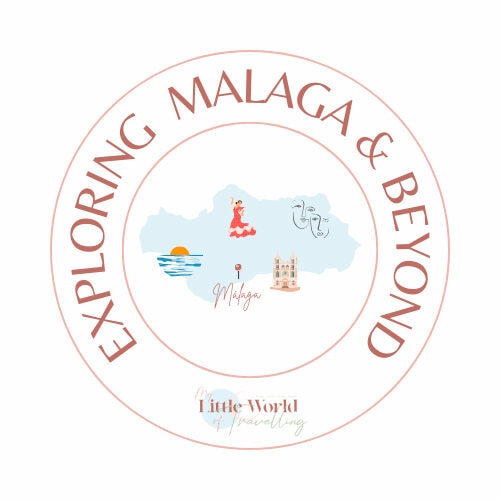
9 Great Reasons to Visit the North of Spain
There are many reasons why you want to add Northern Spain to your list – pristine beaches, less crowded places, lush green landscapes with hills and mountains, and food culture, among other incredible things.
Northern Spain is often overlooked, and you’ll be surprised by all the things you can do in this part of Spain. So if you’re looking for a less touristy and tranquil destination, you’ll love visiting one of the cities or towns in the north of Spain.
You’ve probably heard of San Sebastián or Bilbao, but you’ll also be amazed by smaller cities and towns in Northern Spain that aren’t often mentioned in travel guides and articles.
If you’re ready to discover whether Northern Spain is worth visiting or not and find useful tips to travel around this beautiful part of Spain, keep reading this travel guide.

This post contains affiliate links, and as an Amazon Associate, I earn from qualifying purchases. If you click through and purchase something, I receive a small commission on the price at no extra cost to you. This helps me keep the content up to date and make other improvements to the blog.
Table of Contents
Reasons to visit the north of Spain – Is it worth visiting it?
1. the summer is mild.

Southern Spain is very well-known for its beaches. However, Northern Spain has equally incredible beaches you want to visit. I was surprised by how beautiful the beaches in Santander are!
The temperatures are milder in the north of Spain, meaning you can still swim in the sea, sightsee and do any other activities there. Meanwhile, Southern Spain’s temperatures are too high (average of 35ºC degrees, 95°F) to sightsee and be outside in the afternoon.
If you aren’t a big fan of the warm weather, the north of Spain is your best option.
2. Its beautiful coastline

Whilst Southern Spain and the islands have incredible beaches, the Northern Spain coastline really impressed me – the golden sand, crystal clear sea and fewer crowds make it worth exploring.
Some of the most popular beaches in the north are Playa de la Concha in San Sebastián, Playa el Sardinero and Playa de la Magdalena in Santander and Playa del Silencio in Asturias.
Also, many of these beaches are perfect for surfing and doing other water sports activities, so if you’re a fan of any watersport, you want to check them out.
3. It has the best hiking trails in Spain

Are you an adventurous traveller who prefers the mountains to the beach? If so, Northern Spain is the perfect destination for you.
The most famous hiking trail is the Camino de Santiago (the Way of St. James) which consists of a group of pilgrim routes that lead you to the shrine of the apostle Saint James the Great in the cathedral of Santiago de Compostela in Galicia.
Some of my family members have done this hiking trail and loved their experience. Unfortunately, I couldn’t join them, but it’s on my list!
Apart from Camino de Santiago, there are many other hiking trails, such as the Sendero Histórico, Picos de Europa, Ruta del Cares and Covadonga .
Covadonga is one of my favourites because you get the chance to visit the impressive Basilica and Cave of Covandoga, which are rich in history and spirituality. Exploring Covadonga is magical!
4. The food is mouthwatering

Pintxos, hearty stews, fresh fish and cider are some of the highlights of Nothern Spain gastronomy.
You’ve heard of tapas before, as they’re known everywhere, but what about pintxos? Pintxos are small snacks served in bars across the north of Spain. They often consist of a slice of bread topped with egg, fish, meat or vegetables.
They’re especially popular in places like Bilbao in the Basque Country, so there’s no visit to Bilbao without having a pintxo! And if you’re looking for the best place to have pintxos in Bilbao, La Ribera Market is excellent.
The market has a gastropub section with plenty of pintxo stalls to choose from and desserts. I can confirm the food is very good there!
5. Its incredible cities

There is something about Northern Spain cities which is difficult to explain.
Its relaxing atmosphere makes you want to explore it more and more, and while the atmosphere is relaxing, this doesn’t mean there aren’t enough things to do.
Each city has something to offer. If you want to immerse yourself in an art experience, go to Guggenheim Museum in Bilbao ; if you want to taste award-winning restaurant food, go to San Sebastian; if you want to surf at the beach, go to El Sardinero Beach in Santander .
The options are endless, and no matter what type of traveller you are, you’ll find an activity for you.
6. It is less crowded
Madrid, Barcelona and Seville are the most visited cities in Spain, and whilst they’re unique and beautiful in their own way, they’re crowded and touristy.
If you’re looking for a place to experience Spanish culture at your own pace without needing to worry about crowds, you’ll fall in love with Northern Spain. Even if you visit bigger cities like Bilbao and Santander , you won’t feel they’re touristy at all.
7. It is rich in culture

The north of Spain is unique in its own way – traditions, dances, food and language. It’s good to know that Spanish isn’t the only language spoken in this region, but Basque, Galician and Aranese too!
On top of this, the region has numerous UNESCO World Heritage Sites such as the Cave of Altamira, Monuments of Oviedo and the Kingdom of the Asturias and the Pyrénées, so you’ll discover about previous cultural influences and the history behind these places.
Locals are very proud of their traditions, language, and culture in general!
8. Its unique towns and villages
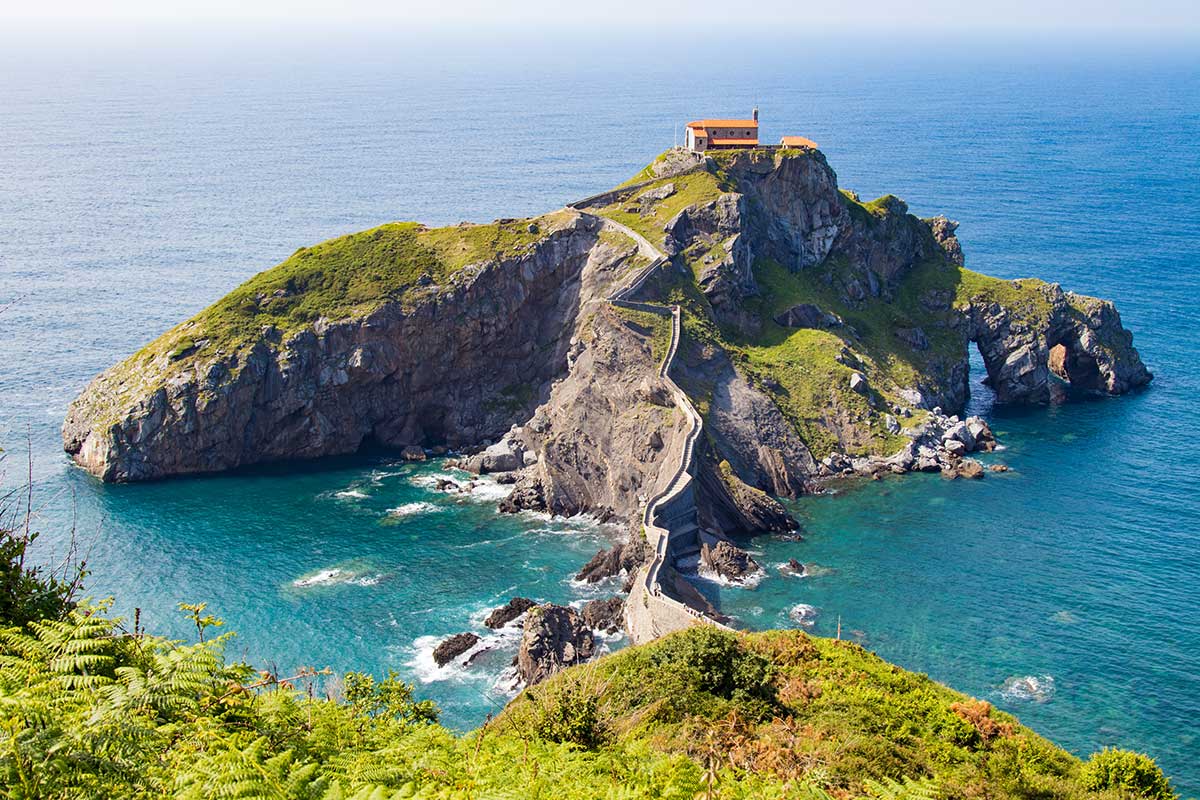
Northern Spain is home to many quaint and unique towns and villages that can be visited from bigger cities like Bilbao, San Sebastian and Santander.
If you’re after hidden gems and off-the-beaten-path destinations, you’ll find plenty of them in this part of Spain. One of the most popular hidden gems in this area is El Capricho , a stunning villa built by the famous architect Antoni Gaudi in the early years of his career.
This hidden gem is located in Comillas, a small town in Cantabria.
Towns and villages to visit in Northern Spain
Wondering which towns to visit in Northern Spain? Here is a short list of some incredible destinations:
- San Juan de Gaztelugatxe
- Santillana del Mar
9. Its cider won’t disappoint you
If you love a good cider ( sidra in Spanish), Asturias is the best place to drink cider. Most of the ciders are made in this part of the country, and it’s part of the Asturian culture.
You’ll find sidrerías , local bars specifically for cider drinking (you can also have a meal there), and even cider-related festivals.
If you happen to be in Asturias in the middle of the summer, you want to check out the Natural Cider Festival of Nava , a festival that dates back to the 60s of the 20th century!
The festival offers plenty of activities and competitions which involve pouring and drinking cider.
📌 Expert tip : Haro in La Rioja must be on your itinerary if you prefer wine. This town is home to some of the best red wine producers in Spain. Some of the best bodegas (wineries) are Bodegas Muga and Bodegas López de Heredia.
Tips for visiting Northern Spain
The best time to travel to the north of spain.

The best time to visit the north of Spain depends on the type of activity you want to do during your holiday. However, if you don’t mind the weather, you can visit the region at any time.
If you’re looking to relax for long days on the beach, summer is the perfect time to visit Northern Spain. The summer temperatures aren’t as high as in Southern Spain; however, that doesn’t mean you won’t experience hot temperatures in the north.
If you’re after hiking and other outdoor activities, spring and autumn are good times to visit the north. It’s not too cold and not too hot, but be aware that there may be rainy and windy days!
The months of January and February are the coldest months in Spain, but they are even colder in Northern Spain. The advantage of travelling during these months is that you’ll find very cheap flights and accommodations, so if you’re travelling on a budget, you may want to consider travelling during these months.
In addition to this, all the large cities have plenty of incredible museums and indoor activities for you to do when the weather isn’t good.
How to get to the North of Spain

If you’re travelling from outside Spain, the easiest way to get to the north of Spain is by plane. There are a few airports across Northern Spain. However, these airports aren’t as busy as other cities like Madrid, Barcelona and Malaga, so there are fewer routes and times.
In the case that you don’t find a direct flight to a Northern Spain destination, you can travel to Barcelona or Madrid and take public transport (train or coach) or drive .
If you’re travelling from the UK, low-cost airlines like Ryanair offer different routes across the north of Spain, including flights to Bilbao (the main airport in Northern Spain) and Santander.
Alternatively, you can also travel from the UK to Spain by ferry. The UK ports of Portsmouth and Plymouth travel to Santander and Bilbao.
✈️ Check out flights to Northern Spain
What to pack for Northern Spain
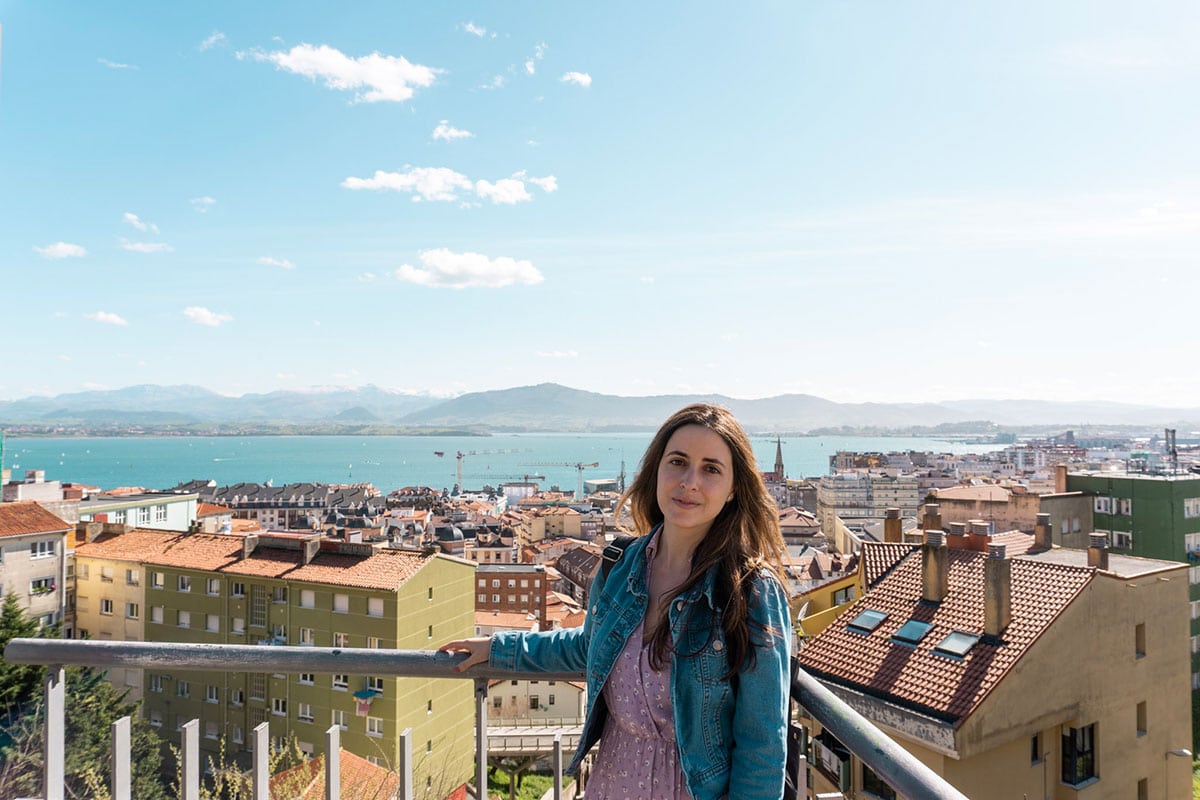
Packing for a holiday in Malaga or Tenerife isn’t the same as packing for a trip to the north of Spain. Regardless of the season, it’s a good idea to pack a light jacket and umbrella because the weather is more unpredictable in this part of the country.
If you’re travelling to Northern Spain in winter, make sure to pack some warm clothes with you (jumpers, scarves, raincoats, boots, etc.) Whereas if you’re travelling in summer, don’t forget to pack suncream, swimwear and a hat.
Travelling during the spring and autumn months is all about layers! Early mornings and evenings are cold, but you can experience nice and sunny afternoons, so the best way to dress up for this weather is to wear clothes you can easily put on and off.
Frequently asked questions about visiting Northern Spain
What’s northern spain like.
Northern Spain is very unique in comparison to other parts of the country. It’s often referred to as “Green Spain” because of its stunning landscapes across the region. On top of the lush green spaces, you’ll love its beautiful coastline, gastronomy culture, and relaxing and less touristy atmosphere.
What are the most beautiful towns in Northern Spain?
It’s difficult to say which towns are the most beautiful as all of them have something unique. However, these are some cities and towns in Northern Spain you want to add to your list: – La Rioja – Oviedo – Bilbao – Santander – Gaztelugatxe – Santiago de Compostela – Santillana del Mar – San Sebastian
Is Northern Spain worth visiting?
Absolutely! If you love travelling in Spain, you can’t miss this part of the country. It has many cultural and natural activities to offer, and it’s much less crowded than bigger cities like Madrid, Valencia and Barcelona.
At the same time, you’ll also be able to explore unique towns and learn about the rich culture of Northern Spain.
I’ve travelled more than three times to Northern Spain and cannot wait to return! There’s always something to do.
Conclusion: is the north of Spain worth visiting?
The short answer is yes! If you’re looking for a trip packed with delicious food, incredible green landscapes and culture, you’ll love Northern Spain.
Personally, I think Santander is one of the best places to visit in Northern Spain. It’s truly underrated, but there are many other fantastic places to explore in this area of the country.
After reading all these good reasons to visit Northern Spain, have I convinced you to visit this region? Let me know in the comments.
If you have any questions about visiting the north of Spain or any other Spanish destination, you can always leave them in the comments. I’m happy to help you plan your trip to my home country.
Enjoy your Northern Spain holiday!
Don’t forget to save these reasons to visit the north of Spain on Pinterest for later

Are you ready to book your trip to any Northern Spain holiday destination?
- Book flights to Northern Spain here .
- Book accommodation with Booking.com .
- Have a look at popular guided tours and day trips.
- Rent a car to travel with ease around Northern Spain.
- Get travel insurance , it’s a must for any trip.
Other Spain travel guides you want to check out
- 12 Unmissable Things to do in Santander
- How to Spend One Day in Bilbao
- Bilbao or Santander: Which City is Best?
- Best City Breaks in Spain You Should Add to Your List
- Top Tips for Travelling in Spain for the First Time
- What to Wear in Spain in Winter (Packing list included!)
- Tipping in Spain: Etiquette and Culture from a Local
- What is the legal drinking age in Spain?
- Can You Drink Tap Water in Spain?
- Does It Snow in Spain?
Sharing is caring!
Travel Writer
Hola, I’m Cristina, the founder and writer of My Little World of Travelling. I was born and raised in Malaga (Costa del Sol), and I’m passionate about showing you my hometown and other beautiful Andalusian destinations. I help other travellers plan their trips to Spain by providing local advice and unique insights.
Leave a Reply Cancel reply
Your email address will not be published. Required fields are marked *

- Privacy Overview
- Strictly Necessary Cookies
- 3rd Party Cookies
- Cookie Policy
This website uses cookies so that we can provide you with the best user experience possible. Cookie information is stored in your browser and performs functions such as recognising you when you return to our website and helping our team to understand which sections of the website you find most interesting and useful.
Strictly Necessary Cookie should be enabled at all times so that we can save your preferences for cookie settings.
If you disable this cookie, we will not be able to save your preferences. This means that every time you visit this website you will need to enable or disable cookies again.
This website uses Google Analytics to collect anonymous information such as the number of visitors to the site, and the most popular pages.
Keeping this cookie enabled helps us to improve our website.
Please enable Strictly Necessary Cookies first so that we can save your preferences!
More information about our Cookie Policy

8 of the best places to see in Northern Spain
Visit Northern Spain for the first time, and you might ask yourself: Am I still in the same country? And we wouldn’t blame you! Rocky shores and rolling green mountains replace sun-kissed beaches. Moorish influence gives way to reveal Celtic roots, and in some spots, you’re just as likely to hear Galego (Galician) or Euskera (Basque) as you are Spanish. Wonderful as our other top-rated itineraries in Spain are, there’s nothing quite like it.
Sound daunting? Tranquilo. From cultured Bilbao to sleepy Santillana del Mar, we’ve curated a list of eight of the best places to visit in Northern Spain. Once you’ve found some itinerary inspiration, give our Spain tours a look—or book your place on our brand-new Northern Spain: Basque Country to Madrid tour .

Explore more tours to Spain

4.8 out of 5 stars

4.7 out of 5 stars

3.6 out of 5 stars

4.6 out of 5 stars

4.4 out of 5 stars
Check out our relevant articles


- 11 Fantastic Things To Do in Northern Spain
Home » Destinations » Europe » Spain » 11 Fantastic Things To Do in Northern Spain
This website uses affiliate links which may earn a commission at no additional cost to you. As an Amazon Associate I earn from qualifying purchases.
Updated: 12th June 2024
Spain’s shimmering southern shoreline and idyllic Mediterranean islands have long cemented their holiday credentials. But when summer comes, accompanied by almost unbearably scorching heat, I’d argue that Northern Spain is the place to be.
Not that it’s only a destination reserved for sunny summer sojourns. Verdant, mountainous and mouthwatering, the north of this spirited nation is a year-round ticket thanks to hiking trails, a cracking culinary scene, and some show-stopping historical might. Yes, the autonomous communities of the Basque Country, Cantabria, Asturias, and Galicia along Spain’s northern coast are fine rivals for the likes of Andalusia and Catalonia, albeit with slightly different callings and things to do.
From embarking on a sacred pilgrimage along centuries-trodden trails and devouring the delicious regional specialities to gawping at Gaudí’s architecture and well-preserved Roman walls, these are my picks of the best places and things to do in Northern Spain – all easily strung together into an unforgettable Spain road trip itinerary .
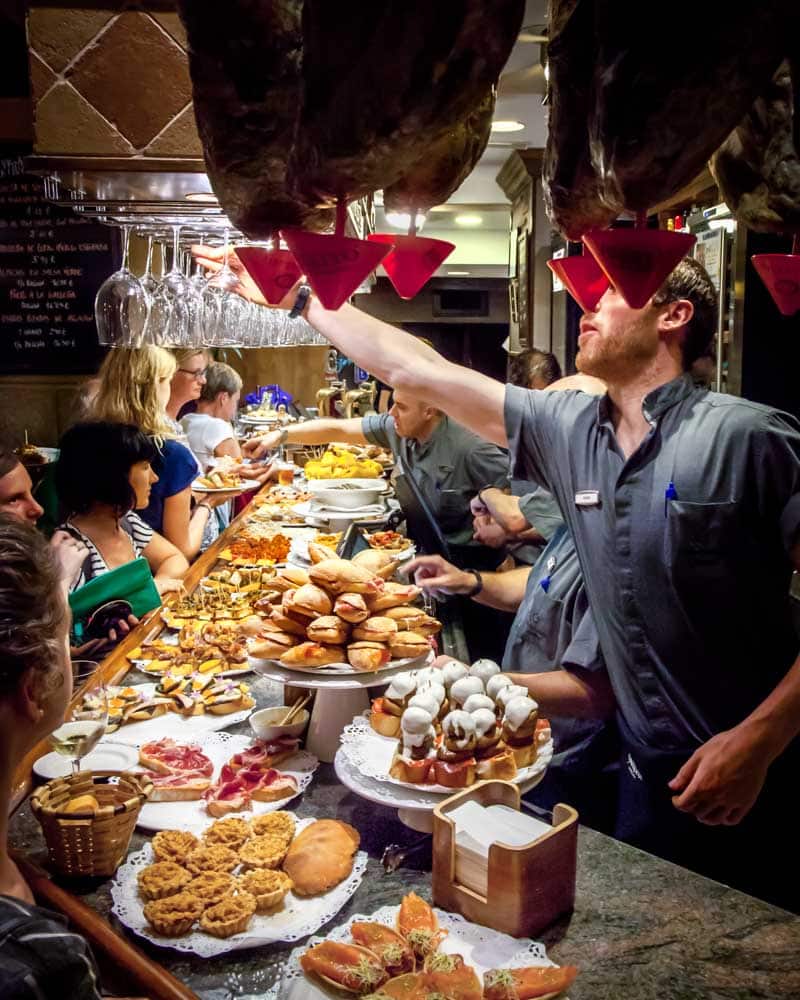
Devour San Sebastián’s gastronomic delights
Donostia, or San Sebastián, has long been considered Spain’s culinary cradle. Arguably one of Europe’s best destinations for gastronomy , if not the world, this city takes eating seriously while keeping it social. With a clutch of ever-inventive chefs, a renowned culinary school and an impressive blend of Michelin restaurants, bite-size bar snacks and ‘secret’ gastronomic societies, there’s something on the menu for everyone.
The bar-topping star is the pintxos, an (often) bread-balanced morsel with local flavours – think anchovies, prawns, pickles, jamón, and piparras (local chilli peppers) – secured with a wooden skewer. Wash it all down with a glass of txakoli, the local, lightly sparkling wine poured theatrically from shoulder height. But don’t limit yourself to one spot; Donostia’s delight is that bar-crawls for pintxos are a must. Another reason to spend a weekend eating in San Sebastián is to seek out a hard-to-come-by invite to a txoko, the city’s typical, socially-powered, subsurface community kitchens. There are a few local tour companies that can pair you with a local chef.
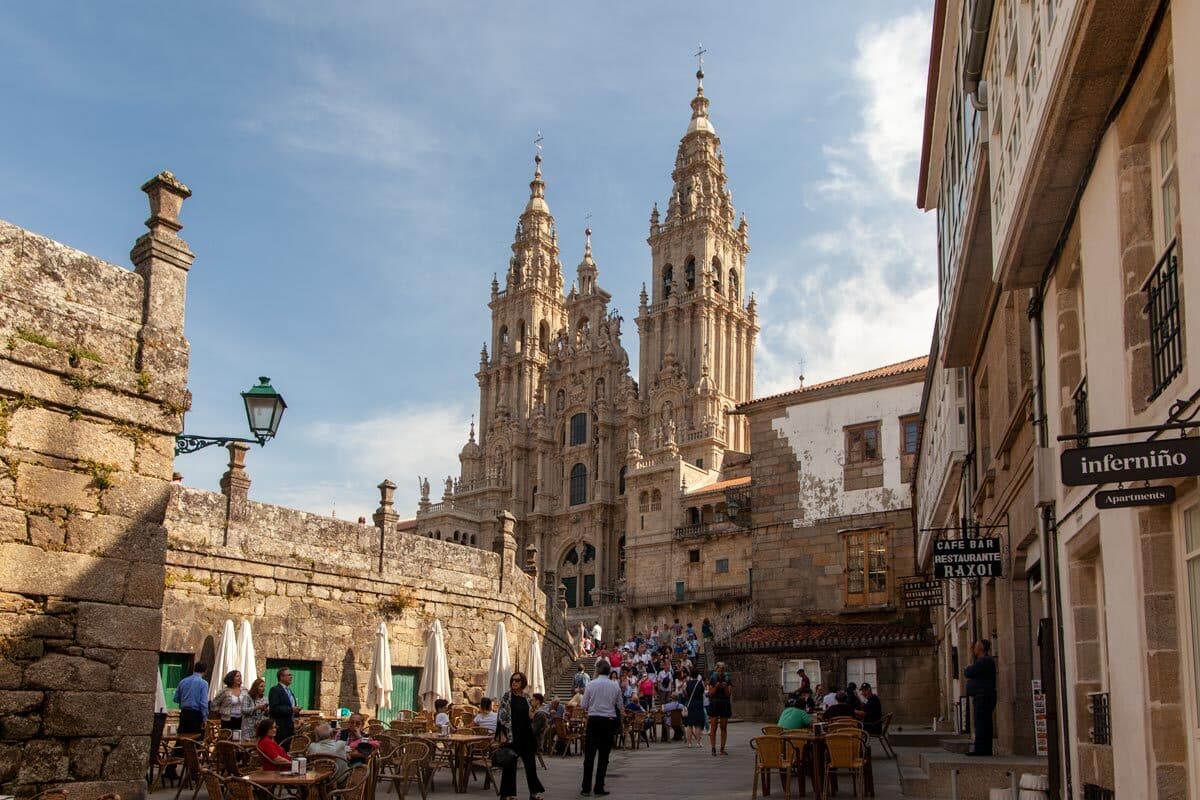
Walk the final stretch of the Camino de Santiago
Since the 9th century, pilgrims have traversed Europe on foot to reach Santiago de Compostela in Northern Spain, where the relics of Saint James and the world-famous cathedral await. Some routes even begin in neighbouring France or Portugal, providing weeks or more of spiritual reflection. However, for those without the time or determination to spend multiple weeks walking, the one-week Camino de Santiago from Sarria allows you to join fellow pilgrims for the final 110 kilometres to reach the sacred city with a few fewer sores on your feet.
Starting in serene Sarria, this route only crosses the northwestern region of Galicia, a seafood-heavy, verdant-clad area that spills out to the crashing Atlantic. Being one of the most popular things to do in Northern Spain, especially in spring and autumn, you’ll want to plan well ahead to secure your lodgings (albergues) along the way, especially as nearly all those hiking other Camino routes will take this final stretch. En route, you’ll discover much of the old-world Galicia that defines the region, from well-preserved mediaeval stone bridges and dense forests to cheese-famous Arzúa and tumbling waterfalls. The final reward? Strolling into Plaza del Obradoiro to see the cathedral and a sea of fellow pilgrims.
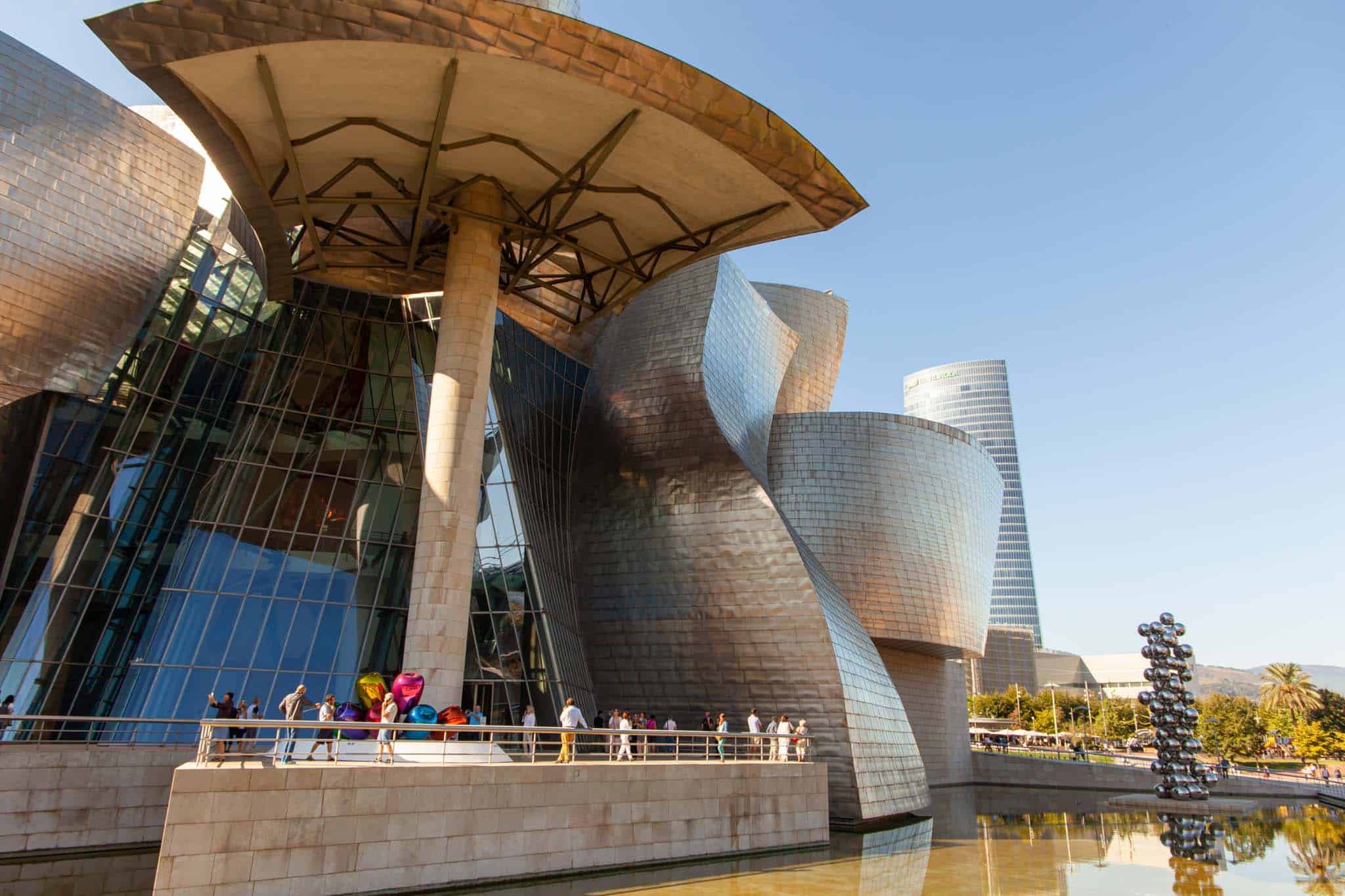
Beeline for Bilbao’s cultural catch
Once maligned as merely a gritty port town, Bilbao started getting a serious glam-up in the late 1990s – though many would argue its boisterous nature which much of its charm. Thankfully, it retains much of its personality in the lively Casco Viejo (Old Town), where you’ll find chefs ready to rival those of nearby San Sebastián amongst the 700-year-old streets. Still, when it comes to impressive architecture and cultural landmarks, “New Bilbao” has plenty to brag about.
A big part of the city’s revival was the opening of the Bilbao outpost of the Guggenheim Museum in 1997. An outlandishly modern construction of titanium panels, its central arrival along the River Nervión didn’t come without controversy. Inside, contemporary architecture from all corners of the world is displayed, though it’s arguably the building which demands the most attention. However, you shouldn’t set your sights solely on this headliner; the more classical Museo de Bellas Artes, the Ethnographic Basque Museum, and a packed cultural calendar make Bilbao a top-notch cultural city break year-round.
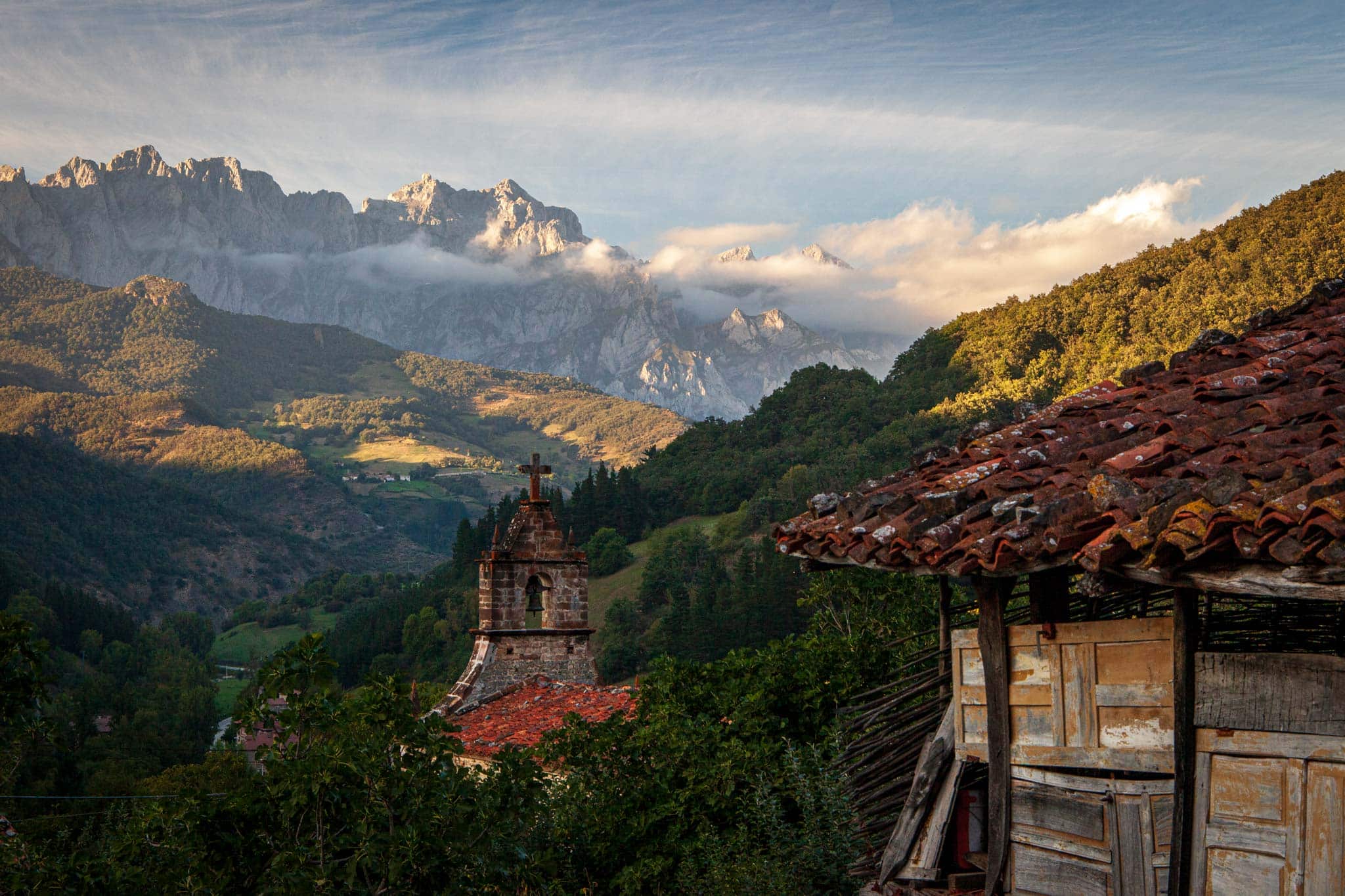
Hike in Picos de Europa
Spain doesn’t come more striking, bucolic, or picturesque than Picos de Europa. Spanning Asturias, Cantabria and Castile–León, this vast and peak-peppered national park is a medley of pretty half-timbered villages, timeless food traditions, and forested hiking trails. Plus, the serrated peaks in the centre are a cinematic stand-in that can rival Italy’s Dolomites.
No matter if you prefer multi-day hikes or shorter jaunts, the stone guesthouse, sidrerías (cider houses) and rural villages with their local-produce markets, Picos de Europa has something for all. Some of the most adorable spots to set up base are river-hugging Potes in Cantabria with its wooden homes and timeless Asiego for a more offbeat Spain escape touring hyper-local producers. Head deeper still, and you’ll find Austrias’ most famous cheese cave in Las Arenas. Here, in damp and dark depths, wheels of blue Cabrales – the world’s most expensive cheese – age naturally. After having a whiff and a tasting, you’ll be more than ready for the fresh mountain air afforded by the near-ish cable car ascent to rural bolthole Bulnes.
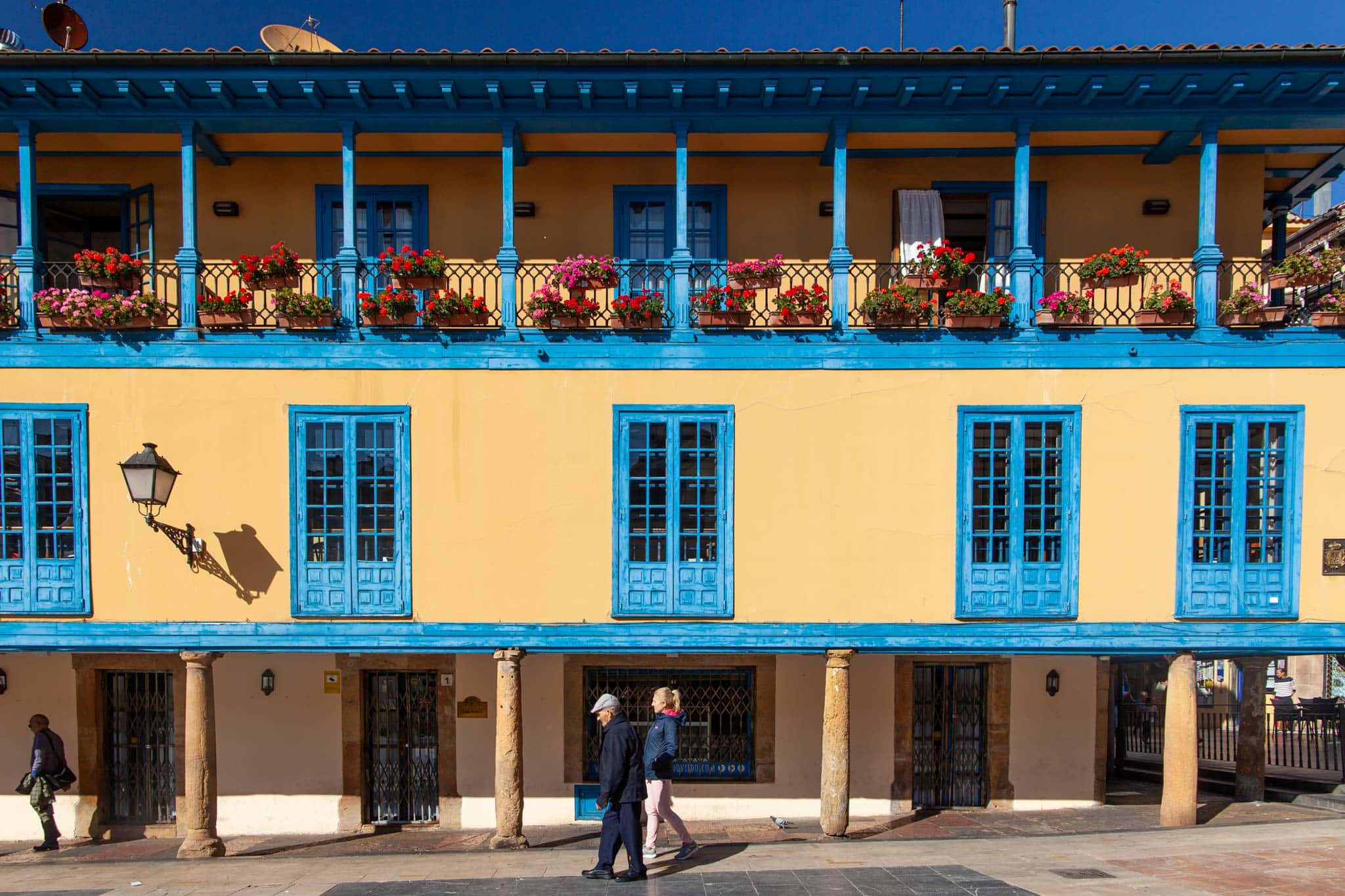
Pause in Oviedo, Northern Spain’s prettiest city
Oviedo doesn’t have a long list of top sights like some of Spain’s other best cities, but that’s what makes it such a delightful place to pause and one of my favourite cities in Spain . Asturias’ regional capital, the city is renowned as one of Spain’s cleanest. However, it’s equally as famous for its love of sidra (cider) and a clutch of UNESCO-listed pre-Romanesque churches. Best experienced on foot following the sculpture trail, hopefully soundtracked by the Gaita Asturiana, the local bagpipe style instrument..
Spend a few days in Oviedo and you’ll come away well fed – Fabada Asturiana, a white bean stew, is one of the regional staples – relaxed and more in-the-know about the over 1000-year-old churches dating back to the days of the Kingdom of Asturias.
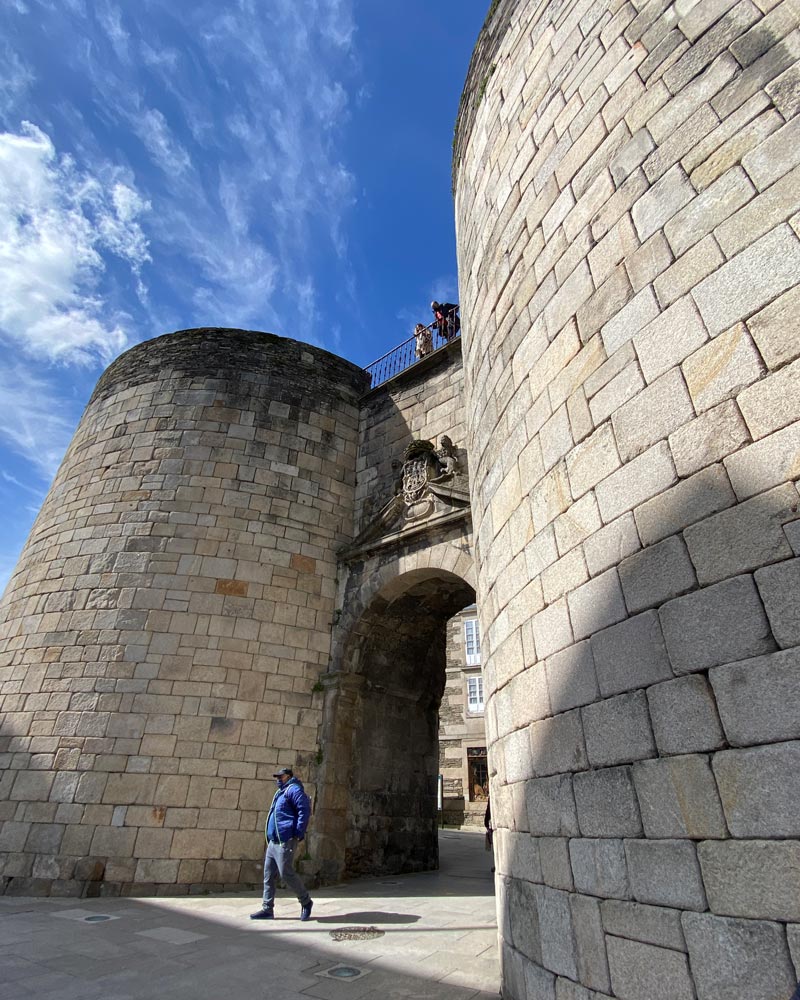
Marvel at Lugo’s mighty Roman walls
Roman ruins are plentiful across Spain, but in Lugo, a compact city in Galicia, the far-from-ruined walls are regarded as some of the country’s finest. Circling the whole town, the original Roman Walls remain fully intact, making them one of the best preserved in Europe. Indeed, they are considered so exemplary that the walls are classified as a UNESCO World Heritage Site . Better still, you can walk atop the walls to circle the town for a pretty aerial view looking down on the city.
Other notable Roman attractions in Northern Spain include A Coruña’s Roman Lighthouse, the 1st-century Torre de Hércules, the only fully intact Roman lighthouse still standing proud. And, with a bit of a detour inland towards Madrid, the mighty Segovia aqueduct whose 167 arches dominate the city.
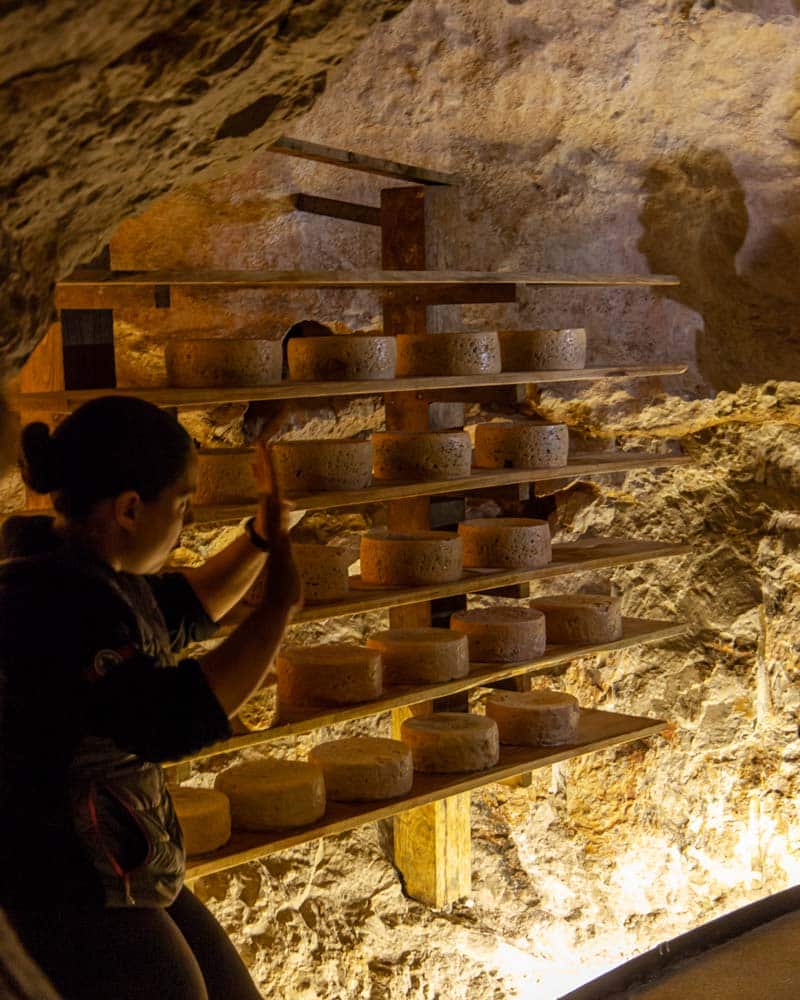
Make Asturian cheese and cider your daily treat
Much of Northern Spain’s menu is centred around seafood, but the mountains and pastures inland provide plenty of hardy mountain grub. The region is also a hotspot for all things dairy and apples, and the more than 40 types of Asturian cheese and the countless chigres (cider houses) are certain to become a staple of any visit.
Not that you need to descend into the depths of the previously mentioned Las Arenas caves for a tasting. Market traders will happily offer you samples of local cheeses – and happily air-wrap one for you to bring home – and in the traditional cider houses, the local alcoholic speciality is often accompanied by a tasting board. Unlike many ciders, Asturias’ offering is uncarbonated. It’s the expert escanciadors (cider servers) that add the bubbles to the glass by pouring the cider from a great height. Once hitting the glass, small bubbles form, and the little amount of cider poured should be drank quickly. Sidrería Tierra in Oviedo and Sidrería El Pareón in Picos de Europe are two of my favourites.
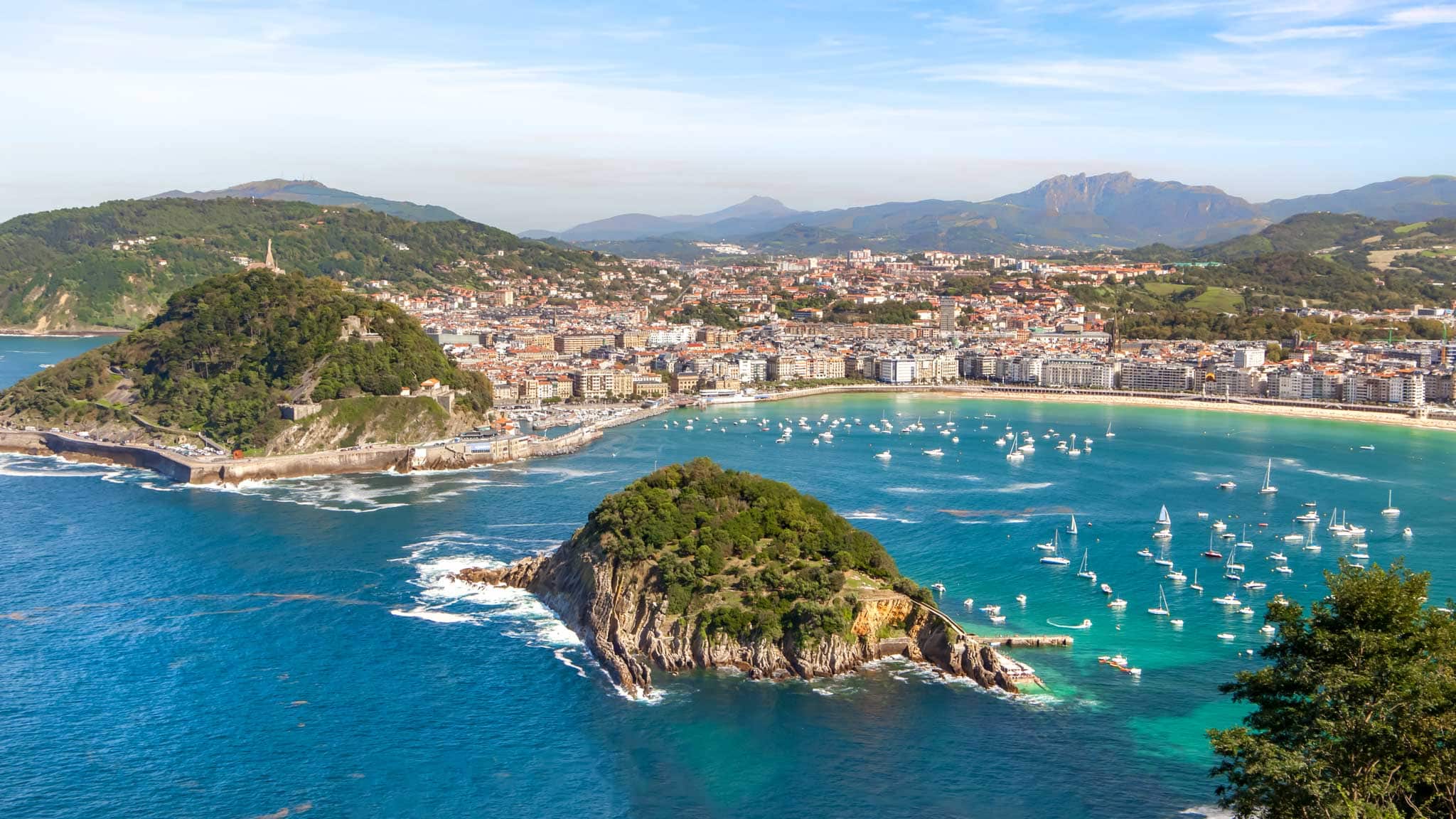
Bathe on Northern Spain’s verdant shorelines
Backed by vegetarian-clad hills, sloping vineyards and ribbons of golden sands, Northern Spain’s shoreline holds its own in summer. From the famous golden sand bay of San Sebastian to Art Nouveau Gijon’s urban beaches, you don’t have to stray far from the city for a swim. Sure, the water might not be as warm as the Mediterranean coastline, but it’s also rarely as crowded.
Still, finding the best of the northern coast beaches requires a little more work. Laid-back and postcard-perfect villages such as Cudillero are a good bet, as is the sweeping Playa de Gerra near Santander. The further west you head, the more wind-weathered and dramatic the coastline becomes. Wind-battered Cabo Fisterra, with its myths and legends, is a cinematic coastal spot, with the slightly protected Playa de Langosteira a sensational white sand swim on a summer’s day. Further south, towards the Portuguese border, the Cíes Islands provide some of Europe’s prettiest beaches blended with lush hills rising from translucent waters.
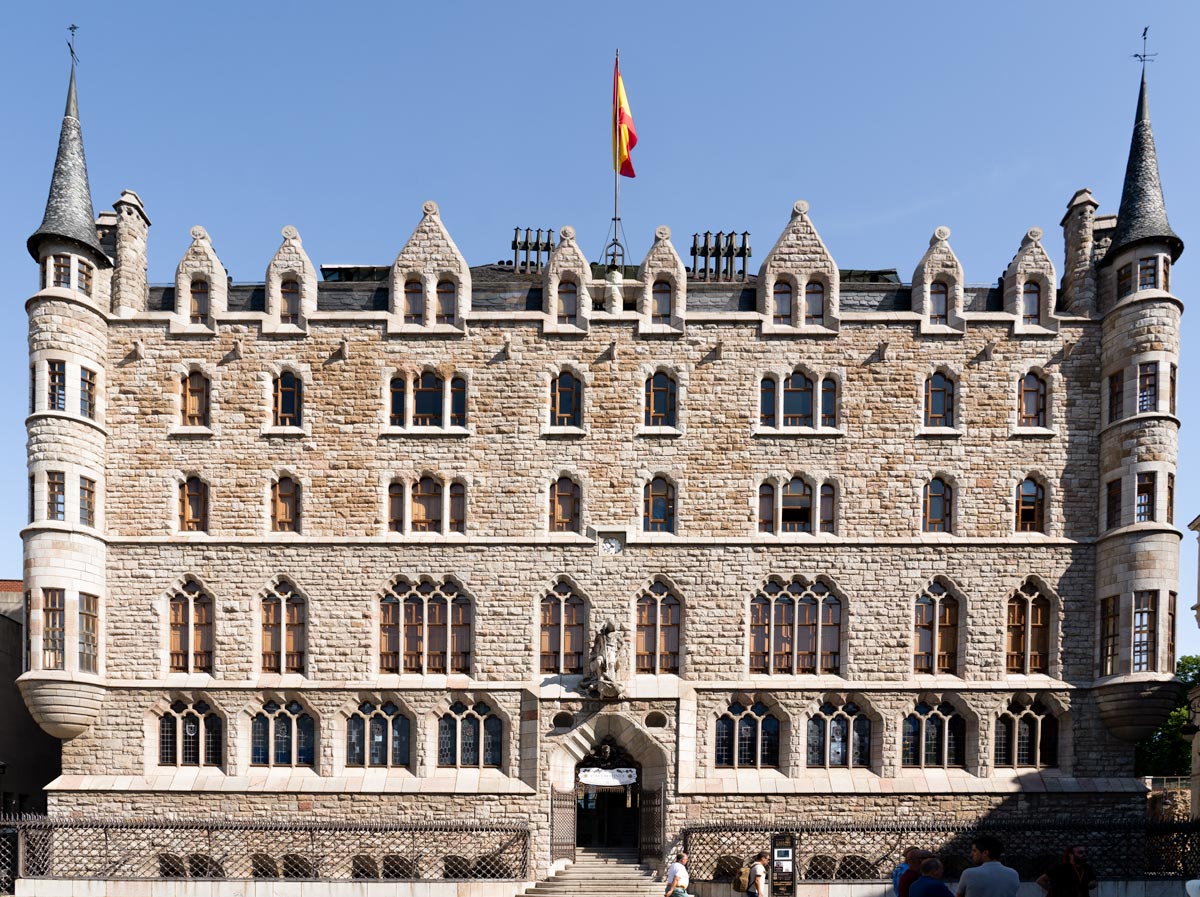
Gawp at León’s Gaudí and glasswork
Northern Spain’s draws aren’t just the coast, and after hopping on one of Spain’s high-speed trains , you’ll soon be whisked to the underrated European city of León. Laid-back and pedestrianised in its centre, León is a fantastic place to enjoy free tapas at traditional bars (rather rare in Northern Spain) and marvel at a clutch of magnificent monuments.
Even Gaudí , best known for his work in Barcelona , left his mark here with the construction of Casa Botines. Relatively subdued and far less flamboyant than his signature style, the straight-lined and imposing former fabric factory still has a few of his expected design quirks inside. For a splash of colour, venture into León Cathedral, where some of Europe’s most intricate, impressive and oldest – some date from the 14th century – stained glass windows rain down a kaleidoscope of colours inside the nave. Then, take a tour of the ‘Sistine Chapel of Romanesque art’, the Royal Pantheon inside the Basilica of San Isidoro de León, for one of Spain’s finest frescoed ceilings.
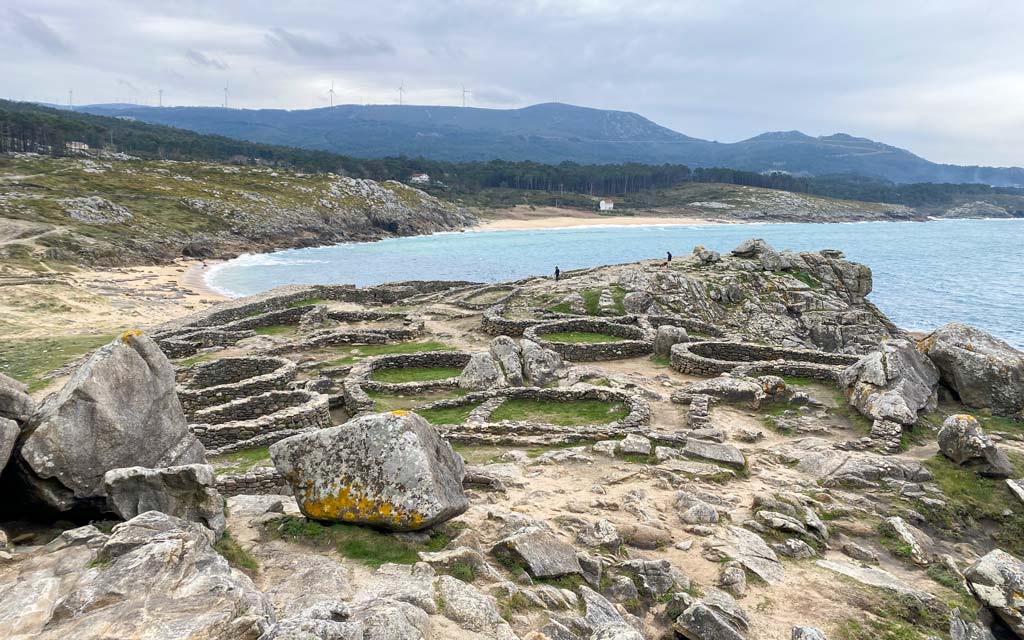
Cast yourself back in time at a Galician Castro
Prefer your history lesson pre-Roman? Introducing Northern Spain’s clutch of castros . These conical-structured, fortified villages can be found dotted around Galicia, providing some of Europe’s most unique places to visit . Usually located in strategic locations, such as upon hills or along the coast, a castro visit isn’t just a peek into the past but also comes accompanied by some striking panoramas.
One of the most impressive, for its scale and position, is the coastal Castro de Baroña, less than an hour from Santiago de Compostela. Believed to have been inhabited from the 1st century BC, around 22 circular stone home bases are still visible on the bay-flanked headland. While the roofs may be long gone, it’s an awe-inspiring experience to walk amongst the 2000-year-old village and look out on the cerulean waters, imagining the days of yore.
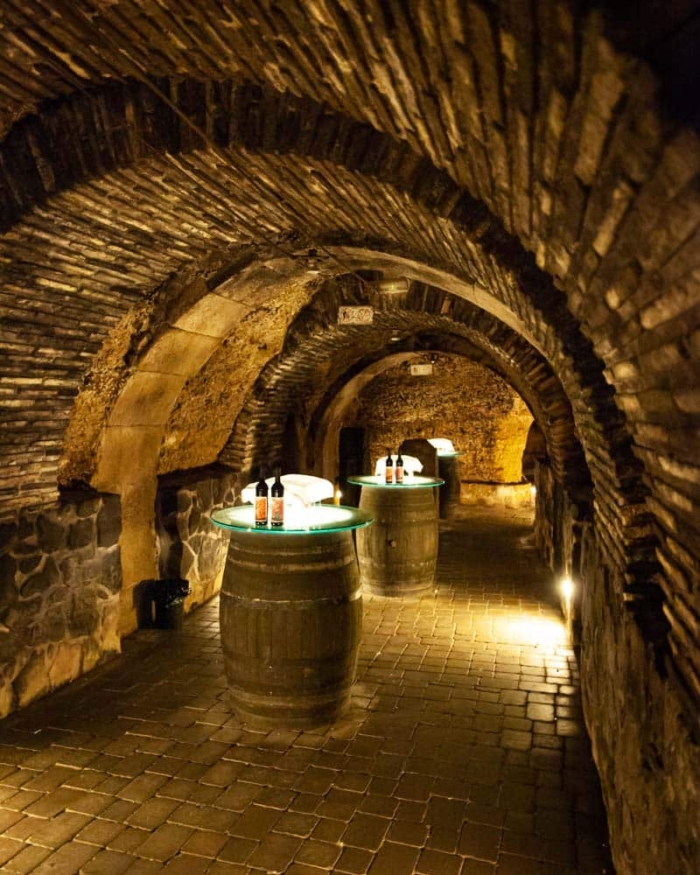
Relish the wines of Rioja in Laguardia
No visit to Spain would be complete without sampling the country’s famed wines, and none come more internationally established than the ruby red Riojas. One of the things to do in Northern Spain is to join a wine-tasting tour, but it’s equally possible to get your vino introduction DIY. From San Sebastián or Bilbao, it’s just a short drive south to the Rioja wine region and you don’t even need to cross the regional borders to get there. La Rioja is an official autonomous community in Spain, but the Rioja wine region also blends into the Basque Country in Álava.
Laguardia is one of my favourite places in Northern Spain, partly because of how pretty a medieval town it is, but mainly because of the wine tunnels. I only ended up coming here because of a Spain food tour I took, and that’s how I discovered this wonderful underground maze. Fascinatingly, the town has a labyrinth of some 250 tunnels hidden below its pretty stone buildings. They are so delicate that cars aren’t allowed into the old town to prevent collapses. However, visitors can venture into the tunnels – now used mainly for ageing Rioja wines – to enjoy a tour followed by a wine tasting at a couple of wineries, my favourite being Bodega El Fabulista. Once back in the light, drive 10 minutes in any direction and soon stumble upon rows of vines ready to enjoy a vineyard lunch.
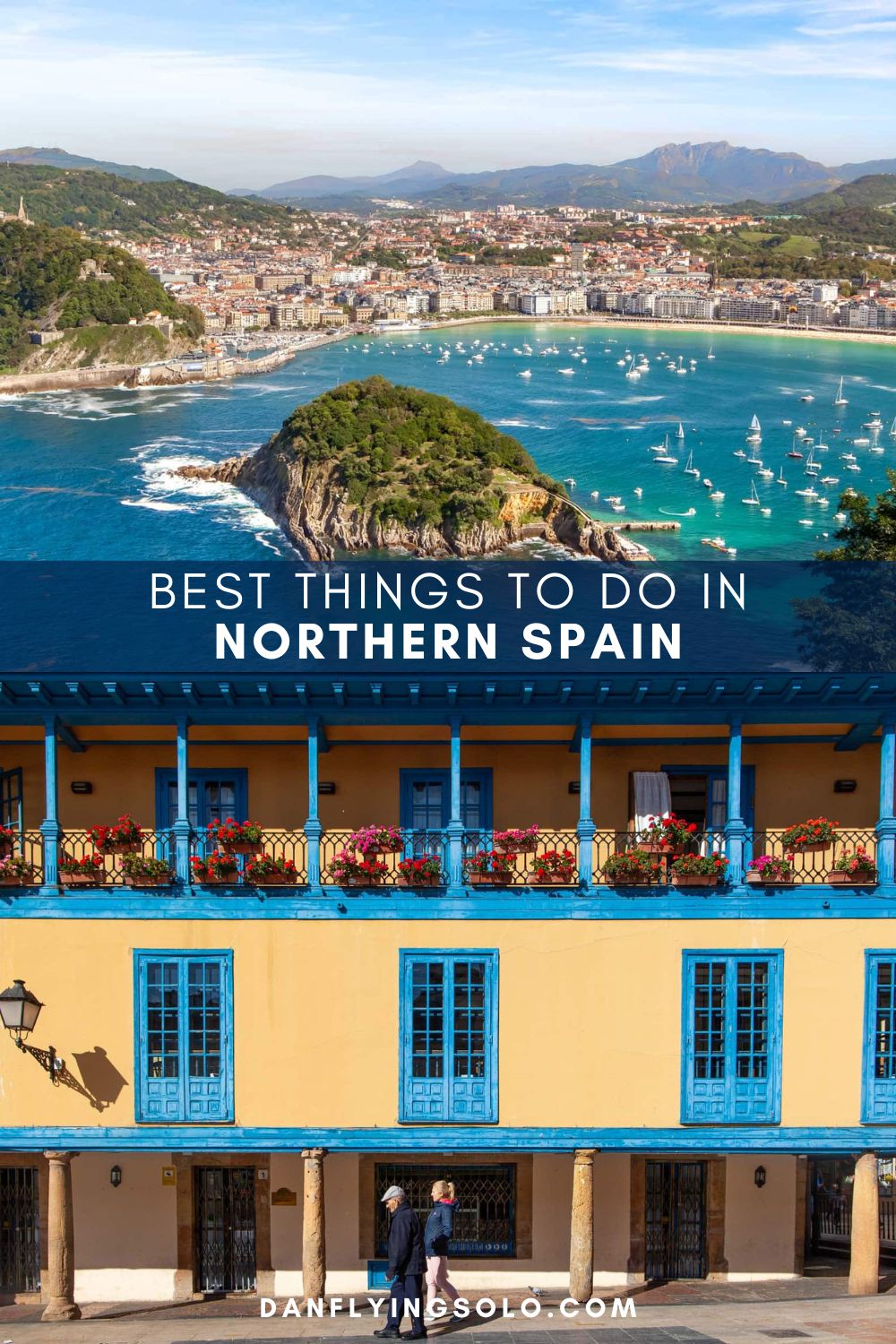
Related Posts:
- Sample Spain in Seven Days With These 5 Itinerary Ideas
- Best Hidden Gems in Spain: 21 Unique Places To Visit in Spain
- 12 Incredible Beach Destinations in Europe For Any Kind of Traveller
- 10 Fantastic Ecotourism Destinations To Visit in 2024
- 20 Best Cities to Visit in Spain for Culture, Coast or Cuisine
- A Guide to Gijón, Spain: Asturias’ Beloved Beach Escape
Leave a Reply
Leave a reply cancel reply.
Your email address will not be published. Required fields are marked *

Hey, I’m Dan…
Sign up for (irregular) updates.
Email Address *
Recent Articles…
- Summer Highs in Innsbruck, Where the Alps Are for All
- 5 of Portugal’s Best Multi-Day Trails
- 12 Fantastic Things To Do in the UK
- 11 Unforgettable Things To Do in France
- 8 Alternative Spa and Wellness Destinations in Europe
- 9 Blissful Beach Destinations for Sun, Sand, and Serenity


Is Northern Spain Worth Visiting? 13 Great Reasons Why the Answer Is Yes
Is northern Spain worth visiting? There is no doubt that Spain’s most famous cities and regions like Madrid, Barcelona, Andalucia, and even the Spanish Canary Islands are incredible, but honestly, you have to see the stunning places that exist in northern Spain.
From beautiful green sceneries and surreal beaches to historical cities and picturesque villages, this undiscovered area in Spain will surely win you over.
To make my point, here are all the reasons why you must mark it as your next Spanish road trip destination .
* This post may contain affiliate links from which I earn a commission (for more info, read my disclosure ). As an Amazon Associate, I earn from qualifying purchases.
* I try to keep the information on this blog as updated as possible, but I still recommend consulting the latest prices, opening hours, and other details on the official website of each site, hotel, and tour, as well as checking the updated public transport routes and timetables.

Table of Contents
IS NORTHERN SPAIN WORTH VISITING? WHY THE ANSWER IS YES
It’s an ideal road trip destination.
Whether you decide to focus on one region or visit a few (I traveled through the Basque Country, Cantabria, Asturias, and Galicia), the best way to get around northern Spain is by driving.
Considering all the beauty surrounding you, the ability to stop wherever and whenever you want in this area is priceless because it’s packed with hidden gems.
Moving between central cities, you could use trains or bus services, but I recommend renting a car to comfortably reach villages, beaches, and national parks.
Tip: After accessing the map, you can also open it on your Google Maps app. Simply open your app, tap the ‘saved’ icon at the bottom, scroll down and tap the ‘maps’ icon, and choose the MyMaps map you want to see (you can do the same on your computer).
While the rest of Spain can be unbearably hot and humid, the weather in northern Spain is a lot cooler and can be perfect for a vacation in late spring, summer, or early autumn.
It might get rainy sometimes, but the average temperatures by day are 18-22 °C (64-71 °F) in May and June, and 22-26 °C (71-79 °F) in July and August, though they are rising in recent years.
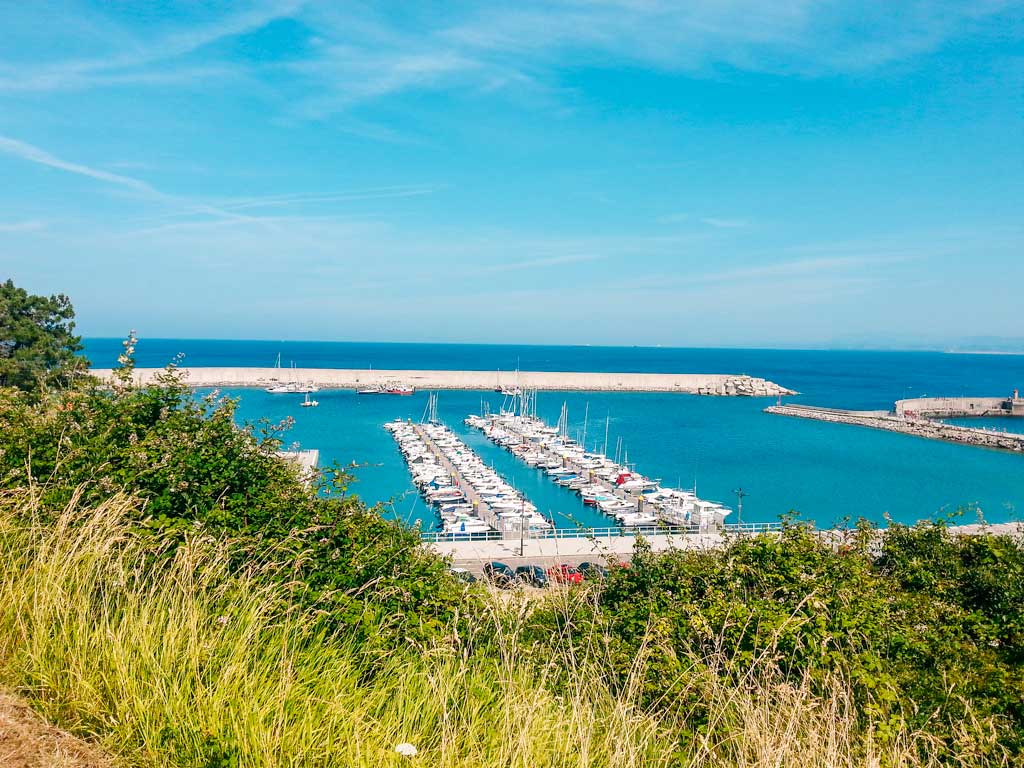
It’s Less Touristy
While Spain’s northern regions are slowly getting the attention they deserve, they are still a lot less popular amongst international travelers who might prefer Andalucia, Barcelona, or Madrid as their destination.
From the Basque Country to Galicia, you’ll find hundreds of amazing spots to visit, so even with their growing popularity, you can count on one hand the number of places that might actually get uncomfortably crowded.
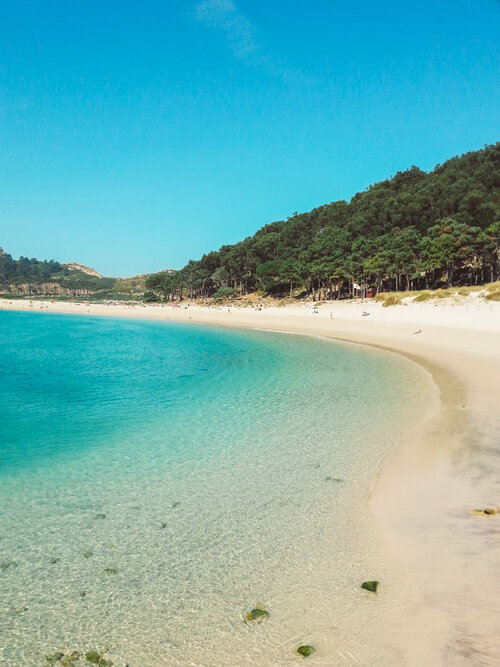
Unbelievable Natural Landscapes
If there’s one thing to know about Spain , it’s that this country is much more diverse than people think.
Northern Spain is basically one giant green carpet, loaded with nature reserves and national parks like the magical Picos de Europa and Somiedo, giving several regions (Basque Country, Cantabria, Asturias, and Galicia) the nickname Green Spain ( España Verde ).
Now, I know it’s probably not what you would expect, but some of the views here could easily make you believe you are in Austria or Switzerland.
The scenery is full of rolling hills, mountains, valleys, lakes, waterfalls, and rivers. I don’t know about you, but to me, it sounds pretty irresistible.
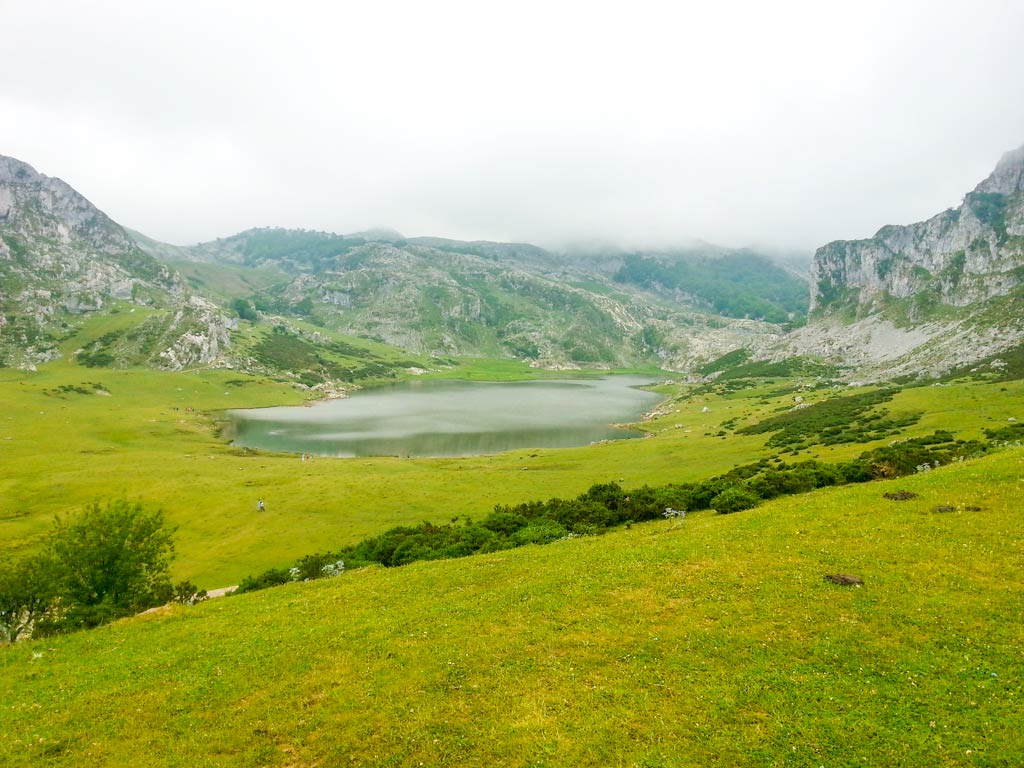
Beautiful Cities
It’s not all about the countryside when you visit northern Spain. If you are also looking for city views, then this area has a lot of fantastic options to offer, each with its own characteristics and vibe.
You can indulge in exquisite food in San Sebastian (which many people consider the foodie capital of the world), appreciate modern art at the Guggenheim Museum in Bilbao, explore the historic center and cathedral of Santiago de Compostela (a UNESCO World Heritage Site), or visit the underrated Oviedo.

Food, Food, and More Food
What is northern Spain like in terms of food? Fascinating and delicious.
First of all, let’s talk about the city of San Sebastian. As I’ve mentioned, it is considered a food capital, and with award-winning restaurants and the second-highest number of Michelin stars per square meter, it’s easy to see why.
Apart from San Sebastian, throughout all the regions in northern Spain, you can indulge yourself in fresh seafood, local cheeses, quality fruits and vegetables, and of course, pintxos .
Pintxos are northern Spain’s version of tapas, consisting of different toppings placed on a small piece of bread. Even for a vegetarian (well, a pescatarian) like me, there are more than enough mouthwatering options.
Each region also has its delicacies, from empanadas in Galicia (one of the top street foods in Europe ) to quesada pasiega in Cantabria to salmón a la ribereña in Asturias.

Dreamy Beaches
Although I have much respect for Spain’s Mediterranean beaches, I have to say that northern Spain’s Atlantic coastline is INCREDIBLE, spanning more than 800 km.
Along with famous beaches like Playa de la Concha (San Sebastian), Playa de Rodas (Cies Islands), and Playa de las Catedrales, there are many unspoiled, lesser-known beaches that you’ll have all to yourself.

Beautiful Villages and Towns
If you drive along the coastline, you’ll also find charming fisherman villages and towns like Luarca, the colorful Cudillero, and Combarro.
As much as loved them, I have to say that the ones that stole my heart were actually the small, hidden, inland villages.
Dotting the green scenery, you’ll stumble upon picture-perfect hamlets of 10-15 (or even fewer) rustic stone houses, adorned with lively gardens of Hydrangea (my favorite flower), corn, and grapevines.
If that doesn’t sound like pure magic, I don’t know what does.

Must-See Historical Landmarks
Though nature is a notable feature of northern Spain, this area is also packed with incredible historical landmarks.
From the Roman walls in Lugo and prehistoric caves & paintings in Asturias to the medieval San Juan de Gaztelugatxe hermitage and the Cathedral of Santiago de Compostela (the final stop of the pilgrimage route Camino de Santiago), there’s a lot to see.

Diverse Architecture
I’m pretty sure architecture is not what comes to mind when you think about reasons to visit northern Spain.
However, there are so many stunning buildings in these regions, and it’s impossible not to appreciate the work put into them.
These include quirky structures like ‘El Capricho de Gaudi’, futuristic architecture at the Guggenheim Museum in Bilbao, old rustic houses in Santillana del Mar, and traditional Galician granaries, all showcasing northern Spain’s intriguing mix of astonishing architectural styles.

Local Wine, Beer, and Cider
Both La Rioja and Galicia are well-known wine regions in Spain, so you are guaranteed some high-quality wines. If you’re more of a beer person, then there’s the famous Estrella Galicia and plenty of other local craft beers.
That said, my personal favorite drink in northern Spain has to be cider since you get a show as well as a good drink. You get a small thin glass, and the waiter pours a gulp of cider from a great height, producing air bubbles into the cider.
If you don’t consume it all and the bubbles disappear, the waiter will spill the rest on the floor, and the pouring ritual will begin once more.
It’s a Hiker’s Heaven
If you’re into hiking, you must visit northern Spain. With so many nature reserves and national parks, this area offers countless hiking trails at different difficulty levels.
Amongst the famous hikes you can take, you’ll find the Ruta del Cares and the Camino de Santiago (Way of Saint James) which passes through most of northern Spain’s regions (there are actually several options for walking the Camino de Santiago, including ones in Portugal and France).
However, you can also find shorter, easier, and more relaxed trails.
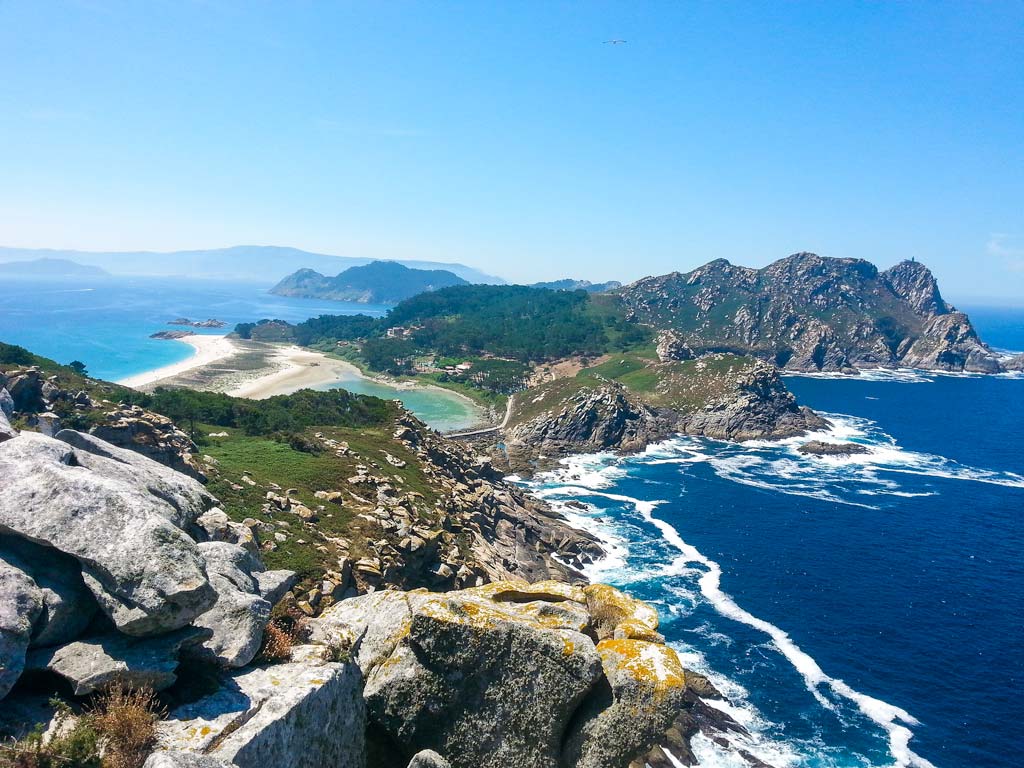
The Atmosphere Is Contagiously Relaxed
When you travel through vast green landscapes, tiny mountainous hamlets, fishing villages, and rugged coastlines, it’s impossible not to feel carefree, relaxed, and recharged.
Even when you get to the big cities of northern Spain, the vibe is still pretty much laid-back, which makes you want to have a slower-paced life.

Practical Info
Getting to northern spain.
Depending on where you want to go in the north of Spain, you can fly directly to cities like San Sebastian, Bilbao, Santander, and A Coruña. Some of these cities are also reachable from Madrid by domestic flight, train, or bus.
I took a flight from Madrid to San Sebastian and started my road trip there, but you could rent a car in Madrid.
Best Time to Visit
Late spring and early summer are fantastic times to visit northern Spain.
I visited in late June/beginning of July, and I had perfect weather with zero crowds.
How Much Time to Spend in Northern Spain
Whether you only visit one region or 3-4, I highly recommend planning a trip of a minimum of 10 days. That’s not really enough as I could have spent months there, but when you’re time is limited, aim for 10-21 days.
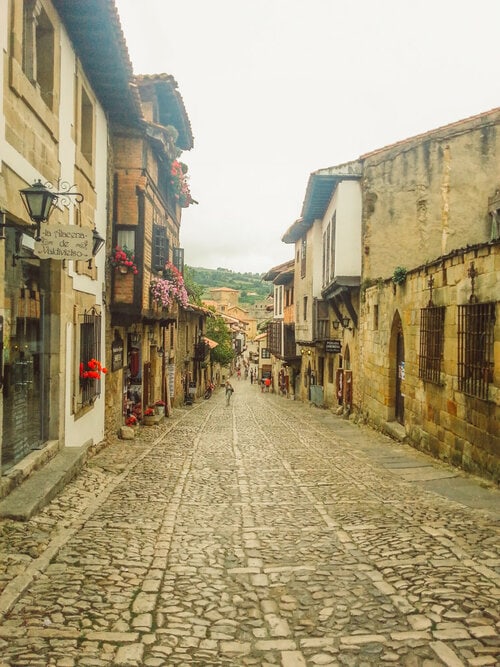
Where to Stay
There are lots of hotels, hostels, apartments, and B&Bs all over the area.
If you choose to focus on one region, you can base yourself in one town, but if you’re taking a more extensive road trip (as I did), you’ll probably have to spend just a night or two in each place.
I recommend staying in little villages and towns and not in the big cities (unless you have no choice). It’s cheaper and more comfortable to park, and you can find some beautiful, secluded places to wake up in.
Feel free to use my northern Spain road trip itinerary for inspiration.
Is It Better to Visit Northern or Southern Spain
As a huge Spain lover, I obviously recommend visiting both, but I understand your thoughts.
Being so different in terms of history, culture, weather, landmarks, views, and other aspects, I don’t think one is better than the other – it’s a question of what you want you’re next trip to look like.
To help you decide, here’s my Andalucia road trip itinerary and places I wish I hadn’t missed in southern Spain .

Related Posts
Related posts:
- Is Porto worth visiting
- Is Turin worth visiting
- Is Warsaw worth visiting
- Is Cordoba worth visiting
- Is Cadiz worth visiting
- Is Madrid worth visiting
- Is Bari worth visiting
- Is Aosta worth visiting
- Reasons to visit Budapest
- Reasons to visit Malta
- Reasons to visit Crete
- Reasons to visit Mallorca
- Reasons to visit Poznan
Read more about Spain:
- Non touristy places in Spain
- Famous landmarks in Spain
- Long weekend breaks in Spain
- Spain travel quotes
- Novels about Spain
- Spain themed gifts
Have I convinced you to visit northern Spain? Tell me in the comments below!
Did you like this post? Pin it for later and share it with your friends!
About Or Amir
Hey, I'm Or! I'm a passionate traveler with a severe coffee, chocolate, and pastry addiction (or any other carb for that matter). I'm always planning my next trip to Spain, Italy, or any other country in Europe, and my goal is to help you make the most of each destination.
2 thoughts on “Is Northern Spain Worth Visiting? 13 Great Reasons Why the Answer Is Yes”
Wow, this is super beautiful! I love that it’s more off the beaten path and not the standard Spain stuff everyone is doing. Definitely pinning this for when I go!
Thank you! It really is an unexpected part of Spain, and it has so much to offer!
*Your emil address will not be published. By using this form you agree with the storage and handling of your data by this website
Leave a Comment Cancel reply
Save my name, email, and website in this browser for the next time I comment.
Hi, I'm Or!
I'm a passionate traveler obsessed with traveling in Europe and discovering hidden gems in each place I visit. For me, it's not about ticking destinations off the bucket list but experiencing each one of them to the fullest. Read more about me and my story.


Weather in Northern Spain | Best Month to Visit
Northern and southern Spain differ significantly in their regional cuisines, architecture, language, and weather. The South attracts more tourists for its Mediterranean climate and long, sunny days. The northern Spain weather is cooler and rainier – making for a great road trip experience .
With attractions such as La Rioja , Asturias, and San Sebastian, northern Spain is great for all types of travelers. If you’re adventurous, you can expect to enjoy sports such as hiking, mountain biking, canoeing, and skiing.
Those curious about the history and culture will love the Romanesque architecture, museums, and cider and wine-tasting experiences on offer.
You’ll want to know what the northern Spain weather is like before planning your visit to this region. The guide below will provide you with a month-to-month breakdown of the weather and help you decide when to visit, depending on the activities you plan on doing.
Spain Weather by Month
While Spain’s climate can be broken down into its four seasons, a monthly guide will leave you more informed on the nuances within each season. The below temperatures are averages for the northern region.
It’s important to note that northern Spain’s weather can differ greatly from area to area. Some regions experience much less sunshine and significantly more rain, while others may experience temperatures higher than the averages given below.
Spain Winter Weather

The wintery months of January, February, and March are perfect for snowy sports, with the northern region experiencing the most snow in Spain. You’re going to want to pack your warmest coat as the temperatures drop significantly – especially near mountainous areas.
January, February, & March Weather in Northern Spain
January: The temperatures drop to an icy average minimum of 5°C, and maximum temperatures reach a meager 14°C.
February: Temperatures increase ever so slightly to average around 5°C (min) and 15°C (max).
March: As the mountains defrost for the blooming season, temperatures reach an average minimum of around 7°C, and maximum temperatures average around 16-17°C. You’ll also be treated to slightly longer days – great news for those who’d like to avoid the winter blues.
Spring Weather in Northern Spain

Spring in Spain runs for the months of April, May, and June and is a delightful season no matter where you go in Spain. You’ll get to enjoy mellow temperatures, lush greenery, and fragrant flowers all around. You can expect a few refreshing rainy days as the winter months melt away.
Weather in Northern Spain in April, May & June
April: Early spring temperatures are still relatively low as the Spanish mountains defrost. Average minimum temperatures are around 8°C, while temperatures peak at around 20°C.
May: Average minimum temperatures increase slightly to about 11°C, while average maximum temperatures range between 22-25°C.
June : With the most sunny hours of the season, June warms up slightly to average minimum and maximum temperatures around 14°C and 24°C.
Northern Spain Summer Temperatures

The summer months of July, August, and September are still comparatively chillier than the South. This makes the North an excellent spot for those who prefer their adventures and getaways in mellow weather.
Weather for Northern Spain in July, August, & September
July: The nights are a moderate 16°C (average), while the average maximum temperatures range around 25°C.
August: Ever so slightly warmer than July, August temperatures range between averages of 16°C (min) and 26°C (max).
September: With fall approaching, the days become shorter, and average temperatures drop slightly to minimum temperatures of 14°C and maximum temperatures around 24°C.
Fall Weather in Spain

Northern Spain starts to cool down during the autumn months of October, November, and December. These fall months are still ideal for touring Spain, but the northern region experiences a slight increase in rainy days (hardly enough to put a damper on your holiday spirits).
Weather in Northern Spain in October, November, & December
October: Average minimum temperatures drop to around 11°C, while average maximum temperatures reach up to around 19-23°C.
November: You can expect quite a drop in temperatures with winter around the corner. Minimum temperatures range around 8°C, while maximum temperatures reach a mellow 19°C.
December: You can expect low temperatures of around 6°C, with average maximum temperatures only reaching around 15°C.
Best Time to Visit Northern Spain
The peak season for tourism in Spain is around the summer months (from June to September). Accommodation, flight, and tour packages tend to be pricier during the high season, and restaurants and attractions are especially crowded.
What’s great about northern Spain is that it’s not as large of a tourist destination, so you’re less likely to encounter large crowds and packed restaurants. You can enjoy moderate temperatures in the North from autumn through spring – as long as you bring an umbrella along.
No matter the season you choose to visit, there are countless activities to keep busy throughout the year:
- Visit La Rioja and taste some authentic Spanish vino during the golden fall months when the harvesting activities are at their peak.
- Walk or cycle the Camino de Santiago during the summer or autumn months when rain levels are lower.
- Take a hike up the Pyrenees in Andorra during the summer months, or ski down the icy slopes in winter. The snow is at its best during January and February, and weekdays are less crowded.
- Try fresh seafood at the beautifully colorful town of Ribadesella in Asturias during summer. Or try out the locally produced cider at one of the many Asturian sidrerias (cider houses) and witness (or practice) the traditional way of pouring.
- Visit the spectacular Guggenheim Museum in Bilbao during the autumn or spring months when the weather and the crowds are moderate.
Final Thoughts on the Climate in Northern Spain
While the North of Spain may not be the sunniest, its temperatures are more accommodating, so you can expect to have a good time year-round.
Due to its abundance of rain, you’ll witness scenery like no other. With rolling hills, luscious forests, and plenty of water streams beautifying the region, Northern Spain is sure to be memorable.
If, by now, you’ve concluded during which season you’d like to visit the North of Spain, have a look at this guide to getting your Spain Visa . It may also be helpful to have a look at our seasonal packing guide as you prepare for your trip.

Where to Stay in Santander: Discover the Best Places & Hotels

Spain in October | Activities, Weather & More

Spain in June | Activities, Temperatures & More

5 Days in Spain: Where to Go in Spain & 3 Unique Itineraries
Leave a reply cancel reply.
Save my name, email, and website in this browser for the next time I comment.
- 8 Luxury Hotels in Gran Canaria | Boutiques, 5-star, & Resorts
- Málaga To Ronda Day Trip | Is It Better By Train, Plane, or Car?
Traveling in Spain aims to help tourists and locals find the best adventures, and tours in Spain. We collect live prices from trusted tour and ticketing operators. We’ll sometimes link out to our affiliate partners, such as Amazon LLC, and make a small commission at no extra cost to you.
Privacy Overview

Shopping cart

Northern Spain
ULTIMATE TRAVEL GUIDE TO VISIT NORTHERN SPAIN
The best travel guide to Northern Spain including top tours, hotels. gastronomy and routes
No one would say that Northern Spain is a “hidden gem” but it when most people think of Spain, what most people imagine is southern Spain: flamenco, bullfighting, beaches, paella, tapas, … So when people visit the northern part of the country they are usually blown away. The north of Spain is green and lush, brimming with history and culturally very different from the rest of the country (especially in the Basque Country). The food is different, the nightlife is different, … everything is just different. Different and amazing.
When we are talking about the north of Spain, we are talking about Galicia, Cantabria, Asturias, Navarra, Logroño, The Basque Country , and some northern areas parts of Castilla León and Aragón .
What follows is an introduction to this huge area in Spain. This post is useful as a first guide to draft your travel plan in northern Spain. You will find more detailed recommendations and information in each of our city or attraction guides. We hope you enjoy your travel planning!
Northern Spain travel guide - Contents
Our 3 top: hotels in northern spain, hotel san miguel – boutique hotel 5 minutes from the cathedral of santiago, hotel de londres - san sebastian, hotel miró – 4 * - amazing views, northern spain in a nutshell.
Northern Spain has a very rich history and diverse local cultures. Galicia, for example, is located in the northwestern corner of the Iberian peninsula and is heavy influences by their neighbors to the south: Portugal. Galicians even have their own language that is a mixture of Castilian Spanish and Portuguese . It is a region with a strong maritime heritage and home to such amazing sites as the Cathedral of Santiago de Compostella, (where the famous Camino de Santiago concludes) and the mysterious Cies Islands .
The Basque country , on the other hand, is much more influenced by France . This influence is evident in Basque cuisine and food culture, which is considered to be world-class. The Basque people are very independent and proud and have conserved their ancestral culture for centuries. In fact, Basque or Euskera, the local language, shares no relationship with any other language on the planet. The main cities located in the Basque country are Bilbao , San Sebastian, and Vitoria , but there are tons of charming little villages, like Hondarribia for example, that is absolutely worth a visit.
Navarra, which was its own kingdom at one point is culturally similar to the Basque Country. Navarra’s main city and capital is Pamplona , where the famous running of the bulls takes palace but Pamplona and Navarra as a whole have a lot more to offer than just the San Fermines.
Cantabria and Asturias are the two regions of northern Spain that are more culturally Spanish, but there is also a heavy Celtic influence here that is unique to this region of the country. They are some of the most naturally beautiful areas of Spain. In this slice of Spain, the gigantic Picos de Europa mountain range bunches up just a few kilometers from the ocean, creating some of the most striking landscapes you will ever see. You have 2000 plus meters tall mountains just 5 km from the beach. The food in the area is also spectacular, hearty, and flavourful, perfect for seafaring folks like the Asturianos and Cantabros.
Top cities in Northern Spain
Bilbao is the largest city of the Basque country and the cultural and economical epicenter. Bilbao is a port city that is configured around the Nervión river that cuts through the city on its way to the Cantabrian sea. Bilbao is a beautiful and inviting city, home to the world-famous Guggenheim Museum . In the cities old quarter you will find all the pintxo bars and taverns the city is so well known for.
San Sebastian is also located in the Basque Country, just east of Bilbao, very close to the French border . San Sebastian is spectacularly beautiful, artsy, and deeply cultured. The city is built around a bay and features one of the most beautiful urban beaches in the world: la Playa de La Concha . San Sebastian is also one of the greatest food cities on the planet, having the largest concentration of Michelin Star restaurants of any city and the best pintxos in Spain. It also hosts the prestigious San Sebastian Film festival every year , a testament to the city’s relationship with the arts.
Logroño is the capital of La Rioja , an area of Spain mainly known thanks to the quality of its red wines! Logroño is the perfect city to stay while you enjoy wine tours in Rioja.
Pamplona is the capital of Navarra , which as we mentioned was once its own kingdom. Pamplona was basically a military fortress that grew and grew until it became a city. Pamplona was the main line of defense from invading forces from the north. It is of course also the site of the world-famous running of the bulls which, admittedly is something everyone should experience once in a lifetime, but Pamplona is a city filled with history and cool things to be discovered.
Santander is the capital of Asturias . Santander has historically been a very rich city as many residents took to the sea during the colonization of the Americas and made fortunes which they brought back to their hometown. But as beautiful as the city is, the natural beauty of the area is unbeatable. In Asturias, you will find some of the best beaches in the country and it is a prime destination for Suffers. Also, make sure you order a Cachopo if you visit, you can thank us later.
Santiago de Compostela is also a capital city, this time of the region of Galicia. Santiago is home to the Cathedral of Santigo de Compostela, perhaps the most spectacular such Cathedral in Europe, only rivaled by the Notre Dame in Paris. Santiago is also the finishing point of the famous Camino de Santiago. Santiago is immensely beautiful and a perfect example of Galician culture.

Pamplona City Guide
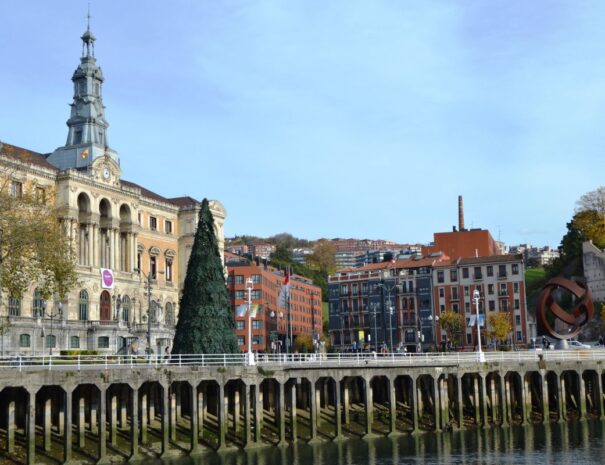
Bilbao City Guide
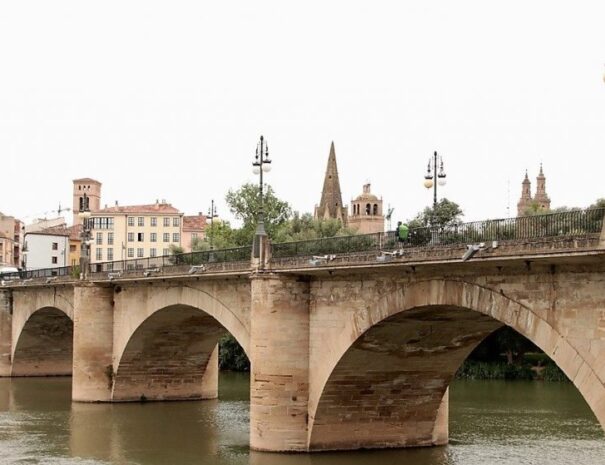
Logroño City Guide
Top attractions in northern spain.
Cathedral Santiago
A visit to the cathedral is a must for anyone in Santiago de Compostela. The Cathedral is in the top 3 centers for catholic pilgrims in the world. There has been a place of worship in the same place since the 9th century and ever since then the building has been renovated and added on to until we have the spectacular cathedral you see today. The cathedral is enormous and The interior in particular is a masterpiece of Romanesque architecture . Around the nave and aisles, there is a string of chapels, which are mostly Romanesque with exquisitely decorated altars, tombs, and statues.
The Guggenheim Museum of Bilbao
Designed by Frank Gehry is the city’s most emblematic monument. The museum sits on the bank of the Nervión river and is itself a piece of art. The museum is one of the most important examples of contemporary architecture, and has been hailed as a “signal moment in the architectural culture”. The museum finally opened its doors on 18 October 1997 and was inaugurated by the King, Juan Carlos I of Spain. The Guggenheim is home to over 250 works of art and features permanent and visiting exhibits of works by international and national artists.
La Concha beach in the heart of San Sebastian
It’s almost not fair to include it on this list, it is almost like saying that one of San Sebastian’s main attractions is the whole city of San Sebastian. La Concha is considered to be one of the most, if not the most spectacular and pristine urban beaches in the world. As an added bonus, many of the city’s other attractions are within walking distance from the beach or are literally beachfront properties.
Citadel of Pamplona
Pamplona was, for the longest time a military garrison, designed as a stopper for invading forces from the north. As time went on and more people attempted to invade the peninsula the fortress began expanding and the webbing of protective walls became more intricate and sophisticated. The end result was a European heritage site and one of the largest and most complex military constructions in all of Europe.
But there is so much more to enjoy in Northern Spain. You can find below some of the visitors´’ guides for some of the top attractions in the North of Spain.
Top Northern Spain Road Trip
This itinerary lets you enjoy Barcelona and all the Northern coast of Spain . We believe 11 days is the minimum time to enjoy this long itinerary in Northern Spain. You may decide to stay more time at different locations or enjoy smaller towns and villages in the area. This itinerary focuses on the main stops throughout the route and proposes ways to expand the itinerary in case you have more days available.
For each main stop, you will be able to access detailed city guides where you will find all you need to plan your stay at each of the cities on this northern Spain itinerary: recommended hotels, restaurants, monuments, tours, activities, and nearby trips.
- Barcelona (2 1/2 days): Barcelona, the first stop in this itinerary through northern Spain, is one of Spain´s most European cities. Modern, busy… but it offers so much more: Gaudi architecture, beaches, bars, and food markets, a fantastic Gothic district, and beautiful squares with a truly Mediterranean flair. Barcelona is also easy and very pleasant to walk. The city is very flat and boasts two super avenues that are amongst the must-do: Paseo de Gracia (a must to enjoy Gaudi and modernist architecture) and Las Ramblas , one of the most lively pedestrian streets in the world. You will need at least two days to enjoy Barcelona and your stay could easily be extended to visit Montserrat monastery and the nearby wine regions of Penedes or Priorat. Art lovers will find lots to do, families can enjoy theme parks at the top of a hill, and sports lovers can visit the Barcelona football stadium . Also, north of Barcelona, the coast of Girona offers both ideal beaches and small villages that contrast and fun and party resorts.
- Zaragoza (1/2 day): Zaragoza makes for the perfect stop on your way to the Northern coast of Spain from Barcelona. Zaragoza is the capital of Aragon and holds half of the region´s population. It is located next to the Ebro river (second largest in Spain) and has a long history that takes us back to Roman days. The top highlight in Zaragoza is El Pilar , a huge basilica that cannot be missed in the city center. Baroque style with splendid domes and the treasure of the Pilar statue, hidden in the Capilla Santa. Besides El Pilar you it makes all sense to pay a visit to La Aljafería , a Moorish palace that was restored and is home of the regional parliament (yet it can be visited). There are also four museums dedicated to the Roman history of Zaragoza.
- Pamplona (1/2 day): For most, Pamplona is the city where San Fermin takes place. Despite Pamplona cannot be understood without San Fermin and the running of the bulls, Pamplona offers more than this festival. We love the restaurants and bars in Pamplona, where you will find great value for money and gastronomy that is true to its region. Pamplona is an important stop in El Camino , and there are some beautiful squares and interesting monuments and museums to keep yourself busy. San Fermin is with no doubt the highlight for the city, and one of the top things to do in Spain in July . But accommodation prices rise considerably during San Fermin and the city is too busy for travelers that will prefer to discover Pamplona when it gets back to normal.
- Laguardia (1 day): Driving from Pamplona to Laguardia will take you a bit more than one hour. Laguardia is part of the Basque Country and inside the Rioja wine region. Rioja is a beautiful region well-known thanks to its wine. For many people, this is an amazing region, perfect to walk along small roads, visiting quaint villages, and indulging yourself with wine and local gastronomy. Laguardia is a perfect place to enjoy Rioja, though some may prefer Logroño, larger and with one of Spain´s top districts for tapas: Calle Laurel . Laguardia is medieval, small, and beautiful. Logroño is a city, an important stop in El Camino de Santiago, and a paradise for tapas. The decision on where to stop is yours.
- San Sebastian (2 days): For many of Spain´s smartest city, San Sebastian offers one of the world´s best city beaches, La Concha, and a paradise for foodies. Once the summer destination for the royal family, San Sebastian has known how to retain the glamour of its many famous visitors, including the mysterious Matahari. We are sure you will fall in love with San Sebastian, which also offers the possibility to enjoy nearby beautiful towns like the fishing port of Getaria (famous besides the port for its txakoli wineries and also for its restaurants that specialize in grilled fish and meat) or Hondarribia , from which walls you will be able to enjoy views of neighboring France. If you have enough time it would be a good idea to stay a bit longer in San Sebastian and discover the French Basque country (Saint Jean de Luz or Biarritz).
- Bilbao (1,5 days): Your next stop in this itinerary through Northern Spain is a city that has transformed itself. Bilbao is today one of Europe´s top art cities. Its top icon, the Guggenheim is an immense titanium fish that holds an important modern art museum, though for most visitors the building is the major piece of art. Despite the city has evolved and modernity is felt in obvious ways, Bilbao remains true to its origins and we are sure you feel its pride and character in many small details. Bilbao holds a past connected to iron and shipbuilding. In Bilbao, you will find not just art, but also pintxos and wine bars, interesting food markets , and a very interesting day trip to discover top attractions like the Unesco-listed Puente Colgante or the now-famous Hermite of San Juan de Gaztelugatxe.
- Santander (1 day): Santander and surrounding towns are popular summer destinations for Spanish citizens. The city is located at a privileged location by the seaside, next to the Bay that holds its name. Santander is a perfect place from where you can explore Cantabria. Nearby Santillana del Mar , a beautiful mid-sized tow, boasts one of the best prehistoric art caves in the world. Comillas, home of one of Spain´st top Universities, offers an interesting stop west of Santillana and Santander, with a beautiful beach and a pleasant old quarter. If you travel with children make sure you pay a visit to Cabarceno, an open-air zoo that you visit with your car (it holds 20 kilometers of roads) and where all sorts of animals live in large areas that used to be open-cut mines.
- Gijon (1/2 day): Gijón rivals with Oviedo as the top city in Asturias. Gijón is still today an important industrial centre, but as in the case of Bilbao, it has evolved and transformed into a very pleasant city to live and visit. It boasts a fantastic beach that offers a great seafront walk and its old district is full of bars and taverns where you can taste the delicious (and cheap) Asturian specialties like fabada . Gijon is a perfect place from where to enjoy Picos de Europa national park , many small villages like Tazones or Cudillero or the famous cider from Villaviciosa .
- Lugo (1/2 day): Lugo is the next stop in this itinerary in Northern Spain. A city not so well-known if compared to some of the other recommended stops in the itinerary, Lugo will for sure surprise you with its beautiful Roman walls and the labyrinth of small pedestrian streets and squares located withing the old fortress. Known as Lucus Augusti, Lugo was the most important town in Galicia during Roman times. The city hold the reputation of serving the best octopus in Spain: pulpo a feira is a local dish you should give a try.
- Santiago de Compostela (1 day): It is not unintentional that we have leaved Santiago de Compostela as the last stop in this itinerary through North of Spain. Santiago is the capital of Galicia, and the end of the Camino de Santiago. Hundreds of thousands of pilgrims come from all over the world every year to enjoy El Camino, or at least part of it. Arriving to Santiago is a great feeling for all those who have walked for weeks. And we are sure it will also be a very rewarding experience for you despite you may have traveled comfortably in your car. Santiago de Compostela is a very special place, where lots of emotions get together, where great food and wine is served, and where locals, university students, pilgrims, and tourists in general find what they are after.
3 great tours in Northern Spain
Guggenheim private tour, top seller small grouop evening pintxo tour, basque coast tour from bilbao.
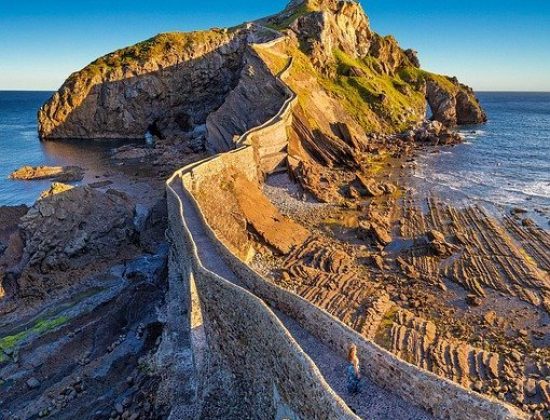
San Juan de Gaztelugatxe

Guggenheim musem in Bilbao
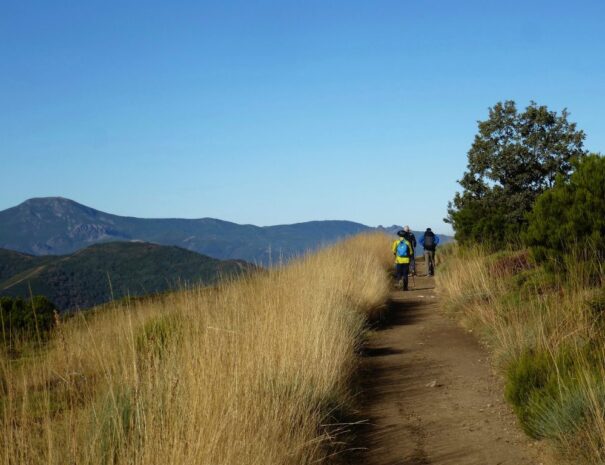
Camino de Santiago
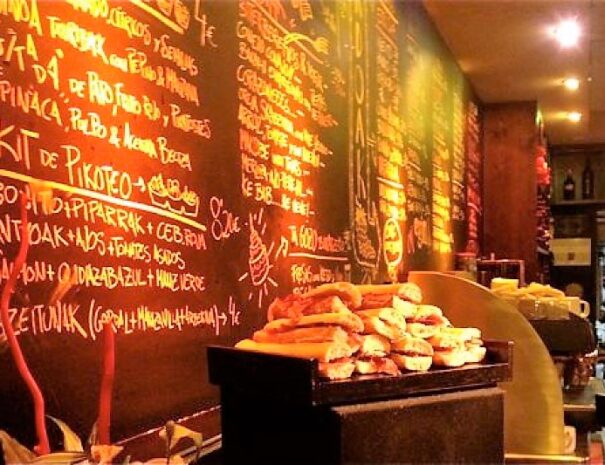
The Best Pintxos In San Sebastian. The Ultimate Guide
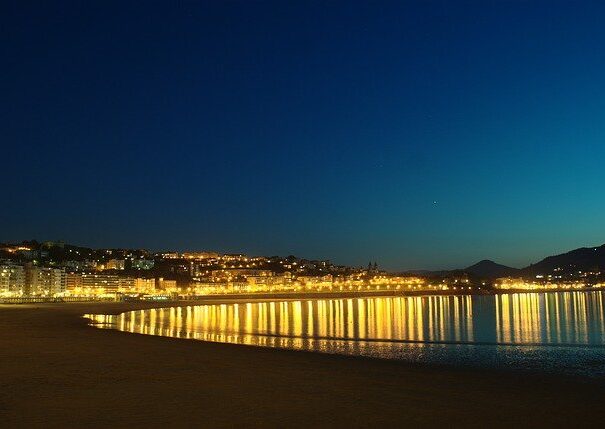
La Concha beach in San Sebastian
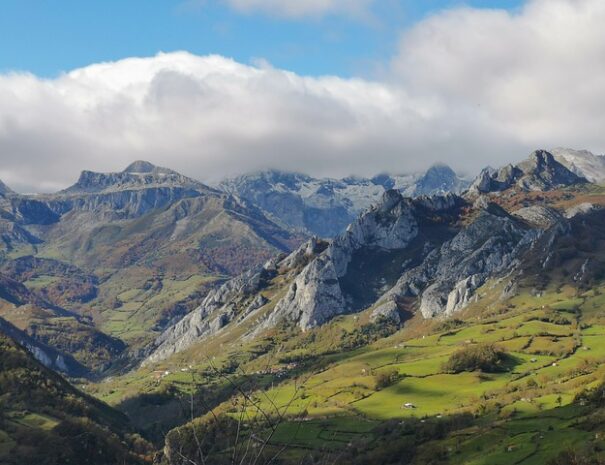
Picos de Europa National Park
Best way to visit northern spain.
If you arent up to attempting the “French way” portion of Camino de Santiago on foot , perhaps your best option would be to rent a car to get from one place to the next. Everything is relatively close. If you were to drive from San Sebastian to La Coruña , which would take you from one end to the other, it would take you about 6 hours. So, a great option is to choose a hub city and plan day trips from there.
Santander is the most central large city in the region, so logistically this is a great option. Another great option, especially if you are flying into Spain is to travel to Bilbao and plan your trips from there. San Sebastian and a great number of other attractions are within driving distance from Bilbao, but you probably won’t make your way all the way to Galicia unless you’re up for a good old road trip.
Weather In Northern Spain
Although the winters can get colder and wetter than in the rest of Spain , that does not mean that it is dreary all the time. There are two distinct climates in the north of Spain:
The oceanic climate is typical of the extreme north, an area that is also known as “Green Spain”. This climate extends from along the coast of Galicia all the way to the Pyrenees , affecting the north of Galicia, Asturias, Cantabria, and the Basque Country. The climate is mild in winter and relatively warm in summer, although the temperature does not vary much from one season to another. Rainfall and strong winds are frequent on the coasts, especially in winter, but this shouldn’t stop you from visiting the area, as the average annual temperatures are about 16 ° C. San Sebastián and the surrounding towns register in the 30’s ° C in July and August, perfect for a visit to the beach .
The more inland areas of the region enjoy a continental climate . This type of climate is characterized by strong temperature changes between day and night and between the different seasons, as well as by abundant rainfall from October to December . Winters are relatively cold, while summers are very hot, dry, and clear, with temperatures ranging from 25 ° C to 35 ° C during the day.
Spring and autumn are the perfect season’s plan a vacation to the north.
is proudly powered by WordPress
20 of the best things to do in Spain

Mar 7, 2024 • 10 min read
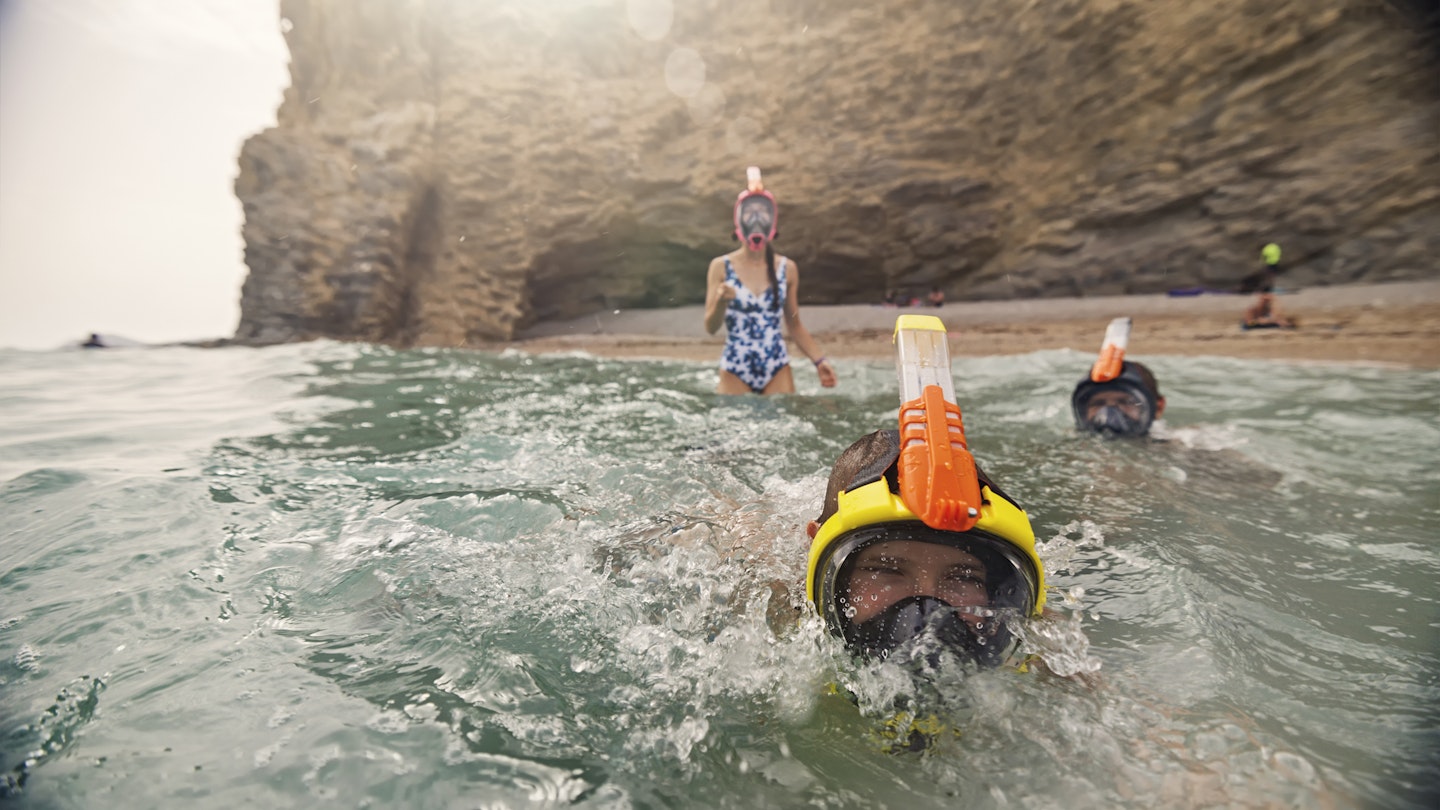
From relaxing on beaches in the Canary Islands to wine tasting in La Rioja, here are Spain's top experiences © Imgorthand / Getty Images
From the snow-dusted, ski-worthy Pyrenees to the glinting golden beaches of the south, Spain unfolds in a series of ever-changing landscapes, traditions, attractions, cuisines and even languages.
Its vast natural spaces are a dream for those who love the great outdoors , while the cities, towns and villages fizz with energy, cultural jewels and mouth-watering gastronomy. But where to start? Whether you’re keen to get stuck into dazzling architecture, cycle to a secret beach or spend your days tasting wines, tapas or olive oils, here are 20 unmissable things to do in Spain.
1. Hike or ride to a secluded beach
Hitting the beach is a national hobby here, and you’ll inevitably fall in love with your own pocket of Spain’s 5470km-long (3400-mile) coastline. Leave the crowds behind by escaping to tranquil, hidden coves that can only be reached on foot, on a bike or on horseback. Head out hiking along Menorca ’s pine-shaded Camí de Cavalls (a restored 14th-century path) to reach turquoise coves; ramble between wild, pebble-studded bays along the Costa Brava; walk to remote sugar-white strands on Andalucía’s breezy Costa de la Luz (also great for kitesurfing); and find protected nudist beaches in Almería’s Parque Natural Cabo de Gata .
2. Taste Spain's best wines
From headlining grape-growing regions such as La Rioja and the cava-making Penedès to Andalucía’s unmatched Sherry Triangle, Spain’s 70 Denominaciones de Origen (Denominations of Origin) roll out a tantalizing line-up of wines. Many wineries here are now experimenting with unusual combinations, pushing forward sustainable production methods and working to recover rare ancestral grapes.
For the most exciting tours, seek out small, independent bodegas (some still run by their founding families) and track down lesser-known wine-making areas such as Galicia’s up-and-coming Ribeira Sacra, Catalonia’s cool Costers del Segre or the innovative El Hierro and Lanzarote DOs in the Canary Islands. Salud!
Planning tip: If you'd prefer to be the designated drinker rather than the driver, here are some other ways to travel around in Spain .
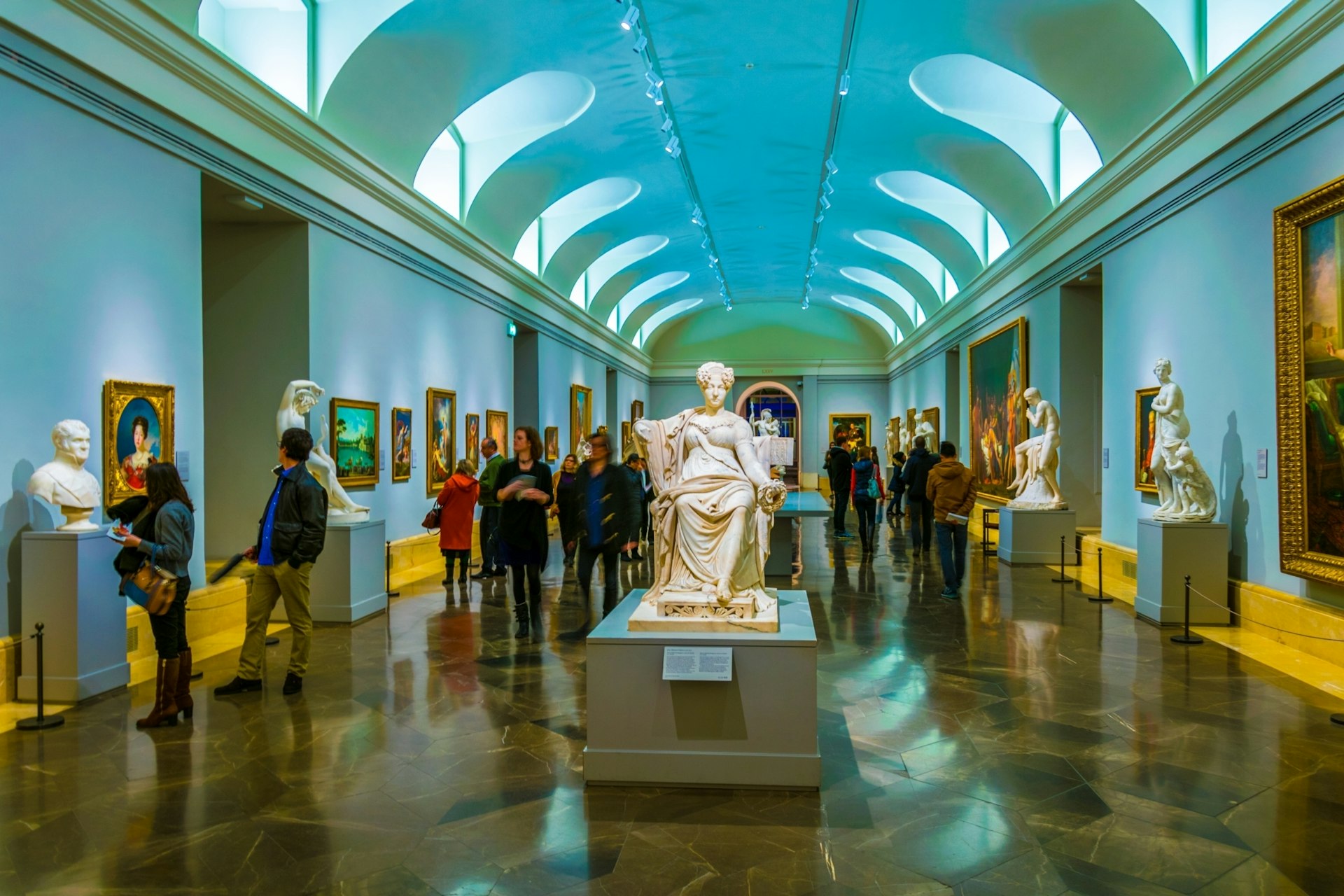
3. Dive into art (and nightlife) in Madrid
Spain’s capital is one of Europe’s greatest cities for art lovers, with a clutch of prestigious galleries where you’ll meet such icons as Picasso’s Guernica ( Centro de Arte Reina Sofía ), Van Gogh’s Les Vessenots in Auvers ( Museo Thyssen-Bornemisza ), and Velázquez’s Las meninas and Goya’s Saturno devorando a su hijo ( Museo del Prado ). More hidden thrills range from sketches by poet Federico García Lorca to mysterious works by Antoni Tàpies. Pre-book tickets online and explore galleries first thing; some even offer "out of hours" tours before the doors officially open.
Planning tip: Save some energy, though – later on, one of the best things to do in the capital city is join the madrileños at buzzy tapas spots, elegant cocktail lounges, laid-back rooftop bars, heaving clubs and more. The party inevitably goes on into the next morning.
4. Feast on local specialties across Spain
A deep love of fabulous food infuses Spain’s soul. You’ll be grazing on pintxos in Bilbao and San Sebastián , crowding into Granada 's tapas bars, seeking out creative Michelin stars in Catalonia, digging into super-fresh Valencian paellas by the Mediterranean, getting to know the country’s 2023 Capital of Gastronomy Cuenca and much more.
Planning tip: For a deep dive into regional Spanish cuisine, join an expert-led food tour. Devour Tours has switched-on guides in Barcelona, Madrid, Seville and San Sebastián, while Annie B’s Spanish Kitchen runs fabulous tapas tours in Cádiz province (an Andalucian foodie hot spot).
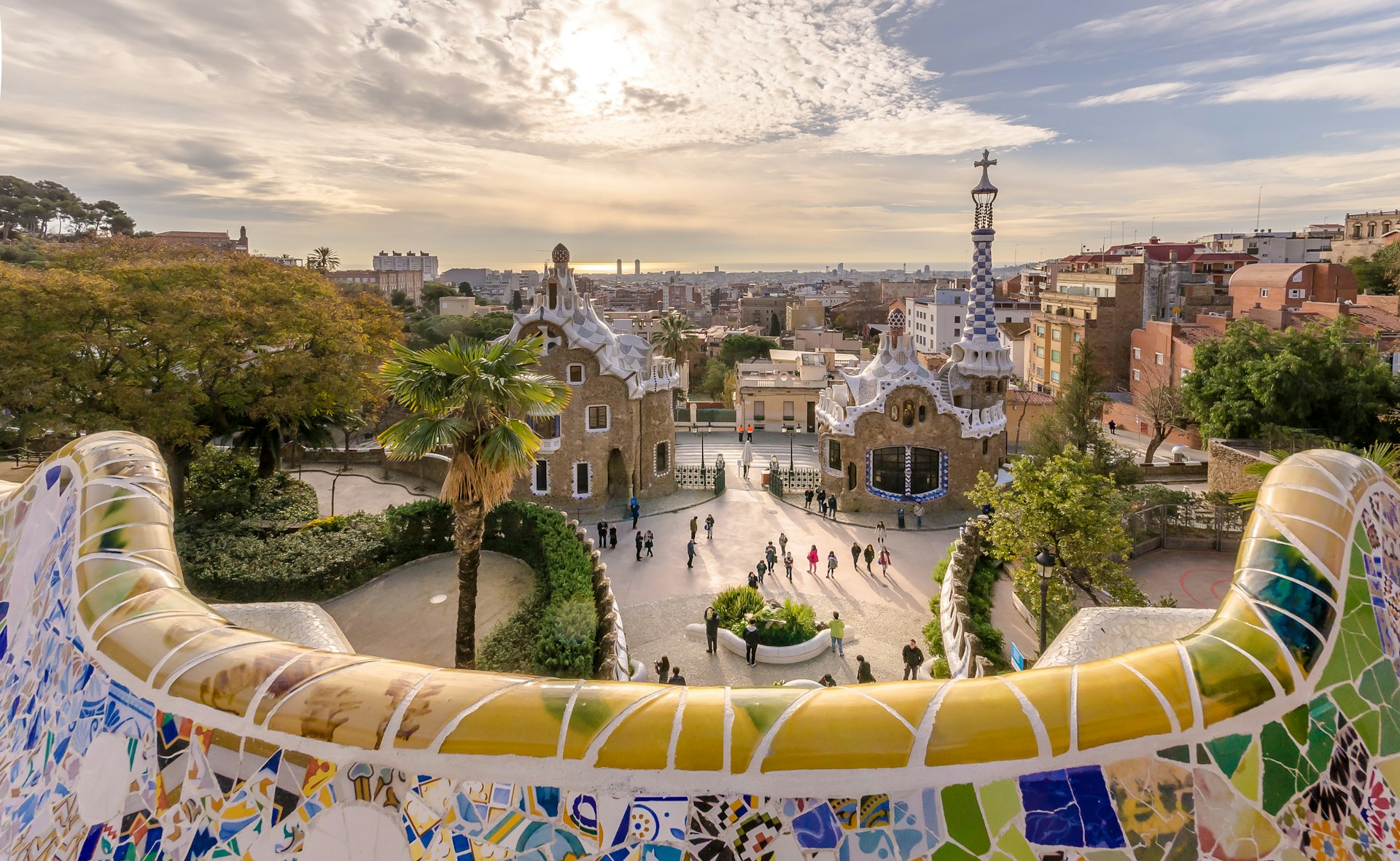
5. Admire Modernisme in Barcelona with an insider
Exploring Catalonia’s irresistible capital with a local architect instantly brings life to the Modernista wonders created by Gaudí, Domènech i Montaner, Puig i Cadafalch and others in the late 19th and early 20th centuries. Look beyond the star acts ( La Sagrada Família , Casa Batlló, Park Güell ), and don’t miss Gaudí’s floral-tiled first commission Casa Vicens (in Gràcia) and other lesser-known Modernista flourishes around L’Eixample and El Raval.
Planning tip: Help combat Barcelona’s much-discussed overtourism issues by visiting outside high season and weekends, staying in officially licensed accommodations , and supporting sustainably focused projects with local roots and powerful initiatives, as well as exploring the rest of Catalonia (from the heights of the Pyrenees to the rice-making Delta de l’Ebre).
6. Road trip around Galicia’s lyrical landscapes
Savoring a glass of crisp albariño with a platter of fresh-as-it-gets seafood is a distinctly Galician moment – just one of many surprises in Spain’s beautifully green northwest corner. Roam well beyond Santiago de Compostela to uncover timeworn stone villages, centuries-old wineries, plunging valleys and over 1000km (620 miles) of wild, windswept coastline sprinkled with sublime beaches, particularly around the Illas Cíes and the Costa da Morte .
Planning tip: While summer brings the warmest weather, June and September are much quieter (always pack an umbrella!).
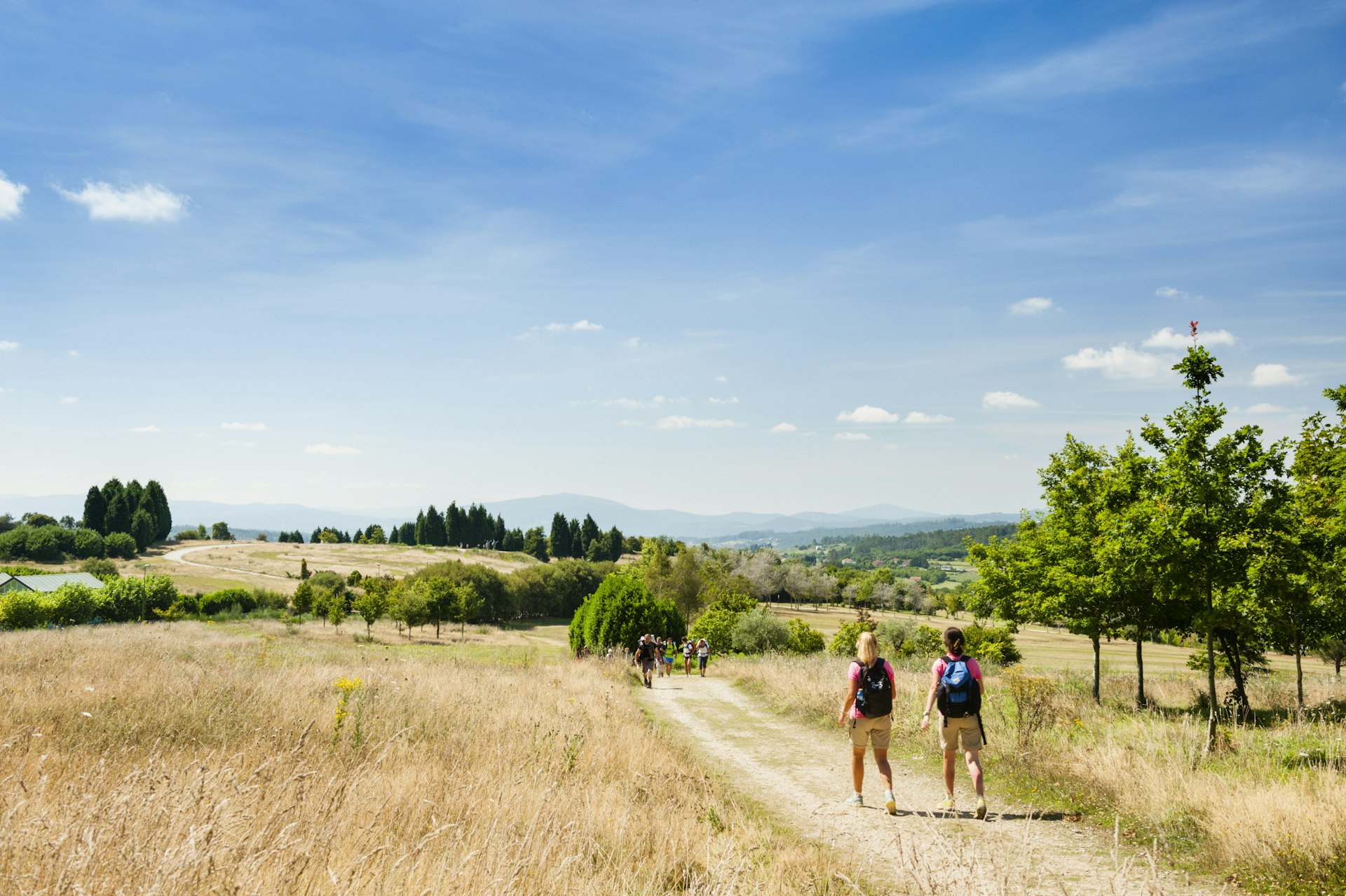
7. Walk an alternative Camino
Finally stumbling into the glittering cathedral in Galicia’s capital Santiago de Compostela , after trekking hundreds of miles along the fabled Camino de Santiago (Way of St James), is a magical moment. Travelers seeking a less-trodden path can swap the popular traditional Camino Francés for the wonderfully rewarding Camino del Norte (Northern Way) or Camino Primitivo . The 600km (373-mile) Norte meanders along and inland from Spain’s northern coastline from Irún, while the challenging 320km (199-mile) Primitivo from Oviedo is believed to be the original Camino, walked by King Alfonso II back in the ninth century.
Planning tip: You can combine the two routes by following an alternative branch of the Norte to Oviedo, then linking up with the Primitivo.
8. Wander off the beaten track in Extremadura
Portugal-bordering Extremadura plunges visitors into one of Spain’s least-touristed corners and is well worth a visit. The secluded Jerte, Ambroz and La Vera valleys reveal half-timbered houses, snow-topped mountains and spring cherry blossom, and there’s outstanding birdwatching in the 180-sq-km (69-sq-mile) Parque Nacional de Monfragüe from March to October. There are also some extraordinary monumental cities, including Cáceres (with its glittering historical core), Trujillo (made wealthy by its high-profile conquistador families) and Mérida (for some of Spain’s most important Roman ruins).

9. Bask in the beauty of Andalucía’s Moorish architecture
Spain’s eight centuries of Islamic rule produced some of its most spectacular architecture, particularly across Andalucía. The unmissable jewels of Moorish Al-Andalus are Granada’s Alhambra , Córdoba’s Mezquita-Catedral and Seville’s Real Alcázar and Giralda , but there’s plenty more. Travel between Córdoba and Granada along the little-known Ruta del Califato (Route of the Caliphate), whose castle-topped villages mark the final medieval frontier between Christian and Islamic Spain; ramble around the majestic alcazabas (fortified palaces) in Almería and Málaga; or head into Huelva’s remote Aracena hills to uncover a rare, perfectly preserved Moorish-era mosque.
10. Enjoy heavenly hikes in every season
Spain’s varied climate means there are outstanding hiking opportunities year-round – from Granada’s snow-dusted Sierra Nevada (perfect in July/August) and northern Spain’s jagged Parque Nacional de los Picos de Europa to the cloud-brushing heights of Aragón ’s Parque Nacional de Ordesa y Monte Perdido and Catalonia ’s Parc Nacional d’Aigüestortes i Estany de Sant Maurici. Along the coast, hit soul-stirringly beautiful trails such as the 200km-long (124-mile) Camiño dos Faros in Galicia or the cliff-top paths in Almería’s Cabo de Gata.
Planning tip: The north shines brightest from June to September/October (book accommodations ahead), while walking in Andalucía is best from March to June and in September and October.
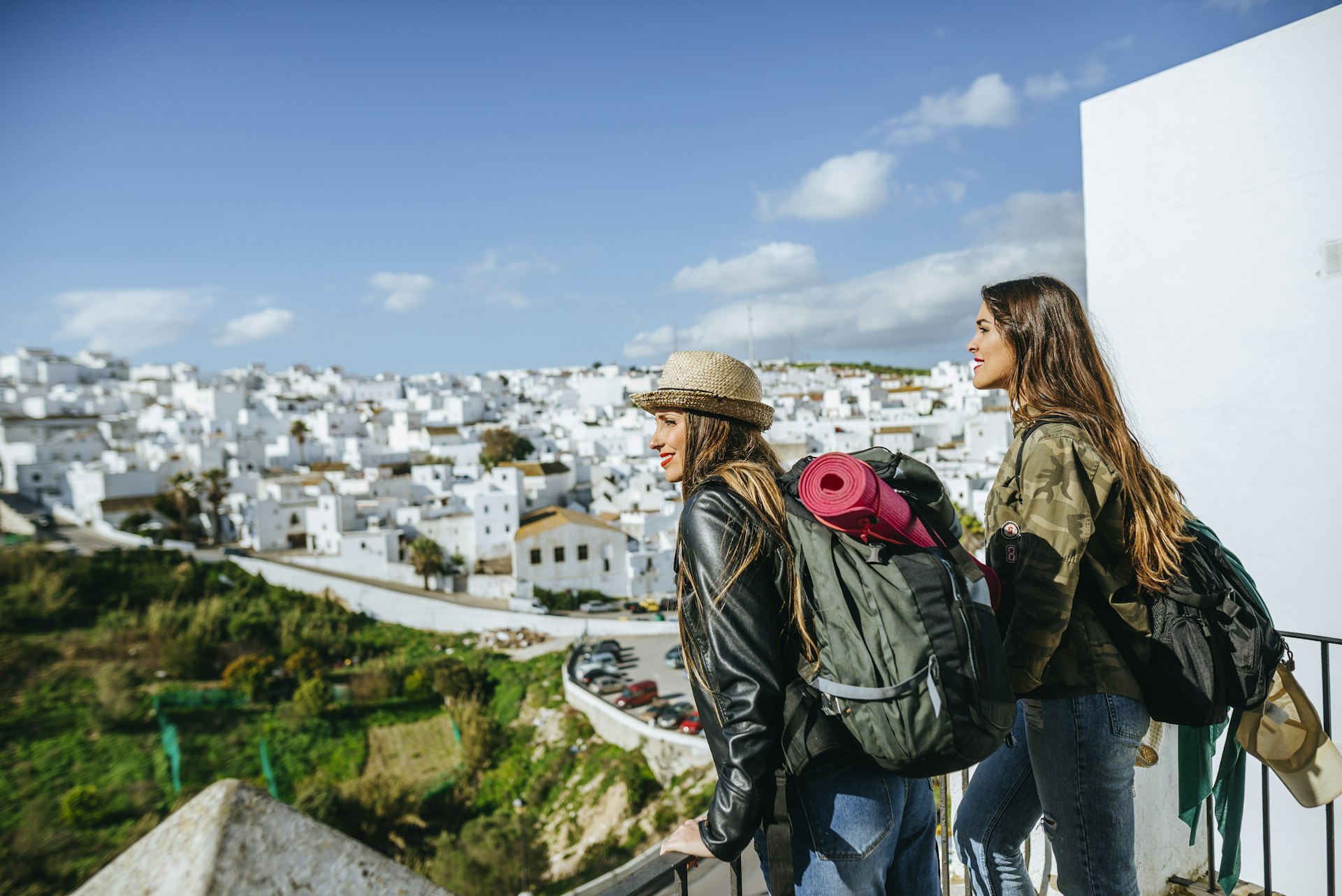
11. Stroll between Andalucía’s white villages
Sunny Andalucía is dotted with impossibly scenic pueblos blancos (white villages), with two main pockets in rural Cádiz and Granada’s Alpujarras valleys – and while these make for fascinating road trips , a series of serene rural walking paths also track between them. Venture off on the long-distance GR7 in the remote eastern Alpujarras (Mairena and Trevélez villages are highlights), or lace up your walking boots in Cádiz’s Sierra de Grazalema, where Moorish castles, rare pinsapos (Spanish firs) and rust-roof villages await.
12. Learn about Spain’s finest olive oil
If you’ve ever wondered where those liquid-gold Spanish olive oils come from, central Andalucía’s Mar de Olivos (Sea of Olives) is a hidden-in-plain-sight joy. Some of the world’s top-tier olive oils are produced among its 15,000 sq km (5790 sq miles) of rolling hills, craggy peaks and silent valleys, particularly across Jaén and Córdoba provinces (where Priego de Córdoba in the Sierra Subbética is the shining star). Stay in one of the region’s peaceful rural hotels, some of which offer home-cooked meals using their own olive oils, and visit local almazaras (olive mills) for tastings, tours and strolls among the olive groves.
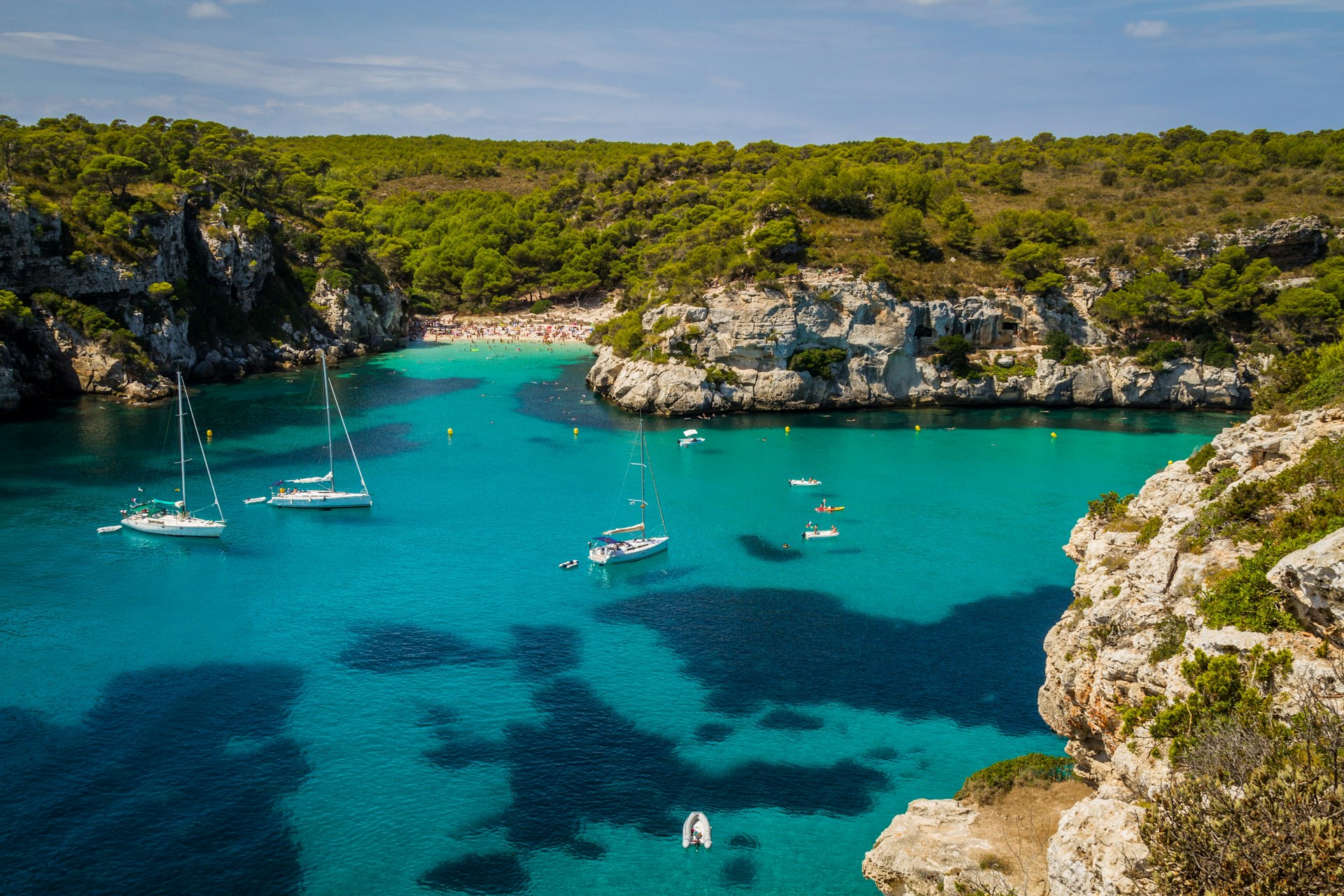
13. Engage in responsible tourism in the Balearics
Forget the dance-until-dawn stereotypes – the four Balearics islands make up one of the Mediterranean’s most blissful escapes, with a strong drive towards responsible tourism that includes a ban on single-use plastics since early 2021. Whether you fancy seductive Mallorca , soothing Menorca , always-chic Ibiza or barefoot-beach Formentera , you can stay in a stylish environment-first agroturisme , learn about the islands’ artisan traditions (from cheese-making to basketry), get involved in beach clean-ups, and soak up the outdoors on hikes, kayak trips, horse-riding adventures and more.
14. Don’t miss the Canary Islands
Around 1000km (620 miles) southwest of mainland Spain, the eight sunbathed Canaries pack in everything from Atlantic volcanic beaches and eerily beautiful pine forests to hikes up the country’s tallest peak, 3715m-high (12,100ft) Teide.
Planning tip: Picking just one island can be a challenge – here’s our in-depth Canary Islands guide to help you narrow it down.

15. Go surfing and exploring along Spain’s green north coast
Some of Spain’s top surf beaches are hidden along the cliff-edged northern coastline, hugging the Basque Country, Cantabria, Asturias and Galicia . While here, discover stone-built villages, extraordinary galleries, ancient cave art, lively cities, local cider and spectacular mountain ranges.
16. Spot rare wildlife in a remote natural wonderland
In recent years, major conservation efforts have brought several of Spain’s most beloved threatened species back from the brink of extinction, including the Iberian lynx, the Cantabrian brown bear and the majestic quebrantahuesos (bearded vulture). Head out in Andalucía’s mountainous Parque Natural Sierra de Andújar for the chance to see a lynx, or venture to the remote Parque Natural de Somiedo in southwest Asturias to (perhaps!) spy a brown bear.
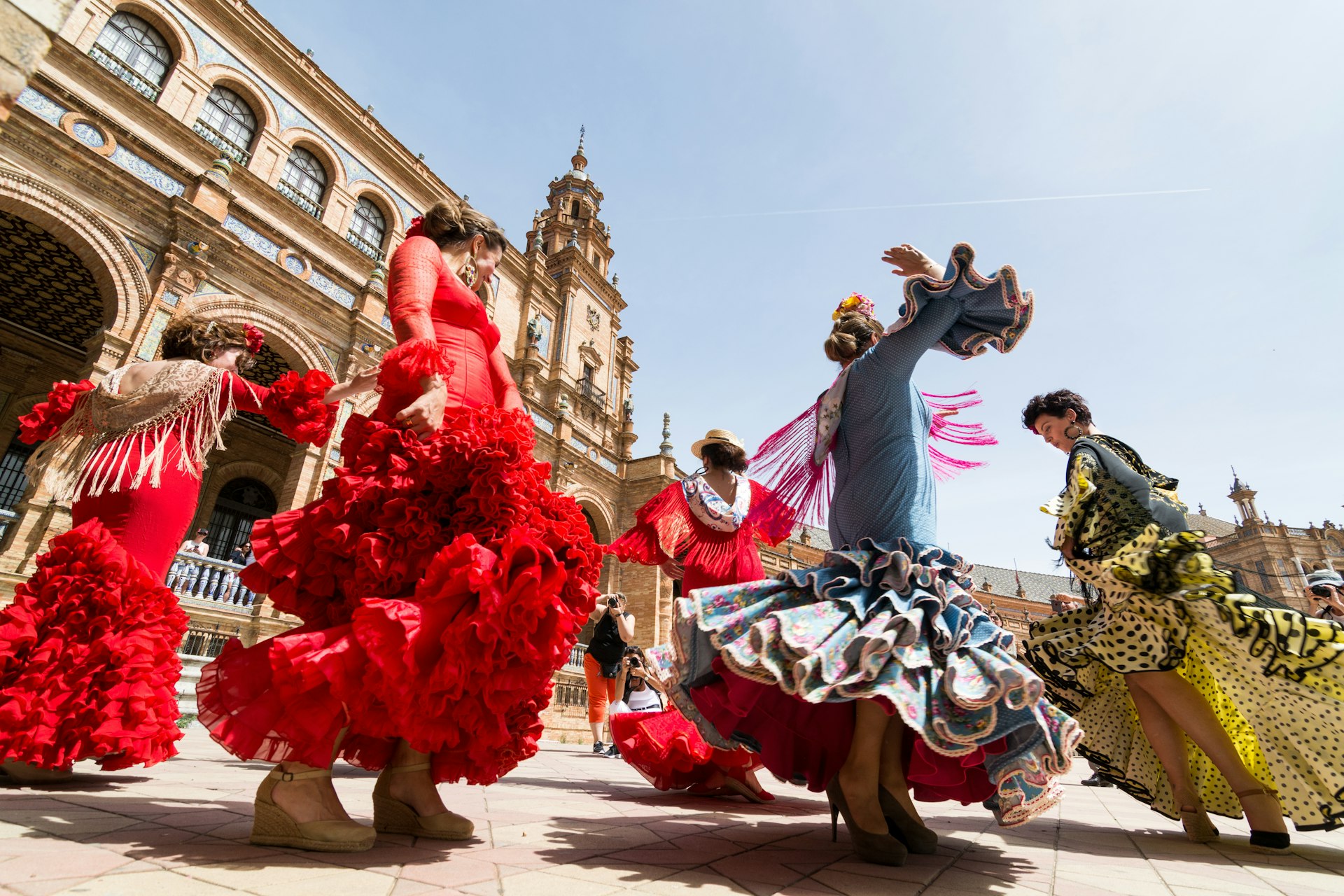
17. Experience flamenco in its Andalucían heartland
There are flamenco shows all over Spain, but the most inspiring place to lose yourself in this soulful ancient art is its southern birthplace: the Cádiz-Jerez-Seville triangle. Hunt down events at local peñas (flamenco clubs), and don’t miss Jerez ’s lively tabancos , where fiery shows are served up alongside sherry poured straight from the barrel.
Planning tip: If you've ever dreamed of learning to dance, this is the ideal place to pick up a few flamenco steps of your own.
18. Wake up in magical accommodations
Fancy slumbering away in a medieval monastery, a fairy-tale castle or a Renaissance palace? Book in at one of Spain’s 98 wonderfully atmospheric paradores , which revolve around sensitively converted buildings packed with centuries of history. Or hunt down a seductive independent stay with its own backstory: a chicly reimagined Modernista mansion in Barcelona, a Balearic farmhouse hidden down a dusty pine-scented track, an artily reimagined home in Cádiz’s Vejer de la Frontera. Many of Spain’s most exciting accommodation spots are attractions in their own right, fueled by inspired, creative design.

19. Get lost in lively, forward-looking Valencia
With its pioneering plans for achieving carbon-neutral tourism , Valencia (Spain’s third-largest city) is becoming a hot tourist favorite. In a short visit, you could be uncovering the Ciutat Vella ’s market-fresh meals, intriguing museums and varied architecture, exploring Santiago de Calatrava’s Ciudad de las Artes y las Ciencias , savoring seafood in El Cabanyal, cycling along the seafront and more.
Planning tip: The Fallas de Valencia festival makes March an outrageously popular month to visit Valencia, but this sunny Mediterranean city is also a perfect autumn or winter escape .
20. Marvel at an ancient (or not so ancient) cathedral
Most Spanish cities unravel around a central plaza overlooked by a formidable cathedral, with styles stretching from Romanesque to Modernista. The country’s most architecturally and spiritually moving cathedrals include León, Toledo , Salamanca , Seville, Burgos , Granada, Segovia , Santiago de Compostela and Palma de Mallorca , as well as Barcelona’s Sagrada Família.
Planning tip: Climbing up a cathedral tower or joining one of an ever-growing number of rooftop tours is a fantastic way to find a fresh perspective on the city below.
This article was first published Sep 30, 2021 and updated Mar 7, 2024.
Explore related stories
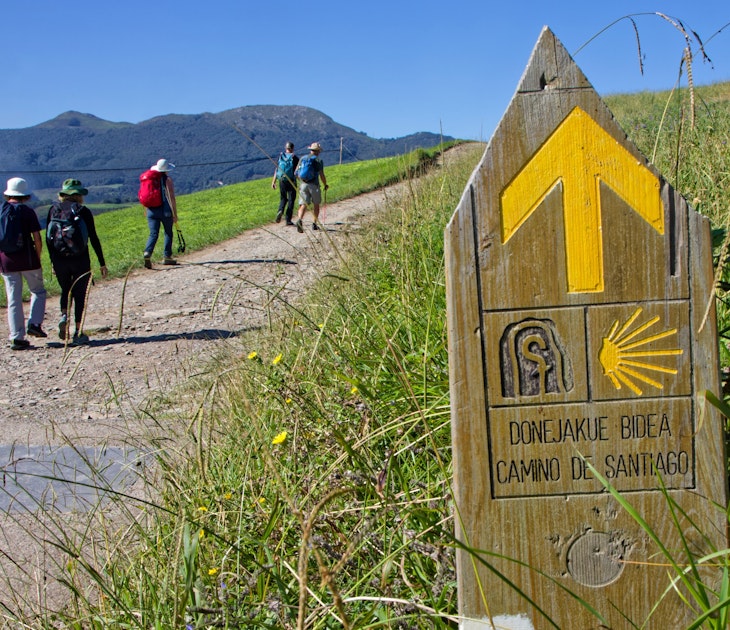
Mar 25, 2024 • 6 min read
Hundreds of thousands walk the Camino de Santiago pilgrimage in Spain every year: here are the most popular routes.

Mar 20, 2024 • 8 min read

Feb 28, 2024 • 3 min read

Feb 10, 2024 • 7 min read
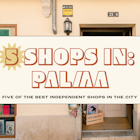
Feb 2, 2024 • 6 min read

Sep 22, 2023 • 11 min read

Aug 22, 2023 • 7 min read

Aug 11, 2023 • 8 min read
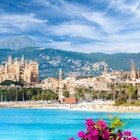
Jul 25, 2023 • 5 min read
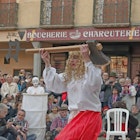
Feb 15, 2023 • 6 min read
You are using an outdated browser. Upgrade your browser today or install Google Chrome Frame to better experience this site.
Destinations
Measles cases are increasing globally, including in the United States. The majority of measles cases imported into the United States occur in unvaccinated U.S. residents who become infected during international travel. A list of countries with confirmed measles outbreaks can be found on the Global Measles Travel Health Notice (THN) . Measles spreads rapidly in communities that are not fully vaccinated and may pose a risk to international travelers in places not included in the THN. CDC recommends all travelers get fully vaccinated against measles before traveling to any international destination.

If you need help finding travel information:
Message & data rates may apply. CDC Privacy Policy
Complete List of Destinations
- Afghanistan
- American Samoa
- Anegada (see Virgin Islands, British )
- Anguilla (U.K.)
- Antigua and Barbuda
- Austral Islands (see French Polynesia (France) )
⇧ Top
- Bahamas, The
- Barbuda (see Antigua and Barbuda )
- Bermuda (U.K.)
- Bora-Bora (see French Polynesia (France) )
- Bosnia and Herzegovina
- British Indian Ocean Territory (U.K.)
- Burkina Faso
- Burma (Myanmar)
- Caicos Islands (see Turks and Caicos Islands (U.K.) )
- Canary Islands (Spain)
- Cayman Islands (U.K.)
- Central African Republic
- Christmas Island (Australia)
- Cocos (Keeling) Islands (Australia)
- Congo, Republic of the
- Cook Islands (New Zealand)
- Côte d'Ivoire
- Curaçao
- Democratic Republic of the Congo
- Dominican Republic
- Dubai (see United Arab Emirates )
- Easter Island (Chile)
- El Salvador
- England (see United Kingdom )
- Equatorial Guinea
- Eswatini (Swaziland)
- Falkland Islands (Islas Malvinas)
- Faroe Islands (Denmark)
- French Guiana (France)
- French Polynesia (France)
- Galápagos Islands (see Ecuador )
- Gambia, The
- Gibraltar (U.K.)
- Greenland (Denmark)
- Grenadines (see Saint Vincent and the Grenadines )
- Guam (U.S.)
- Guernsey (see United Kingdom )
- Guinea-Bissau
- Holy See (see Italy )
- Hong Kong SAR (China)
- Isle of Man (see United Kingdom )
- Israel, including the West Bank and Gaza
- Ivory Coast (see Côte d'Ivoire )
- Jersey (see United Kingdom )
- Jost Van Dyke (see Virgin Islands, British )
- Liechtenstein
- Macau SAR (China)
- Madeira Islands (Portugal)
- Marquesas Islands (see French Polynesia (France) )
- Marshall Islands
- Martinique (France)
- Mayotte (France)
- Micronesia, Federated States of
- Montserrat (U.K.)
- Moorea (see French Polynesia (France) )
- Myanmar (Burma) (see Burma (Myanmar) )
- Netherlands, The
- New Caledonia (France)
- New Zealand
- Niue (New Zealand)
- Norfolk Island (Australia)
- North Korea
- North Macedonia
- Northern Ireland (see United Kingdom )
- Northern Mariana Islands (U.S.)
- Papua New Guinea
- Philippines
- Pitcairn Islands (U.K.)
- Puerto Rico (U.S.)
- Réunion (France)
- Rota (see Northern Mariana Islands (U.S.) )
- Rurutu (see French Polynesia (France) )
- Saint Barthelemy
- Saint Croix (see Virgin Islands, U.S. )
- Saint Helena (U.K.)
- Saint John (see Virgin Islands, U.S. )
- Saint Kitts and Nevis
- Saint Lucia
- Saint Martin
- Saint Pierre and Miquelon (France)
- Saint Thomas (see Virgin Islands, U.S. )
- Saint Vincent and the Grenadines
- Saipan (see Northern Mariana Islands (U.S.) )
- São Tomé and Príncipe
- Saudi Arabia
- Scotland (see United Kingdom )
- Sierra Leone
- Sint Eustatius
- Sint Maarten
- Society Islands (see French Polynesia (France) )
- Solomon Islands
- South Africa
- South Georgia and the South Sandwich Islands (U.K.)
- South Korea
- South Sandwich Islands (see South Georgia and the South Sandwich Islands (U.K.) )
- South Sudan
- Swaziland (Eswatini) (see Eswatini (Swaziland) )
- Switzerland
- Tahiti (see French Polynesia (France) )
- Timor-Leste (East Timor)
- Tinian (see Northern Mariana Islands (U.S.) )
- Tobago (see Trinidad and Tobago )
- Tokelau (New Zealand)
- Tortola (see Virgin Islands, British )
- Trinidad and Tobago
- Tubuai (see French Polynesia (France) )
- Turkmenistan
- Turks and Caicos Islands (U.K.)
- United Arab Emirates
- United Kingdom
- United States
- Vatican City (see Italy )
- Virgin Gorda (see Virgin Islands, British )
- Virgin Islands, British
- Virgin Islands, U.S.
- Wake Island
- Wales (see United Kingdom )
- Zanzibar (see Tanzania )
File Formats Help:
- Adobe PDF file
- Microsoft PowerPoint file
- Microsoft Word file
- Microsoft Excel file
- Audio/Video file
- Apple Quicktime file
- RealPlayer file
- Zip Archive file
Exit Notification / Disclaimer Policy
- The Centers for Disease Control and Prevention (CDC) cannot attest to the accuracy of a non-federal website.
- Linking to a non-federal website does not constitute an endorsement by CDC or any of its employees of the sponsors or the information and products presented on the website.
- You will be subject to the destination website's privacy policy when you follow the link.
- CDC is not responsible for Section 508 compliance (accessibility) on other federal or private website.

IMAGES
VIDEO
COMMENTS
10. San Vicente de la Barquera, the perfect place for a northern Spain holiday. Finally, San Vicente de la Barquera is a spectacular destination in northern Spain that you should visit. This fishing village is on the western coast of Cantabria and is surrounded by one of the most beautiful landscapes in the country.
Places to Visit in Northern Spain's Basque Country Region San Sebastian. With one of the dreamiest beaches in Spain (La Concha), stunning lookout points, and a beautiful old town, San Sebastian is easily one of the best cities to visit in northern Spain.. It's worth spending at least 24-48 hours in San Sebastian, but it can also be a great base for exploring the Basque Country region.
10. Picos de Europa National Park [SEE MAP] lugarzen / Flickr. Picos de Europa National Park is Spain's first national park, founded in 1918 when it was known as Montana de Covadonga National Park; its name was changed in 1995. The park's high mountains and deep ravines appeal to hikers, who need to be alert for deep fog banks.
19. Picos de Europa Natural Park. 20. La Rioja Region. Map of Places to Visit in Northern Spain. 1. Barcelona. Parc Güell in Barcelona. The sparkling crown jewel of Catalonia, the region's vibrant capital boasts an alluring seaside setting, fabulous Modernist architecture, and a delightful medieval quarter.
The Best Places To Visit In Northern Spain Bilbao. Bilbao, the capital of the Basque Country, is a lively city where locals, tourists and the occasional pilgrims on their way to Santiago de Compostela happily meet.Not many know, but the city is indeed along the Camino del Norte, one of the many official ways of the Camino de Santiago.
Discover a local's 10 favorite places to visit throughout northern Spain. From the Basque Cities of San Sebastian and Bilbao to stunning beach towns, the towering Picos de Europa, secluded villages, and the stunning wild coastline of Galicia, this guide has it all.
Northern Spain offers extraordinary cultural, culinary and natural diversity for visitors within its four main regions: Galicia, Asturias, Cantabria and Basque Country. Each area provides unique attractions and beauty spanning lush forests to rugged coastlines. Galicia is one of the best places to visit in Northern Spain.
What to do in Northern Spain. Northern Spain itineraries. 5-day highlights trip. 5 days in the Basque Country and Navarra. 6 days in Cantabria, Asturias, and Galicia. 1-week city hopping route. 7-day history-focused trip. 10 days in Northern Spain's nature. 2-week comprehensive itinerary.
Here's my guide to spending one blissful week in northern Spain. This Spain itinerary takes you to the top must visit destinations in northern Spain. In one week, you'll discover all the top must see attractions, pretty towns, and historic landmarks in the Basque, Cantabria, and Asturias regions of Spain.
There's three to choose from: Playa de Tóro (our favourite), Playa del Sablon, and Playa de Puerto Chico. Alternatively, there are a handful of other exceptional stretches of beach a short drive away, including: // Playa de Toranda. 8 km away from Llanes, this is a good option for snorkelling. // Playa Ballota.
The best time to visit Northern Spain is indisputably during the summer, since it is the only period when you can be sure to have nice, warm weather. The true character of the north is hidden in its paradisiac beach coves, remote forests and mountains, and tiny villages forgotten in time. And summer is the ideal time to visit because the good ...
3 | Vizcaya Bridge. The Vizcaya Bridge, a UNESCO World Heritage site, connects the neighbouring towns of Getxo and Portugalete between which the Nervion River passes. It was the first bridge in the world to carry people and vehicles on a suspended gondola which is high enough to allow boats to navigate underneath.
La Rioja. La Rioja is one of the best places in northern Spain for wine lovers! Travelers who appreciate good wine and are on their way from Zaragoza to San Sebastian (or back) absolutely must visit the Rioja wine region and add it to their northern Spain itinerary. It is home to more than 500 wineries.
Pintxos are for whenever you crave them! 6. Zarauz, País Vasco. Zarauz, Basque Country. Zarauz (Zarautz in Euskera, the official language) is located in Northern Spain in Guipúzcoa, (in the Autonomous Community of the Basque Country).
Getaria. Getaria is one of my favorite small towns in Spain. Oh wait, it's actually not a town but a small fishing village set between the sea and vine-covered mountains on the shores of the Bay of Biscay. It was home to Juan Sebastian Elcano, one of the first people who circumnavigate the world.
7. San Sebastian. San Sebastian (in Basque "Donostia") is located in the Spanish autonomous region of the Basque Country. The popular seaside resort is located on the Bay of Biscay on the northern Spanish coast with about 200,000 inhabitants. The Basque coastal town is one of the most visited cities in Spain.
Northern Spain Road Trip: Full 7-Day Itinerary. Day 1: Bilbao & Guggenheim Museum. Day 2: San Sebastian & San Juan de Gaztelugatxeko. Day 3: Explore Llanes. Day 4: Hike the Picos de Europa. Day 5: Gijon & Playa Madre. Day 6: Playa de las Catedrales.
Olite Castle. If you are wonder what to see in Northern Spàin, the castles and fortifications around this area are numerous and mostly intact. The most magnificent by far in Navarra is in Olite. It was one of the seats of the Court of the Kingdom of Navarra, since the reign of Charles III "the Noble" until its conquest in 1512 by Castile.
Covadonga is one of my favourites because you get the chance to visit the impressive Basilica and Cave of Covandoga, which are rich in history and spirituality. Exploring Covadonga is magical! 4. The food is mouthwatering. Pintxos, hearty stews, fresh fish and cider are some of the highlights of Nothern Spain gastronomy.
Book a trip to Lugo. 8. Santiago de Compostela. Towering above Praza do Obradoiro, the ornate façade of the Santiago de Compostela Cathedral is one of the most iconic sights in all of Northern Spain. Look beyond the throngs of pilgrims, though, and you'll discover a culture unlike any other in the country.
Other notable Roman attractions in Northern Spain include A Coruña's Roman Lighthouse, the 1st-century Torre de Hércules, the only fully intact Roman lighthouse still standing proud. And, with a bit of a detour inland towards Madrid, the mighty Segovia aqueduct whose 167 arches dominate the city.
Weather. While the rest of Spain can be unbearably hot and humid, the weather in northern Spain is a lot cooler and can be perfect for a vacation in late spring, summer, or early autumn. It might get rainy sometimes, but the average temperatures by day are 18-22 °C (64-71 °F) in May and June, and 22-26 °C (71-79 °F) in July and August ...
Weather for Northern Spain in July, August, & September. July: The nights are a moderate 16°C (average), while the average maximum temperatures range around 25°C. August: Ever so slightly warmer than July, August temperatures range between averages of 16°C (min) and 26°C (max). September: With fall approaching, the days become shorter, and ...
No one would say that Northern Spain is a "hidden gem" but it when most people think of Spain, what most people imagine is southern Spain: flamenco, bullfighting, beaches, paella, tapas, …So when people visit the northern part of the country they are usually blown away. The north of Spain is green and lush, brimming with history and culturally very different from the rest of the country ...
(The fall, winter, and spring are all much more pleasant times to visit Spain's most popular destinations!) But if you have your heart set on Spain this summer, there are a couple of places I'd recommend, and they're majorly off the radar for most tourists. Asturias and Cantabria are two regions in northern Spain that are off the beaten path ...
14. Don't miss the Canary Islands. Around 1000km (620 miles) southwest of mainland Spain, the eight sunbathed Canaries pack in everything from Atlantic volcanic beaches and eerily beautiful pine forests to hikes up the country's tallest peak, 3715m-high (12,100ft) Teide.
Destinations. Measles cases are increasing globally, including in the United States. The majority of measles cases imported into the United States occur in unvaccinated U.S. residents who become infected during international travel. A list of countries with confirmed measles outbreaks can be found on the Global Measles Travel Health Notice (THN).